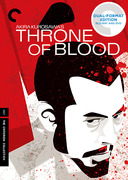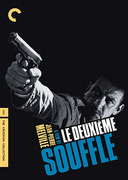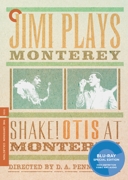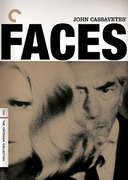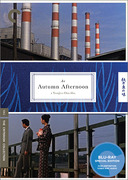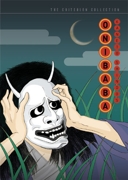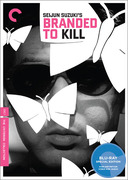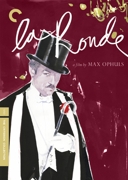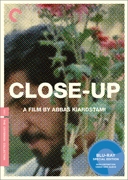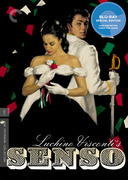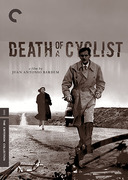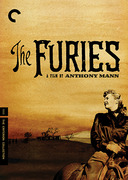One of the gifts a movie lover can give another is the title of a wonderful film they have not yet discovered.
- Roger Ebert
Once in a while I watch a great movie that reminds me how much I love cinema. Finding another wonderful movie to watch next is always challenging.
Fortunately, every month, the team at Criterion asks a friend -a filmmaker, a programmer, a writer, an actor, an artist- to select their ten favorite movies available from the Criterion Collection (see here).
So here's my gift to you: the complete list of movies that made it into these cinephiles' Top 10 list along with their thoughts about them.
I hope you will enjoy this special list and discover great movies! All the thanks should go to Criterion.
-
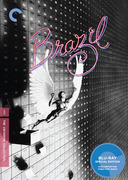
Brazil
(1985)Terry Gilliam
16Terry Gilliam is a living treasure, and we are squandering him foolishly with every film of his that remains unmade. Proof that our world is the poorer for this can be found in two of his masterpieces. Gilliam is a fabulist pregnant with images—exploding with them, actually—and fierce, untamed imagination. He understands that “bad taste” is the ultimate declaration of independence from the discreet charm of the bourgeoisie. He jumps with no safety net and drags us with him into a world made coherent only by his undying faith in the tale he is telling. Brazil remains one of the most important films of my life, and Time Bandits is a Roald Dahl–ian landmark to all fantasy films. Seeing Time Bandits with my youngest daughter just two weeks ago, I was delighted when she laughed and rejoiced at the moment when Kevin’s parents explode into a cloud of smoke.
#11 in Guillermo del Toro’s Top 10Terry Gilliam again, one of the best to ever do it. I think this film blew people’s minds when it came out. I wish I’d been able to see this one in a theater.
#8 in Flying Lotus’s Top 10Brazil coming out when I was fifteen was like a perfect storm. I had grown up on Monty Python, and loved Gilliam—and then this massive film blew my brains out all over my Milk Duds at the Fine Arts Theatre in downtown Chicago. I saw it twice the week it came out. I didn’t know about all the studio drama surrounding it— like Terry Gilliam taking out ads in Variety to get the film released—until years later. This is probably the most quoted film in my family. “Trouble with your ducts?” “Salt?” and “They don’t fix themselves, sir!” are all still in heavy rotation in my daily conversation. —TL
#2 in Robert Ben Garant and Tom Lennon’s Top 10Terry Gilliam does nothing by half measures, and Brazil is no exception. This hallucinatory take on George Orwell’s pessimistic and prophetic book 1984 is a marvel of black comedy and yet somehow embodies the anger and despair of the original. Astonishing to look at and sometimes chilling, this is one of Gilliam’s best films.
#1 in Christopher Hobbs’s Top 10“Life does not cease to be funny when people die any more than it ceases to be serious when people laugh.” —George Bernard Shaw
#1 in Iron and Wine’s Top 10For our little group of starving filmmaker friends muddling through our twenties, this particular box set was sort of a holy grail. I’m barely exaggerating when I say that it was mythic-like Harry Smith’s Anthology in the West Village folk scene in the sixties. If somebody had the Criterion Brazil at their apartment, it would draw a crowd. A beautiful transfer, exhaustive supplements, and the “Love Conquers All” cut is a holy terror of a revelation.
#2 in Rian Johnson’s Top 10Ian Holm seems to get into all the good movies (even, like, Alien). What’s with that? Never has dystopia looked so appealing. Count me in.
#8 in Frank Kozik’s Top 106. Terry Gilliam grows up from his Python days and delivers a knockout, which (like the Orwell that clearly inspired it) was spot-on in predicting the future. Yes, it’s funny, but it’s mostly bleak, and it is Gilliam’s ultimate film. I love that this DVD set has the hack studio edit included (the “Love Conquers All” version that was sadly used for television, in which a happy ending is inserted, therefore changing the meaning of the film). Kind of reminds me of what the Bush administration has done to the media over the last eight years.
#6 in David Markey’s Top 10Terry Gilliam’s pièce de résistance, in my humble opinion. Such an assured aesthetic, with a perfect dystopian message. I highly recommend looking for the cut of the song “Brazil” with Kate Bush on vocals. It’s a masterpiece rivaled only by this astounding film.
#1 in Stella Mozgawa’s Top 103. This is Terry Gilliam’s classic—his best film. The music, the visuals, the fantasy, the dark surrealism. It all works to make a haunting masterpiece. A bit of trivia: the hero’s boss, H. Kurtzman, is named after Harvey Kurtzman, the originator of Mad magazine, and Terry’s boss at Help magazine.
#3 in Bill Plympton’s Top 105. A movie that still blows my mind.
#5 in Al Reinert’s Top 10In 1985, I was taking meetings in Hollywood, looking for film work. An agent at Universal said to me, “Come back tonight, I want to show you a film we need help with, and we’d like your take on it.” I dutifully showed up at the Hitchcock Theater on the Universal lot and was granted an exclusive screening of this film, Brazil. Within minutes, my mouth was dry. I knew I was viewing a masterpiece, and yet they wanted my input on it. Of course, I had so many ideas, I would have said anything to get a chance to be a part of it, whatever it was (I had not been told anything about it). I called my friend Russell Mulcahy and told him, “I’ve just seen the most extraordinary film, and Universal want some music ideas from me.” “Don’t touch it!” said Russell. “That’s Terry Gillam’s film. He’s in a battle with Universal over it.” With some disappointment, I knew whose side I had to take. But I did get two pneumatic tapes of the film in the mail for my trouble. For months, I played it on my first flat-screen TV, just freezing on shot after shot for days on end. Weirdly perfect.
#4 in John Taylor’s Top 108. An abstract and strange world. A view of what we all may become one day.
#8 in Johnnie To’s Top 10There’s no other film quite like it: an unsettling vision of a dystopic future, something like 1984 but with wildly funny touches, including one of Robert De Niro’s most unforgettable roles. A great ride.
#2 in Andrew Weil’s Top 10When I first saw Brazil in the late ’80s, it hit me like a truck. It was such a powerful, bold vision, so joyous in its escapism and so crushing in its ultimate nihilism, that it left my teenage mind in tatters. I wasn’t quite sure what I’d watched but knew it was unlike anything I’d seen before. The impressive (and somewhat sad) fact is that, decades later, I still haven’t seen anything quite like Brazil. It escaped from Terry Gilliam’s brain with such velocity that its power even today is undeniable. I showed it at the New Beverly Cinema in Los Angeles in January of this year, and it still confounded me.
#2 in Edgar Wright’s Top 10 -
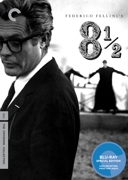
8½
(1963)Federico Fellini
16My favorite Fellini film, and the one that opened me up to foreign films and inspired me to look into the window of other cultures and artworks outside of my immediate influences. Anyone interested in the creative process, of any medium, should take in this film for its personal vision of the artist and the artist’s life, and where these intersect and divide. A masterpiece.
#5 in Mike Allred’s Top 10Perhaps all directors only make films about themselves. If so, this film is the apex, the zenith, of all narcissistic or self-reflexive endeavors. It’s Freud gone Italian: alienation in autos and a screaming ascent into some rarified atmosphere, then, of course, what goes up must come crashing down. And then it peels another layer off to ask: what does a filmmaker do in midlife creative crisis? How does one reinvent authenticity? I think most directors ask themselves that daily.
#4 in Roger Corman’s Top 10Mastroianni’s midlife crisis is used to explore the complex interior life of man. Fellini’s masterpiece is effervescent, scary, and profound, transcending film itself.
#1 in Donald Fagen’s Top 10I know, I know, it’s such a cliché for a director to like Fellini’s 8½, but it’s a great movie. To capture both stories and feelings from your youth and tell tales of how weird and nerve-racking it is to make a movie while at the same time being unbelievably entertaining is a true accomplishment. Whenever I’m in a bad mood, I just need to put on the music Saraghina dances to on the beach and I’m happy again.
#1 in Paul Feig’s Top 10One of those films every film lover has to watch at some point. Amazing storytelling.
#5 in Flying Lotus’s Top 10Fellini is my favorite director, and this brilliant movie is one of my inspirations.
#1 in Chris Hegedus’s Top 10I first saw this film on a Criterion laserdisc in the study center at USC. Fifteen years later (jeezus), if I had a favorite film, this would probably be it. In fact, I’ve just spent twenty minutes typing then erasing inane superlative descriptions of it. For me it redefined what a film could be-both singularly cinematic and as dense, delicate, and complex as a great novel. That was no less inane than the others, but I’m going to let it slide.
#1 in Rian Johnson’s Top 10This beautifully visual film is about a film director, Guido Anselmi, trying to make his latest movie. The film goes back and forth between his memories of his childhood, his fantasies, and his present life. The imagery is iconic and unforgettable—the quintessential Fellini. Who could ever forget the monumental Saraghina dancing on the beach? The images from this film have stayed with me my whole life.
#2 in Mary Ellen Mark’s Top 10The permutations of cinema. The associative editing. The mind of a movie director. Marcello of the 1960s: perfection. Nino Rota round and round. Surrealism as a map to the creative process. The overproduced fog in which the mind goes away and being begins. The great death of consciousness experienced in a world of pure fiction. Artifice as truth, truth as lies, lies as cinema, women as mystery, oneiric filmmaking and artistic onanism. Pure pleasure. Spirits lift, the eye marvels . . .
#1 in Oren Moverman’s Top 10The perfect film for any self-obsessed artist out there.
#6 in Stella Mozgawa’s Top 10What would Fellini do after La dolce vita? We all wondered. How would he top himself? Would he even want to top himself? Would he shift gears? Finally, he did something that no one could have anticipated at the time. He took his own artistic and life situation—that of a filmmaker who had eight and a half films to his name (episodes for two omnibus films and a shared credit with Alberto Lattuada on Variety Lights counted for him as one and a half films, plus seven), achieved international renown with his last feature and felt enormous pressure when the time came for a follow-up—and he built a movie around it. 8½ has always been a touchstone for me, in so many ways—the freedom, the sense of invention, the underlying rigor and the deep core of longing, the bewitching, physical pull of the camera movements and the compositions (another great black-and-white film: every image gleams like a pearl—again, shot by Gianni Di Venanzo). But it also offers an uncanny portrait of being the artist of the moment, trying to tune out all the pressure and the criticism and the adulation and the requests and the advice, and find the space and the calm to simply listen to oneself. The picture has inspired many movies over the years (including Alex in Wonderland, Stardust Memories, and All That Jazz), and we’ve seen the dilemma of Guido, the hero played by Marcello Mastroianni, repeated many times over in reality—look at the life of Bob Dylan during the period we covered in No Direction Home, to take just one example. Like with The Red Shoes, I look at it again every year or so, and it’s always a different experience.
#8 in Martin Scorsese’s Top 10A wonder. If I had to choose the best movie ever made, I’d choose 8 1/2. It’s so rich, so free, so influential. It has such a high energy in its form, an energy that never stops. It’s like a strong river that never stops flowing. It also has one of the most wonderful endings in film history. Something extraordinarily surprising, poetic, and reasonable in a way you wouldn’t have expected.
#1 in Götz Spielmann’s Top 10 -
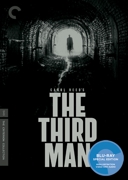
The Third Man
(1949)Carol Reed
16Probably the film I’ve watched the most. Harry Lime is arguably the most charismatic villain in cinema. Despite the terrible crimes he’s committed, I can’t help wanting him to escape in that extraordinary foot chase in the sewers of Vienna.
#8 in Hossein Amini’s Top 10What can I say about The Third Man that hasn’t already been said? This is the first film that made me look at movies in a new way. It made me fall in love with everything about them. You’ve got to hand it to Carol Reed for making a movie that is all about a character (Harry Lime, played by Orson Welles) who doesn’t even show up until three-quarters of the way in. The Anton Karas score remains one of the best ever for a film. I bought a zither just to learn to play Harry Lime’s theme. If I’m having a hard time getting into working, I often put The Third Man on in the background, as it always puts me in a mysterious and creative mood. The music is truly upbeat.
#1 in Marcel Dzama’s Top 10I’ve seen this picture a zillion times but always find something new to wonder about. Graham Greene, Carol Reed, Joseph Cotten, Orson Welles, Trevor Howard, Nazis, gangsters, Hitchcockian surrealism, innovative cinematography, a moody babe, Vienna, a zither for ear candy: it’s all here.
#8 in Donald Fagen’s Top 10“In what ca-TEG-ory would you put Mr. James Joyce?” Or, for that matter, this film? Among other things, I’d call it the best gangster picture ever made. Orson Welles got the most mileage from it (including a radio spin-off that recast the swinish Harry Lime as a good-natured rogue), a renown I find difficult to fathom, given the superb ensemble work by Joseph Cotten, Trevor Howard, Alida Valli, Bernard Lee, Wilfred Hyde-White, and a doctor who pronounces his name VINK-el. Carol Reed’s direction makes the most of every incident, and the whole package is tied up with one of the best musical scores ever.
#9 in Gary Giddins’s Top 10Carol Reed was one of my major influences, though arguably Orson Welles deserves some sort of codirector credit on The Third Man. I’m waiting for Criterion to release Outcast of the Islands, which is high on my list of ten favorite films.
#7 in Monte Hellman’s Top 10“Why is it there are so many more horses’ asses than there are horses?” —G. Gordon Liddy
#3 in Iron and Wine’s Top 10Yes, indeed.
#8 in Rian Johnson’s Top 10A shadow of a man turning around a corner, casting itself so tall it reaches beyond the roofs of buildings; endless tunnels underground broken by the white light of arched openings, and the creepy and mocking music of the zither. The Third Man is a noir archetype. Orson Welles is only present for about a quarter of the film, and he still manages to take it over completely.
#7 in Caitlin Kuhwald’s Top 10One of my favorite scores, next to Days of Being Wild. An incredible use of depth and contrast and the word Lime. God, I love the way they say “Lime.”
#10 in Brie Larson’s Top 10The angles, story, humor, dialogue, music, eloquence, Trevor Howard, Valli, Cotten. Smart fun.
#9 in Angus MacLachlan’s Top 10Maybe the best film ever made in Europe about modern Europe, by my favorite of all European directors, Carol Reed. It’s a companion piece to its follow-up, The Man Between, my other favorite Reed film; both films present a totally pessimistic take on the moral collapse of a divided postwar Europe, with no heroes or possible redemption. I’ve probably seen it fifty or sixty times since it first appeared on TV in the 1950s, and still watch it from beginning to end whenever I get the chance. With the exception of the miscast Orson Welles (how could Alida Valli ever have loved such a mean-spirited, charmless, smirking killer?), the players, led by Joseph Cotten, Valli, and Trevor Howard, are at their best, as are the finest collection of German-Austrian actors ever assembled. It contains one of the greatest musical scores and has easily the greatest ending to any film ever made.
#2 in Paul Morrissey’s Top 10While working in story on an early version of Wall-E, I boarded a sequence featuring a chase through a cityscape. Andrew Stanton, the film’s director, called me on it: “This is so Third Man!” He had a big smile on his face, and why wouldn’t he? I’ve learned where to find tough guys who cast long shadows. And I’ve also learned where to milk a character reveal: Carol Reed plus Anton Karas plus Robert Krasker equals Harry Lime, and cinematic perfection.
#9 in Scott Morse’s Top TenMuch has been written on this great film—I would just say that I am always struck by how perfect Joseph Cotten is as a foil to Orson Welles (not for the first time, of course). Cotten flawlessly captures Graham Greene’s cynical view of American naïveté on matters of international affairs and the mysteries of human behavior.
#13 in Greg Mottola’s Top 10Those magnificent noir close-ups of total strangers never to be seen again. The seedy days of occupation postwar. The chiaroscuro idealism of saving yourself by killing your friends. Harry Lime asking us to grow up. The sewer system sequence. The zither plucking away, oh, that zither, what a score! Joseph Cotton. Selznick as producer? Thriller is character. Character is plot. Plot is a game. Games matter. Extreme camera angles. Deception is filmmaking; learning to love the deception.
#2 in Oren Moverman’s Top 104. Carol Reed’s classic Iron Curtain murder-mystery—very dark, very visual and gritty. And of course, the famous zither music is perfect.
#4 in Bill Plympton’s Top 10I defy anyone seeing this film for the first time not to gasp when Orson Welles suddenly appears in that doorway about a third of the way through. Directed by Carol Reed, screenplay by Graham Greene, this is top-drawer.
#8 in Franc Roddam’s Top 10 -

Seven Samurai
(1954)Akira Kurosawa
13Most of my life I’d heard of this amazing film and knew that Akira Kurosawa created the original visions that spawned The Magnificent Seven and Sergio Leone’s “Man with No Name” flicks, which I watched regularly growing up. It wasn’t until Kurosawa’s Ran hit theaters in the eighties that I was finally exposed to his artistry and power. And Criterion has given me my favorite of his films in the most pristine, perfect presentation I could imagine.
#3 in Mike Allred’s Top 10My father was a film buff. He instilled in me an appreciation of the art of movies. He felt that there was no cinema artist greater than Kurosawa. At a very young age he took me to see Throne of Blood and Seven Samurai. Since then I’ve seen Seven Samurai over fifty times, in theaters, on VHS, laserdisc, and DVD. The latest Criterion edition is my favorite version of my favorite action movie. I love all the extras, especially the history of the samurai, which really enhances the movie’s historical context. In the second season of Heroes, we did a story line set in seventeenth-century Japan. The Seven Samurai box set was an invaluable resource for the costume and art department. About half of our crew watched it and were really inspired by what they saw. It’s one of those movies that I can’t turn off. One minute of viewing and I’m hooked. I’ve heard many people say that about the first two Godfather films, but for me Seven Samurai is the one that lures me into watching multiple hours of a movie I know by heart.
#8 in Allan Arkush’s Top 10Lessons one through one hundred in how to write, shoot, direct, and edit a film. Sit down and enjoy.
#10 in Ramin Bahrani’s Top 10I like to see this film once every few years. I love it for its balance of humor, drama, and its deep affection for our noble and flawed natures. When I remember the film I smile and enjoy very much the breadth of the characters, all the beautiful courageous, broken and romantic samurai. I too want to be one of those samurai, and I want to make such a strong and kind film.
#1 in Jane Campion’s Top 10I just had to have Kurosawa in here, and this one won the coin toss.
#7 in Jaime Hernandez’s Top 10When I first came to Los Angeles I became addicted to Japanese cinema at the Toho La Brea Theater. Criterion has reissued many of Kurosawa greatest films, and my list could easily have consisted solely of his titles.
#4 in Ricky Jay’s Top 10Another Kurosawa film packaged with perfect taste. With beautiful calligraphic type and brush painting, this set is a gem. Featuring seven examples of different personalities deciding to be selfless for very individual reasons, this film is a lesson in patience and of sacrifice.
#5 in Caitlin Kuhwald’s Top 10Yep. A symphony of visuals comes together to communicate the essence of basic humanity. There’s no suitable combination of words to match the combination of cinematic choices that Kurosawa made here. I was lucky enough to see it on film the first time I saw it, on a big screen, with good sound, sitting next to my wife, who was also seeing it for the first time. That’s a combination of beauty that’s hard to replicate.
#8 in Scott Morse’s Top TenThis is the template for many films, including The Magnificent Seven. The story is a brilliant construction, and the path of the heroes is eternally inspiring. Kurosawa directs action like no other. It’s an awe-inspiring film.
#5 in Franc Roddam’s Top 101. The opening scene, with the horses, is one of the best ever. It always mesmerizes me.
#1 in Johnnie To’s Top 104. For me, three films stand out in Kurosawa’s uneven career (the other two being Ikiru and High and Low): one of the cinema’s greatest “action” movies, thrilling and sublime. (Beware the dread Hollywood remake!)
#4 in Robin Wood’s Top 101. C’mon, I gotta tell why this movie is good? You tell me!
#1 in Adam Yauch’s Top 10 -
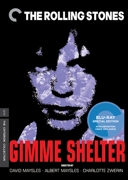
Gimme Shelter
(1970)David Maysles, Albert Maysles and Charlotte Zwerin
13The British Invasion of the sixties fascinates me, as do the glitter rock and prog rock movements that followed. A Hard Day’s Night is my all-time favorite film, and the music made between 1964 and 1974 has remained my favorite. Most of that music is filled with power, liberation, and joy. But right in the middle of that ten-year period was this terrible event that seems to body-slam the “peace and love” vibe that preceded it. The Rolling Stones had recently lost founding member and icon Brian Jones and were moving on. Some genius decides to hire Hells Angels (with beer) for security at their concert at the Altamont Speedway, which results in the stabbing death of a concertgoer. It’s amazing that these events all come together in this eerie and compelling document. This film details the exact moment of “the end of an era.” Chilling.
#12 in Mike Allred’s Top 10To look at Mick Jagger’s creative output today, working hard to suggest the dynamism of his early career, you may wonder what it is he is straining to return to. This film offers an answer. Rock and roll, particularly British rock of the late sixties and early seventies, featured pioneering, Dionysian front men who lured their fans, male and female, into a bacchanal of sex, drugs, and blistering music. Those gatherings were often combustible. In this case, tragic. The remarkable Maysles brothers and Ms. Zwerin fashion a kind of cinematic, pop Warren Commission of the Altamont Speedway concert/crime scene. You don’t need drugs to get high watching the Stones at their peak. The band, and especially Jagger, are a drug.
#7 in Alec Baldwin’s Top 10This is documentary in the purest sense: a document. It’s real and sickening, and it feels dirty to watch. And yet there’s something weirdly redemptive about the fact that the Maysles were there. They caught it, they bronzed it like a shoe, and it can’t ever be diminished.
#5 in Diablo Cody’s Top 10The strange thing about Altamont, with all its horrors—brilliantly and intimately documented by the Maysleses and by Stanley Booth in his book The True Adventures of the Rolling Stones—is that one still wishes one had been there. (I interviewed Stanley onstage in 2012 after a screening of the film, and he still seemed traumatized by the gig, all these years later.) The film and Booth’s book can both be usefully cross-referenced with Sonny Barger’s autobiography, in which he concedes that while it may have been a big night for the Stones it was just another night for the Angels! One of the great moments in documentary is when we focus on Barger at the edge of the stage, looking at Jagger as though he might still decide to beat the crap out of him, as no one had looked at him since he was a little boy at school in England.
#5 in Geoff Dyer’s Top 10The best music documentary ever made, period. It is history on film chronicling the end of the sixties. Watch it all fall apart before your eyes.
#8 in Marcel Dzama’s Top 10The Maysles are masters. Their philosophy of Direct Cinema is proved in these films. Life is as interesting as fiction. This is not reality TV; it is observational documentation in the purest sense. It is not manipulated; the only filter is the obvious love the filmmakers have for their subjects. Salesman is as deep as Death of a Salesman or The Iceman Cometh, and Gimme Shelter is like Greek tragedy.
#10 in James Franco’s Top 10The footage in this film is difficult to forget, often for contradictory reasons.
#7 in Chuck Klosterman’s Top 10Continuing on the rock theme: I see this documentary as a document of the end of an ideal. It’s devastating and difficult to witness the end of such a hopeful era, but fascinating and extremely relevant. And on a lighter note, it’s always enjoyable to watch Mick Jagger strut around like a sexy peacock.
#2 in Caitlin Kuhwald’s Top 101. Perhaps my favorite documentary. In its thematic consistency and sense of narrative it works almost like an ancient myth, but with the added bonus of utter spontaneity—and Mick Jagger in a ridiculously long scarf.
#1 in Kevin Macdonald’s Top 10One of the best horror movies ever made. The whole movie is shot inside the belly of a quivering, invisible demon—the 1960s, rotting in the sunshine of idealism and about to burst with flies.
#7 in Patton Oswalt’s Top 104. For a period of time, I thought I might only make documentaries. Films like Gimme Shelter had a lot to do with this attitude. Why make narrative work when real life was so interesting? I loved the Maysles approach to filming; I loved the Rolling Stones during that period; I loved the controversy surrounding the film. It still kind of seems like the perfect movie. Anytime this is playing in the theater, I try to see it.
#4 in Joe Swanberg’s Top 10The age of innocence that was the sixties ended, it is often said, at Altamont Speedway, miles from the peace and love of San Francisco, one cold fall evening in 1969. The Rolling Stones, frustrated to have missed out on the Woodstock festival weeks earlier, chose this location to stage their own festival, and taking advice from Jerry Garcia, brought in local Hells Angels chapters to handle security, paying them with as much beer as they could drink. The concert was a disaster, and ended with manslaughter. The documentarian brothers Albert and David Maysles were there to film the run-up to the event, the performance itself, and the aftermath. Mick Jagger has never looked so lost onstage, nor would he be quite so out of control again. Strangely, it seemed only to fuel the Stones’ rise to power—but then, the Beatles were about to call it a day. Essential viewing for anyone who loves contemporary music and the culture that surrounds it.
#1 in John Taylor’s Top 10 -
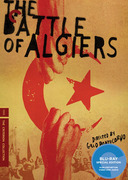
The Battle of Algiers
(1966)Gillo Pontecorvo
12This is a film that every year becomes more and more timely. On a sociopolitical level, its struggle of a people to win national identity against an oppressive regime is the ongoing story of our times. Its raw visual camera technique is in perfect synchronicity with the digital aesthetic of much contemporary filmmaking. Even now, it justifies its up-front disclaimer that not a foot of it is “documentary.”
#1 in John Bailey’s Top 10The film that politicized me overnight. It’s riveting, multidimensional agitprop with a compelling documentary feel—still relevant and still the best of its kind.
#3 in Anthony Bourdain’s Top 10I suppose there is a theme to my puberty list that could be summed up as “Live Free or Die Trying.” There is no battle for liberation, no desperate struggle to be seen on your own terms, that does not owe a debt to this film. Such sentiment is delivered romantically, tragically, and with unbearable beauty in this grande bataille, the likes of which you can still feel all over France, all over the world.
#3 in Susie Bright’s Top 10. . . for its originality, objectivity, and political power. I studied it while I was preparing Overlord. I admired a quote of Pontecorvo’s: “Technically U.S. directors keep improving. But this technical expertise hides an emptiness that keeps getting bigger. They’re very good at saying nothing.”
#9 in Stuart Cooper’s Top 10I don’t know how he made this movie, except that he used the real people. This is where Soderbergh learned half of his shit (as I’m sure he’ll admit). This is an amazing three-disc set, with hours of documentary footage.
#8 in James Franco’s Top 10The first time I saw this film, it felt so real it was frightening. I watched it again recently, and it is an amazing piece of filmmaking, still relevant and possibly even more frightening.
#5 in Chris Hegedus’s Top 10“It’s not the size of the dog in the fight, it’s the size of the fight in the dog.” —Mark Twain
#7 in Iron and Wine’s Top 109. The way that Gillo Pontecorvo makes his political points without resorting to propaganda—while always being truthful to the characters—is utterly brilliant. It’s a true-life thriller that doesn’t resort to a single cliché. The music is also unequaled in film.
#9 in Kevin Macdonald’s Top 10This might be the next best thing to placing I Am Cuba on the list, which totally makes the cut if we’re including Criterion laserdiscs. Gillo Pontecorvo took real people and showed how real guerilla warfare goes down. Even more powerful is how he did it, and modern-day “documentary-style” filmmakers could take a page out of his book on restraint. The camera is not all over the map; it stays where it needs to and still grabs the immediate, important points in a way that feels involved and true. Then Ennio Morricone boxes your ears with flair and bravado.
#1 in Scott Morse’s Top TenI was watching a geezer on Charlie Rose last night. John something, lectures in universities on war, uprisings, terrorism, torture, how governments become the terrorists, the pendulum of life and death. John something still uses this film to explain all before they discuss waterboarding. This film is the guv’ner.
#8 in Andrew Loog Oldham’s Top 10I was twenty-four years old when I made my first film, Pusher (about the Danish drug underworld), and for it I stole everything I could, both visually and technically, from this film and Cannibal Holocaust.
#2 in Nicolas Winding Refn’s Top 10I remember it as a strong anticolonialist film, with parallels with the American civil rights movement. In fact, a scene you won’t see in Medium Cool, of black militants going into a theater where The Battle of Algiers was playing, was deleted as a concession to Paramount’s concerns that it would provoke violence against Paramount executives. Paramount argued that if audience members came out of Medium Cool and committed a violent act, Paramount would be liable.
#3 in Haskell Wexler’s Top 10 -

The Wages of Fear
(1953)Henri-Georges Clouzot
11This is a companion portrait of the existential man of The Fire Within, but it is the obverse—men facing their end not by the personal choice of suicide but by literally being blown to bits. Beginning in a slow, sleepy town (an extended sequence that was once severely trimmed), it tracks men who are moving toward death on a literal and metaphorical road but whose ability to face the void ahead of them is Camus-like in its indomitability. Screwed down as tightly as a pipe bomb, this Clouzot film threatens to blow up in front of you at every turn. You want to scream as you reach to grab the truck’s steering wheel.
#4 in John Bailey’s Top 10How could I not have this one on here?
#10 in Jaime Hernandez’s Top 10I went to see this at Film Forum (thankfully not defunct) with my husband, Ira, and my mother several years ago. Before she died, the three of us used to go to the movies together, which was in and of itself a white-knuckle experience. My mom was a vocal spectator at the movies. Sighing, gasping, moaning, even uttering words of advice or disdain to the screen were not beyond her. It was often embarrassing. Even the most vapid milquetoast piece of crap could get a rise out of her. (She had discerning taste—after all, she loved Buñuel—but movies just made her emotional.) This film is not vapid, milquetoast, or remotely crappy—far from it. Between her and the movie, I was a wreck.
#3 in Georgia Hubley’s Top 10Clouzot’s gripping film about a group of men driving a truck full of nitroglycerine to end a mining disaster is, although it could not be more French, one of the great buddy pictures of all time, with a degree of white-knuckle suspense that has never been bettered, before or sense. It is, or could be, an elegy to the French film industry, which in its heyday could produce films of every kind that captured an international audience, and is now pretty much reduced to love stories or French comedies that, with rare exceptions, seldom seem funny to foreigners.
#10 in Michael Korda’s Top 10The tensest movie ever made. My favorite French film. Pretty much incomparable on every level.
#8 in Dennis Lehane’s Top 1010.
#10 in John Lurie’s Top 105. Desperate men who will do anything to earn a buck. It’s the tensest film I know.
#5 in Kevin Macdonald’s Top 106. Another very dark, cynical film that keeps you sweating all the way through. The most horrific film I’ve ever seen, right up there with Jaws.
#6 in Bill Plympton’s Top 10Clouzot’s version is a cinema tour de force. Tense from beginning to end, perfectly framed and edited, brilliantly acted. A must-see.
#9 in Franc Roddam’s Top 106. The suspense is mesmerizing, even paralyzing.
#6 in Tom Schnabel’s Top 10A one-of-a-kind film that will have you on the edge of your seat. The suspense is overwhelming, as men attempt to haul truckloads of nitroglycerin along a hellish South American road. It’s a delight to watch Yves Montand sweat it out.
#10 in Andrew Weil’s Top 10 -

Children of Paradise
(1945)Marcel Carné
11Another favorite of my vanished youth that withstands the test of time. It’s a huge, rolling pageant of a film, and Carné and Jacques Prévert get down and dirty with the Paris of the mid-nineteenth century, from which Arletty’s Garance surges up irrepressible and unscathed by the turbulence of life about her in the theater world.
#6 in Peter Cowie’s Top 10The love story is so powerful, the spectacle so grand, that Marcel Carné’s masterpiece (an indispensable Criterion production) isn’t often regarded as a genre piece, though it is inhabited by every kind of criminal and involves an unforgettable murder in a Turkish bath—made particularly ghastly for occurring just off camera. Yet Marcel Herrand’s Lacenaire is one of the cinema’s most fascinating monsters, and his machinations resolve the fate of everyone else, including the muse incarnated by the great Arletty.
#8 in Gary Giddins’s Top 10The title of the film refers to “the gods”—in French, le paradis—that upper gallery in a theater where the seats are cheap and the audience boisterous. Throughout the film, we are the audience watching parallel stories in which the world of the stage, presented largely in mime, mirrors the “real-life” setting, itself of course a fiction shown on the screen. Through the obvious theatricality of the stage and the far subtler theatricality of the “real” story, we follow a tale of love, loss, and revenge straight from late nineteenth-century French literature but reinvigorated by the magic of film.
#2 in Christopher Hobbs’s Top 10In my formative years I was completely taken by this combination of low life, stage pantomime and romantic twizzle. Jean-Louis Barrault, Etienne Decroux, Arletty and Pierre Brasseur on the boulevard of crime. Now, in my dotage, I like it more than ever.
#2 in Ricky Jay’s Top 10Marcel Carné’s masterpiece, starring the unforgettable Jean-Louis Barrault and the divine Arletty.
#1 in Christa Lang-Fuller’s Top 106. This was the first French—maybe the first foreign—film I ever saw, and, as it turned out, one of the most romantic. The notion of undying love labeled me forever, and I loved it.
#6 in D. A. Pennebaker’s Top 103. You can hear J.-L. Barrault cry “Garance!” from the other side of the world.
#3 in Tom Schnabel’s Top 1010. So beautiful and beautifully evocative—a film that allows space for imagination—but my gosh it’s long.
#10 in Whit Stillman’s Top 10I remember the title Les enfants du paradis. A young woman teacher said that French film is really important, and that I should see it. I saw it and I liked it, and obviously I remember it, but I don’t know why.
#5 in Haskell Wexler’s Top 10 -
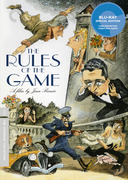
The Rules of the Game
(1939)Jean Renoir
11A perfect movie. Too perfect for me the first time I saw it at the Museum of Modern Art in 1971. It went right by me. The same thing happened the first time I had dinner at Chez Panisse. Sometimes an aesthetic experience is so sure-handed and flawless it’s beyond your ability to absorb it. I returned to Rules of the Game after seeing Grand Illusion and my favorite Renoir, The Crime of M. Lange. In fact, I saw a whole retrospective of his work before I realized what I had missed the first time I saw Rules of the Game. “Everyone has his reasons” is more than a line of dialogue; it is a comment on the true nature of what makes us so painfully human. Twenty-five years of meals and a day in the kitchen of Chez Panisse has taught me how they make a masterpiece right.
#5 in Allan Arkush’s Top 10Nothing much new could be said here, except that you leave it out of any best-of accounting at your peril.
#10 in Michael Atkinson’s Top 10. . . is for me the greatest film ever made, and cannot stand in any list of “top ten” because it is simply of its own class. Renoir’s upstairs-downstairs comedy-drama so defies categories that it is almost impossible to talk about it. You just have to see it—over and over. It’s a film that was almost lost to us, as the original camera negative was destroyed in the early forties. This magnificent restoration (especially of the dialogue) is as close to returning the film to its magisterial pinnacle as we are likely to achieve. New Wave critical demigod André Bazin said that this film contained “the secret of a film narrative capable of expressing everything without fragmenting the world, of revealing the hidden meaning of beings and things without destroying [their] natural unity.” Bazin died at age forty, just as Truffaut was starting production of The 400 Blows.
#13 in John Bailey’s Top 10If the game is a film, then what are the rules? According to Renoir, who like Hoyle could load a deck with the best of ’em, you take a cast that presages Altman’s later operatic ensembles, you take an upstairs and downstairs at war through manner and subterfuge, you take a manor house with a camera that has an omniscient sweep—and you get one very fine film that can tell you more about social politics and film in a single two-hour period than Emily Post or a textbook can in a month or a lifetime.
#9 in Roger Corman’s Top 10Jean Renoir’s almost-lost piece of essential filmmaking is a tour de force of social debate, comedy, violence, and overindulgence. And that’s just how the characters behave. The filmmaking is crisp, smart, and quickly paced. Many films have come close, but, in my opinion, Renoir’s masterpiece is the finest cinematic example of class satire.
#10 in Matt Dentler’s Top 10Jean Renoir’s exposé of French bourgeois hypocrisy—always a great subject!
#2 in Christa Lang-Fuller’s Top 10I almost left this off my list, because what’s left to say about it? Renoir celebrates the death knell of the French aristocracy with sublime grace and trenchant satire. No final shot in film history can chill me to the bone like this one.
#3 in Dennis Lehane’s Top 10Renoir’s humanity. The depth of his characters: who is that behind the large woman who plays the piano? Even he has a story. The miraculous way Renoir captures the sky in black and white. The breadth of what he’s truly portraying; the world on the edge of the volcano.
#2 in Angus MacLachlan’s Top 10Are we bored with this list yet?
#1 in James Schamus’s Top 101. The easiest choice. The greatest of movies. Never has a film been so formally rich and so teeming with life. Jean Renoir’s romantic roundelay is as fluid and multifaceted as the characters he depicts with equal doses of compassion and bemusement, and this depiction of the mercurial nature of human behavior, of the beauty and absurdity of civilization, has never been equaled. The Dance of Death is the greatest sequence, but it’s also a dance of life. For many years, the film was literally unavailable in an acceptable print or video version in this country. For a showing several years ago (before the recent Janus Films rerelease), the Museum of the Moving Image had to import a 35 mm print from England. And as though it isn’t enough to be able to own a masterfully restored copy, the Criterion DVD has a great documentary about Renoir by Jacques Rivette!
#1 in David Schwartz’s Top 102. Jean Renoir in a bear suit, or any equivalent thereof, is an absolute must for a good country house party.
#2 in Leanne Shapton’s Top 10 -
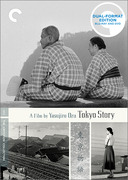
Tokyo Story
(1953)Yasujiro Ozu
11Reality check. The last time I saw it was with my wife and several friends. We are all about the same age, have elderly parents, or have lost our parents in the last couple of years. After the movie, we talked about our parents and how we had treated them. Everyone felt guilty for days. I studied the disc of documentaries, and treasure the Ozu films in my collection. “Real life intrudes just when you’re making other plans.”
#6 in Allan Arkush’s Top 10I saw this film for the first time recently. It’s an amazing film, delicate, beautiful, and full of a complicated wise love, utterly itself.
#6 in Jane Campion’s Top 10While waiting for Late Autumn and An Autumn Afternoon, my favorite Ozu movies, I’m happy to choose Tokyo Story, immaculately transferred and bolstered with a two-hour documentary on Ozu, featuring all the old familiar faces. The extreme simplicity and limpidity of Ozu’s cinematic expression has no equal. Tokyo Story teeters on that exquisite knife-edge between stoicism and sentimentality.
#8 in Peter Cowie’s Top 10Ozu was a master, and this is his masterpiece. This beautiful family drama is a textured poem about changing family ties and misunderstandings between generations. A portrait of postwar Tokyo and the changes that can come to different generations.
#7 in Matt Dentler’s Top 10Most commentators stress the heartbreak, delicacy and sympathy, and so on, but Ozu, like Blake, was of the devil’s party without knowing it. Although it is called Tokyo Story, its truth is universal: the only thing worse than having your parents to stay is having your in-laws to stay.
#10 in Geoff Dyer’s Top 10It is almost impossible to find sharp prints of these films. But your tears are the ones to blame.
#3 in Aki Kaurismäki’s Top 10I had never heard of this film—I only saw it recently. It’s truly brilliant. An old couple from a small town in Japan decide to visit their children in Tokyo, who disappointingly have little time to spend with them. It’s a film about the misunderstanding between generations and the end of one’s life. It’s romantic, realistic, and very poignant.
#9 in Mary Ellen Mark’s Top 10Another classic of world cinema with old people. Yawn.
#4 in James Schamus’s Top 103. Austere, quiet, and sad. On the surface, a simple story—mundane, even—but Ozu’s understanding of the subtleties of real human behavior imbue the characters with an emotional depth that takes the film into the sublime. When I first watched Tokyo Story a couple of years ago, it immediately made me rethink my entire approach to writing characters.
#3 in Seth’s Top 107. Influenced by (but in some respects transcending) Leo McCarey’s Make Way for Tomorrow, this is perhaps the greatest film about the Family and its degeneration under the stresses of capitalism.
#7 in Robin Wood’s Top 10 -
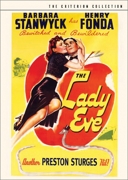
The Lady Eve
(1941)Preston Sturges
11I feel about The Lady Eve the same way I feel about A Hard Day’s Night. Both movies are on my all-time top ten list of favorites. The first time I saw them, I had the same impression of comic density. Enormous energy that I was running to keep up with. I felt like I had to see this movie again, if only to have another shot at laughing at the hundreds of jokes. I love movies that make you feel like you are not getting it all the first time, that there is much more to be had. Eve is my favorite Sturges. I love the chemistry between Barbara Stanwyck and Henry Fonda—like when she takes him back to her stateroom, manipulates him into making a pass, and shuts him down with “Hopsie, you ought to be kept in a cage.” On a pure filmmaking level, the honeymoon night on the train when Eve confesses to all her premarital dalliances is a tour de force of writing, acting, and editing, and it’s one of the best musically scored comic sequences in any movie ever! Sturges’s mother was an adventuress, a confidante, and traveling companion of Isadora Duncan. I like to think there is more than a little of his mother in Eve.
#7 in Allan Arkush’s Top 10Okay, I’m cheating: no one is murdered, and the confidence men and cardsharps are lovable. Still. This is Preston Sturges’s peak—a comedy that has not dated one whit, for which everyone involved, not least the actors (Henry Fonda and Barbara Stanwyck, supported by a quartet of inspired scene stealers: Charles Coburn, Eugene Pallette, Eric Blore, William Demarest), seems to have been thoroughly stimulated. Demarest’s closing line is perfect.
#2 in Gary Giddins’s Top 10This is a film I enjoy as much for the pleasure it gives to each new person I show it to as for the film itself. The combination of physical comedy and verbal wit is unmatched. Fonda makes those pratfalls look so easy. It’s worth watching the movie just for the last line.
#5 in Monte Hellman’s Top 10My love of confidence games, card-sharps and great filmmaking makes this the most obvious choice on the list.
#5 in Ricky Jay’s Top 10Preston Sturges and Barbara Stanwyck at the height of their respective games. Hilarious, bejeweled with 18-karat dialogue at every turn, and a gleeful assault on the hypocrisy of American sexual mores that persists even now. I still can’t believe this movie ever got made.
#4 in Dennis Lehane’s Top 104. All the brilliance and laughter of any Sturges film, but with romance too.
#4 in Kevin Macdonald’s Top 10Subversive Americana. Learning to laugh. The writer is the director; the director is the writer; the concept of the Hollywood writer/director is fetishized. Paris theater, Tel Aviv, Saturday afternoon—the Sabbath—double feature while the city naps. Crying when Joel McRea watches his own comedy in jail, learning to get out of my head . . . Barbara Stanwyck is more than one woman, falling for her again and again, Fonda on the ship . . . The snake. Veronica Lake is nameless—just “The Girl” (look it up).
#7 in Oren Moverman’s Top 106. Because my wife loves this movie.
#6 in Al Reinert’s Top 10Preston Sturges at his best. This was the first of his films I ever saw, in a revival at the Regency in New York, and it was a revelation. You’ve never heard dialogue so funny or move so fast. Barbara Stanwyck and Henry Fonda are hysterical, and it has maybe my favorite line ever in a movie—Fonda asks a fancy old society lady at a dinner party if he’s missed anything. She says, “The fish was a poem.”
#4 in Phil Rosenthal’s Top 105. Sturges takes a whole assortment of disagreeable elements—cliché rich people, cliché cardsharps, snakes, and slapstick—and makes one of the greatest romantic and funny comedies. The cast one must adore—never better.
#5 in Whit Stillman’s Top 106. Sturges’s masterpiece, from the long buildup to the most hilarious and brutal payoff in the history of Hollywood comedy.
#6 in Robin Wood’s Top 10 -
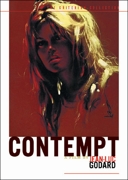
Contempt
(1963)Jean-Luc Godard
11This was a film I watched again and again before making The Two Faces of January. Not only for the Mediterranean backdrop and colors but for the way it showed a woman falling out love with her husband over a single incident.
#2 in Hossein Amini’s Top 10Just peerless. Georges Delerue’s score is my favorite of any film. Raoul Coutard’s photography is dazzling. The film seems to be, among another things, a brilliant analysis of the difficulty of translation. It’s hard to choose one Godard film, but Contempt seems to encapsulate so much of his genius.
#8 in Richard Ayoade’s Top 10Even with a nod to some of Hollywood’s best navel-gazing films, I will make a case that this is the best film ever made about filmmaking—made by one of the most self-referential of all filmmakers. Visually lush to the point of a Powell and Pressburger surfeit, Godard’s film lays bare a marriage in crisis. The long apartment sequence between Bardot and Piccoli is a dystopian analogue to the hotel room playful casualness of Seberg and Belmondo in Breathless. A back-to-back viewing of the two sequences constitutes a minihistory of the French New Wave. Raoul Coutard’s cinematography and Georges Delerue’s score give the Greek myth parallels of the film’s story line (and of the film-within-a-film trope) a sensuous subtext—music and image caressing the body of the star of And God Created Woman. It’s great to see Fritz Lang and Jack Palance, two polar opposite cinematic icons, in a room watching dailies. Below the screen is a running legend that reads, “Cinema is an invention without a future. Louis Lumière.” The film’s opening long shot over verbal titles—as the BNC anamorphic camera approaches the viewer along tracking rails, then pans and tilts so that Coutard’s lens points right at you—is one of those great “gotcha” cinematic moments.
#11 in John Bailey’s Top 10A visual and aural feast. The best movie ever made about moviemaking. Greece and Brigitte Bardot provide the purest form of seduction; Jack Palance provides the sleaziest. The subtext that explains the title is sexual politics at its most provocative. Every frame of this movie is invigorating. Cinematographer Raoul Coutard and composer Georges Delerue deserve to be canonized. The already anointed Fritz Lang, playing himself, gives the film yet another pleasurable dimension of film truth.
#8 in Michael Barker’s Top 10No one today is as modern as Godard. There has never been a more daring conceptual, chic, and irreverent filmmaker. In Contempt it is not posturing but a fascinating portrait of a marriage unraveling. Funny, chic, beautiful Brigitte Bardot (for god’s sake) and haunting.
#5 in Jane Campion’s Top 10I adore Jean-Luc Godard’s early films. Stylish, contemporary, and innovative, this is one of his best—and Brigitte Bardot, well!
#3 in Chris Hegedus’s Top 10Why, of all the Godards? Well, in part because we all know already that Breathless is one of the most important debuts in the history of cinema, that Band of Outsiders is one hell of a good time, and so on and so forth. And I might have pled the case for another favorite of mine, Alphaville. But, besides all its widescreen majesty, Contempt offers a unique hook for me. From McGilligan’s Lang biography: “At one point Michel Piccoli’s character remarks to Lang how much he and his wife enjoyed watching Rancho Notorious, with Marlene Dietrich, on the television one night. The director forthrightly replies that he himself prefers M. This was also Godard’s joke on himself. Not only did the Cahiers du cinéma crowd champion his Hollywood films above the Berlin ones, but Godard had actually written that M was ‘the least good film of Lang’s.’ ” . . . The world of cinema will forever be indebted to Godard for this Fritz Lang swan song. One elegiac image—just a few moments really, sans dialogue—speaks volumes: The director is seen lighting up a cigarette after others have exited the scene; the camera tracks beside the elder statesman of film as he walks slowly along a street alone, apparently lost in thought. Godard’s camera watches him contemplatively while, in the background, George Delerue’s eloquent score rises on a gorgeous note.
#3 in David Hudson’s Top 10I can’t get enough of this film, and it is so cleanly presented here that the famously malcontented Godard himself must be proud of the results. The great film about film, this disc is perfect, from the amazing cover art to the short documentaries that show the difficulties of shooting a film with an icon like Bardot in tow. And if you aren’t swept away by the Georges Delerue score, you really need to check your pulse.
#10 in Neil LaBute’s Top 10Brigitte Bardot has never been better. The way Jack Palance’s producer brilliantly humiliates Michel Piccoli’s writer, who tries to hold on to his pride, rings a bell. Plus, our friend Fritz Lang as the director . . . Sacré Jean-Luc!
#8 in Christa Lang-Fuller’s Top 10I used to think of Godard and Antonioni as the great modern visual artists of cinema—great colorists who composed frames the way painters composed their canvases. I still think so, but I also connect with them on the emotional level. And for me, Contempt is one of the most moving films of its era. At the time, people talked a lot about the unlikely combination of artists involved: a multilingual Carlo Ponti production of an Alberto Moravia novel, starring Brigitte Bardot, costarring Michel Piccoli and Jack Palance, set at Cinecittà and in the Casa Malaparte in Capri, directed by Jean-Luc Godard, with Fritz Lang as himself. The film itself got a little lost in the fixation on the details. It’s interesting when circumstances that seem so relevant and important at the time of a film’s release just dissolve as the years go by. I didn’t care so much about all of that background information at the time, I just responded to what I saw on the screen, but over the years Contempt has grown increasingly, almost unbearably, moving to me. It’s a shattering portrait of a marriage going wrong, and it cuts very deep, especially during the lengthy and justifiably famous scene between Piccoli and Bardot in their apartment: even if you don’t know that Godard’s own marriage to Anna Karina was coming apart at the time, you can feel it in the action, the movement of the scenes, the interactions that stretch out so painfully but majestically, like a piece of tragic music. Contempt is also a lament for a kind of cinema that was disappearing at the time, embodied by Fritz Lang and the impossible adaptation of The Odyssey that he’s directing. And it is a profound cinematic encounter with eternity, in which both the lost marriage and the cinema seem to dissolve. It’s one of the most frightening great films ever made.
#9 in Martin Scorsese’s Top 10 -
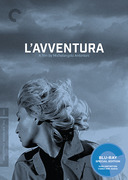
L’avventura
(1960)Michelangelo Antonioni
11My favorite among Antonioni’s trilogy of alienation (La notte and L’eclisse are the other two). For me, these films capture the slow and painful death of love with astonishing intuition and almost no dialogue. There is nothing to be said between lovers when they fall out of love, but the silent agony of their dying relationships is captured in heartbreaking glances and body language. A shoulder turn or look away speaks volumes. Antonioni is a master of blocking actors. They move up close, far away, and out of shot in long single takes that reveal more about their emotions than any confession.
#1 in Hossein Amini’s Top 10Every director should have a respect for the frame, and here Antonioni reminds us of that lesson shot after shot. He shocked Cannes but without being exploitative, which is more than most enfants terribles in Cannes’ history can claim. Antonioni shocked by being a ruefully disturbing mirror into the souls of his generation. Sandro’s empty desires, and Claudia’s blind and desperate search for meaning and connection in the deadly silence of life, are as true to our times as to when the film was made. Monica Vitti astounds with her beauty and her mystery, and Antonioni’s courage to explain nothing but allow us to feel and question everything is a testament to his brilliance.
#6 in Ramin Bahrani’s Top 10Never has “waiting around” been so glorious. Postwar ennui meticulously staged and photographed, a fin de siècle troupe of the idle rich, such empty lives and their inconstant echoes. But Antonioni really had the last laugh, for this “adventure” film is more a solemn nod to Godot than any real outing or frolic.
#1 in Roger Corman’s Top 10When I first saw this at university, in 1960, I found it boring. Yet something made me watch it a second time that same term, and I fell under the spell of Antonioni’s mesmeric camera movements, his grasp of love and its heartaches, and above all the impassioned beauty of Monica Vitti. The film looks as freshly minted as if it had just been released.
#2 in Peter Cowie’s Top 10Antonioni is still elusive, but these great discs help open an understanding of his work through documentary and illuminating commentaries.
#12 in James Franco’s Top 10When I was in my early twenties, I worked as an usher at London’s National Film Theatre. They showed L’avventura with an earphone commentary instead of subtitles, but because I was working I couldn’t listen to the translation. Of course, it didn’t matter that I couldn’t understand a word of Italian—it blew me away regardless. The power of the compositions, the rhythm of the editing, the tone that is established from the opening frames. I decided for a while that if I was going to make films, they should all feel like Antonioni’s. I soon realized I wasn’t up to that challenge.
#1 in Andrew Haigh’s Top 10The mystery, the compositions, the island rocks, and, most of all, Monica Vitti, standing against a wall, biting her lower lip, with that hair, and eyes, and nose.
#1 in Angus MacLachlan’s Top 10Here’s another film of which so much has been said and written over the years that you wind up thinking: There’s nothing left to say . . . But of course, that’s always a cop-out because it’s never true—there’s always more to say about a film, to see it again is to see it anew, to see it in 2014 as opposed to 1960 is a very different experience, and for some people it will literally be brand-new (to those people, I would say, simply: See it! Now!!). It’s difficult to think of a film that has a more powerful understanding of the way that people are bound to the world around them, by what they see and touch and taste and hear. I realize that L’avventura is supposed to be about characters who are “alienated” from their surroundings, but that word has been used so often to describe this film and Antonioni’s films in general that it more or less shuts down thought. In fact, I see it, more than ever, as a movie about people in spiritual distress: their spiritual signals are disrupted, which is why they see the world around them as hostile and unforgiving. Visually, sensually, thematically, dramatically, in every way, it’s one of the great works of cinema.
#6 in Martin Scorsese’s Top 105. I found it impossible to take my eyes off of Monica Vitti and her hair! Existentialism and bourgeois complacency aside, one of the real features is that thick blonde hair.
#5 in Leanne Shapton’s Top 10One of my favorite movies of Antonioni’s, and Antonioni is one of my big influences. I like the slowness of his movies, the nonnarrative structure. L’avventura was the one with which he really broke through into something new, and it was, at its release, a big mis-success. I like that at last it came through, and people realized how important it was.
#4 in Götz Spielmann’s Top 10 -

Scenes from a Marriage
(1973)Ingmar Bergman
10Although I could have happily chosen any of your Bergman titles, this is the one I rewatch most often.
#11 in Richard Ayoade’s Top 10A great first-date movie! Well . . . perhaps not. I have never seen a more truthful and honest account of human relationships. Shockingly simple in its creation, once again proving how hard it is to be simple and how it is usually much more profound. Bergman keeps cutting away to reveal more, not less. He has done the difficult and dirty work for us. Watch and accept the truth about our relationships, and then, like all of mankind, try to avoid your fate.
#8 in Ramin Bahrani’s Top 10“Why didn’t you marry?” I’ve often been asked.
#9 in Susie Bright’s Top 10A work I believe Bergman made for television, so it is perhaps not so well known. It goes very far into the riddle of marriage, the breakdown, pain, and passion. I’ve seen it three times already, and I want to watch it again with friends (most of us with one divorce under our belts!). The performances are stunning and the story surprises, touches, and absorbs me each time I see it.
#8 in Jane Campion’s Top 10At the time the film first played theatrically in the U.S., I was invited to a private screening of the five-hour television version. As one who’s addicted to marriage, it was a devastating experience. The final segment in particular made an indelible impression, and I’ve watched it many times. My only regret is that Criterion didn’t include the alternative dubbed soundtrack, on which Liv Ullmann and Erland Josephson re-create their performances in English.
#11 in Monte Hellman’s Top 10The television (read: long) version of Bergman’s X-ray of a married couple is, of course, insightful, heartbreaking, painfully true, and oddly hilarious, but it’s also one very unexpected thing: riveting. Put the first episode on at a decent hour and see if you can stop watching the entire set. It’s like the Swedish 24, except you can still go to parties and claim not to watch television.
#7 in Rian Johnson’s Top 10Quite simply the best there is: Ingmar Bergman at the height of his powers and two of the fiercest performances captured on camera. This offers one the chance to compare the theatrical and television versions—two chances to be completely blown away. It’s unmissable.
#4 in Neil LaBute’s Top 10This was the most invested in any relationship I had ever been—including my own. Beautiful, hopeful, heartbreaking in ways that hit almost too close to home.
#9 in Brie Larson’s Top 10I’m relatively new to Bergman, but I think Scenes from a Marriage could be used to measure the seriousness of a person who describes a film as “intense.” This is actually intense. It shows a marriage in various states of disintegration and settles on an impasse so brutal and earnest that it’s almost hard to watch. Mad respect to Sweden for putting this on television! Although I just read that apparently divorce rates doubled there the year it was on.
#3 in Daniel Lopatin’s Top 10When I saw this, I remember thinking, Oh, so this is what everyone has been ripping off. Watching Marianne and Johann’s marriage dissolve is terrifying and hilarious and chilling. Watch the long TV version. Make sure to have Prozac handy.
#8 in Nicholas Stoller’s Top 10 -
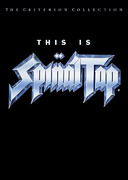
This Is Spinal Tap
(1984)Rob Reiner
10The granddaddy of all modern comedies, Spinal Tap set the gold standard for the mock documentary. Just like with Stranger Than Paradise, I had an encounter with this film when I was in film school: I drove past the set one day in downtown L.A. and saw the band in their wardrobe walking to the set, and thought it looked like some dumb movie with crazy costumes. Little did I know I was so close to the set of one of the funniest movies ever made.
#10 in Paul Feig’s Top 10The funniest film that ever will be made. It invented an entire genre. It’s impossible for me to quantify the impact this film had on my sense of humor. When I meet young people who have not seen this film, I am at first dismayed and then overjoyed for them, because I know they get to experience the thrill of the “this one goes to eleven” speech for the very first time. This film is a master class in deadpan comedy. —TL
#5 in Robert Ben Garant and Tom Lennon’s Top 10I first saw This Is Spinal Tap when I was seven or eight, and it totally changed my life. This was comedy. This was how you performed comedy. It gave me a leg up at an early age. The Criterion disc is a must because they do commentary out of character. Listening to those three guys talking about how they created and related to these characters, how they approached scenes, and where the inspiration for each scene came from taught me a lot. Thanks, Criterion!
#20 in Bill Hader’s Top 10Bonus!
#29 in Aki Kaurismäki’s Top 10The most influential rock film ever made (A Hard Day’s Night is probably second). It’s more than thirty years old, but it’s still the default reference for every rock group with a sense of humor (even if none of the band members were alive when it was originally released). It somehow has more cultural sticking power than most of the music it satirizes. There’s never been a real documentary about a real band that captures the nature of heavy rock as deftly as this unreal documentary about a fake band.
#2 in Chuck Klosterman’s Top 108. Rock films, or rock bands for that matter, were never looked at quite the same way after this film was released. Rob Reiner, er, Marty DiBergi gets the director credit, but somehow I feel the combined improvisational talent of Christopher Guest, Michael McKean, and Harry Shearer has an awful lot to do with the sublime content within. Yes, it’s funny, but it’s also as painful as any Bergman epic. Such is life.
#8 in David Markey’s Top 101. Along with The Producers (the original), this film makes me laugh the loudest and the longest. Every scene is totally hilarious, and so many of the gags are now classic—the amplifier that “goes to 11”; “It’s okay—Boston’s not a big college town”; and “Yes, I could sell hats —what size are you?”
#1 in Bill Plympton’s Top 10Do I really need to elaborate on this one?
#11 in Nicholas Stoller’s Top 10If you haven’t seen Spinal Tap, it’s your loss. The best mockumentary ever, with lines that made me fall out of my seat the first time I watched it, laughing so hard I couldn’t catch my breath. I’ve watched it countless times since and still crack up. Christopher Guest as Nigel is too good for words.
#9 in Andrew Weil’s Top 10Along with Airplane, An American Werewolf in London, and Raising Arizona, this film is one that I can silently mouth along with every single line of. I don’t know if Reiner, Guest, McKean, and Shearer could have ever known back in 1984 quite how far-reaching the influence of this movie would be. As a British director who made his start in TV comedy, I can vouch for the fact that this film is one of the key texts for every single UK comedy writer, actor, and director of my generation. The fact that it was performed by American actors doing killer English accents just makes that all the more impressive and ironic.
#9 in Edgar Wright’s Top 10 -

Le Samouraï
(1967)Jean-Pierre Melville
9A completely different kind of samurai film. Actually, it’s a French gangster movie. It’s clear that director Jean-Pierre Melville digs old American gangster movies and filters that affection into creating his own unique genre. This is my favorite of his films. I first saw this baby when it was rereleased in theaters a few years ago, and was completely entranced.
#4 in Mike Allred’s Top 10Quick cheat again. I could easily have listed Le cercle rouge, Army of Shadows, Le doulos and Le deuxieme souffle, which are all in the Criterion collection. Melville is probably my favorite director and was a huge influence on the script of Drive. The cinema of process and silent taciturn heroes whose tough-guy exteriors hide lonely, fragile hearts.
#5 in Hossein Amini’s Top 10I’ll never forget seeing the opening shot for the first time. Or watching Alain Delon try all those keys! I felt like I had finally found an “action” film made just for me. Writing about Melville is making me want to rewatch all his films! Army of Shadows and Bob le flambeur are as good as it gets!
#3 in Paul Dano’s Top 10The ultimate existential gangster film. Hypnotic, detailed, ritualistic, it has influenced films like John Woo’s The Killer and the more recent Drive. Alain Delon gives his most memorable performance as an ice-cold assassin above such mundane concerns as moral conscience. Though violent in its subject matter, Jean-Pierre Melville’s film is also cool, meticulously lit, and classically framed. It operates in a kind of dream state. It’s the opposite of the fevered emotional style of most gangster films. The pauses and silences help make it the visual equivalent of Harold Pinter’s dialogue. This is my favorite Melville film, and the extras are among Criterion’s finest, including an interview with John Woo and one with Melville himself.
#8 in William Friedkin’s Top 10Another film I watch over and over. I always begin thinking I’m only going to watch the great opening shot, then wind up watching it till the end. A classic of economy. Like the way Michelangelo created Moses from a block of stone: cut away everything that isn’t Moses.
#4 in Monte Hellman’s Top 10We should all be this alone. Alone as a way of life, a forecaster of how life finally works out. Delon is the practice run. Pay attention!
#3 in Andrew Loog Oldham’s Top 10I like this film because Melville was influenced by American cinema, but on the other hand he made very European movies. For me, it’s somehow a movie that gives an answer from ocean to ocean, continent to continent. And I like the rhythm and relaxation of the work of Melville—the inner energy, the pureness.
#9 in Götz Spielmann’s Top 105. This film gave birth to the cool hit man archetype.
#5 in Johnnie To’s Top 10Le samouraï is a film I return to again and again. Like with any minimalist cinema, the less it states, the more you want to discover.
#8 in Edgar Wright’s Top 10 -
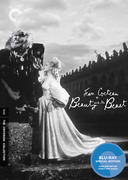
Beauty and the Beast
(1946)Jean Cocteau
9If only all romances were like this. Until you love the Beast, and the Beast adores you, you have no idea what erotic yearning and sacrifice could amount to.
#2 in Susie Bright’s Top 10Uh . . . 1946. How is this movie possible? All the steam, the fades, the technical effects that would be passé today were then revolutionary. And that is exactly what Cocteau was. Revolutionary. All the little smart creations: chandeliers held by arms through walls, the mirror’s powers, the pearls magnetically drawn to the hand, their flying at the end. Nineteen forty-six! Loving this film is probably a radical statement of sexual identity. I know that. Whatever. Nineteen forty-six. Yes, that is correct.
#8 in Xavier Dolan’s Top 10Jean Cocteau at his romantic and slightly camp best, playful, poetic, showing how the lowest budget can be transformed into magic and a film that is unforgettable.
#7 in Christopher Hobbs’s Top 108. I saw this film in college, and I’ve never been the same since. It’s a bit slow in parts, but the imagery is so surreal and magical that I copied the look many times in some of my own films. The art direction is a masterpiece.
#8 in Bill Plympton’s Top 101. Beauty and the Beast serves as a metaphor for the artistic process, exploring the creative through mythology and the arc of the fairy tale. One must travel to dark and mysterious places in order to be saved. Diamond tears, spilled for those brief and elusive moments in life, offer a glimpse of universal clarity. This movie, in its own way, displays a sense of perfection . . . but it is fleeting, as if seen in a rearview mirror. Ultimately, it is an instruction manual on how to fall in love with another, with oneself, and with true beauty. Cocteau never suggests that all fairy tales end happily ever after, and maybe it is better this way.
#1 in Rodarte’s Top 10A glorious version of the French fairy tale that puts others to shame. The imagery is powerful and fantastic, and Cocteau’s screenplay dramatically illustrates the transformative power of love.
#1 in Andrew Weil’s Top 10 -
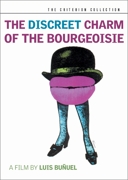
The Discreet Charm of the Bourgeoisie
(1972)Luis Buñuel
9The great Buñuelian diptych on the oddity of the Western social meal ritual, which of course is merely a filter with a distinct mesh dense enough to catch human absurdities big and small, perverse and banal, greedy and self-delusional. Surrealist is such a silly, debased, and inadequate term for full-flower Buñuel; in fact, the best Mexican and French films are birds of paradise belonging to their own exclusive breed. You can put them only in cages with Buñuel’s name on them.
#6 in Michael Atkinson’s Top 10We all know the deal: a group of people want to get together and do something simple—see a movie, drink some coffee, eat some dinner. But it never works out that way. That’s what Buñuel did here, but with greater stakes/steaks on the table. Levity and seriousness, the intrusion of the surreal into the upper crust, forcing a single question at the end: would anyone portrayed in the film actually watch the film? After all, each oneiric explosion in it is something the politesse class doesn’t speak of at the table: sex, death, religion.
#3 in Roger Corman’s Top 10Criterion has produced various Buñuel editions, and they’re all terrific. What I adore about The Discreet Charm of the Bourgeoisie is Buñuel’s rapier thrusts at the establishment, allied to an anarchic fury and surrealist imagination. I doubt that there’s a film in the collection that makes me laugh quite so much.
#3 in Peter Cowie’s Top 10A delicious incursion into the bourgeoisie. Flavorful performances, surprising turning points, incredible finale, and, as always in Buñuel’s cinema, a scrupulous care for details. And each of these contributes to the magic of the film, building a harmonious whole. A particularly droll, strange, and intellectual work about wealthy people.
#10 in Xavier Dolan’s Top 10Buñuel brilliantly satirizes the bourgeoisie in this disturbing yet hilarious film, which feels completely timeless.
#6 in Marcel Dzama’s Top 10My parents took me to see this at a young age, probably at the 68th Street Playhouse. Let’s see how many defunct art houses I can name throughout this list (although back then, they were just called movie theaters). I was a little too young to fully grasp the extent of Buñuel’s satire and his vast imagination. I recall being vaguely disturbed by the lack of a concrete (happy) ending, not to mention the feeling of discomfort brought on by “not getting it.” Both my parents loved Buñuel, and I am grateful that they had the good sense to drag me to many of the movies they wanted to see. My guess is that they probably didn’t want to leave me sitting at home in front of the TV set with a package of Yodels, a scenario I put myself in often enough despite their efforts. Ah, the thrill of growing up with (and not being shielded from) the most unusual and unsettling of movies. Actually, the Yodels were pretty good too.
#2 in Georgia Hubley’s Top 105. The only thing better than this great movie is Buñuel’s autobiography, My Last Sigh.
#5 in Tom Schnabel’s Top 10As I was a young film fan growing up in a VCR-less household in rural England, my access to international cinema was limited to whatever was playing on the (then) four channels of network television. Which basically meant that Sergio Leone’s Dollars trilogy and Jacques Tati were some of the only European films I saw until I was in my late teens.
#3 in Edgar Wright’s Top 10 -
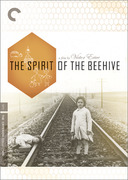
The Spirit of the Beehive
(1973)Víctor Erice
9I’ve given all these films to friends for enlightenment.
#16 in K. K. Barrett’s Top 10This was such a surprise. I had never heard of this film. The premise is original and poignant, and the performance by the little girl is mind-blowing. It is about the power that movies can hold over us. It delivers the wonders of childhood and the saving grace of imagination.
#1 in James Franco’s Top 10I’ve probably seen this film more than any other. Nestor Almendros turned me on to it when I was looking for a DP to shoot Iguana. He recommended Luis Cuadrados, but I soon discovered he’d died of a brain tumor, having shot Spirit while 95 percent blind. He had his assistant describe the sets to him, then told him where to place the lights, and the intensity of each. The film itself is one of the greatest homages to movies ever made, but it’s also a poignant study of that traumatic moment in everyone’s childhood when you discover the reality of death.
#1 in Monte Hellman’s Top 10I went to see The Spirit of the Beehive at Film Forum on a whim only a few years ago, when it was rereleased, and it immediately became one of my favorite movies ever. It opens with a town full of kids, all yelling “The movie’s here! The movie’s here!” while running alongside a truck carrying a print of Frankenstein to the church where it will be screened. From there, you are swept right into the life and story of a thoroughly compelling little girl with beautiful brown eyes, a sister, a cat, a big house, a fair dose of anxiety, and a lot of free time in stressful post-civil-war Spain.
#7 in Georgia Hubley’s Top 10Not a horror movie but a valentine to the imagination that hinges on one little girl’s need for an imaginary friend, who turns out to be Boris Karloff’s Frankenstein monster, stepped off the screen in rural Spain when a traveling cinema brings James Whale’s movie to town in the 1930s. Victor Erice’s study of childhood wishes showcases the huge eyes of Ana Torrent and grapples fascinatingly with the importance of fantasy in eras of repression.
#6 in Kim Newman’s Top 10Another beautiful movie beautifully packaged—seemingly a box of wonders fashioned by the two little girls from the movie.
#10 in Patton Oswalt’s Top 10This film is an epicurean delight: subtle, sensitive, and truly moving. This is a director in love with cinema.
#6 in Franc Roddam’s Top 10 -

Fanny and Alexander — The Theatrical Version
(1982)Ingmar Bergman
8The most beautiful ending to a feature film career in the history of cinema. And the most beautiful DVD box set in the history of mankind. I’m keen to find out who the designer of the box set was.
#2 in Bong Joon-ho’s Top 10Bergman as a fabulist—my favorite—is absolutely mesmerizing. These two films have the primal pulse of a children’s fable told by an impossibly old and wise narrator. Fanny and Alexander is Dickens, Hans Christian Andersen, and John Calvin rolled into one. Both tales are ripe with fantastical imagery and a sharp sense of the uncanny. Also, I am often surprised at how the humor and comedic elements in The Seventh Seal seem to be overlooked in favor of its reputation as a quintessential “serious” art film.
#5 in Guillermo del Toro’s Top 10All the depth of Bergman’s earlier work plus youth and joy.
#5 in Donald Fagen’s Top 10I thought that this was one of Ingmar Bergman and cinematographer Sven Nykvist’s most beautiful and haunting films.
#4 in Chris Hegedus’s Top 108. I love to luxuriate in this film and imagine what it would be like to be part of this extraordinary extended family. A great double bill with The Royal Tenenbaums!
#8 in Kevin Macdonald’s Top 10Through a Glass Darkly and The Silence strike me as two of the most psychological films ever made. The former dramatizes madness, and it doesn’t shy away from the despair and horror of the subject. It is equally fascinated by the way that lives are halted, turned, and redirected by tragedy. The Silence is possibly the most Freudian film ever made, a fever dream about the short journey from sexual ecstasy to absolute despair. Fanny and Alexander was Bergman’s Amarcord, a melancholy epic punctuated by moments of unexpected joy. It’s an incredibly rich film, a culmination of a life spent mastering film and theater. All three of these movies were shot by the great Sven Nykvist.
#8 in Greg Mottola’s Top 104. Bergman’s intended swan song offers amazing insight into the vision of one of the world’s greatest auteurs. Fanny and Alexander is a meditation on art, beauty, religion, and family. Personal history is both truth and fairy tale; it unfolds like a dream or a Swedish summer night where darkness never comes. In the end, Bergman asserts that one’s past has the power to both save and destroy. This idea is profoundly hopeful, and yet terribly devastating.
#4 in Rodarte’s Top 10 -
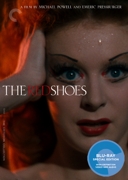
The Red Shoes
(1948)Michael Powell and Emeric Pressburger
8I’m cheating again by listing two movies together, but the contrast is too good not to mention. I’m a big admirer of the Powell and Pressburger films, and these two would have to be my favorites. Actually, I’d easily list Black Narcissus as my favorite. But The Red Shoes is so celebrated (by comparison) that I want fans of that film to experience the unique vertigo of Black Narcissus.
#9 in Mike Allred’s Top 10It was my daughter Tiffany who made me see the beauty of this film—she loved it so much as a child, and I think in many ways it spoke to her on the difficult choice for women artists between art and love, a calling of career and the calling of the heart.The Technicolor restoration of the film is stunning. This was one of the early titles in the Criterion Collection, and it’s just gorgeous. The DVD production was helped along with the loving hands (certainly one of my favorite pair of hands on earth) of film editor Thelma Schoonmaker, Michael Powell’s widow.There’s fantastic commentary with cinematographer Jack Cardiff and Ian Christie, as well as Martin Scorsese, a close, dear friend of Powell’s. And actress Moira Shearer gives such a wonderful account of the feelings of awe and fear of the dancers around working with living ballet legend Leonide Massine . . . and how in spite of this, she and Massine came to get on like a house on fire. He would fill her with the most amazing tales of his life in the last true golden age of ballet with the great dance impresario Sergei Diaghilev—I cannot even imagine what a thrill these hours of conversation must have been!
#10 in Allison Anders’s Top 10The fifteen-minute ballet sequence is so unforgettable. The cinematography is rich in a painterly, reddish-hued Technicolor. I resisted seeing this movie for years, thinking I wouldn’t be into it, but ended up completely absorbed and fascinated. Now I’ve seen it many times and still can’t get over how amazing it is. The ballerina played by Moira Shearer is torn between two men, and strangely, it’s the villain who I find myself rooting for.
#7 in Marcel Dzama’s Top 10Freely adapted from a story by Hans Christian Andersen. It’s a must for anyone interested in the art of film. It always seems to me a work of true madness about a descent into madness. Original and timeless, it’s also a glorious celebration of classical ballet and the pain and effort it takes to make it. The matchless beauty of Moira Shearer is captured by the cinematography of Jack Cardiff, and Anton Walbrook (as the impresario of the ballet company) gives an unforgettable performance, one that alone is worth the price of admission. The film is a transcendent experience, and the Criterion Blu-ray gives new luster to the imagery and sound. You need to see this, unless, like me, you’ve already watched it endlessly.
#6 in William Friedkin’s Top 10Hey, storytellers: if you’re adapting a classic, this is film school 101. Never before or since (though I love Black Swan for trying) has anyone achieved what Powell and Pressburger did here, in terms of character and theme. Add the beautiful work of Jack Cardiff and you achieve something of which I, personally, can only hope to replicate a glimmer as a visual storyteller in comics and animation: Technicolor atmosphere that conveys immediate emotion and also has a lasting impact.
#6 in Scott Morse’s Top Ten3. There are parts of this film that told me absolutely that I was going to make a film myself, even if I had no idea how. Particularly, things like having a real dancer play the dancer lead. A little twitch of documentary stirred in my head.
#3 in D. A. Pennebaker’s Top 10I’ve said and written so much about this picture over the years; for me it’s always been one of the very greatest ever made, and every time I go back to look at it—about once a year—it’s new: it reveals another side, another level, and it goes deeper. What is it that’s so special about The Red Shoes? Of course, it’s beautiful, one of the most beautiful Technicolor films ever made; it has such an extraordinary sense of magic—look again at the scene where Moira Shearer is walking up the steps to Anton Walbrook’s villa, especially in the new restoration: it seems like she’s floating on currents of sparkling light and air. And there’s no other picture that dramatizes and visualizes the overwhelming obsession of art, the way it can take over your life. But on a deeper level, in the movement and energy of the filmmaking itself, is a deep and abiding love of art, a belief in art as a genuinely transcendent state.
#2 in Martin Scorsese’s Top 103. I was also introduced to Michael Powell’s work during film school, and this one particularly blew my mind. I love when all the kids rush into the theater at the beginning to get good seats in the balcony. A title comes on-screen that reads, “45 minutes later,” but the shot never cuts or changes. From that point on, I knew I was in good hands. This film taught me that silent-film techniques could, and probably should, be employed in modern sound films. It has taken me several projects of my own to incorporate this lesson, but I’m getting there. I also love films about artists and the creative process.
#3 in Joe Swanberg’s Top 10 -

The Seventh Seal
(1957)Ingmar Bergman
8After a life of watching silver-screen idols and debonair ne’er-do-wells, this film came out like a punch to the sternum. It showed that film was not simply a convenient vessel for story and adventure but could say much deeper things about us, as if we were shifting pieces on chessboards . . . but also about death, about the Crusades, about fighting or playing for one’s soul. And what comes after it all: a credit scene, starring everyone important in your life? There’s more to it, more to this film than it lets on—and I’ve been thinking about it for years.
#10 in Roger Corman’s Top 10I’d be hard-pressed to exclude this towering giant of a movie from any list. It’s a film that marked the lives and careers of so many directors and critics of my generation. The miracle is that it stands up so well. The style is classical, the acting impeccable, and the soul of the film throbs and nags at us across the decades.
#1 in Peter Cowie’s Top 10I’ve always been fascinated by the beyond. This film explores life and death in a way that has been imitated since its release.
#6 in Flying Lotus’s Top 10An old myth retold by Ingmar Bergman: the story of the knight who cheats Death, one of the loss of faith, of redemption, of the triumph of innocence in the person of the holy fool and his young family. Although one might expect doom and gloom, there is comedy and great beauty, but mixed with a feeling of relentless fate. The shot of the dead reeling across the horizon in a macabre dance, though seen only briefly, must be one of the most famous images on film.
#4 in Christopher Hobbs’s Top 10Oh, there are so many better films I might have chosen; better Bergmans too. But this is the film that sparked my repertory movie theater habit—back in the days, kids, when there was no such thing as home video, much less the DVD. This was the film that opened up a big wide world beyond what’s-playing-this-week to a young teen, the film that convinced me that this world was worth driving an hour or two or more to sample again and again. For that—and, yes, for its much-parodied yet still powerfully iconic imagery—it’ll always have a place on that inner shelf bridging the heart and mind.
#9 in David Hudson’s Top 10I can’t say much about this that any film historian or earnest movie buff hasn’t already said, except that it astounds me with every viewing. It’s eye opening and deeply affecting.
#3 in Caitlin Kuhwald’s Top 104. A film that picks the viewer up and changes him forever. The first “art film” I saw, in a college screening, and I haven’t seen it since, perhaps not wanting to tamper with that memory. Memorable also for providing more parody fodder than any other film.
#4 in Whit Stillman’s Top 10 -
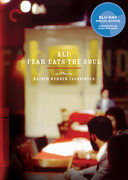
Ali: Fear Eats the Soul
(1974)Rainer Werner Fassbinder
8This crazy German took what Sirk had done to a whole new level with only five bucks in his pocket. There’s never been a more precise director working in the low-budget world. I love the delivery of every line here. Love has such small chances in a world riddled with bullshit, and Fassbinder proves that it can thrive only where tremendous kindness is exerted. Also, I will never shun couscous after watching this!
#8 in Miguel Arteta’s Top 10The lack of interest in Fassbinder’s work depresses the hell out of me. For me, he is the birth of the new. His high-concept stories, told in bold dramatic strokes and with vibrant colors, teach us about everything from class and racial politics to family responsibility and true love. His theatricality comes out of the Brecht mold, but it is new, it is melodramatic and involving and funny, often bitter and ironic, always with good humor, but, for me anyway, never cynical. He wears his heart and soul on his sleeve. He traverses the taboo, attacks intolerance, and loves his characters so much, even if at first they appear totally unappealing. Fassbinder is an original, and Ali: Fear Eats the Soul is one of his best films, made on the run like so many of his others. The world would be a better place if more people embraced movies like this one.
#9 in Michael Barker’s Top 10In 1974, when I was at the Berlin International Film Festival with Little Malcolm, I met Fassbinder. He was then making Ali: Fear Eats the Soul, which I think is one of his best films. It’s a wonderful observation of social and racial prejudice, and of youth and age.
#7 in Stuart Cooper’s Top 10I discovered Fassbinder senior year of college, and I couldn’t believe it. Both of these films are perfect to me. Ali tells a grotesque yet delicate love story that, to my dummy liberal arts mind, was an analogy for the challenges of a gay relationship in the repressed Germany of the 1970s (at least that’s what I said in my thesis). Maria Braun is the tragic, triumphant story of a woman who does what she must to get by, but loses herself in the process. They both make you wanna dress up and smoke opium and fuck people you meet late at night in a bodega, even if you’re not into that.
#10 in Lena Dunham’s Top 105.
#5 in John Lurie’s Top 10A middle-aged housewife’s desire, long before Desperate Housewives and so far away from its cynicism. Two desperate and tender films. From Jane Wyman to Brigitte Mira, from Rock Hudson to El Hedi ben Salem, from the United States to Germany, from the fifties to the seventies, a lesson in remaking.
#6 in João Pedro Rodrigues’s Top 10An homage to Douglas Sirk, among so many great films, this is one of Fassbinder’s most moving and near-perfect films. Starring the great Brigitte Mira, who appeared in many of his movies. —LR
#3 in Sonic Youth’s Top 10 -
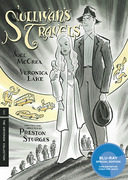
Sullivan’s Travels
(1941)Preston Sturges
8It’s simply one of the best films ever made—and it perfectly conveys everything you need to know about film. The scene of the convicts watching cartoons is a timeless, classic, and life-enriching moment.
#10 in Anthony Bourdain’s Top 10The most wonderful film about filmmaking ever. It makes fun of Hollywood and directors and studios, while writing the greatest love letter to Hollywood of all time. And most of all, it really, really makes you want to have sex with Veronica Lake. —RBG
#10 in Robert Ben Garant and Tom Lennon’s Top 10When we reopened Film Forum in a new theater, in 1990, this is the one I chose as the opening attraction for the repertory screen. One viewing will explain why.
#3 in Bruce Goldstein’s Top 10Sullivan’s Travels, along with The Miracle at Morgan’s Creek and Unfaithfully Yours, is my favorite Preston Sturges movie. I love how you can never guess where this story is headed. Then, when the ending and the message reveal themselves, it’s hilarious, ironic, and moving. And the documentary on Sturges on the Criterion DVD is priceless.
#16 in Bill Hader’s Top 10This film is a comic delight. Sturges is a master. Veronica Lake is unforgettable.
#6 in Chris Hegedus’s Top 10For most of the movie, you’re laughing and wondering, How could Preston Sturges not be as famous a funny filmmaker as Billy Wilder or Woody Allen? And then a turn in the third act seriously raises the stakes and the movie becomes a harrowing drama. If you haven’t seen it, I won’t ruin the end, but if you’ve ever tried to make anyone laugh, or found laughing your favorite sound in life, this is your movie.
#9 in Phil Rosenthal’s Top 10 -
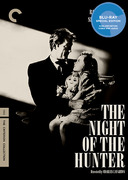
The Night of the Hunter
(1955)Charles Laughton
8A very theatrical construct of noir. Black humor, nursery rhymes, expressionist lighting, a zoological boat ride, Shelly Winters underwater, and Robert Mitchum cackling when getting shot. I can hear Charles Laughton chuckling in every scene. Best use of frightening artifice. If Mitchum only acted in one movie, if Gish only appeared in one movie, they should be proud for this to be the one. As it is, Laughton only directed one.
#1 in K. K. Barrett’s Top 10The two supreme works of childhood/horror. Lamentations of worlds lost and the innocents trapped in them. Sublime fairy tales of despair that depict the adult world as a toxic environment for kids to exist in. Secret treasures kept in the hearts of children must be safeguarded from the corruption of an adult world full of certainty and arrogance. Both films are so beautiful and so dark—they truly make me weep in awe.
#21 in Guillermo del Toro’s Top 10I was twenty years old when I first saw it. It terrified me then, and still does. The preacher, played by Robert Mitchum, is the most frightening psychopath I’ve ever seen depicted. This is the only film directed by Charles Laughton, and its haunting, over-the-top storytelling is reminiscent of Laughton’s own character portrayals. The poetic, expressionistic images are by Stanley Cortez, a true American master who I fortunately came to know many years before his death. Stanley photographed, among others, The Magnificent Ambersons and The Three Faces of Eve, in which his lighting is equally unique. The disturbing orchestral score is by Walter Schumann, who also wrote the Dragnet theme and whose music underlines and drives the horror the way Bernard Herrmann’s does in Psycho. This is one of James Agee’s rare screenplays—another was The African Queen—and it captures America in the Depression as well as did his book, Let Us Now Praise Famous Men, with photographs by Walker Evans. The film’s story is an American equivalent of the Brothers Grimm.
#1 in William Friedkin’s Top 10These wonderful films are tied together in thousands of hardly visible ways.
#25 in Aki Kaurismäki’s Top 10Charles Laughton’s only film as director, scripted by James Agee from the book by Davis Grubb. It’s a fairy-tale version of a crime-suspense drama, as two children are pursued through a magical, haunted landscape by a demented yet canny preacher (Robert Mitchum). There’s a grown-up story about a stash of stolen money, but Laughton’s masterstroke is to ignore that and present the human monster from the children’s point of view, as a remorseless bogeyman.
#3 in Kim Newman’s Top 10The Night of the Hunter is a perfect example of the strength of cinema, in which an image can say a thousand words, whereas in literature a word cannot show a thousand images.
#4 in Nicolas Winding Refn’s Top 10The most beautiful film ever made?
#3 in João Pedro Rodrigues’s Top 10When I first came to town, in 1989, I was hired to work on a sitcom starring Robert Mitchum. Yes, really. And at the first writers’ meeting, I mentioned to the more senior staff members that I was kind of excited to meet him. Well, most of the other writers had never seen Mitchum in anything, so I invited them over to watch a video of The Night of the Hunter, arguably one of the great pieces of art in movie history. It’s somewhat surreal and heightened and theatrical, and they laughed at it. I knew then I was in a world of trouble. It’s the only movie directed by Charles Laughton and one of the only screenplays written by James Agee. Mitchum is an evil “religious” fraud, and Lillian Gish is the embodiment of good. The movie scares you, then makes you cry at how beautiful it is. The sitcom was cancelled after seven episodes.
#6 in Phil Rosenthal’s Top 10 -
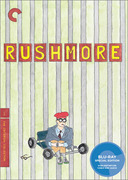
Rushmore
(1998)Wes Anderson
8The rest of the Criterion catalog! My final cheat. Even though I’ve yet to see every film in the Criterion catalog, I’ve yet to see one that wasn’t well worth watching. Having said that, let me sneak in Rushmore. Love that movie!
#13 in Mike Allred’s Top 10Wes Anderson’s films are delightfully strange and endearing.
#9 in Bong Joon-ho’s Top 10I cannot stop watching this film. I’ve tried. Yet Wes Anderson has created a fairy-tale world that is so timeless and awkwardly comfortable. Bill Murray and Jason Schwartzman portray one of the most endearing duos in years, with an ensemble of memorable characters surrounding them. Full of hilarious dialogue, a pristine song score, and Anderson’s imaginative eye—this will restore anyone’s faith in American independent filmmaking.
#5 in Matt Dentler’s Top 10It makes me feel great.
#10 in Chuck Klosterman’s Top 10It’s so lovingly conceived, every frame packed chock-full of beauty. Bill Murray is hilarious and tragic. Jason Schwartzman is a revelation. But the moment Miss Cross tells off Max Fischer, asking him what he thinks he’s specifically going to do with her if they get together, is one of the more chilling scenes put on film. After establishing a beautiful, borderline precious world where a precocious kid rules a storybook school, shit suddenly becomes real.
#2 in Nicholas Stoller’s Top 10This film and the Criterion label are synonymous for me. Its beautiful cover art and immaculate menus seem to fit perfectly with its lead character; it’s almost as if Max Fischer himself were unsatisfied with the original vanilla DVD release from Disney and produced a handcrafted one instead. The actual film is a brilliant gem by Wes Anderson, and one that still shines brightly today. Just in the past year, we’ve seen a number of films that walk in the shadow of this one. Of course, it wouldn’t have inspired so many movies, music videos, commercials, and TV shows if it wasn’t such a distinctive effort.
#7 in Edgar Wright’s Top 106. They are a really great team that’s into some bugged-out, esoteric shit.
#6 in Adam Yauch’s Top 10 -
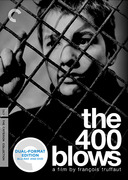
The 400 Blows
(1959)François Truffaut
8This is the definitive portrait of conflicted youth struggling toward self-identity. The final tracking shot of Antoine Doinel—running down the beach to the water’s edge, stopping, with no further escape route in front of him, then turning toward camera and freeze-framed with an optical zoom into his young and lost face—always brings me to tears. It is one of the most moving and deeply earned endings to a film ever made. It was Truffaut at the brink of his career, not yet the “Truffaut” to come, still the haughty Cahiers critic who thought that just maybe he could do it better than the films of the French “Tradition of Quality.” And he and his fellow Cahiers writers did do it better. Truffaut and Malle were the two humanist poles of the New Wave, with Truffaut most closely mirroring the mix of emotions that resided in the work of his mentor, Jean Renoir, whose own film . . .
#12 in John Bailey’s Top 10The most beautiful feature film debut in the history of cinema. I’m extremely curious about the abundant special features on the Blu-ray. I wish to explore every single one.
#1 in Bong Joon-ho’s Top 10The first time I fell in love. And felt loved in return. Basically, my childhood (with nuances, of course)—I’m sure I am not the only one who was wondering where in my house they had hidden the cameras. Léaud at the top of his game; he did create, with time, his own acting rules, his own school in his mind, and he opened the doors to many other actors and actresses. One never really says, “Léaud is so bad in this or that film.” No. It’s Léaud, that’s it. Plus, you can never think of anyone to replace him. Never. This film clearly does justice to its title. It blows us away. I don’t feel very original when I say that this is the movie that made me want to direct. And that reminds me all the time how much there is still to learn.
#4 in Xavier Dolan’s Top 10Watch this and Breathless together and you’ll understand what the big deal about the new wave was.
#5 in Bruce Goldstein’s Top 10Truffaut reportedly said his film was to be judged on its sincerity rather than its technical merit. The film is beautifully made, but Truffaut’s sincerity confirmed my path as a filmmaker. The 400 Blows strongly influenced my films Mini and Quadrophenia.
#1 in Franc Roddam’s Top 10For every lonely, mixed-up kid like I was, the great François Truffaut’s universal classic can still move and enthrall. Heartbreakingly sensitive without ever being sentimental. I believe Mr. Truffaut created the freeze-frame ending with this film, which has the effect of letting us consider what happens at turning points, and not just in Antoine’s life. And best puppet show ever in a movie.
#1 in Phil Rosenthal’s Top 101. It seems that any filmmaker’s first film idea is something about the mawkish predicament of a ten- or twelve-year-old child quite a bit like themselves—and usually their careers end with this choice (Sundance and other debut-oriented film festivals their final resting place). Truffaut took this dimmest of subjects and made one of the most radiant films of all time, in glorious black and white.
#1 in Whit Stillman’s Top 10It is remembered as one of the first French New Wave films. I remember the emotion when the last image of the film was a freeze-frame of the young boy protagonist.
#2 in Haskell Wexler’s Top 10 -

Nights of Cabiria
(1957)Federico Fellini
8Along with La dolce vita and I vitelloni, my favorite from Fellini. So much love and hope in the face of the bastards who seem to run this world. Masina is brilliant and PPP’s dialogues and understanding of the “wretched of the earth” are perhaps Fellini’s good karma for the gifts he brought Rossellini in The Flowers of St. Francis seven years prior. Daring, loving, and painful. Thank you for not ending this one at the sea, but instead on the road, with trees, music, tears, and smiles—a real carnival in the face of death.
#9 in Ramin Bahrani’s Top 10Giulietta Masina is absolutely lovable and hilarious as a street-smart prostitute trying to find love in Rome. Just like she did in La strada, she creates an extreme yet real character that you want to befriend even as she frustrates the hell out of you. But it’s her sweet toughness that makes you both laugh and suffer with her. It’s really a delightful film.
#6 in Paul Feig’s Top 10Fellini. Here it’s absolutely impossible to choose. What a gift to have such a complete selection of a great artist’s oeuvre. I had the pleasure of watching Fellini shoot a scene from City of Women at Cinecittá. I was flattered when he said, “Ah, you’re the young director I’ve heard so much about,” although I was barely younger than he.
#15 in Monte Hellman’s Top 10One of my favorite female characters in the movies. Only to be topped by . . .
#5 in Jaime Hernandez’s Top 105. Sad and heartbreaking but still a celebration of life and individual spirit. Giulietta Masina’s performance is beautiful—unforgettable. The ending will stay with you.
#5 in Seth’s Top 10An early Fellini masterpiece and a deeply engaging story about the triumph of the human spirit over adversity and betrayal. You will fall in love with Giulietta Masina. Her last scene is one of the most emotionally moving film sequences I have ever watched.
#6 in Andrew Weil’s Top 103. I don’t know what to write. I just love this movie.
#3 in Adam Yauch’s Top 10 -

Sweet Smell of Success
(1957)Alexander Mackendrick
7Few films handled Burt Lancaster’s unique brand of ceaseless virility as well as this release from 1957. Lancaster made many wonderful movies but at times almost seemed to be biting the camera lens with his crisp forcefulness. In Sweet Smell of Success, as in pictures like Birdman of Alcatraz, Lancaster sits on his patented intensity and delivers astonishing results. The gleaming, indefatigable J. J. Hunsecker is probably Lancaster’s best acting. Burnished. Terrifying. Add to that the wonderful costar turn by Tony Curtis, the photography of the legendary James Wong Howe, and a screenplay by Clifford Odets and Ernest Lehman. Fifties film noir at its best.
#2 in Alec Baldwin’s Top 10Perhaps the noirest of noir films, and for my money one of the three best American films of the postwar period (the others being Some Like It Hot and Sunset Boulevard). Featuring amazing performances from Burt Lancaster and Tony Curtis, and a knife-edge bitterness rare in any Hollywood film, it is at once a tribute to nighttime New York City and a devastating portrait of the power of a big-time columnist like Walter Winchell.
#8 in Michael Korda’s Top 10Tony Curtis as a terrible man and Burt Lancaster as something even worse, in one of the greatest showbiz movies ever made. James Wong Howe’s gorgeous cinematography and Elmer Bernstein’s jazzy score (with an assist from the great Chico Hamilton Quintet) all contribute to the alluring nocturnal Manhattan ambience. Alexander Mackendrick also directed great Ealing comedies, including The Ladykillers and The Man in the White Suit.
#14 in Greg Mottola’s Top 10This film, along with Expresso Bongo, for good or bad, helped shape my life into what it became. At the time I had no idea of the significance of it being filmed in the Brill Building. Suddenly, thanks to Sidney Falco, it was okay to hustle, it was okay to try and find a way out.
#1 in Andrew Loog Oldham’s Top 10In its perfect combination of directing, writing, cinematography, music, sound, and acting, this film is pure cinema.
#7 in Nicolas Winding Refn’s Top 10It’s a bold film, made by a bold filmmaker. Director Mackendrick’s defense of the artist and the individual against a corrupt and malevolent press and its metaphor for corrupt government remains ever pertinent. The dialogue, written by Clifford Odets and Ernest Lehman, is exceptional.
#7 in Franc Roddam’s Top 10The ultimate film noir that’s not about violent crime, it’s just character assassination at its most brutal. Tony Curtis and Burt Lancaster are beyond iconic in their performances; they become the embodiments of a rancid spirit that can sometimes be found in New York, in show business, in every business everywhere, where money talks and I’ll walk over your body to get some. “I’d hate to take a bite outta you, Sidney—you’re a cookie full of arsenic.” I like to say that to my wife.
#10 in Phil Rosenthal’s Top 10 -
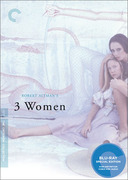
3 Women
(1977)Robert Altman
7Having lost Robert Altman in 2006, it’s so moving to hear his commentary on this wild, dreamy movie. I saw this film in the theaters when it was released and always loved it. I don’t care what anyone says, Robert Altman has directed more interesting roles for women than just about any director alive or dead.On his commentary, Altman reveals how all Millie’s diary entries, the menus she makes up for her “dinner parties” (which she’s “famous for”), and even her eye makeup were created by actress Shelley Duvall herself.I could never get enough of Janice Rule, and seeing her in this movie, so beautiful and soulful, I get the same ache as when I see Warren Oates on-screen . . . knowing they’re gone and I will never get that chance to work with either one of them. So Janice Rule’s performance here is all the more precious to me.Sissy Spacek is able to go from completely naturalistic to totally surreal . . . and still hold her character—it’s amazing. She was very young and novice at the time, yet she completely pulls it off brilliantly.
#3 in Allison Anders’s Top 10Robert Altman takes fragments of a dream and explores it as the launching point for this sun-drenched mystery on the slippery subject of identity. Together with his cast, he conjures up three odd desert flowers, Pinkie, Millie and Willie, and sets them spinning around in an oblivious fringe world colored with dusty yellows and monstrous swimming pools. Soon their flimsy personas begin to erode and reality starts closing in. What exactly the film is getting at about identity is a little murky (even Altman was admittedly unsure), but it’s a beautiful reminder that endings aren’t everything, and some things are best left to the viewer’s experience.
#1 in Philip Anderson’s Top 10This is, by far, one of my all-time favorite films of all time bar none. I have seen the film well over one hundred times, and I am always trying to get people to watch it with me. Funny enough, as I type this, I am in Bordeaux, France, at the first ever Bordeaux International Independent Film Festival. I was asked to pick one film that I loved that I could talk about, and, of course, it was 3 Women. The screening is tonight, and I am seeing if for the first time on 35 mm. I had seen VHS copies of the film prior to the wonderful Criterion version coming out, and, of course, I now see and hear things in the film that I have never known before Criterion brought that all in. The film has a magical quality. I experience new things and information about the film every time I see it. It’s like a recurring dream that I don’t mind redreaming over and over. It’s my favorite film in the world. I would love to do a one-off film festival somewhere called The Identity Crisis Film Festival . . . and show all films that I feel are similar to 3 Women, such as That Obscure Object of Desire, Persona, and Mulholland Drive.
#1 in Jonathan Caouette’s Top 10A comic-surrealist fugue from the social satirist—one that deepens with each viewing.
#6 in Jonathan Lethem’s Top 105. One of my all-time favorite Altman films, and clearly one of his strangest. I’ve seen it a bunch over the years, and I always see something new in it with each viewing. The idea for this came to Altman in a dream, and it’s fantastic that he took note and crafted this understated, surreal dark comedy from such a place. People just don’t make films like this anymore. Sissy Spacek and Shelley Duvall are perfect.
#5 in David Markey’s Top 108. A creepy and creeping tale of the female crush, and a study of the dependence and identity theft women can spring on each other, all rendered in a weirdly seductive pastel palette.
#8 in Leanne Shapton’s Top 10 -

M
(1931)Fritz Lang
7Timeless stuff that works on all levels. You can choose to experience this movie either as if you were living during a turning point in the twentieth century (Weimar Germany) or as an immersion into a fantastical world that only the best of movies can offer. M is both intellectually deep and a crackling entertainment—chilling, suspenseful, darkly humorous, and rich (in plot, characters, and visual design). There is also a terrific audio commentary by two German scholars.
#1 in Michael Barker’s Top 10In my drawings, I’ve been basing characters on Peter Lorre ever since seeing M. There is something so intriguing about a pathetic character. And no one has ever been this villainous and pitiful. He is one of my all-time favorite screen characters. I still get alarmed if I hear someone whistling “In the Hall of the Mountain King.”
#9 in Marcel Dzama’s Top 10No filmmaker gets under my skin more consistently than Fritz Lang, and while M lacks some of the paranoid extravagance of his silent fantasies, it is flawless. Peter Lorre ingeniously incarnates the evolution from lizard to man, and the director’s every shot and sound underscores the excitement of cinema in the process of discovering its own power. One of the disc’s extras finds Claude Chabrol unsuccessfully attempting to mimic a Lang camera move. The new Criterion print, with a corrected aspect ratio and restored fade-out line, burnishes the film’s deathless vitality.
#1 in Gary Giddins’s Top 10It’s been years since I’ve read Patrick McGilligan’s Fritz Lang: The Nature of the Beast, but if I recall correctly, toward the end of his life, Lang was coming around to the conclusion that M would be the best film he ever made. If so, I certainly wouldn’t argue with the man. If he were making films today, Lang would probably be known as something of a geek. An artsy geek, maybe, but one with, besides a remarkable sense of composition, a penchant for state-of-the-art technology, its possibilities and implications. Which makes the use of silence in his first talkie all the more impressive. The other major asset M’s got, of course, is Peter Lorre.
#2 in David Hudson’s Top 10Anguish and hope, and Peter Lorre’s sterling performance.
#9 in Christa Lang-Fuller’s Top 10It was a toss-up between this, Pickpocket, and The Passion of Joan of Arc, all of which develop along pronounced geometric lines that play beautifully on my boxy old Sony Trinitron. I kind of miss square media formats.
#6 in Nathan Lee’s Top 10German expressionism, thinly veiled indictments of the growing Nazi menace, some of the sleekest camera work on record, and Peter Lorre’s groundbreaking portrayal of a child killer who you nearly find yourself rooting for. An unshakable experience.
#7 in Dennis Lehane’s Top 10 -
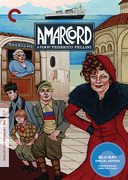
Amarcord
(1973)Federico Fellini
7It’s difficult for me to be analytical (or even articulate) about why I love Amarcord. It’s my granddad’s favorite film, and for my money one of the most beautiful ever made.
#4 in Rian Johnson’s Top 10This charming glimpse of the lives of the residents of a small Italian town paints a well-balanced picture of Fellini’s hometown. The characters are funny and unique. The stories are original. And the teenagers are as obsessed with sex as I was. :)
#6 in Dominic Monaghan’s Top 10No other filmmaker’s movies have reached me as directly and deeply as Fellini’s. I’m very familiar with the criticisms that have been leveled at Fellini’s work—and they hold no sway over me. There’s far too much to say about the films on my list, so here are a few random things I love. The White Sheik: Alberto Sordi’s hilarious faux suavity while trying to seduce a naive provincial woman. I vitelloni: Franco Fabrizi’s pathetic lothario, Leopoldo Trieste’s deluded would-be writer, Alberto Sordi’s sad, daydreaming freeloader—Fellini sees all of these aimless young men with great honesty and tenderness. Nights of Cabiria: the heartbreaking final scene, a woman stripped of all physical and spiritual worth yet somehow still able to find consolation in the very innocence and joy that have been denied her. 8½: I can’t think of another black-and-white movie that has so much white. The high-contrast cinematography is breathtaking. In one flashback to childhood, Guido is being bathed and cared for by various aunts. It’s a child’s experience of maternal love that cannot be re-created in adult life—as Fellini later illustrates with a twisted version of the same scene in Guido’s absurd harem fantasy. Fellini always claimed the movie was a comedy, and I tend to agree. Amarcord: Fellini revisits the same territory as I vitelloni but in his later, color-saturated, theatrical style. It is provincial life described by a highly unreliable narrator, where the mundane transforms into the magical. A few indelible images: lonesome boys waltzing to music from a nearby grand hotel, townspeople carting their old furniture to the square for a massive bonfire, the immense luxury liner Rex, Gradisca’s sad little wedding, the floating dandelion puffs that mark the return of spring . . .
#5 in Greg Mottola’s Top 10God, I love huge breasts, and this one’s got two of the hugest-est. Also, it’s a coming-of-age teen sex comedy, but with fascism! Also, the boobs.
#3 in Patton Oswalt’s Top 109. This movie is almost a complete inversion of Louis Malle’s Au revoir les enfants, where the horrors of Vichy France are made all the more terrible juxtaposed to the innocence and ideal of youth. Here, you have the violence of Mussolini and terror of Fascist Italy completely erased by the antics of a bunch of horny teenagers. This film is visually gorgeous; the scene where the peacock flies in the snow always stays in mind. What makes this film so interesting is the notion that idealized beauty is not enough—visual beauty is grounded by the humanity and sometimes fallibility of the characters.
#9 in Rodarte’s Top 10As a screenwriter first and foremost (and a director with little to no innate visual sense), I tend to prize narrative and story over most other elements in film. Amarcord arguably has neither. And yet I love it. I want to live in this town, wander among these streets, live with these characters. It also has an oddly casual sense of horny humor that remains surprisingly shocking. A throwaway moment of a car full of teenage boys masturbating never fails to make me laugh out loud. It also revels in odd details—a priest smelling his fingers, for example. It’s so gross. And yet so awesome.
#7 in Nicholas Stoller’s Top 10 -
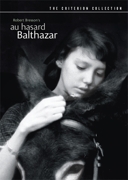
Au hasard Balthazar
(1966)Robert Bresson
7We watched Au hasard Balthazar last night and loved it and also Donald Richie. You hate to see that poor donkey die. He takes a beating and presses on, and your heart goes out to him. Also, Mouchette is terrific, which we watched last week. It’s a rare option, of course, to be able to ask Jean-Luc Godard to cut your trailer.
#2 in Wes Anderson’s Top 10One lesson after another from the master to all his students. A film that makes you ashamed to be part of the human race, and then fills you with the courage to be better.
#7 in Ramin Bahrani’s Top 10I’ve limited myself to one film per director—otherwise my list might easily have included every Bresson film in the collection. I’m always struck by the sensation that I’m seeing a Bresson film for the first time no matter how many times I’ve seen it. I never remember plot points or performances, just a lingering feeling of having a profound experience. Through Balthazar the donkey, Bresson shows us that there is beauty and dignity in all that makes us human—from kindness to suffering. There is no way to top Godard’s quote on the film—“The world in an hour and a half”—so I won’t even try.
#2 in Dave Filipi’s Top 10Saw this at a Bresson retrospective at MOMA, popular dinner spot of many of NYC’s finest moviegoers. And who knew dinner could be so work-intensive, demanding to be unwrapped and rewrapped several times over? Now that I have Laurie Bird on my mind, I am seeing her resemblance and similarity to Balthazar’s Anne Wiazemsky. Maybe these two films have more in common than I would have thought. Both involve brown hair with bangs, drifters, and modes of transportation, although in the case of Balthazar the real tragic, beautiful victim is the donkey. You just don’t get more beautiful and tragic than a donkey. Let it be said that I did not liken James Taylor to a donkey.
#6 in Georgia Hubley’s Top 10This film changed my perspective on filmmaking forever. The beautiful and unique imagery and the way music and sound are integrated into the story are completely original. The ending is the best and most poetic I have ever seen. Bresson understands filmmaking in the most economic and profound way. He is as great a filmmaker as Fellini.
#4 in Mary Ellen Mark’s Top 10 -

By Brakhage: An Anthology, Volume One
()Stan Brakhage
7Stan Brakhage looked at film in a way that was exciting for me. He was never hampered by traditional storytelling or theatrically crafted scenes. Or even by cameras themselves. The images in his groundbreaking films set my imagination free to look at the medium in a new way.
#4 in Frederick Elmes’s Top 10Crazy-ass experimental filmmaker who has given me plenty of ideas for my own personal work. This collection was put together beautifully, with the attention to all the fine details that it deserves.
#9 in Flying Lotus’s Top 10“I believe more in the scissors than I do in the pencil.” —Truman Capote
#5 in Iron and Wine’s Top 10Of all the titles in the Collection, this may be the one whose content is most radically altered by the shift from film to video, projection to electronic display. What’s lost in translation—flicker, physicality, the sheer thingness of a Brakhage film flung through space—is made up for by our ability to study the intricate compositions, structures, and rhythms in detail. Taken frame by frame, it’s like owning a Brakhage monograph with 350,000 plates. Is Commingled Containers the most beautiful of all films? Yes.
#5 in Nathan Lee’s Top 104. The idea of Stan Brakhage’s films being transferred to DVD once seemed heretical. The preeminent avant-garde filmmaker of the past half century, Brakhage made hundreds of intense films, many of them silent, that seem to be pure celluloid expression—poetic visual studies based on the play of light, tactile editing, and frame-by-frame editing. He worked mainly in 16 mm, but also made movies that were painstakingly hand-painted onto IMAX-size frames. Yet shortly before his death, Brakhage embraced the idea of a Criterion set, acknowledging the reality of a future (okay, present) where his films were more likely to be seen by an individual, perhaps on a laptop, rather than projected in 16 mm to a small film-society audience. The ability to study Brakhage’s films frame by frame, and to read Fred Camper’s superb commentary, also enhances the experience, easing the bittersweet film nostalgia for die-hard celluloid purists.
#4 in David Schwartz’s Top 102. I was exposed to Brakhage’s films during college, and like most cocky film students who want to make narrative work, I thought it was bullshit. I wanted to make real movies, and I had no idea what this stuff was—it seemed like anyone could just fuck around with a strip of film and some paint and point the camera at different shiny things and make a movie. What was the point? And what could anyone possibly see in the work? Those questions are still worth asking, but I’m asking them with an open mind now, and it’s thanks to filmmakers like Brakhage, who were brave enough to experiment. I don’t love all the work, but I love exploring it.
#2 in Joe Swanberg’s Top 10 -
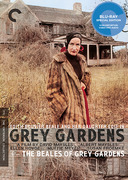
Grey Gardens
(1976)Albert Maysles, David Maysles, Ellen Hovde and Muffie Meyer
7One of the most terrifying and beautiful films ever.
#6 in Jonathan Caouette’s Top 10Maysles double feature! I was reminded of this one the other day when I encountered a large female raccoon in the middle of Los Angeles. As she licked her paws with urbane nonchalance, I thought to myself, “Holy crap, Big Edie and Little Edie had one of those living in their wall. Hard-core.” I love how ceaselessly imaginative Little Edie is. “Staunch character” indeed. She’s like a fabulous nun in a one-woman order. And Big Edie is dry-as-a-bone hilarious. I don’t view this as a tragedy. There’s probably a Grey Gardens on every street in America.
#6 in Diablo Cody’s Top 10This film actually frightens me, and that’s saying something for a documentary made some thirty years ago. The Maysles brothers and their team crafted a glimpse into the dark and dysfunctional world of the American family and a failing American dream.
#2 in Matt Dentler’s Top 104. The documentarians David and Albert Maysles found some real-life Tennessee Williams characters in Edith and Little Edie Bouvier Beale, mother and daughter eccentrics holed up for years in a sagging, cat-and-raccoon-infested mansion in otherwise grand East Hampton. The ladies’ kinship with cousin Jackie Bouvier Kennedy explains their old-money sense of entitlement, but nothing can explain why two people would want to hammer away at each other for decades on end the way these two trapped souls do. Except that maybe you’d do the same thing under the same circumstances. I’d like to think I would, anyway.
#4 in Guy Maddin’s Top 104. I have yet to see the Broadway production, but it warms my heart to know this brilliant documentary from Albert and David Maysles has inspired such a thing. An example of how a personal relationship between the filmmaker(s) and subject can in fact benefit the film itself. Fascinating, funny, and sad.
#4 in David Markey’s Top 10 -

Black Narcissus
(1947)Michael Powell and Emeric Pressburger
7A film that is the cinematic antipode of The Battle of Algiers. Photographed by the great Jack Cardiff, designed by Alfred Junge (both of whom received Oscars for their work here), this film was considered by Michael Powell to be the “most erotic” of all his films. That it takes place within a community of nuns gives his claim a deliciously profane edginess. It is the film that made me first realize how much cinematography can and should contribute to the emotional, dramatic thrust of a movie. It was also a great influence on my own film, the never released Mariette in Ecstasy, a bittersweet experience that made me realize how much more freedom I would always have as a cinematographer than as just another struggling director trapped in the Hollywood system.
#2 in John Bailey’s Top 10For me, this is the greatest of Powell and Pressburger’s films. The lipstick, the bell ringing, the repressed sexuality—maybe it’s because I was once an altar boy, but I find this incredible film hard to get out of my mind. It’s like a strange, feverish dream.
#3 in Andrew Haigh’s Top 10It is hard to believe that this film about a nunnery in the Himalayas was filmed entirely at Pinewood Studios outside London. We are used now to entirely digital sets, but Alfred Junge’s designs and Jack Cardiff’s wonderful lighting and camera work are dazzling, the illusions spectacular. Add to this a gripping story beautifully acted and directed, despair, passion, and madness; you can’t lose.
#9 in Christopher Hobbs’s Top 10The most purely beautiful film I can think of and done up in a pristine transfer here; the fact that the film was shot at Shepperton Studios, in England, actually blows the mind. The acting is impeccable, and the fevered colors and close-ups are as close to a cinematic wet dream as I ever need to have. Powell and Pressburger in the throes of a most singular cinematic vision.
#11 in Neil LaBute’s Top 10The COLOR. The passion. The radiance of that blue room. The Archers’ hermetic creation of the Himalayas in a studio and garden in England.
#7 in Angus MacLachlan’s Top 108. A bunch of nuns move into a wind-addled old pleasure dome in the Himalayas and have trouble remembering their vows. The air is set aquivering by the most innocuous male approach to their world—even Sabu seems to shake their virginal resolve. And even I have trouble keeping my priest’s collar straight as the unspoken pressures build up to boiler-breaking levels. Technicolor at its most eye-popping!
#8 in Guy Maddin’s Top 10 -
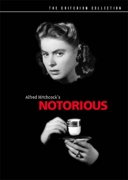
Notorious
(1946)Alfred Hitchcock
7Our Man of Desire torturing us again with the cruelest of films.
#7 in Pedro Costa’s Top 10This beautiful high-def transfer has made me see the movie with fresh eyes. I’m now convinced that Ingrid Bergman’s performance is arguably the greatest female performance in the history of cinema. Cary Grant’s no slouch either. It’s my favorite Hitchcock. Leaving the highball glass on the chest (breast) of the passed-out party guest is on a par with putting the cigarette out in the jar of face cream in Rebecca. I must say, though, that the new transfer of The Lady Vanishes is pretty amazing as well.
#3 in Monte Hellman’s Top 10There’s a sultriness about Notorious that puts it over the top for me: the lighting, the compositions, the way the camera walks you through the plot by emphasizing the incredible acting. Even after all this time, and after repeat viewings, this ensemble continues to reveal new bits of cinematic love. The understated score adds something unique as well, but really, that pivotal push-in to the wine cellar key is what it’s all about. Bold, elegant style.
#4 in Scott Morse’s Top TenAside from being suspenseful, inventive, and ridiculously entertaining, it contains the single greatest kissing scene in cinema. Also, the final ten minutes are perfect. This movie is a master class on how to imply something truly erotic without showing it.
#12 in Greg Mottola’s Top 10Hitchcock’s best movie? It certainly is as close to perfect as you can get. Brains—the story, dialogue, and direction. Beauty—Ingrid Bergman and Cary Grant. Plus, thrills, romance, uranium, and Nazis. And another laugh line I’ll never forget, from Claude Rains’s mother to him: “Luckily, we were protected by the enormity of your stupidity.”
#7 in Phil Rosenthal’s Top 109. The charms of the other Hitchcocks—I would like to have included The 39 Steps but don’t have the room—to which are added an atmosphere of such intense passionate tension and threatened betrayal, as well as a cast of archetypal beauty.
#9 in Whit Stillman’s Top 1010. Arguably Hitchcock’s most perfect (but not necessarily most profound) movie, in which every shot, every look counts, and Grant and Bergman achieve sublimity.
#10 in Robin Wood’s Top 10 -

Monterey Pop
(1967)D. A. Pennebaker
7Most people think that the concert at Altamont was the antithesis of Woodstock. But one of my students at UCSB recently commented that you could tell a lot about what went wrong at Altamont by watching what went right at Monterey. I couldn’t agree more . . . It’s fascinating to watch both of these films and compare what happened just a few years and less than a hundred miles apart.First off, Monterey Pop, which may be my favorite of all Criterion DVD packages. The booklet is printed on nature-rough hippy-grade paper stock that you would have first encountered on the streets of Haight-Ashbury, in the form of a free press or psychedelic poster on a telephone pole, and later on your thrift-store coffee table with a pile of pot about to be rolled next to it! Yes, it is this evocative!The DVD box set includes amazing outtake performances with Laura Nyro, Quicksilver Messenger Service, TINY TIM (!), and Buffalo Springfield . . . and another DVD, Jimi Plays Monterey and Shake! Otis at Monterey, contains the complete performances by Jimi Hendrix and Otis Redding (with commentary by the ever-enlightening Peter Guralnick, who knows the history of Memphis musicians better than anyone alive).The accompanying doc of a conversation between record producer Lou Adler and filmmaker D. A. Pennebaker is such a coup—not only do you hear how the concert came together and how it was organized during the entire event, but you also get to hear Lou Adler’s story. A lot of people don’t know (although smarty-pants me did) that Adler started his music career with Herb Alpert, as songwriting and producing partners . . . and he has awesome stories of Paul McCartney hanging out at Cass Elliot’s house in Laurel Canyon . . . There’s endless music-nerd gold like that!The color in the film is all that psychedelia had to offer—vibrant, otherworldly, and hyperreal. There’s an innocence throughout Monterey Pop that exceeds the “positive vibes” of Woodstock a few years later and that is of course completely nonexistent in Gimme Shelter. You can also see in Monterey Pop the cops in the crowd (who were replaced by Hells Angels at Altamont) and SEATING! My student pointed out there were folding chairs on the lawns at Monterey—very civilized. Now that wasn’t throughout the concert grounds, but it was more in the tradition of the Newport Folk Festival than the mayhem to follow in Altamont. Also like Newport, the performers were in the audience—they were not in some rarefied backstage area, cut off from the fans or their fellow performers—and you get to see the moment when Mama Cass Elliot in the audience has her mind blown by the powerful performance of young Janis Joplin.There’s a fabulous interview with Papa John Phillips, who cofounded the event with Adler, and a gorgeous photo exhibit by photographer Elaine Mayes.Gimme Shelter director Albert Maysles was one of seven cameramen on Monterey Pop. And I need to point out that you do see a few Hells Angels on the lawn toward the end of Monterey Pop. So the Angels already had a presence at large outdoor rock events that far back.I’ve talked to a lot of people who were at Altamont as performers, friends of bands, and audience members, and the consensus is that nothing in this film was manipulated in the least: the vibe was bad from the very start, and the filmmakers didn’t create that in the editing room. Interestingly, the film is shot much darker than the saturated colors in Monterey Pop—but then again colors were becoming less vibrant in pop culture and fashion at that time too.But interestingly—here you have some of the same players—you have Jefferson Airplane, who are almost humble on the Monterey Pop stage (despite the fact that Grace Slick shows off her powerful rock pipes at Monterey—she was the first true female rock singer and very underrated in my opinion), having to stop their set at Altamont when singer Marty Balin is dragged off the stage and beat up by the Hells Angels. The Grateful Dead play a soothing jam at Monterey and don’t even make it to the stage at Altamont. Chris Hillman with the Byrds plays an evening set to the Monterey audience, and in Gimme Shelter his band, the Flying Burrito Brothers, only get two songs done before the mayhem drives them off the stage at the Speedway.Watching Charlie Watts listening to the interviews with the promoter and with Hells Angel Sonny Barger makes Watts your favorite member of the band if he wasn’t already . . . His quiet devastation over the murder at his band’s concert is profound to witness (and you do feel as though you are let in on a very private event).Some of my favorite stuff in the film has always been the footage from Muscle Shoals Recording Studio in Alabama. I love the footage of the band listening back to the tracks for Sticky Fingers and glimpses of the studio team we had all at the time only seen occasionally on record covers of Aretha or a few other artists who had recorded there. I could be wrong but I think that’s Muscle Shoals Rhythm Section drummer Roger Hawkins listening to playback with Keith Richards.Amy Taubin and Stanley Booth are among the writers who contribute outstanding, insightful essays about the film and the event and its larger meaning to the so-called “death of the sixties.”These are two of the three best concert films EVER made! Ever.
#8 in Allison Anders’s Top 10Anyone who knows me is aware that I am obsessed with rock and roll. I have thousands and thousands of LPs, CDs, and shelves of DVDs. Monterey Pop is one of the DVDs that I play the most, especially the disc featuring Jimi Hendrix and Otis Redding. Hendrix is a guitar colossus so relaxed during his first American concert that he’s chewing gum. I love his groovy raps, the intro to “Like a Rolling Stone.” One of my all-time favorites, Otis Redding, with Booker T. and the MG’s, plays a ferocious and ultratight set that to me says that this is one of the greatest groups of all time, at their absolute peak. Months on the road hone “Shake” and “I’ve Been Loving You Too Long” into a pair of definitive performances. The box set allows us to witness the beginning of the era of great live rock. All the bands are about the same age and at the same point in their careers, all facing a similar aesthetic problem. Formed in dance halls and clubs around the U.S. and Britain, they were trying to capture the excitement and power of their live performances on LP. The camera captures them in the moment of creation, playing for the approval of each other. Their sincerity, honesty, and devotion to the musicianship could not be any more different from the state of music today. For me the glorious catharsis of the Who’s “My Generation” is one of the things that make life worth living.
#10 in Allan Arkush’s Top 10Great documentaries happen when the filmmaker is lucky enough to be there at the rare moment in time when things are changing. Monterey Pop captures the music but also that innocent moment in the sixties.
#9 in Chris Hegedus’s Top 10With its exquisite packaging, reminiscent of old rock posters with a subtle Hatch Show Print letterpress homage (even using a textured paper), this boxed set is a treasure. I was especially thrilled to find extra footage of songs and bands that were left out of the original film. This footage is a time capsule of California (and American) culture in the sixties, that as a Californian, I find warmly nostalgic. There is so much gritty footage of the crowd, and of the various bands in preparation for the event—it humanizes them and makes these often idolized figures, seem real and accessible.
#1 in Caitlin Kuhwald’s Top 103. A film I only saw once, but I can say it probably was the biggest influence on my film 1991: TYPB. My favorite scene: Mama Cass on acid watching Hendrix. You can see her mouth go, “Oh, wow.” Indeed.
#3 in David Markey’s Top 1010. Because I’m an old hippie.
#10 in Al Reinert’s Top 10Take great care with this documentary film of an all-day concert staged by John Phillips in small-town Monterey, California, for it holds within it the greatest single performance by any electric-music instrumentalist you have ever seen, or are likely to: the U.S. debut of the Jimi Hendrix Experience. Known as the man who revolutionized the electric guitar, Jimi Hendrix appears onstage in this film a man possessed. As David Bowie sang in “Ziggy Stardust”: “He could lick ’em by smiling/ He could leave ’em to hang/ They came on so loaded, man/ Well hung and snow-white tan/ . . . He was the nazz/ With God-given ass/ He took it all too far/ But boy could he play guitar.” Never will you see a performance so sensual. There are many great films to be found of Jimi playing, but none to rival this. In Monterey Pop, there are many performances worth watching, seminal, even—Janis Joplin, Otis Redding among them—but they are all just warm-up acts to Jimi, the greatest rock-and-roll star to ever tread the boards.
#2 in John Taylor’s Top 10 -
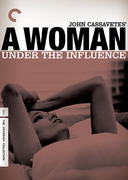
A Woman Under the Influence
(1974)John Cassavetes
7I have been under the influence of John Cassavetes and Gena Rowlands and their extended family in film ever since I saw a retrospective of Cassavetes’s movies at MoMA soon after he died. I could have listed any number of his films: Faces with Seymour Cassel and Lynn Carlin, Opening Night with Rowlands and Ben Gazzara, or Husbands with Peter Falk . . . it doesn’t matter. Each film is made with a love, passion, and style unique to John, and inspiring to the rest of us.
#10 in Steve Buscemi’s Top 10This is a film that I could deeply personalize with. When making my films Tarnation and the follow-up, Walk Away Renee, I easily recalled this amazing film in my mind’s eye. I have never seen a film depicting mental illness so raw and pure as this. The film is so real that one often feels that they are really, really eavesdropping on something. Amazing.
#10 in Jonathan Caouette’s Top 10This includes all of the films in the box set John Cassavetes: Five Films. I’m always a little leery of the routine critical construction “Without X, there would be no Y.” Surely Y would have come along; his or her work might have been a bit different, but he or she would have come along. But in the case of Cassavetes, it is difficult not to think of a whole talkative, financially strapped mob of filmmakers, some brilliant, some not so much, who very well might not have come along if he hadn’t, you know, blazed the path. Still, you don’t watch a Cassavetes film for its historical significance. These films are alive. How very well I remember my first, A Woman Under the Influence. I probably went in because I was a Columbo fan. Not only was I enthralled by a whole new Peter Falk; Gena Rowlands simply blew . . . me . . . away.
#1 in David Hudson’s Top 10“I wanted a perfect ending. Now I’ve learned, the hard way, that some poems don’t rhyme, and some stories don’t have a clear beginning, middle, and end.” —Gilda Radner
#8 in Iron and Wine’s Top 10Cassavetes’ movies to me are a kind of pure energy. He’s the very opposite of Ozu because he cared nothing at all about form. Yet for some strange reason, by not caring about form at all—he just went for it—this produced, in formal aspects, the same result as when you pay a lot of attention to form. His energy with actors can also be felt. In each shot, you can feel what he wants to tell us about story, and you get the feeling that this has to be acted now, shot in the very moment. I would say it’s possibly something very American. This pure energy of making is very American, and it’s very optimistic.
#6 in Götz Spielmann’s Top 10 -
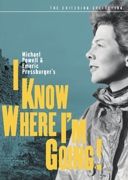
I Know Where I’m Going!
(1945)Michael Powell and Emeric Pressburger
7I remember being thrilled by the way this film begins. Actually, the whole movie is charming. Michael Powell is one of the best.
#7 in Chris Hegedus’s Top 10My wife worked with Michael Powell, and treasures this as her favorite movie. Although I am genuinely fond of the film, it did not make my first cut. Upon reflection, however, its inclusion seems prudent.
#9 in Ricky Jay’s Top 10Powell and Pressburger’s most enchanted and fresh film, storm-tossed and full of gothic romance.
#3 in Jonathan Lethem’s Top 102. My wife fell for me when she realized that my grandfather wrote this one. Some of that romantic spirit must have been genetic, she hoped.
#2 in Kevin Macdonald’s Top 105. This was the first Powell film I ever saw. I saw it when it first came to New York, where it played for only a few days in its initial run, or so I figured when I tried to go back and see it again. I fell in love with that film, partly because of where it took place, partly because of who was in it, partly because of the way the music slipped in and out of it, and mostly because I could see that Michael Powell, whoever he was, was my leader. Years later, when I finally met him (I was trying to make The Riddle of the Sands with him, but couldn’t raise the money), I spent an entire lunch recalling all his lines from I Know Where I’m Going! In the face of my slavish foolishness, I remember he was most gracious.
#5 in D. A. Pennebaker’s Top 108. My favorite Powell and Pressburger movie. It’s eternally fresh, unpredictable, yet perfect in its apparent digressions.
#8 in Robin Wood’s Top 10 -
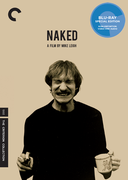
Naked
(1993)Mike Leigh
7Two words: David Thewlis. He gives one of those performances that you can’t believe actually exist. He is an absolute force of nature in this film, playing what is essentially an extremely unlikable character that you can’t help but be completely compelled by. It’s the most verbal movie since His Girl Friday, and experiencing the nonstop dialogue that comes out of Thewlis’s mouth is like witnessing all of the world’s greatest jazz artists playing a euphoric two-hour concert at once.
#5 in Paul Feig’s Top 10“I don’t know why we are here, but I’m pretty sure that it is not in order to enjoy ourselves.” —Ludwig Wittgenstein
#10 in Iron and Wine’s Top 10Quiet possibly my favorite ending of any film. Perfectly summed up in one beautiful, long, hopeless shot.
#7 in Brie Larson’s Top 103.
#3 in John Lurie’s Top 10I love Mike Leigh, and this is one of his best. A brutal character study, it’s a journey into the psyche of a man at war with himself and the world. Bleak, hilarious, and uncompromising. Also, the DVD includes Mike Leigh’s wonderful, demented short film The Short and Curlies (featuring another great performance by David Thewlis).
#16 in Greg Mottola’s Top 104. A bizarre love triangle of shot nerves, heavy sympathy, and bleak regrets. Katrin Cartlidge as Sophie is fearless; David Thewlis as Johnny is repulsively mesmerizing. It’s difficult to forget Mike Leigh’s characters.
#4 in Leanne Shapton’s Top 10 -
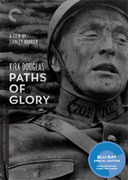
Paths of Glory
(1957)Stanley Kubrick
7Sitting on nearly everyone’s perennial list of the greatest antiwar films, Stanley Kubrick’s classic, set amid the ranks of a decadent French army command during World War I, offers breathtaking filmmaking on every level: acting, directing, writing, technical. A piercing Kirk Douglas shows up with his reliable blend of machismo and conscience. Veteran actors like Adolphe Menjou and George Macready are magnificent. However, Wayne Morris, Timothy Carey, and Kubrick regular Joseph Turkel bring a grit and suffering to offset the spit and polish of the debauched French commanders. Calder Willingham and the great novelist/screenwriter Jim Thompson wrote the script. The film features incredible photography by George Krause. Along with The Killing, Paths of Glory marks the critical onset of Kubrick’s now legendary career.
#5 in Alec Baldwin’s Top 10Pick one Kubrick—tough. Pick one of Kubrick’s films about war—still tough. But there is a unique quality of Paths of Glory that speaks not only about the power of war films as antiwar vehicles but also about the issue of war in general. That despite how much the methods men use to murder, maim, and mutilate have changed over the years, the truth of man’s inhumanity to man has been a sick constant, that barbed wire and bureaucracy are equal methods to delay and destroy, and that giving a face to the mounting numbers is as important now as it was in the past.
#7 in Roger Corman’s Top 10Kubrick was a fearsome intellect. His approach to filmmaking and storytelling remains as mysterious at it is compelling. The illusion of control over the medium is total. Both films speak eloquently about the scale of a man against the tide of history, and both raise the bar for every “historical” film to follow. Paths of Glory is a searing indictment of the war machine, as pertinent now as it was in its day. I suspect, however, that Kubrick was also a highly instinctive director, and that he grasped incessantly for his films. An anecdote tells us of him begging Kirk Douglas to stay in bed a few more days after an accident, because Kubrick was using the “downtime” to understand the film they were making.
#15 in Guillermo del Toro’s Top 10If 1956’s The Killing set the scene for a visionary new director, Paths of Glory, released a year later confirms it. Adapted from a novel that had appeared two decades earlier, the film has gained stature over the years. It is the darkest evocation of war ever filmed; you feel the pain, the fear and discomfort experienced by French soldiers engaged in a meaningless, suicidal battle with a faceless German enemy. The cast of American actors convincingly portray heartless French officers and outnumbered enlisted men. Kirk Douglas gives his best performance as Colonel Dax, as does Adolphe Menjou as Dax’s antagonist, General Broulard. You can see Kubrick’s early influences, Orson Welles and Max Ophüls, in his camerawork and editing style, but the film is totally original and powerful, and even has a touch of sentimentality in the final sequence. The famous tracking shots in the trenches accompanied by the constant drumbeat of bombs and artillery will remain in your memory long after you’ve experienced the film. The contrast between the high-living generals and the downtrodden soldiers is also a constant reminder of the folly and inequity of war.
#7 in William Friedkin’s Top 10All right, Stanley Kubrick was a genius, the master of the big, ambitious film that stuns the senses, like 2001: A Space Odyssey. But Paths of Glory is one of the last great triumphs of black-and-white filmmaking. It is also a tribute to the talent of Kirk Douglas, who here takes on the role of a French colonel in the trenches of the First World War with such explosive energy that one realizes how many films (and directors) were unworthy of Kirk’s genius as an actor—his first acting role, by the way, was onstage as the servant in Chekhov’s The Three Sisters, with Catherine Cornell, Judith Anderson, and my mother as the sisters and Ruth Gordon as the dreadful sister-in-law. Nobody has ever captured the First World War better on film (except perhaps for Jean Renoir in Grand Illusion, which is in a class by itself). A heartbreaking giant of a film, not a bad shot or a wasted frame in it; perfect filmmaking.
#4 in Michael Korda’s Top 10What starts as a seemingly normal black-and-white war movie becomes a tense hellscape only Kubrick could conceive of. Devoid of sentiment, this perfectly captures the nightmare of war, and World War I in particular. I made the mistake of picking this one for date night. My wife has yet to forgive me.
#9 in Nicholas Stoller’s Top 10This very early work by Stanley Kubrick is the most powerful antiwar film I know. Its emotional impact is overwhelming. Few people can watch the last scene without shedding tears. (The singer in it became Kubrick’s second wife, and they remained together until his death.)
#7 in Andrew Weil’s Top 10 -
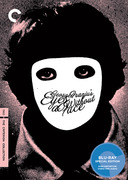
Eyes Without a Face
(1960)Georges Franju
6Georges Franju’s eerie, face-transplant melodrama has stuck in my memory since the first time I saw it as a freaked-out kid on late-night TV.
#2 in Anthony Bourdain’s Top 10Beauty and the Beast may be tenuous and delicate where Eyes Without a Face is overripe and pulpish, but these films are gorgeous, dark poems about fragility and horror. Both fables depend on sublime, almost ethereal, imagery to convey a sense of doom and loss: mad, fragile love clinging for dear life in a maelstrom of darkness. The clash of haunting and enchanting imagery has seldom been more powerful. Eyes Without a Face boasts an extraordinary soundtrack too!
#7 in Guillermo del Toro’s Top 10Georges Franju created a one-of-a-kind horror film that moves you more than it scares you. It has some of cinema’s most potent images and a score that haunts you for days. The Criterion extra of his short documentary Blood of the Beasts is spectacular beyond words—beautiful and disturbing in equal measure.
#8 in Neil LaBute’s Top 10A lurid mad-scientist drama—scripted by Boileau and Narcejac, also of Diabolique and Vertigo, and filmed by Georges Franju as a mix of surgical surrealism, hyper-graphic horror, raincoated French policier and Cocteau-ish magical romance. Edith Scob drifts through corridors in a blank white mask and a nightgown, and Alida Valli stalks her prey in a Citroën 2CV, accompanied by Maurice Jarre’s shuddery score.
#4 in Kim Newman’s Top 10I became obsessed with horror at a very early age. Knowing this, my dad would often recall the greatest horror film he ever saw. It was black and white, it was French, and it was, in his words, “really, really gory.” He would tell me it was about a mad surgeon who tries to restore the face of his daughter, disfigured in a car accident, by mutilating young women and stealing their fair skin. And he would go on and on about how great it was, how scary it was, and how I would simply have to see it. But . . .
#4 in Edgar Wright’s Top 10 -
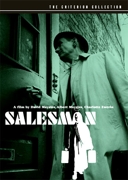
Salesman
(1968)Albert Maysles, David Maysles and Charlotte Zwerin
6In many ways the perfect double bill with Young Mr. Lincoln. Democracy in America, Part II. There is a lot of carbon dating at work in this movie (how an interior, a suit, a gesture spell class—as in middle or working—and the historic moment, 1969, in which these classes function); but this unfurling of specificity is there to give us its metaphysical sense and resonance (the essence of labor, its afferent solitude, the pathos of success). A lot has to do with the amount of space the frame encloses and how resolutely off center it chooses to remain. For all its relentless attention to the matter at hand, Salesman is never a claustrophobic film. It is a film that often goes one (or two or three) better on what a long line of American writers (from Dreiser on) have tried to pin down. Which might explain why Salesman often feels like a valentine to a time in film (and society in general) when work defined character, registering the cusp moment after which it will cease to do so. One can look at Salesman and weep when what rules as “documentary” these days comes to mind; one can—maybe naively—take the film as a perfect illustration of what the genre might still produce; one can celebrate the film as definitively proving the inanity of the dichotomy between fiction and documentary. I tend to go for the latter.
#6 in Jean-Pierre Gorin’s Top 10A classic direct-cinema documentary drama made with ordinary people, it demonstrated for me, early on, that even without celebrities documentaries can be as compelling as any fiction film.
#10 in Chris Hegedus’s Top 10The brothers Maysles offer up two of their most stunning documentaries, and, frankly, I can’t choose between them. Beautiful essays on what it is to be American and, more importantly, human; visually hypnotic and oddly life affirming. Did I mention that they’re also, by turns, hilarious and heartbreaking?
#2 in Neil LaBute’s Top 10Taking reality to levels of poetry that humble the viewer. Men blindsided by life, breaking your heart. Humanistic zooms. Compassionate handheld camera. The “greatest story ever told” no longer selling, no longer telling. End of an era, end of door-to-door, end of community, end of American dream, end of plot. The beginning of the future of cinema. Again. Working as a PA for the Maysleses, watching every film they made, discovering the cinematographer is sometimes the scene.
#9 in Oren Moverman’s Top 10 -

High and Low
(1963)Akira Kurosawa
6Akira Kurosawa made films covered in rich tapestries of Japanese history and charged with terrible violence and drama. Yet here, the contemporary and confined world of a rich industrialist (Toshiro Mifune) who is faced with an overwhelming decision is spare, cold, and objective in the extreme. Hideo Oguni, who worked on seven Kurosawa films, including Seven Samurai, wrote the screenplay based on an Ed McBain novel. Mifune, once again, shows why he is the Japanese Marlon Brando, Edward G. Robinson, and Gregory Peck rolled into one.
#6 in Alec Baldwin’s Top 10This is such a fiery and entertaining crime film. It’s epic yet completely domestic and simple. While it’s somewhat of a departure from his canon, Kurosawa’s stamp is everywhere. He manages to expertly adapt American source material and place it in Japan (the irony, of course, being that America would adapt his stories for years to follow).
#3 in Matt Dentler’s Top 10One of the greatest urban crime films ever made. The first hour takes place in an industrialist’s living room, with huge picture windows that look over the city without seeing it, yet Kurosawa’s camera work is so deft and inventive you never feel the constriction—only pummeling suspense and a moral quandary. Toshiro Mifune plays coat-and-tie decency as well as he does his wild men, and Kurosawa descends into the lower depths with blinding clarity.
#4 in Gary Giddins’s Top 10I love Kurosawa’s crime movies. The first half of High and Low is so well told, paced, acted, and shot—and it’s all in one room! Then you get into this fascinating police procedural where Toshiro Mifune and his family vanish and the cops take over. I mean, this movie has the “guy unloading crates while being questioned by the cops” scene that is in every Law and Order episode. Kurosawa’s influence is always being felt!
#1 in Bill Hader’s Top 102. It has a great setup, great characters, and a great theme. Kurosawa’s vision raised the film to another level.
#2 in Johnnie To’s Top 10 -
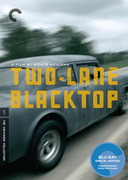
Two-Lane Blacktop
(1971)Monte Hellman
6Ah, the days when Hollywood harbored existentialistic realists, and the entirety of America—from its back roads and highway saloons to its hinterland betting subcultures, working-class desolation, gone-wild farm fields, and small-town cafeterias—was a metaphor for itself, and for all of our postwar lostness. Monte Hellman’s career peak is easily the greatest film I never even heard of as a film-hungry 1970s kid, vanished and hardly ever TV-broadcast, even as I thought the sobering, grown-up likes of Deliverance and Chinatown and Scarecrow were emblematic of an American cinema that had finally reached adulthood. Then came Star Wars.
#2 in Michael Atkinson’s Top 10Some films are peculiarly unique to their era. Where did actors like Warren Oates come from? Like with his solo burn in Bring Me the Head of Alfredo Garcia, he conducts this symphony of a race to nowhere all by himself.
#8 in K. K. Barrett’s Top 10Color me gone, baby.
#10 in Susie Bright’s Top 10Speaking of twisted, tragic, handsome, et cetera: Warren Oates is quietly the centerpiece of this picture. Or is it Laurie Bird? Probably Laurie Bird. She’s certainly at least as handsome and tragic. I may be conjuring up Warren Oates’s character in Monte Hellman’s more straight-ahead Cockfighter. This film is more passive. It rambles across scenic America, unconditionally picking up ramblers and spitting them out, while inviting you to aimlessly contemplate what it all means. I’m almost positive we stayed at that very Best Western in Albuquerque on tour.
#5 in Georgia Hubley’s Top 105. & 6. I spent the summer of 2002 in Los Angeles, interning for my uncle’s company. I rented a one-bedroom apartment with no furniture. Other than my inflatable mattress in the corner (which sprang a leak right away), it was just a big empty space. I had a suitcase, a guitar, and a laptop with me. I had no television and a superslow Internet connection, so watching DVDs on my laptop was my only source of entertainment. I happened to rent both of these films that summer, and they are still two of my favorites. The sloppiness and raw energy of The Harder They Come was so inspiring. Two-Lane Blacktop also had a great energy about it, but in a more deliberate, quiet way. Both films were convincing arguments for casting musicians as leads, regardless of their acting experience, which I have done several times and plan to continue doing. Most importantly, the films couldn’t be shaken. They crept into me and wouldn’t go away. My initial reaction to something is far less important to me than my feeling about it a month or a year later. These two are still with me.
#6 in Joe Swanberg’s Top 10It’s probably not cool to admit you don’t quite get a cult movie. But it’s probably better than trying to act cool by pretending you really dig a movie that you don’t fully understand. There are several other films on the Criterion label that I could expound on sincerely and endlessly: Life of Brian, Robocop, Straw Dogs, Hard Boiled, and The Red Shoes, for example.
#11 in Edgar Wright’s Top 10 -
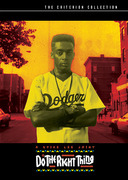
Do the Right Thing
(1989)Spike Lee
6And this is Spike’s Citizen Kane; I would have retired after it. It’s so passionate, colorful, and full of life, I’m glad to be walking on the same planet where it was made!
#10 in Miguel Arteta’s Top 10To live in New York is to live in a place that is both heaven and hell, kept from dissolving into economic and racial chaos only by the maintenance of a minute-by-minute decency, respect, and understanding. Spike Lee spends a good amount of time, early in the film, dousing a Brooklyn neighborhood with gasoline, as we hold our breath to see who will strike a match. Making perhaps one of the twenty-five greatest dramas of the past thirty years, Lee is in Sidney Lumet territory here, by way of Paddy Chayefsky, by way of Huey P. Newton. The acting is, at times, as raw as you see in film. Danny Aiello, in the self-immolating role of the pizza shop owner who strips away decades of spiritual growth in a matter of minutes, gives one of the great performances in contemporary movie history, and both he and Lee, as screenwriter, were nominated for Oscars. Giancarlo Esposito, Ossie Davis, and John Turturro are riveting. Ernest R. Dickerson’s photography is memorable, as is Bill Lee’s music. But it’s Spike Lee, on his way to making films like Malcolm X and Clockers, who knocks you on your ass so hard you have trouble getting up at the closing credits.
#9 in Alec Baldwin’s Top 10Heat rises off this film. Everything about it is hot: the iconic eye-searing color palette, the characters’ respective tempers, and, of course, Lee’s hyperstylized, sweltering Bed-Stuy simulacrum. But there ain’t nothing sluggish about it.
#1 in Diablo Cody’s Top 10It’s one of the most important American films of all time and a powerful, wonderful breakthrough for Spike Lee. All the pieces fit, and it feels effortless. The climactic riot scene is already a landmark in cinematic storytelling. Spike Lee essentially crafted a war film, except the battles are set in inner-city America.
#1 in Matt Dentler’s Top 10Beautiful film, great transfer, makes me miss New York every time I watch it.
#3 in Flying Lotus’s Top 10It’s ridiculously sentimental in some parts and maddeningly intrusive in others, and the heart of it depends on the hoary cliché of all white men being virulently racist as a matter of course. And yet . . . who can forget it once they’ve seen it? It’s urgent, unapologetic, and irrepressibly alive. Aliens from the future could find no more fitting an artifact to see America’s soul at the tail end of the twentieth century than Spike Lee’s tone poem to human nature and human chaos.
#9 in Dennis Lehane’s Top 10 -
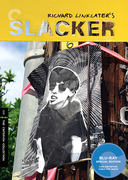
Slacker
(1991)Richard Linklater
6A society on the brink of defiance and revolution, and a generation that’s sick and tired of being sick and tired. In some years and some countries, they riot. In 1990 America, they talk it out. Easily one of the most influential American films of the last twenty-five years, Richard Linklater’s exploration of bored youth is mesmerizing. This film would help its titular term become a phenomenon, as well as put Austin, Texas, on the cultural map.
#9 in Matt Dentler’s Top 10I’m always hesitant to claim that any movie “changed my life,” but this one actually did. At the time I first saw it, I’d never considered the possibility of telling a story without narrative. It changed the way I thought about all art, and it made me want to be a weirder person.
#1 in Chuck Klosterman’s Top 10If this dry, hilarious, spooky existential vision had been subtitled in, let’s say, Iranian, would it have been better recognized for the masterpiece it is? Linklate’s sensibility is not so far from Kiarostami’s.
#8 in Jonathan Lethem’s Top 102. This film blew me away when I first viewed it, by accident, in a coffeehouse on Melrose prior to its theatrical release. It was playing nonstop in a back room, and I dragged many of my friends back to see it right away. Let’s just say, I related deeply. It’s Linklater’s first and hands-down best.
#2 in David Markey’s Top 10Packaged like a lost, beloved novel, and full of groovy extras, which stand like a sketchbook of doodlings that eventually jelled into the full movie.
#9 in Patton Oswalt’s Top 101. This was my story for years. Sigh.
#1 in Al Reinert’s Top 10 -
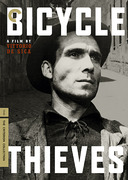
Bicycle Thieves
(1948)Vittorio De Sica
6All you need is a camera and a great story. Of course, finding even professional actors with that kind of gravitas and measure is difficult. But there are greater things behind it all: that scene, with the never-ending stacks of sheets piled high, that scene is everything—it attests to all the tiny, hidden tragedies of the everyday that occur around us, that we ignore in our own search for life and place, that we forget in our own hunt for the bicycle thieves.
#2 in Roger Corman’s Top 10The best movie ever made. Period. —TL
#4 in Robert Ben Garant and Tom Lennon’s Top 10Watching Bruno watch his dad sink into the pits of despair and live to tell about it is a journey to share.
#1 in Jaime Hernandez’s Top 10This 1948 film is a classic Italian neorealist film that takes place in post–World War II Italy. It is a beautifully told and photographed story about a close relationship between a father, Antonio, and his young son, Bruno, who idolizes his father. As the story opens, Antonio is desperately searching for work and finally gets a job posting signs. In order to do this job, he must have a bicycle. His wife, Maria, pawns her wedding sheets to buy him a bicycle, but it is stolen on the first day of his new job. The rest of the film, father and son pursue the thieves to get the bicycle back. They fail. In the end, Antonio is forced to steal a bicycle so he will not lose his job. Bruno witnesses this and Antonio is humiliated in front of his son. For me, the film was about the ultimate and heartbreaking betrayal of trust between a father and his son. I’ve always photographed families and family relationships. This wonderful film encouraged me to look beyond the surface and find the real relationships that exist between family members. The epic quality of the film was a great inspiration for me.
#5 in Mary Ellen Mark’s Top 10Set in postwar Italy, this film brings a beautiful, brutal honesty to the plight of the have-nots. This is a fight for survival and dignity in an uncaring world.
#2 in Franc Roddam’s Top 10 -
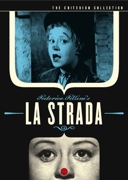
La strada
(1954)Federico Fellini
6Fellini is a deep, deep master of film. As time goes by I adore him more and more. La strada is quite perfect. It is like “The Ancient Mariner.” A haunting film for all time; one cannot insult innocence without a lifetime of cost. I don’t know why it is, but it is so, a spiritual truth, that both Coleridge and Fellini knew and tell in their respective stories. Fellini is the most fluent filmmaker of them all. His shots and storytelling are so at ease and elegant, it’s as if he’s thinking his shots through a camera in his mind and straight onto a screen. I went to his funeral in Rome in 1993, where people in the crammed huge Piazza Republica gathered to salute farewell. It was also a time when no one wanted to see a Fellini film. Every year since then his legacy appears more remarkable and more incomparable.
#7 in Jane Campion’s Top 10“The last sound on the worthless earth will be two human beings trying to launch a homemade spaceship and already quarreling about where they are going next.” —William Faulkner
#6 in Iron and Wine’s Top 10I had the great privilege of working on the sets of Fellini’s Satyricon and Roma. Fellini is for me one of the greatest of all filmmakers—he embraced life with his unique vision and genius. La strada, made in 1954, is the poetic and very moving story of a poor young woman who becomes a clown in a tiny, two-person circus. Her name is Gelsomina. A brutish gypsy, Zampanò, buys Gelsomina from her mother and takes her on the road with him. He trains her to be a clown. She falls in love with him even though he is abusive and cruel. What transpires is a tragic love story with the background of a magical traveling circus. This film surely influenced my interest in and love of the circus.
#1 in Mary Ellen Mark’s Top 1010. My first Fellini film, at the old Normandy theater, and though I got to love all the rest of his work, this one, like all first loves, has a special place in my heart. Watching Zampanò on the beach, howling like a lost wolf at the black star-filled night, has never left me. What a way to begin a Fellini career. And it was one of the films I remember that had a great beginning, which got almost forgotten by the end.
#10 in D. A. Pennebaker’s Top 102. I always cry at the end, then go out for pasta and cheap red wine.
#2 in Tom Schnabel’s Top 10 -
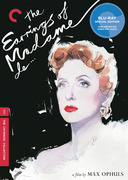
The Earrings of Madame de . . .
(1953)Max Ophuls
6This interview with Louise de Vilmorin on the Earrings of Madame de . . . DVD is very funny. She is already mesmerizing and charming and unlike anybody you’ve ever met—and then she starts talking about the movie. She hated it, in fact? Max Ophuls made a perfect film.
#1 in Wes Anderson’s Top 10Thanks to Criterion, I could finally see the Max Ophuls movies I’d been reading about for years. The story of Madame de . . . on paper doesn’t really interest me, but in the hands of Ophuls, Danielle Darrieux, Charles Boyer, and the great Vittorio De Sica (who’s not only a fantastic director and one of the fathers of neorealism, he’s also damn suave), it’s a movie that truly amazed me. I could watch those dancing scenes for hours.
#11 in Bill Hader’s Top 10Sparkle motion.
#9 in Nathan Lee’s Top 10So exquisite in every way. The waltzing camera, the costumes, performances, Darrieux, De Sica, Boyer. A 1953 creation that has a nineteenth-century novel’s sensibilities.
#5 in Angus MacLachlan’s Top 10Another example of magnificent filmmaking, wherein the performances of Charles Boyer, Danielle Darrieux, and Vittorio De Sica and the direction of Max Ophuls are so perfect that it almost stands alone in a category of romantic European filmmaking. Ophuls’s great fame rests mostly on the extraordinary directorial control he brings to this special film. It seems the most quintessential French film ever made, based on a story by the French Louise de Vilmorin, but it was directed by the German Ophuls. Americans, sensibly enough, never really tried to do this kind of film.
#7 in Paul Morrissey’s Top 10Two films directed by the immense Max Ophuls, born in Sarre, between France and Germany, with the deepest Viennese heart.
#13 in João Pedro Rodrigues’s Top 10 -

Mishima: A Life in Four Chapters
(1985)Paul Schrader
6What a great Mishima DVD—and the commentary track. Immediately started the movie again and watched it all the way through with Paul Schrader. This has always been one of my favorites of his, along with Blue Collar. And Donald Richie again!
#11 in Wes Anderson’s Top 10This is the third film that I photographed for writer-director Paul Schrader. It is the film he was born to make, even though it is in a language that neither he nor I understood. It is the film of which I am most proud. I had never expected that I would photograph a film that I felt could take a place in the cinematic canon. It opened to some indifferent, even hostile reviews, by critics who had little patience to plumb its depths. This film and Two-Lane Blacktop (a film that was my first assignment as a camera assistant and that was also subject to poor initial reviews) represent two poles of the directorial aesthetic that has informed my own work as cinematographer. Paul Schrader and Monte Hellman, as different as their styles are, represent for me the integrity that American filmmaking can aspire to.
#6 in John Bailey’s Top 10I rarely single a film out solely for production design, but this is an exception. It influenced me before I worked in film. The stage sets by Eiko Ishioka of the Temple of the Golden Pavilion alone are striking. Inspired use of nonlinear storytelling and cinematic poetry.
#9 in K. K. Barrett’s Top 10A great film by Paul Schrader, best known for having penned a bunch of legendary screenplays for Martin Scorsese. The film revolves around Japanese writer Yukio Mishima, and jumps between the story of his life and dreamlike depictions of scenes from his books. It’s got a particularly good score by Philip Glass, who I usually find to be tedious, but this one is nice. Schrader’s use of color and set design during the book segments of the film are quite theatrical and feel closely related to Robert Wilson’s on Einstein on the Beach—although I don’t have any evidence to back that connection up. Great flick, though.
#9 in Daniel Lopatin’s Top 10I bought this film on a whim, mostly thanks to its eye-catching cover and my love of Yukio Mishima’s books. Turns out to be a classic, a real grade-A stubborn-man-on-a-mission tale told in a truly ambitious fashion. (Spoiler alert) the seppuku scene at the end is really poetic and tasteful, and Philip Glass is such a perfect match stylistically.
#9 in Stella Mozgawa’s Top 10A riveting art film that chronicles the dramatic life and death of the great twentieth-century Japanese novelist Yukio Mishima, and also brings to life three of his fictional works. The real-life story is as dark and surprising as any of the novels. Philip Glass’s original score works perfectly with the striking imagery.
#5 in Andrew Weil’s Top 10 -
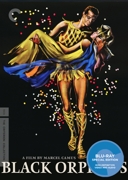
Black Orpheus
(1959)Marcel Camus
5. . . because in 1959 it showed the power of visual narrative. It exploded across the screen and was an international success. I liked the originality of setting this legend against the Rio Carnival.
#2 in Stuart Cooper’s Top 10I don’t know what to say about this one other than that it’s always belonged high on my list.
#2 in Jaime Hernandez’s Top 104. The first movie that completely blew my mind.
#4 in Al Reinert’s Top 10Set in the favela during Carnival in Rio de Janeiro, Black Orpheus is based on a play by Vinícius de Moraes (one of the cowriters, along with Baden Powell, of one of my favorite Brazilian LPs, Os Afro-Sambas) and adapted from the Greek legend of Orpheus and Eurydice, featuring a continuous musical and percussive soundtrack by Antonio Carlos Jobim—music flows with the story and Carnival clatters and bumps along as this tragedy unfolds. This beautifully colorful masterpiece won the 1959 Academy Award for best foreign language film. —Steve Shelley
#8 in Sonic Youth’s Top 108. I love films that are great not only in themselves but in the idea of them that stays in memory. But this then can dwarf the actual film, which perhaps it has in the case of Black Orpheus—some aspects now try one’s patience slightly. A few years back a Brazilian film was touted as the realistic and gritty version of the story, by those who knew the actual milieu—another black eye for realism and grit.
#8 in Whit Stillman’s Top 10 -
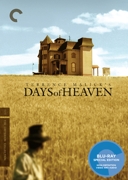
Days of Heaven
(1978)Terrence Malick
5More incredible work from Nestor Almendros (with the help of Haskell Wexler). Sam Shepard is terrific in this film. I love its mythic, timeless quality and Malick’s writing.
#9 in Richard Ayoade’s Top 10This is one of the most gorgeously shot films ever made. The plot is masterful, and it has all the qualities I love about Americana.
#5 in Jonathan Caouette’s Top 10Little Linda Manz’s voice-over is enough of a reason to watch this film. Forget the perfect performances by Richard Gere and Sam Shepard, or Brooke Adams’s twisted damsel in distress, or the way the wheat blows at magic hour making you forget the specter of murder that hangs over it all.
#2 in Lena Dunham’s Top 107. The most beautiful movie I’ve ever seen.
#7 in Al Reinert’s Top 10This is one of the most beautifully filmed movies ever and maybe Haskell Wexler’s best work as a cinematographer. [Nestor Almendros was credited as Days of Heaven’s cinematographer; Wexler provided additional photography.] —KG
#12 in Sonic Youth’s Top 10 -
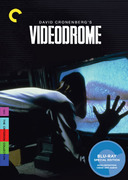
Videodrome
(1983)David Cronenberg
5Not my favorite Cronenberg film, but one that works, for obvious reasons, extremely well on home video. This was a pivotal movie for me, the film that bridged my adolescent love of horror and fantasy to a cinema of ideas. Just when, umpteen viewings on, I thought I couldn’t possibly get anything new out of it, Criterion drops the full cut of Samurai Dreams, the exquisite soft core J-porn excerpted in the feature, as an extra. The Criterion Collection, putting the bone in bonus since 1984.
#1 in Nathan Lee’s Top 10Still Cronenberg’s most nerve-racking, efficient, and, ah, penetrating realization of his vision.
#5 in Jonathan Lethem’s Top 10This film is a great mixture of sex and violence.
#5 in Nicolas Winding Refn’s Top 103. David Cronenberg’s reflexive masterpiece of modern horror, with James Woods as a seedy purveyor of soft-core exploitation for cable TV, and Debbie Harry as his siren, brought the media-as-message theories of fellow Torontonian Marshall McLuhan to visceral life. This was one of the first movies I rented on VHS, and Videodrome is partly an exploration of the strange, clunky physical sensation attached to the idea of a feature film being available on a paperback-size plastic-and-tape cassette that is inserted into a machine . . . and our brains. A quarter century later, Cronenberg’s dazzling vision of a world where image and flesh are one—“long live the new flesh”—Videodrome’s futuristic vision is timelier than ever. And above all that, the movie is sexy, smart, funny, and fascinating, moving adeptly between its layers of reality, imagination, and that vast territory in between.
#3 in David Schwartz’s Top 10I’ve never been shy about my faith in Cronenberg as a screenwriter and director. I feel he always thrives when he’s in complete control of both story and direction. Here he is in perfect form. Videodrome is a masterpiece, a great flare to the perils of an ever-growing desensitized and technophilic world. Long live the new flesh!
#7 in Zola Jesus’s Top 10 -
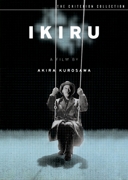
Ikiru
(1952)Akira Kurosawa
5Completely devastating, and so magical. I don’t think anyone can forget the image of Takashi Shimura on the swing in the snow.
#14 in Richard Ayoade’s Top 10A truly inspiring movie. Kurosawa is one of those rare directors who knows how to tell a story in the compelling way we all like to see them told on-screen. In Ikiru, we, as individual viewers, so identify with the moment-to-moment experience of the main character (played by the great Takashi Shimura) that somehow it becomes our own story. As we watch this movie, we progressively go through bouts of fear and guilt and then, by movie’s end, achieve a sad satisfaction coupled with the personal conviction that we must somehow do better as human beings. This one becomes even more moving as we get older and the story becomes closer to our own reality. This one puts me through the ringer every time.
#4 in Michael Barker’s Top 10This double bill gives an excellent chance to compare the acting of Takeshi Shimura and Toshiro Mifune. Neither is anything but perfect. It is a mystery how Kurosawa, who always refused to make a film without a social statement, manages at the same time to be one of the most entertaining of all filmmakers.
#6 in Aki Kaurismäki’s Top 10I’m going to end this list with a request that you also seek out Kurosawa’s Dreams after you see this movie. Dreams is my absolute favorite film of all time, and when you bookend it with Ikiru, the experience is quite amazing. Ikiru is the story of a long-tenured public servant who discovers he only has a year to live. He makes a last-ditch effort to bring meaning to his existence by working tirelessly to build a children’s playground. It is the work of an artist feeling he has not done enough substantive work in his life—a romanticized notion that our daily routine is often meaningless save for a few charitable acts. It is our fears as a young mind. Over the years, Kurosawa would endure a tumultuous career that nearly ended in an act of attempted suicide. Now consider Dreams, a film coproduced by Steven Spielberg and featuring Martin Scorsese in a cameo as Vincent Van Gogh. These filmmakers, along with George Lucas, would rally behind Kurosawa in the ’80s and help him make a comeback with Kagemusha and Ran (both on Criterion), winning him a Palme d’Or and an Academy Award nomination while also bringing back to light his incomparable portfolio of works (Lucas would very often recount how The Hidden Fortress was the narrative inspiration for Star Wars). Dreams, to me, feels a bit like a representation of the playground that Kurosawa built through his works, and the children he inspired coming out to thank him for it. I can watch this movie again and again forever. Criterion has an amazing collection of twenty-five films by Kurosawa. I cannot recommend watching his entire body of work highly enough, as it is perhaps the best documentation of a commercial artist in the modern age.
#13 in Kazu Kibuishi’s Top 10This is a film about a man’s rebirth. It was made in 1952 and is set in Japan’s postwar rebuilding period. Kanji Watanabe is a man trapped in the dreary bureaucracy of his job and life. When his doctor tells him that he has terminal cancer and a short time to live, he decides to change his life. He first tries going out on the town drinking in nightclubs and spending time with a young woman. This is a beautifully seen relationship that soon ends in disappointment. It is not until several poor women come into his office to complain about the terrible conditions in their slum neighborhood that he realizes how he can give his life meaning. In his quiet way, he uses the bureaucratic system he knows so well against itself. In the end he is able to establish a playground for the children of the slum. His selfless action in the last days of his life makes him a hero. At his funeral, his workmates try to claim the creation of the playground as theirs, but when the community show up to pay their respects, there is no doubt who acted for the greater good. For me, one of the most powerful and moving images in the film is the flashback during his wake. In this flashback, we see Kanji from behind, sitting on a swing in the snow in the middle of the playground. This film is about how fleeting life is and how important it is to be personally creative and to live every moment like it is your last.
#7 in Mary Ellen Mark’s Top 10 -
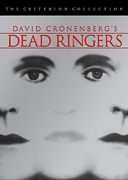
Dead Ringers
(1988)David Cronenberg
5The moment Cronenberg’s adorable but pulpy ideas became art, and it remains a flash-flood experience in brotherly anxiety and the unknowability of flesh.
#7 in Michael Atkinson’s Top 10These are both movies I made out to in college and later felt had been inappropriate choices for setting a romantic mood. I will never forget watching one of two Jeremy Ironses finger his satanic gynecological equipment while a guy named Phil sort of touched my boob. Straw Dogs makes you feel really awkward about removing your leggings, so you just don’t.
#13 in Lena Dunham’s Top 10Still my favorite Cronenberg by far. What can I say? The first time I saw it, it oozed up under my skin, and it has never left.
#8 in David Hudson’s Top 10The human soul examined by avant-garde gynecology in the saddest movie ever made. Cronenberg leaves the realm of master and steps into the pantheon, bringing Jeremy Irons—flawlessly doubled in one of the all-time great performances—right along with him. Timeless and devastating.
#2 in Nathan Lee’s Top 10Jeremy Irons plays identical twin gynecologist womanizers. Despite this being a relatively straight story by Cronenberg’s standards, his baroque obsession with body modification is not lost here—the film features a few particularly disconcerting props related to surgery that are true art pieces and worth the price of admission alone.
#5 in Daniel Lopatin’s Top 10 -
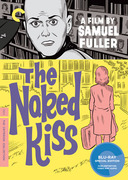
The Naked Kiss
(1964)Samuel Fuller
5Why did Constance Towers have such an abbreviated career in the movies? She’s wonderful in Sam Fuller’s perverse examination of perversity, launching the film by beating up her pimp (you might say she wigs out) and closing it by identifying a child molester through the revelation of his naked kiss. It’s a drunken tabloid party, almost absurdly brazen.
#3 in Gary Giddins’s Top 10Fuller at his atavistic best. No way out. No redemption. Possibly the best opening sequence in film history.
#4 in Frank Kozik’s Top 107.
#7 in John Lurie’s Top 10Again, the violence. The discovery of Constance Towers’s shaved head, in the precredits scene, remains one of my strongest fetishist images.
#9 in João Pedro Rodrigues’s Top 10 -
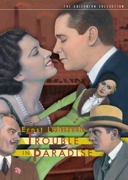
Trouble in Paradise
(1932)Ernst Lubitsch
5Elegance and charm have not found a better comedic vehicle. This is like a gemstone, a marvel of style and cheekiness. Made me wish so bad I had been alive and working in Hollywood in the thirties! By the way, the star of the film had a wooden leg, and you could never tell it.
#11 in Miguel Arteta’s Top 10“I’ve been to Paris, France and Paris, Paramount. I prefer Paris, Paramount,” Ernst Lubitsch once famously remarked. This is Lubitsch and Paris, Paramount, at their absolute peak.
#4 in Bruce Goldstein’s Top 10Okay—the wit. Hopkins and Marshall in the taxi at the end. The staircases. The portrayal of people in their twenties and thirties who were adults. And enjoyed being adults.
#8 in Angus MacLachlan’s Top 101. Witty, wonderful, wacky Lubitsch at his best. His daughter worked at KCRW!
#1 in Tom Schnabel’s Top 107. To use another alcohol metaphor, owning the Criterion DVD of Ernst Lubitsch’s endlessly effervescent 1932 masterpiece is like being able to uncork and savor the same bottle of expensive champagne over and over again. A love triangle among social-climbing riffraff and upper-class beauties (call it “The Thief, the Pickpocket, and the Perfume Executive”), with Herbert Marshall torn between the beautiful Miriam Hopkins and the stunning Kay Francis, Trouble in Paradise has the great advantage of being made before the Code. It’s as frank and scintillating as it is urbane and surprisingly touching, and it’s one of the rare American screen comedies to be completely comfortable with European sophistication. Peter Bogdanovich’s video introduction lucidly explains the meaning of the “Lubitsch touch.”
#7 in David Schwartz’s Top 10 -
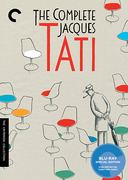
PlayTime
(1967)Jacques Tati
5In a normal world, one would go out and walk into just any theater to see a film by Jacques Tati. Or Chaplin.
#2 in Pedro Costa’s Top 10Playtime is a masterpiece. The intricate detail and exacting comedy are why this film still resonates for me today. I’m a fan of all of Tati’s films, but this one stands out for finding humor in small things we all experience every day.
#8 in Frederick Elmes’s Top 10The critics and the public wanted the pathos of M. Hulot’s Holiday and Mon oncle. They got Playtime, a comedy entirely devoted to space, in which Tati, as Hulot, hovers at the periphery of his own creation and has the elegance, which very few comedians share, not to put the spotlight on his own mug. The public and the critics turned against Tati. They were of course wrong, and the film is one of those few that get better by the year. It’s a silent film with sound; its color scheme is in a narrow band between gray and blue that aggressively underscores the painterly logic of Tati’s conceit. The film gives itself the luxury to reinvent choreography and as such dazzles with the megalomania of its enterprise and the diabolical precision the filmmaker had to conjure up to pull it off. There is ultimately so much to see, so many discrete pockets of activities in such a large canvas, that Tati has ensured that his film can be revisited time and again and each time seem different and new. It is a monumental film, literally and figuratively, that in its humorous take on modernity retains a form of hope. Alienation, but alienation light, and still the hope that the strategic social planning of architects and designers has cracks and will allow folks to run for daylight for the reassertion of their humanity. And, yes, a detail: the exquisite quality of this transfer is one of the reasons we spend our allowance on votive candles for the altar of Our Little Lady of the Criterion Collection.
#7 in Jean-Pierre Gorin’s Top 10My heart explodes every time I watch this film. I love how Hulot interacts with all the frivolous things that collide with him, like an ape in Space Odyssey. Tati’s weird parody of modern technology ends up romanticizing every little object with the slightest touch of his style. Childish, dense, and extremely watchable.
#3 in Stella Mozgawa’s Top 102. Tati invites the spectator into a game of which one never tires, every viewing revealing fresh nuances and discoveries.
#2 in Robin Wood’s Top 10 -
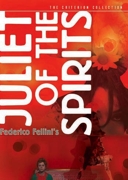
Juliet of the Spirits
(1965)Federico Fellini
5I saw Juliet when I first landed in the USA; I was sixteen. I said to myself, This business of making movies looks so great—basically this guy is filming his dreams. That’s a racket I must get into!
#1 in Miguel Arteta’s Top 10This was Fellini’s first film in color. Fellini, along with cinematographer Gianni di Venanzo, experimented with this exciting new medium. There’s an enthusiasm and boldness to the use of color in it, and it shapes the way I think about color in film even today.
#2 in Frederick Elmes’s Top 10Same idea from a woman’s point of view, but created in the wake of the maestro’s LSD experience. It’s magical, and he gets the colors right.
#2 in Donald Fagen’s Top 10Haunting and magical. The way that Fellini dealt with Juliet’s dreams, subconscious, relationships, and the church—I had never seen anything like it.
#2 in Chris Hegedus’s Top 105. There are a few Fellini films that could fill this category, but this one is special to me, as I saw it at an age that I think helped me become intrigued with the world of film.
#5 in Joe Mantegna’s Top 10 -

Pickup on South Street
(1953)Samuel Fuller
5I’m still trying to learn the pickpocket techniques demonstrated in this Sam Fuller classic. It was my introduction to film noir—a late-night-TV memory that wouldn’t let me go back to sleep.
#8 in Susie Bright’s Top 10Jean Peters as Candy is my favorite female character in any movie.
#6 in Jaime Hernandez’s Top 10I saw this at the Thalia, probably in the middle of winter. Heat was not its specialty. Richard Widmark manages to portray himself as twisted, conniving, pathological, sleazy, tragic, vulnerable, and handsome all at once in most of the movies I’ve seen him in, and never more exquisitely than in this, one of my favorite film noirs. Though I must confess, I’ve never seen Rollercoaster.
#4 in Georgia Hubley’s Top 10It kicks your face in while you’re watching it. The economy of true noir is evident in the pacing, the language, the looks . . . the characters. Lowlife as hero. Fuller nailed it here. Plus, Thelma Ritter. God, someone should build a shrine to that woman, you know? Any time you’re wondering where the great character actresses went, pay your respects to her in this flick.
#5 in Scott Morse’s Top Ten5. Mistakenly seen as a crude anticommunist movie, Pickup juxtaposes the commies with an America in which the only characters are criminals or dropouts. The death of Moe, sacrificing herself for a country that abandoned her, is heartbreaking. Arguably Fuller’s best film.
#5 in Robin Wood’s Top 10 -
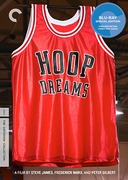
Hoop Dreams
(1994)Steve James
5Passionate, personal, and uplifting documentary filmmaking. This is a true example of the power of the art form, and a terrific movie too. Rarely do you find filmmakers with such an insight to the world of sports, and the ability to examine the personal politics that run underneath it. This should be required viewing for any sports or film fan.
#4 in Matt Dentler’s Top 10The cinematic manifestation of sportswriting’s highest aspirations.
#4 in Chuck Klosterman’s Top 10A bittersweet documentary that follows the lives of two gifted basketball players from Chicago as they work their way through the ranks of high school b-ball programs and onward. One of the best docs I can think of, and a very necessary look at sociological issues surrounding America’s beautiful game.
#10 in Daniel Lopatin’s Top 10I’m a documentary freak. Two-thirds of the movies I watch are documentaries. Hoop Dreams is a sweeping, stirring, myopic study of two young men on differing paths, both with dreams of becoming NBA players. It is, of course, not so much about basketball as the personal and social struggles of two young men attempting to do what so many young men try to do every year. Uplifting and tragic, it may be the best sports documentary ever.
#1 in Dominic Monaghan’s Top 101. For the early part of my life, I was almost exclusively interested in sports (basketball in particular). I wanted to play professional basketball, and I really couldn’t imagine doing anything else with my life. My love of the game never quite recovered after viewing Hoop Dreams near the end of eighth grade. It exposed something fundamentally flawed about organized athletics. I still tried out halfheartedly for the high school basketball team, but when I didn’t make the cut, I never looked back. My obsession switched almost overnight from sports to films. I wound up, coincidentally, studying film at Southern Illinois University, where Steve James had studied almost two decades before. The school hadn’t changed much, and I had many of the same classes and professors that he did. I have gotten to know Steve over the years, but I don’t think I’ve ever told him that he might be responsible for leading me from sports to films.
#1 in Joe Swanberg’s Top 10 -
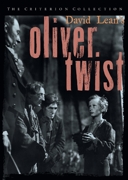
Oliver Twist
(1948)David Lean
5It’s quite hard to consider Lean’s filmography and put forth any favorites. Lean is certainly one of the greatest film directors of all time. The scope and richness of his work, from Great Expectations to The Bridge on the River Kwai, from Lawrence of Arabia to A Passage to India, mark the career of a filmmaker who was bold and determined like no other. However, a fondness for Dickens (and for Lean’s fondness for Dickens), and for the remarkable reality and suffering of the working class of England in the early nineteenth century that is brought to life here, always brings me back. To Guy Green’s photography, to the film’s exquisite art direction, and to the acting. The cast is flawless. Guinness, a young Anthony Newley, Kay Walsh, and the emotional sledgehammer of Robert Newton’s performance. Ronald Neame produced this and other great British films.
#8 in Alec Baldwin’s Top 10Most people remember David Lean for his big-scale epics, like Doctor Zhivago, Lawrence of Arabia, or The Bridge on the River Kwai. But here he is at his most precise and poetic. Both movies are epics of the spirit, and both are plagued by grand, utterly magical moments and settings; whether showing Oliver’s mother straining and in pain, by intercutting with a flexing branch of thorns, or by lovingly lingering on Miss Havisham’s decaying splendor, Lean understand the need for hyperbole in order to manage the larger-than-life Dickensian archetypes. Some of the passages in both films skate the fine line between poetry and horror.
#9 in Guillermo del Toro’s Top 10For me, this is an almost perfect film. It is worth seeing for John Bryan’s sets alone, a master class on how to use texture and film architecture to create the illusion of depth and atmosphere. The script and acting are very fine, but Alec Guinness’s famous or infamous portrayal of Fagin is probably his best performance on-screen.
#6 in Christopher Hobbs’s Top 10My fondness for hooks, stalls, and dips made it difficult to choose between the pickpockets of David Lean and those of Robert Bresson. Both great, but Criterion’s transfer of Guy Green’s painterly cinematography put this one over the top. Please sir, I want some more . . .
#7 in Ricky Jay’s Top 10This contains some of the most luminescent black-and-white cinematography ever seen. Fagin, as portrayed by Alec Guinness, will have you squirming with repulsion, yet unable to take your eyes off his balding pate.
#5 in Frank Kozik’s Top 10 -
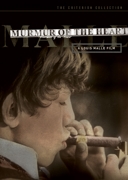
Murmur of the Heart
(1971)Louis Malle
5The other Louis Malle I chose, my favorite of his and the first one I saw. I was lucky enough to take a class on Malle in university, and so I was exposed to this great filmmaker at a young age. This is by far the best coming-of-age story I have ever seen. The incestuous mother/son relationship is surprisingly underplayed and comical. In a scenario that would otherwise be shocking, Malle doesn’t judge his characters, he just tells their story. Also notable is the beautiful Dizzy Gillespie and Charlie Parker soundtrack. A wonderful, rare movie.
#4 in Marcel Dzama’s Top 10This brilliant film about a boy’s coming of age introduced me to French cinema. Malle creates a fascinating picture of French family life; it’s both a comedy and a story of alienation. The mood of the more intimate scenes stays with me, as does the great jazz score.
#5 in Frederick Elmes’s Top 103. I don’t quite understand how this film does what it does—make you understand the powerful, quasi-incestuous relationship between mother and son, without making it seem the least bit abnormal or reprehensible—but that’s what I love about it. That and the jazz soundtrack and the semipsychotic older twin brothers.
#3 in Kevin Macdonald’s Top 10This film takes place in Dijon, France, in the mid-’50s. It is a coming-of-age film about a boy in his early teens named Laurent Chevalier, who is from a bourgeois family. He has two older brothers who are always teasing him and who introduce him to a prostitute for his first sexual experience. Laurent has a beautiful mother and a successful father who is a gynecologist. After getting scarlet fever and discovering he has a heart murmur, Laurent must stay in bed for several months to recover. When he is better, he travels with his mother to a very fancy resort (sanatorium) in France. The second and third acts of the film are about his coming-of-age experiences at the sanatorium with the other young people who are staying there. It is also about him developing a strong personal relationship with his mother. This film is so daring and touches on many taboo issues—it’s astonishing that it could be made then (1971) and even now it would be considered to be pushing too many boundaries. In the end, it’s a beautiful, deep love story between adolescent children growing up in a privileged life, and about the closest relationship between a mother and son. I wish more films today could push boundaries like Louis Malle did in Murmur of the Heart. This film reassured me how important it is to push boundaries and to pursue issues that are considered by some to be untouchable. It is a truly inspirational film.
#6 in Mary Ellen Mark’s Top 10 -
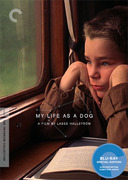
My Life as a Dog
(1985)Lasse Hallström
5Another coming-of-age story, this one is about a young boy sent to live with relatives in the countryside when his mother is unable to take care of him anymore after falling ill with TB. The boy, Ingemar, barks like a dog to avoid difficult situations. He is too young to face his predicament and very sweetly navigates his way through an eccentric cast of characters in a small Swedish town. A really loving and heartwarming tale with an amazing performance by a young Anton Glanzelius.
#5 in Marcel Dzama’s Top 10Alec Guiness said this was the greatest film ever made in his autobiography My Name Escapes Me, so I rented it and I’ve cried pretty much every day since, just thinking about it. Alec Guiness was not wrong on this one. The film is so wonderfully Scandinavian. Like a trip to Ikea . . . that makes you cry. My Life as a Dog will stay with you forever. —TL
#1 in Robert Ben Garant and Tom Lennon’s Top 10Fun fun fun. Life life life.
#4 in Jaime Hernandez’s Top 10I saw this film with my mother when I was very young. It’s the only movie aside from It’s a Wonderful Life during which I’ve cried because I was happy.
#8 in Nicolas Winding Refn’s Top 1010. I saw this when I was fourteen. Saga the tomboy is one of my favorite characters. Falling in love with boys while wanting to be like them is how I spent my childhood, and the 1950s sports clothes dictated what I wore for the next ten years.
#10 in Leanne Shapton’s Top 10 -

The Honeymoon Killers
(1970)Leonard Kastle
5I guess I’m a sucker for black and white. This 1970 independent classic is from writer/director Leonard Kastle, who took over after Martin Scorsese was let go. Shirley Stoler is funny and heartbreaking as the homicidal, jealous companion of scam artist Tony Lo Bianco. Based on a true story, it held particular interest for me because the killers at one point decide to retire to suburban Valley Stream, Long Island, the town where I primarily grew up and directed my first film, Trees Lounge. I once worked with Tony on an episode of the TV series Homicide and excitedly told him he had one of my favorite lines in one of my favorite movies. After sizing me up for a few seconds, he replied, “Well, that would have to be the Honeymoon Killers, and the line of course is, ‘Valley Stream. Valley Stream. What a joke!’”
#3 in Steve Buscemi’s Top 10One of my favorite films of recent years is A History of Violence, but I don’t share the notion that we are implicated in its violence. Where is the conflict in seeing psycho killers rubbed out? In Leonard Kastle’s sole film, however, we are painfully implicated. The victims, all defenseless women and a child, are brutally murdered in a context so unreasonably entertaining that we hate ourselves for not turning away. The setup for the most grueling of these murders appears to be an homage to the Turkish-bath scene in Children of Paradise.
#10 in Gary Giddins’s Top 10Very little of what’s called “independent” today really is. The Honeymoon Killers is a real independent; made on a shoestring, this is the most chilling movie of its decade.
#11 in Bruce Goldstein’s Top 10Everything is wondrous about this film: the writing, the casting, the texture of the image, the framing, the rhythm of the editing, the music, the direction as a whole. The title, though, the result of a necessary deal with idiotic distributors who imposed it over the original Dear Martha . . . , is a miss. Inspired by a famous case, the film is the exact opposite of your garden-variety “true crime” potboiler. It is many things at the same time: a sublime love story (Marguerite Duras dixit); a poetic exploration of the suburban landscape (right up there with Robert Frank’s The Americans); a fierce indictment of late-fifties middle-class aspirations (the trick here being that the irredeemable heroes of this epic inspire more empathy in the viewer than their victims); a level-eyed look at the hard business of murder (no romantic choreography here, and a smack on the skull with a hammer will make you recoil in horror); and too many lessons in filmmaking to quote in these few lines. In short, this is one of the great American films of the last forty years. The astonishing (and scandalous) thing is that Leonard Kastle never went on to make another film. See the film, go to the bonus tracks and see Mr. Kastle speak: the intelligence, the humor, the clarity of the craft will leave you gasping. It is so good to hear someone who has the arrogance of his modesty.
#4 in Jean-Pierre Gorin’s Top 10Okay this DVD’s got the coolest menu Criterion’s ever devised. Crinkly, tabloid newspapers that you leaf through to get to the meat of the murder. Tawdry and beautiful.
#8 in Patton Oswalt’s Top 10 -

The Leopard
(1963)Luchino Visconti
5. . . because it’s Visconti, one of my favorite directors and one I wish I had met. Brilliantly acted by Burt Lancaster, who modeled his performance on his nobleman director, Visconti.
#8 in Stuart Cooper’s Top 10This is proof that despite the difficulties it is possible to make a wonderful film from a wonderful but very long book, in this case Giuseppe Tomasi di Lampedusa’s The Leopard, which describes the dissolution of the great Sicilian ruling families during the 1860s. Set in the magnificent and sometimes crumbling palaces of Palermo and the arid Sicilian summer countryside, the film shows us the privileged but largely pointless lifestyle of the ruling elite, threatened by political change and their own inertia. One shot in the film encapsulates the message: when the central family arrives at their country estate exhausted from the grueling journey there, they enter the local church and sit in their family pew, along the length of the nave. The camera tracks across their faces, exhausted and gray with dust. The reference is unmistakable; they resemble those mummified bodies held in catacombs under the Capuchin monastery of Palermo, held upright in endless rows, many still in their nineteenth-, even eighteenth-century clothes, rotting and collapsing, covered in the dust of centuries. It is a beautiful example of how much can be said in a single camera shot when used by a master.
#3 in Christopher Hobbs’s Top 10A magnificent example of European filmmaking, totally undramatic and hypnotically watchable thanks to the extraordinary visual beauty of the photography by Giuseppe Rotunno, the set design by Mario Garbuglia, and the costumes by Piero Tosi, all under the superb control of a great director, Luchino Visconti. An extended time-travel visit to another world, the film is comprised of two major events are a family’s trip from the city to a summer residence and a forty-minute attendance at a ball. It’s probably the finest physical production ever filmed anywhere in Europe or America, a relic of a time when taste, intelligence, and artistry were still in operation, but perhaps even then only in Italy, and only with Visconti. The undisputed master of the costume film (he made only six), this is his masterpiece, dominated by the extraordinarily majestic performance of Burt Lancaster. The tall, athletic, handsome Irish American from 116th Street in Manhattan brought a dignity, strength, and reserve to the part of a Sicilian prince that no one else could have played better. Without him, it would be hard to imagine the film as good.
#3 in Paul Morrissey’s Top 10Another masterpiece about Sicily, another meditation on eternity, and an endlessly rich historical tapestry, meticulously composed in color and on 70 mm. Luchino Visconti based the picture on the Count Giuseppe Tomasi di Lampedusa’s posthumously published novel, about a Sicilian prince at the time of the Italian unification, or Risorgimento, who steps away from power and influence because he realizes that the life he and his family have led is coming to an end, that he has to get out of the way for younger and more ambitious men like his nephew Tancredi. Visconti and his fellow screenwriters (there were four of them, including his frequent collaborators Suso Cecchi D’Amico and Enrico Medioli) took Lampedusa’s novel and fashioned a whole new work on a grand scale, an epic but of a very unusual type. Time itself is the protagonist of The Leopard: the cosmic scale of time, of centuries and epochs, on which the prince muses; Sicilian time, in which days and nights stretch to infinity; and aristocratic time, in which nothing is ever rushed and everything happens just as it should happen, as it has always happened. The landscapes, the extraordinary settings with their painstakingly selected objects and designs, the costumes, the ceremonies and rituals—it’s all at the service of deepening our sense of time and large-scale change, and the entire picture culminates in an hour-long sequence at a ball in which you can feel, through the eyes of the prince, an entire way of life (one that Visconti himself knew quite well) in the process of fading away. Like Contempt, The Leopard was initially overshadowed by the circumstances around it, namely, the casting of Burt Lancaster as the prince. Here in America, we saw the picture in a shortened and dubbed version (Lancaster was speaking English) that was a little unsatisfying: you could clearly see that the movie Visconti had intended wasn’t quite all there, and it was jarring to watch Lancaster speaking in his normal voice surrounded by Alain Delon and Claudia Cardinale and Paolo Stoppa dubbed into American English. When I got to see the whole thing, I was astonished by the picture and by Lancaster, who gives all of himself to the role and to the world of the film. Visconti had wanted Laurence Olivier, and he was initially very curt with Lancaster, but the actor won him over and they became lifelong friends. I could go on and on about The Leopard. It’s a film that has become more and more important to me as the years have gone by.
#10 in Martin Scorsese’s Top 10 -

The Vanishing
(1988)George Sluizer
5This Dutch director George Sluizer is actually a Frenchman, or born in France anyway. This creepy 1988 thriller about a woman abducted and the torment her kidnapper puts her boyfriend through was remade by the director as an American film in 1993. But check out this original and see if you don’t have nightmares.
#9 in Steve Buscemi’s Top 10Sluizer is a Dutch director I met in my early twenties and instantly liked and admired. Finally, in 1988, he made really good with this suffocating horror movie—so bland on the surface, so naturalistic in its acting, and yet as ghastly as any catacomb in its study of crime and perversion. When Sluizer remade the movie for Fox, the whole story lost its relentless, claustrophobic grip.
#4 in Peter Cowie’s Top 10If you want to freak yourself out Hollywood-style, The Silence of the Lambs is probably the crème de la crème of serial killer movies, no? If you prefer a Dutch kidnapping story, go for The Vanishing. Both are incredible.
#8 in Daniel Lopatin’s Top 106. Not so much a film about tragic loss as one about obsession. Intense, disturbing, and affecting. A film not easily forgotten. I’m not sure I actually liked any of the characters—but I felt for them. I thought about The Vanishing for days after watching it. It still creeps into my thoughts when I least expect it.
#6 in Seth’s Top 10Totally unnerving psychodrama where a man’s girlfriend is abducted and, after searching for her for three years, he begins to receive messages from the abductor. And then it gets veeerrry weird. Sluizer also directed a film called Dark Blood, which would be interesting to find. —TM
#6 in Sonic Youth’s Top 10 -

F for Fake
(1975)Orson Welles
5So innovative and playful. Orson Welles makes it look like the easiest thing in the world, but this is such an amazing feat of engineering.
#10 in Richard Ayoade’s Top 10As a longtime student of deception, and occasional practitioner, I find much to admire in this playful paean to the psychology of the con.
#3 in Ricky Jay’s Top 10Poetic and oh-so-funky, Orson Welles’s filmic essay on deception has balls of experimental steel. Cobbled together in his later years of European exile, it’s both a cheeky thesis on the nature of fakery and the best example I can imagine of filmmaking as giddy, childlike play. Now if someone would only do a decent DVD of The Trial, we’d be in business. (Nudge, nudge.)
#3 in Rian Johnson’s Top 10I’m not even going to try and describe why I like this movie. It would take me 5,000 words and only make things worse.
#3 in Chuck Klosterman’s Top 10It’s truly astounding to consider that Orson Welles invented the postmodern-appropriationist-essay film, along with so much else.
#1 in Jonathan Lethem’s Top 10 -
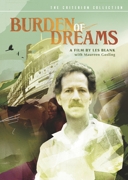
Burden of Dreams
(1982)Les Blank
5Since Grizzly Man and on through Encounters at the End of the World, festival dispatchers often report that audiences walk out of the theater trying out their Werner Herzog imitations. You do the accent, sure, but that’s only the half of it. The other half is what you say; you have to decry the viciousness of nature, the doomed and dooming insanity of it all. I wonder how many of these amateur impressionists realize that the sensibility they’re mimicking with an odd mix of humor and admiration has been somewhat tempered over the years. Burden of Dreams is an almost frightening portrait of that sensibility when it was manic and raw, no matter how calm Herzog’s exterior may at times appear. And, of course, next to Kinski, he was the sane one! Les Blank’s documentary is also, along with Hearts of Darkness, one of the greatest making-ofs of all time.
#6 in David Hudson’s Top 10“If you want to make God laugh, tell him about your plans.” —Woody Allen
#9 in Iron and Wine’s Top 10All the goofy nature footage is worth sitting through for the ten seconds of pure hate that is Kinski’s freakout.
#9 in Frank Kozik’s Top 104.
#4 in John Lurie’s Top 10I recently made a documentary about going to Moscow to try to help turn Everybody Loves Raymond into a Russian sitcom. And I had some problems. But this, this was nuts. It’s the ultimate nightmare and the wildest making-of movie. One of the all-time great metaphors for art, or life, dragging a steamship up and over a mountain was Fitzcarraldo’s burden. And so it was of the filmmaker, the great and possibly crazy Werner Herzog. Among the beautiful insights here are his rants against nature. That’s what keeps me inside watching movies.
#2 in Phil Rosenthal’s Top 10 -

Yojimbo
(1961)Akira Kurosawa
5“No performer should attempt to bite off red-hot iron unless he has a good set of teeth.” —Harry Houdini
#2 in Iron and Wine’s Top 10Also, Sanjuro. This edition has subtle and understated packaging that echoes the sparse and slow pacing of Kurosawa’s film. The tribal “voodoo music” is entrancing and fills up the empty spaces Kurosawa leaves deliberately open. There are so many unforgettable images that stay with you, such as the dog with the severed hand in its mouth, and Unosuke’s arm coming out of his kimono’s neck hole holding a gun.
#4 in Caitlin Kuhwald’s Top 10Only Bugs Bunny rivals the Man with No Name trickster/puppeteer that Toshiro Mifune graced us with here. This might be the perfect popcorn movie. The music alone pops the clutch of this joyride, and a joyride it is: this car’s been stolen more than once, and with good reason.
#10 in Scott Morse’s Top Ten10. A film that combines the sitcom and the samurai film.
#10 in Johnnie To’s Top 104. I guess you have figured out by now that I am really not going to review any of the films that I picked.
#4 in Adam Yauch’s Top 10 -

The Royal Tenenbaums
(2001)Wes Anderson
5When Wes Anderson asked me to provide incidental narration to his film about the Tenenbaum tribe, I honestly could not make out what the film was about. It turned out to be a Wes Anderson film, which, in my mind, is the New Yorker magazine’s cartoon staff meets Jules Feiffer meets Preston Sturges. Or, perhaps, none of that. The Royal Tenenbaums, at the time of its release, was arguably one of the most original movies, in tone and style, since Robert Altman’s M*A*S*H. The cast is pitch-perfect, and the film features Gene Hackman’s greatest work. (I know. That’s saying a lot. But it’s true.) Anderson and Owen Wilson were nominated for best original screenplay at the Oscars in 2002. With cinematography by the remarkable Robert Yeoman (Drugstore Cowboy, The Squid and the Whale).
#4 in Alec Baldwin’s Top 10This entire movie could have been about the friction between Danny Glover and Gene Hackman and it still would have been amazing. Look past the production design and darling costumes if you can; the story is oak solid behind those oxblood walls.
#10 in Diablo Cody’s Top 10This is really a sneaky way to list all of Criterion’s editions of Wes Anderson’s films. Tenenbaums is by far my favorite, but Rushmore, The Life Aquatic, and the new edition of Bottle Rocket are all pretty fantastic, too. I’m always immediately won over by the artwork and illustrations that tie all his films together. Even with different artists (Ian Dingman and Eric Chase Anderson) there is a consistency, due in no small part to Wes Anderson’s own particular aesthetic, that makes these films feel like four stories from the same hyperreal, idyllically melancholy world. There’s an interview in the Tenenbaums supplements section with artist Miguel Calderon that’s totally worth a listen.
#8 in Caitlin Kuhwald’s Top 10Okay, I cheated, but it’s hard not to see these films as of a piece. Two perfectly wrought, drop-dead hilarious films about self-loathing, rage, and clinical depression. When Chas Tenenbaum says, “We’ve had a rough year, Dad,” or Max Fischer tells Herman Blume that his secret to happiness is “going to Rushmore,” the sneaky brilliance of Wes Anderson bubbles up through all the surface whimsy and blows a hole through your heart. If Sturges and Cassavetes had somehow managed to have a love child, it would have been Anderson.
#11 in Dennis Lehane’s Top 109. The seemingly precious whimsy of Wes Anderson’s style masks a sensibility that is at once delicate and magnificently imaginative. The Royal Tenenbaums has been described as an adaptation of a great novel that doesn’t exist, and it is set in an upper Upper West Side that also doesn’t exist. Anderson literally creates a world of his own to explore the most primal emotions and family dynamics. There is so much to savor—the sweat suits, the enchanting music, Gene Hackman on a tricycle—and the DVD is also a world of its own, as beautifully packaged as, well, a Wes Anderson film, with Kent Jones’s lucid manifesto defining Anderson’s particular brand of genius, and a great gallery of production design drawings.
#9 in David Schwartz’s Top 10 -

The Exterminating Angel
(1962)Luis Buñuel
4Have just watched The Exterminating Angel for the first time since fuzzy VHS in University of Texas A/V library. He is my hero. Mike Nichols said in the newspaper he thinks of Buñuel every day, which I believe I do, too, or at least every other.
#12 in Wes Anderson’s Top 10“I’m lucky to have spent my childhood in the Middle Ages, or, as Huysmans described it, that ‘painful and exquisite’ epoch—painful in terms of its material aspects, perhaps, but exquisite in its spiritual life. What a contrast to the world of today!” Luis Buñuel always reminds us of what we’re constantly losing in this rotten society.
#5 in Pedro Costa’s Top 10It begins with elegance and, as the story unfolds, reveals the dark, desperate, and very human parts of us. I enjoy films that take place in one setting if done correctly. It allows the audience to focus on the characters that drive the plot without any fancy trickery. Such a fun, mysterious ride.
#2 in Brie Larson’s Top 10 -
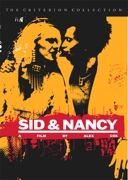
Sid & Nancy
(1986)Alex Cox
4Any film that propelled Gary Oldman to stardom is an important film, as I believe Oldman is the greatest film actor of his generation. The lives of the waifish/shrewish Nancy Spungeon and enfant terrible Sid Vicious make for a tough haul and present a somewhat jaundiced vision of the seventies punk scene. However, Sid and Nancy features director Alex Cox at the peak of his talent, cinematography by the great Roger Deakins, and a wonderful, damaged kookiness from Chloe Webb. But it’s the preternaturally gifted Gary Oldman you can’t take your eyes off of.
#3 in Alec Baldwin’s Top 10I first saw this in 1995, when I was seventeen. My boyfriend actually left the room because it was too intense; he apparently couldn’t stomach the potent cocktail of Chloe Webb’s screeching and Gary Oldman’s rheumy-eyed menace. Even though the movie was set in a time we couldn’t remember, it mirrored our teen zeitgeist in a lot of ways. We’d just made it through the second wave of punk.
#4 in Diablo Cody’s Top 10Gary Oldman must rank as one of or—in my opinion—the most talented actor of his generation. Here, as per normal, he is intoxicating, as Sid Vicious, the “bass player” for the Sex Pistols. England in the ’80s. Drugs. Music. Fashion and baked beans. What’s not to love? Blink and you will miss Shane MacGowan from the Pogues, and Courtney Love.
#2 in Dominic Monaghan’s Top 102. I was at the last Sex Pistols show (in San Antonio) and lived for months at the Chelsea Hotel, so this was nearly my story.
#2 in Al Reinert’s Top 10 -
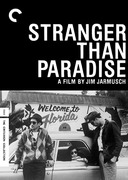
Stranger Than Paradise
(1984)Jim Jarmusch
4Who knew you could make a film like this? I didn’t. I love Jim Jarmusch. Down By Law and its special features (Robby Mueller!) might be the Criterion disc to get, but this one has special meaning to me.
#4 in Paul Dano’s Top 10This movie came out when I was at film school, and everybody was talking about it. However, I resisted seeing it, because it sounded pretentious to me, the idea of a movie made up entirely of single-take scenes with black in between. It wasn’t until a couple years later that I saw it and realized it’s one of the oddest, most sincere and funny movies I’ve ever experienced. Entirely human and completely unique, it’s a movie I’m pretty sure I could watch every day of my life and still enjoy each time.
#9 in Paul Feig’s Top 10Saw this right at the time as I was getting serious with my own work. Yes, serious.
#8 in Jaime Hernandez’s Top 10I was an undergraduate art student when this film came out, and it was the reason I decided to apply to graduate film school. I find it hard to imagine the independent film movement without Stranger Than Paradise. It is entirely personal and impossible to copy —the kind of movie I hope for all the time.
#15 in Greg Mottola’s Top 10 -
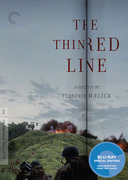
The Thin Red Line
(1998)Terrence Malick
4Growing up, actors defined films for me. When I was fourteen or fifteen and saw this film, it was the first time I thought, Who directed that? I think this is an absolute masterpiece, and I will watch it again and again and again.
#9 in Paul Dano’s Top 10Quoting, from memory, one of the many questions posed by the multiple voice-overs by celebrity Marines who lined up to enlist in Malick’s comeback film as though Pearl Harbor had been attacked just days before: “Why is man pitched against man in eternal struggle?” Because it looks so good on-screen? Something to do with Heidegger? Darned if I know, but happy to watch repeatedly in the hope of finding out.
#6 in Geoff Dyer’s Top 10The Thin Red Line is extraordinary. It’s war seen from the POV of God or something. There’s a spirituality that you don’t see in a lot of war films. The battle for the hill is amazing. Ben Chaplin receiving the letter from his wife is heartbreaking. And the music is great. I was so happy Terrence Malick decided to make another movie after twenty years.
#17 in Bill Hader’s Top 10What better than Malick’s extraordinary vision of war to demonstrate the technical potential of a carefully mastered Blu-ray? Projecting this disc comes close to the original print quality, and it’s hard to imagine a superior consumer format coming along anytime soon.
#3 in Christopher Nolan’s Top 10 -
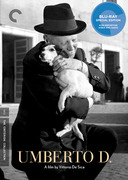
Umberto D.
(1952)Vittorio De Sica
4I first saw this as a college student at one of the city’s repertory cinemas, in the early nineties, and will never forget it. One of the most simple and moving films ever made about man not losing his dignity in the face of our eternal fate and society’s greed. How to stay alive and human when you are no longer useful to our indifferent world? How to maintain hope when all that is left is to turn into the dust from which we came?
#5 in Ramin Bahrani’s Top 103. Another emotional bludgeoning from De Sica and screenwriter Cesare Zavattini, this one belonging—along with The Last Laugh—to that small genre concerning aged men playing out their hopeless, last, lonely days. It must have been something, back in 1952, when this film went head-to-head with Forbidden Games for the honor of most tearful ending! Right from the shank of titan De Sica’s neorealist years! I love being destroyed by masters!
#3 in Guy Maddin’s Top 10I once took a girlfriend to see this movie, after which she complained that it was the most depressing film she’d ever seen. I should’ve known right then and there that our relationship was doomed. It depicts the harsh toll of loneliness, humiliation, and indifference to the suffering of others; what it’s like to live in a world where empathy is in short supply (which is usually the case).
#9 in Greg Mottola’s Top 10Really? Another canonical film about an old guy? At least it costars a dog.
#5 in James Schamus’s Top 10 -

Shadows
(1959)John Cassavetes
4In fact, the whole John Cassavetes: Five Films set. This is the starter kit for anyone who wonders about the roots of the American independent film movement. Seeing Cassavetes’s debut, the politically charged love story Shadows, is like watching the birth of a giant. Meanwhile, Faces and A Woman Under the Influence are searing portraits of the blinding pain true love can bring when a marriage ends up tearing a family apart. The Killing of a Chinese Bookie and Opening Night, on the other hand, are noirish sagas of death and business. Plus, Charles Kiselyak’s moving documentary A Constant Forge offers up the proper historical and cultural perspective on one of American cinema’s true visionaries.
#6 in Matt Dentler’s Top 10And the rest of the films in John Cassavetes: Five Films. Not one film but five, which already takes me over my Ten Best quota. Pick any of these films and meditate on performance, what makes it and what sustains it. If there is a choice to make I would opt for Faces and for The Killing of a Chinese Bookie (Godard, who admired the latter, compared it to listening to a piano player tickling a few last chords on the ivories in the wee hours of the morning, when the last patrons have left the nightclub and the waiters are stacking the chairs on the tables . . . Not a bad comparison, all in all). Looking at a Cassavetes movie should persuade any viewer that there are no bad actors but only bad directors, and that acting has more to do with the strategic setting of gestures in space than it has to do with a trip to the flea market of emotions. The miracle of Cassavetes’s craft lies in that he makes the emotion surge, while obstinately refusing to illustrate it. No wonder his actors look always as if they were documented. Look at the bodies of Gena Rowlands, Ben Gazzara, Seymour Cassel, and Peter Falk: they are all avatars of Lillian Gish, the rightful inheritors of that magic moment in Broken Blossoms when with her fingers she creased a smile on her terrified face and invented film acting.
#8 in Jean-Pierre Gorin’s Top 10There would be no sense in trying to select one of John Cassavetes’ films, since they are all one expression of a genial and exceptionally generous mind.
#10 in Aki Kaurismäki’s Top 107. The entire John Cassavetes: Five Films set is a great collection/overview of the master of independent cinema, unparalleled badass, brilliant actor and filmmaker JC. Also, I have mad love for Gena Rowlands. How I wish they were my parents.
#7 in David Markey’s Top 10 -
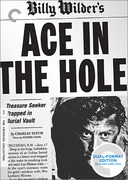
Ace in the Hole
(1951)Billy Wilder
4I like Billy Wilder best when he’s nasty. Five Graves to Cairo (especially that ending), Double Indemnity, but nothing, nothing, beats Ace in the Hole. Kirk Douglas is so despicable, but you understand why he’s doing what he’s doing. You oddly feel for him at times. I love that Wilder takes us there.
#15 in Bill Hader’s Top 102. I heard this film was the biggest flop of Billy Wilder’s career. It’s too bad, because I think it’s his best. I saw it on TV at the age of fifteen, when it was called The Big Carnival and I realized this is what film could be.
#2 in Bill Plympton’s Top 10Billy Wilder’s first film after Sunset Boulevard possibly seems more relevant in today’s tabloid news world than when it was released in 1951. Starring Kirk Douglas, the film takes place in New Mexico as a three-ring media circus develops while a man is trapped helplessly in a cave. —SS
#9 in Sonic Youth’s Top 10 -
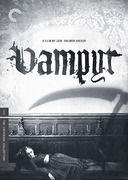
Vampyr
(1932)Carl Th. Dreyer
4There are no children here, and no dogs.
#9 in Pedro Costa’s Top 10The distinguished director of The Passion of Joan of Arc in a moment of strangeness. He said Vampyr was not a horror film. Certainly, in a setting where images and voices fade through a sort of ghostly mist and shadows take on an independent life, where the leading man drifts from one bizarre and unsettling episode to another with a look of incomprehension on his face, an atmosphere of threat and unease is created, but it is the unease of dream, of nightmare, and is ultimately more unsettling than Hollywood’s brash efforts.
#8 in Christopher Hobbs’s Top 10Vampyr has always reminded me of a mysterious dream I once had when I was very little. The film has always stayed with me. I watch it before I make every film, and yet it still remains a mystery to me.
#3 in Nicolas Winding Refn’s Top 10 -

Mamma Roma
(1962)Pier Paolo Pasolini
4Pasolini was murdered for a reason: he was a real artist with something to say that too many people did not want to hear. Nobody brings as much love and anger, and challenges and questions, as PPP. His films explode with life and energy, politics, religion, doubt, devotion, humor, and irony, and force you to rethink everything in your life and outside your life. Each frame is a revolution and a dare to the viewer. Bertolucci said, “You can tell when Pasolini puts the pen down and picks up the camera.” Which other filmmakers can claim that this quote would be true of them? A devastating majority of films are just filmed screenplays. Pasolini belongs to the rare group of artists who make films. Empty yourself, wash your eyes and ears, and for the first time really watch and listen to what the master has to say.
#2 in Ramin Bahrani’s Top 10A great picture by Pasolini that really swept me away. I remain a passionate admirer of his Accattone!, but I was unprepared for the ferocity of Anna Magnani’s performance here: it’s like watching the birth of something that is actually new and completely wild, right before your eyes. A stunner.
#9 in Neil LaBute’s Top 107. When I saw this at 17 Pasolini’s photography of Rome blasted open my ideas of Italy. I think Anna Magnani is the true face of Prada: hips, heels, laughing, crying, shouting, tragic, and terrifically beautiful.
#7 in Leanne Shapton’s Top 10Anna Magnani is one of the great actresses of the twentieth century, and this 1962 Pasolini film exhibits her talent in its most sophisticated beauty. —TM
#7 in Sonic Youth’s Top 10 -

Nanook of the North
(1922)Robert Flaherty
4Robert Flaherty set his camera down and had the audacity and humanity to step back. I like Man of Aran even better. Without these films there would not have been La terra trema, Rome Open City, Bicycle Thieves, Where Is the Friend’s House?, Il posto . . . Such simple and moving storytelling, and so profoundly in touch with what it means to be human in this world. He has forever erased the line between fiction and documentary. What is left, fabricated or not, is a visual poem that challenges how we live and how we see, and all the while accepting life for what it is.
#1 in Ramin Bahrani’s Top 10. . . because I started out as a documentary filmmaker and looked at all of Robert Flaherty’s films, including Louisiana Story, while I was preparing Overlord. Also because The Innocent Eye: The Life of Robert J. Flaherty is a must-read for anyone interested in the birth of documentary filmmaking.
#1 in Stuart Cooper’s Top 102. This was the first Flaherty film I ever saw, and maybe the most important one, as I realized that he had removed the glass wall separating us from the performers in a way that, I could see, allowed anyone to make a film in his backyard. That was a revelation that got me thinking about what was needed to do it.
#2 in D. A. Pennebaker’s Top 10 -

Wings of Desire
(1987)Wim Wenders
4Go Schpatzeering. Peter Falk. Longing for Chaplin. German romanticism, expressionism, impressionism, other isms. Learning to listen. Pastiche a la Radio Free Europe. Sound layering perfection. Bruno Ganz. Henri Alekan. Color is human, black and white divine. Nick Cave and the Bad Seeds. “From Her to Eternity.” Solveig Dommartin’s first movie role. Her tragic beauty, now gone. . . Aching to fly. Ponytails from heaven. Emotional overdrive in Berlin, of all places. “When the child was a child.” Central Tel Aviv cinema with the woman I’ll marry and always love.
#11 in Oren Moverman’s Top 10An amazing shot-by-shot remake of City of Angels. Juuust kidding. Berlin looks as ominous and beautiful as ever. Lots of emotive long shots, perfectly composed. Any movie that stars both Columbo and Nick Cave is bound to be groundbreaking.
#10 in Stella Mozgawa’s Top 10Wings of Desire celebrates the joy and pathos of being human. It’s down-to-earth and magical at the same time. It’s conceptually a breakthrough film, and no one interested in storytelling and the human condition should miss seeing it.
#10 in Franc Roddam’s Top 10The film that restored grace and poetry to Berlin and the German language after forty years of stereotypical war movies featuring stereotypical German actors playing the parts of stereotypical Germans. The fog of war had settled over Birmingham when I came along in 1960, and there was no moving it for some time. Nothing about Germany was to be trusted, as even its postwar art was tainted by the events surrounding the Holocaust, unsurprisingly. But I was glad when this movie came along, despite the awful history of the twentieth century, as it allowed me to love Germany for what it is now, its language, the sound of its spoken word and all its formidable arts. Wim Wenders must surely be Germany’s greatest living director.
#8 in John Taylor’s Top 10 -

Metropolitan
(1990)Whit Stillman
4Perhaps the first film I truly fell in love with. One of the most brilliant scripts ever. I can’t wait for Whit Stillman’s latest.
#15 in Richard Ayoade’s Top 10Highly quotable, incredibly hilarious, and remarkably intelligent. Had the pleasure of going to a Q&A with Stillman at the Cinefamily after a screening of this film. I was giddy the whole night. Also read on IMDb that he is an Aquarius. Not sure what that means, but cool.
#5 in Brie Larson’s Top 108. This film makes me glad that we are from Northern California, raised by two dreamers, but secretly jealous that we’re not Rockefellers or Vanderbilts. Sometimes we can’t tell if we love these characters or despise them . . . you know, sort of like your old stuffed animals.
#8 in Rodarte’s Top 104. I walked cold into this film, knowing nothing about it, when it first ran in the theaters back in 1990, and was utterly charmed by it. I’ve since watched it many times. A witty film but also touched with an elegiac quality because of its underlying theme of the passing of an era. Every time I watch it, I wish I were more like the character of Nick Smith. I love his narcissistic arrogance.
#4 in Seth’s Top 10 -

Pickpocket
(1959)Robert Bresson
4A powerful story told simply and with finesse. This movie is all clarity and as lean as a movie can be. A tale of redemption that has inspired and influenced countless other really good movies. The protagonist’s face will haunt your dreams. This one is a real beauty. Paul Schrader’s DVD introduction (once again) provides an ideal context.
#7 in Michael Barker’s Top 10To be viewed with Pickup on South Street. Samuel Fuller originally wanted to use the same title as Bresson’s film.
#4 in Christa Lang-Fuller’s Top 10The most sensual of films.
#11 in João Pedro Rodrigues’s Top 10 -
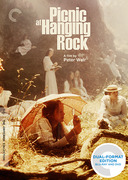
Picnic at Hanging Rock
(1975)Peter Weir
4Pure magic. Every fashion film and NYU undergraduate thesis takes its cues from this lyrical masterpiece. In college I tried to make a satirical remake entitled Lunchtime at Dangling Boulder, but all my actors slept too late.
#11 in Lena Dunham’s Top 10The power of this film is in the way it sustains the sense of mystery throughout. A young girl disappears, and we never really learn how or why. Cinematographer Russell Boyd helps create the ominous mood with photography that is beautiful and threatening at the same time.
#9 in Frederick Elmes’s Top 10I still don’t know what happens in this film, and I’ve seen it three times. And yet each frame is so exquisite you could hang it on a wall. Peter Weir manages to say so many obliquely profound things about repression, innocence, and the price of sexual awakening that he casts an insurmountable shadow over lesser, more concrete films about the same subject matter.
#2 in Dennis Lehane’s Top 105. The first time I watched this film, I felt truly alone and isolated. The juxtaposition of European society and civility with the untamed landscape results in vast and expansive mystery. There is a desperation that comes from watching this film. Of course, this could only end in one way: the cannibalism of Victorian sensibilities.
#5 in Rodarte’s Top 10 -

The 39 Steps
(1935)Alfred Hitchcock
4Prototypical Hitchcock innocent-man-on-the-run thriller—it could be the Hitchcock I’m still most partial to.
#1 in Bruce Goldstein’s Top 10Hitchcock’s great mystery includes a wonderful character called Mr. Memory, not present in the novel by John Buchan. He was based on a drop-out know-it-all autodidact named W.J.M. Bottle, who was billed in vaudeville as Datas, The Memory Man.
#1 in Ricky Jay’s Top 10This was the first thriller I ever saw—on our eleven-inch black-and-white TV set in the small living room of my parents’ home in the suburbs of Birmingham. It was the most romantic and exciting thing I had ever seen, and I can still get lost in it today. The 39 Steps is the blueprint for all the classic Hitchcock films that would follow. Sexy stars, fantastic locations, and quirky cliff-hanger scenes that you want to watch over and over. In this film, it is the Mr. Memory scene that I look forward to most, and every time I see it, it still makes me jump!
#3 in John Taylor’s Top 10It was a Hitchcock film, and there was a code of some kind that required a password with thirty-nine activators. I saw the film when I was about ten years old, and it obviously made a big enough impression for me to put it on your list.
#1 in Haskell Wexler’s Top 10 -

Pandora’s Box
(1929)Georg Wilhelm Pabst
4Louise Brooks defines screen presence. She is so mesmerizing, vulnerable, beautiful, and strong/silent that I had to seek out every one of her performances. There is no other like her, as there is no other Marcello Mastroianni. Diary of a Lost Girl may be even better. If you need to coax a friend to lose their dramatic silent film virginity, start with these . . . and then move to Greed.
#7 in K. K. Barrett’s Top 10Whoever it was who said “There is only Louise Brooks” was right on. With those sad manga-heroine eyes and immaculate bob haircut, she’s become like Marilyn Monroe for nerds. This film is as full of dread and emotion as any modern-day thriller—and all without the benefit of, y’know, audible dialogue. Spectacular.
#8 in Diablo Cody’s Top 10For Louise Brooks. Period.
#10 in Jean-Pierre Gorin’s Top 105. The zenith for both Pabst and star Louise Brooks—the latter has become almost solely emblematic of the flapper age because of this film! Adapted from playwright Franz Wedekind’s story of Lulu, a preternaturally powerful beauty blithely strolling through the mating marshlands of the world, where nature is savagely cruel to both the pursuers and the pursued. Watch this film at different stages of your romantic life span and behold your sympathies shifting all over the place! Ouch! Gorgeous! Ouch, again!
#5 in Guy Maddin’s Top 10 -

À nous la liberté
(1931)René Clair
4I wrote the notes to this one, so suffice it right now that this fairy dystopia comes close to being an idealization of what I love about movies—it’s the paradigmatic spring-afternoon-as-film, the living idea that speaks most clearly to the boy I once was and in some ways wish I was still. I miss that kid.
#11 in Michael Atkinson’s Top 10Bonus: What can I tell you? My father’s old friend René Clair was a genius, and a sweet man, and this is one of the best French films ever made: funny, trenchant, witty, endlessly surprising. If I seem to wax elegiac about French films, it is not only because I saw so many of them but because the French at one time had a film industry that rivaled the world’s—indeed, my father got his start in the film business when he was living as a painter in Cagnes-sur-Mer and was called in by my Uncle Alex to do the sets for Marius, the first and best of Marcel Pagnol’s immortal trilogy, much of the dialogue of which I still know by heart. The war, the occupation, and the postwar domination of the American film industry brought an end to that, but perhaps the most important thing Criterion brings us is a reminder that film used to be part of national culture, and that great filmmaking can be and has been done in every country.
#11 in Michael Korda’s Top 107. Clair at his best, with the top hats flying all about and wonderful music, but it never got to me like my first Clair film—Le million. For me that was the best.
#7 in D. A. Pennebaker’s Top 10 -
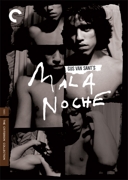
Mala Noche
(1985)Gus Van Sant
4Van Sant is my hero. This movie is a concentration of all the things I love from him: brilliant camera games, muted and unsatisfied love(s), beautiful car scenes. The voice-over is stirring and true, and never useless or superfluous. It is authentic, intimate, universal, and ageless.
#9 in Xavier Dolan’s Top 10Gus is the best. Idaho was one of the first movies with which I fell in love. I would watch it repeatedly when I was a teenager. River Phoenix gives the performance of a lifetime, original and inspiring. As a young actor, I needed nothing more than this performance for inspiration. The film is a collage of techniques, plots, and themes, expertly wound together as only Van Sant is able to do. When Criterion released this DVD with a film-length interview between Todd Haynes and Gus, it was a gold mine for an acolyte like me. There are also great old magazine articles, and an odd conversation with J. T. Leroy, before he was exposed. Mala Noche is Gus’s first film. He financed it with his own money. It’s a great early glimpse into many of the themes that continue to consume him.
#5 in James Franco’s Top 10 -
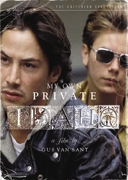
My Own Private Idaho
(1991)Gus Van Sant
4Living proof that masterpieces can be virtually defined by their imperfections, their rangy, headlong energy, their unwillingness to be defined by preexisting codes and preexisting experiences. Gus Van Sant isn’t likely to bump his head on the ceiling of this delirious odyssey anytime soon, and no other American indie-maker will either, even with its Shakespearean absurdities, quasi-doc ramblings, and dreamish non sequiturs. It’s a film that should’ve defined a generation, but strangely it seems to have been semiforgotten in the years since it came out.
#8 in Michael Atkinson’s Top 10It’s hard to pick a favorite Gus Van Sant film, but this one has my favorite River Phoenix performance. It took me a while to warm up to the story while watching it, but by the end I was loving it. I like when movies sneak up on you that way. And hey, it’s in color!
#5 in Steve Buscemi’s Top 10This film is my church. It’s the first Gus Van Sant film I saw, and I was blown away. He zeroed in on a subculture that I thought only I knew about. MOPI is a very ahead-of-its-time film, and I felt privileged to be able to participate with even a small commentary on the Criterion release. The film has never been more gorgeous than it is on the Criterion release.
#8 in Jonathan Caouette’s Top 10 -
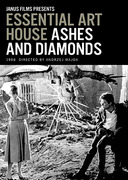
Ashes and Diamonds
(1958)Andrzej Wajda
4Andrzej Wajda’s films had an enormous influence on me as I began writing and directing. I had lunch with him at the National Film Theatre in London, after he had just made Everything for Sale, a film I loved. It was Wajda’s tribute to Zbigniew Cybulski, his friend and the star of Ashes and Diamonds, who died young. In Ashes, Cybulski plays a resistance fighter stranded by a sellout peace. His broodiness and manner seemed to mourn James Dean.
#10 in Stuart Cooper’s Top 10Seeing Ashes and Diamonds again after forty years, I realized how beautifully Wajda married his romantic flair and his unerring sense of history. Zbigniew Cybulski looks as timeless as Brando or Louise Brooks, his maimed glance between those sunshades accusing the postwar world of betrayal.
#9 in Peter Cowie’s Top 10I saw Ashes and Diamonds for the first time in 1961. And even back then, during that period when we expected to be astonished at the movies, when things were happening all over the world, it shocked me. It had to do with the look, both immediate and haunted, like a nightmare that won’t stop unfolding; the sense of maddening insanity and absurdity, the tragedy of political infighting on the brink of peace and coming of age during wartime; and the beauty of the lead actor, Zbigniew Cybulski. The film has the power of a hallucination: I can close my eyes and certain images will flash back to me with the force they had when I saw them for the first time over fifty years ago. I’ve crossed paths with Andrzej Wajda a few times over the years, and I’ve always been in awe of his energy and his unflinching vision. I saw him again a couple of years ago, a little frailer but still as burning with energy as he’d been back in the ’90s, and he was preparing to make another film, now just completed, about Lech Walesa (the final installment of the trilogy that began with Man of Marble and Man of Iron). He’s a model to all filmmakers.
#5 in Martin Scorsese’s Top 10For me, this is an extraordinary example of classic moviemaking, such as we know from Hollywood. It would be interesting to compare it with Casablanca.
#7 in Götz Spielmann’s Top 10 -

The Complete Mr. Arkadin
(1955)Orson Welles
4Criterion’s comprehensive edition of this long-undervalued film is a major DVD event, though it may not enlarge the film’s fan base. The problems, beyond a few incomprehensible plot points, include a dreadful lead performance by Nixon look-alike Robert Arden, who is surrounded by terrific actors in the margins (Akim Tamiroff, Michael Redgrave, Mischa Auer, Katina Paxinou), plus gorgeous Paola Mori; the result feels a bit like Hamlet without Hamlet. Then there is Welles’s wig and beard, evidently borrowed from a junior high school performance of Faust. Never mind: there are many, many unforgettable moments, and the plot is so good—detective as inadvertent Judas goat—that a fine, conventional film could still be made from the same material. Criterion includes the surprisingly good novel, which Welles variously took and denied credit for. In my hearing, he took credit.
#7 in Gary Giddins’s Top 106. A film that could have been as good as The Third Man—if Welles had had a bit more money and a more charismatic leading man. But the unpolished nature of the endeavor gives it a certain mystique.
#6 in Kevin Macdonald’s Top 10No one could make much of a case for Welles’ abortive movie overall, but the heartbreaking glimpses of the great man’s genius preserved here are the most compelling argument for the value of Criterion’s dedication to cinema. 10. Which brings me to Greed, von Stroheim’s lost work of absolute genius. Which is not available on Criterion. Yet. Here’s hoping.
#9 in Christopher Nolan’s Top 103. The critics of Cahiers du cinéma once chose this over Citizen Kane for their “Ten Best Ever” list. I am inclined to agree. The three versions suggest an endless, fascinating “work in progress.”
#3 in Robin Wood’s Top 10 -

Straw Dogs
(1971)Sam Peckinpah
47. I watched this film at a small theater in Paris, with an audience of mostly French people in their sixties. In that environment, it actually managed to resensitize me to cinema violence, something I assumed was impossible. Hearing the gasps from the audience allowed me to see the film as intended. These poor old French people were being assaulted by the film. It was rocking their world! When the lights came up, I was both upset by the film and delighted by the expressions on the faces around me. We were all just looking at each other in silence. After that, I better understood the power of a collective cinema experience.
#7 in Joe Swanberg’s Top 103. Sam Peckinpah and Dustin Hoffman at their best. The rape scene is horrific and haunting.
#3 in Johnnie To’s Top 10 -
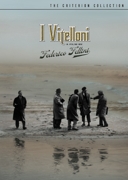
I vitelloni
(1953)Federico Fellini
4A film that continues to grow in my estimation every time I see it, and one that laid the bedrock for the Fellini explosion that was about to take place. So alive and spilling over with character and incident, it feels like a peek into the filmmaker’s own diary. It also features an amazing Nino Rota score and performances to die for.
#7 in Neil LaBute’s Top 1010. My favorite Fellini—maybe because it’s one of his most modest and endearing. The depiction of friendship always touches me.
#10 in Kevin Macdonald’s Top 106. This has got to be the most wonderful film about that transitional period that groups of close friends in young adulthood must go through as they accept more and more the responsibilities of maturity. There is so much spontaneous camaraderie, natural humor, truth, and, finally, Chekhovian sadness in this gentle masterpiece. Plus, those Italian slackers sure know how to dress!
#6 in Guy Maddin’s Top 10 -
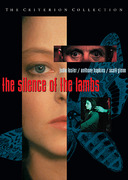
The Silence of the Lambs
(1991)Jonathan Demme
4The second time I went to see this was only a few weeks after the first time. My band was on tour somewhere in Florida, and one person went to a multiplex to see The Silence of the Lambs while the three of us who had already seen it went next door to The Five Heartbeats. I think the opening credits of The Five Heartbeats were still on the screen when I knew I really did not want to sit through what promised to be a dreadful movie. I quickly calculated that I would be considerably more entertained seeing Silence of the Lambs again, even having just seen it, and ran out of one theater into another. I felt like I’d escaped from jail. Just great. Not surprisingly, this film warrants repeated viewings!
#8 in Georgia Hubley’s Top 107. This is one of our all-time favorite films. The Silence of the Lambs is a truly brilliant and uniquely American horror film. It exists as a fragile spiderweb: at the heart of this web a strange and delicate truth remains trapped, always with the hope of escape . . . The intimacy that develops and exists between the characters can be destroyed at any moment, and that is the true terror that propels the action. Ultimately, these fragile relationships are used to explore the most perverted aspects of the American dream: excess, greed, and violence.
#7 in Rodarte’s Top 10I went to see this on opening night at a Los Angeles cinema, having no idea what the heck it was about or what to expect. The room was sold out and I had to sit (with Gary Kemp) in the front row. Holy shit! After several scenes with Anthony Hopkins’s Hannibal Lecter, I turned to Gary and said, “He’s going to be on the cover of People magazine next week.” One could feel the audience adjusting to what they were watching, as the stakes were being raised, scene by scene. It was perhaps the most visceral cinema-going experience I have ever had. And it wasn’t just opening-night thrills. It’s a beautifully made drama, with the most fabulous production design (by Kristi Zea), that happens to double as a horror film. Like with all of my favorite films, I am happy to watch it once a year. The Silence of the Lambs raised the bar for contemporary popular filmmaking. Somewhat like Pulp Fiction or Jaws, it changed everything.
#9 in John Taylor’s Top 10 -

Night and the City
(1950)Jules Dassin
4Jules Dassin’s tour of the London underworld glistens with inky blacks, swirls of smoke, pockets of isolated light, a mise-en-scène broken into Mondrianesque squares, and stunning performances by Francis L. Sullivan, Googie Withers, a Greek wrestler named Zbyszko, and, in the defining performance of a career that ought to get one of those sorry-we-overlooked-you lifetime-achievement Oscars, Richard Widmark, who indulges a brief moment of elation by hurtling a stair railing to affect an incongruous pose of Chaplinesque delight.
#5 in Gary Giddins’s Top 10A quintessential film noir by a master of the genre. In style and theme, it resembles a later favorite of mine, Sweet Smell of Success.
#12 in Bruce Goldstein’s Top 10What could be better than this riveting romp through the demimonde of London? Richard Widmark’s performance is a testimonial to excess, and, for my money, The Rock can’t hold a half-nelson to the wrestling or acting skills of Stanislaus Zbyszko.
#10 in Ricky Jay’s Top 10Richard Widmark’s finest moment. Jules Dassin’s too. Following the ten-cent dreams of a five-cent loser to become a wrestling promoter in the seedy London underworld, Widmark and Dassin locate the authentic heart of noir: working-class tragedy played out for Shakespearean stakes.
#6 in Dennis Lehane’s Top 10 -

Being John Malkovich
(1999)Spike Jonze
4A few days ago, I had a chance to meet Spike Jonze, and we talked briefly. The meeting left me with a strong impulse to go inside his head and explore the corners of his mind.
#10 in Bong Joon-ho’s Top 10This is one of my favorite films of all time. This film really showed me that we can still push the limits while telling a great story.
#1 in Flying Lotus’s Top 10The fact that John Cusack climbing into someone else’s brain can be completely described in forty-five seconds of dialogue without ever seeming particularly implausible is a testament to how well this movie is written. It’s just a totally immersive experience.
#8 in Chuck Klosterman’s Top 10I didn’t know you could just do this. Seriously, you can just do this?
#10 in Nicholas Stoller’s Top 10 -
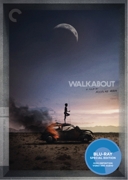
Walkabout
(1971)Nicolas Roeg
4I saw this when I was maybe twelve years old. The father’s suicide, the dead guy in the tree—images that bothered me for decades. Chop that meat.
#7 in Frank Kozik’s Top 107. The best British film of the 1970s. I love the symbolism and camera work.
#7 in Kevin Macdonald’s Top 10I am a huge Nicolas Roeg fan and consider this and his 1973 masterpiece Don’t Look Now to feature some of the best editing of all time, with visual and audio juxtapositions that wow even now. Walkabout is cinema as poetry. Images rhyme with one another in a truly hypnotic fashion. Scenes are as vivid and intense as they are unreal and lyrical. There’s a phantasmagorical array of images, but also a rigorous, genius sense of structure.
#10 in Edgar Wright’s Top 102. Saw this one when I was in junior high school and it stayed with me. Glad to see it in the collection.
#2 in Adam Yauch’s Top 10 -

Crumb
(1995)Terry Zwigoff
4A film as depressing as it is inspiring. Heartbreaking, thoughtful, fascinating. Bitter and sweet, cool and creepy. It kinda makes you want to become an artist, and kinda makes you want to slit your wrists. It washes over you—leaving you really wanting to take a shower and wash it off. —RBG
#8 in Robert Ben Garant and Tom Lennon’s Top 10What can I say? Crumb had to go on my list, if for no other reason than I really appreciate seeing an uncompromising maverick get his well-deserved props. You might be thinking to yourself, Man, Robert Crumb is a weird guy—and then you meet his brothers!
#8 in Keegan McHargue’s Top 10I bought comics every weekend as a kid. Damn, I wish I’d known about Robert Crumb’s comics. Sexually bizarre, graphic, and trippy, his world is a mess of asses, boobs, and tongues. In this film, we meet the man who creates and draws that world. And his real world isn’t so different from the books he makes.
#5 in Dominic Monaghan’s Top 10If you’re worried that you’re crazy and want to feel sane, watch this riveting documentary about artist R. Crumb and his relatives. His family defines dysfunctional. He alone found a way to channel the dysfunctionality into creativity as a unique form of visual art.
#3 in Andrew Weil’s Top 10 -

Withnail and I
(1986)Bruce Robinson
4One of the funniest goddamn films ever made—with an amazing performance by the brilliant Richard E. Grant.
#7 in Anthony Bourdain’s Top 10Among other things, the best film about the demise of the sixties counterculture. With iconic performances by Richard E. Grant, Richard Griffiths, and the unbelievable Ralph Brown. Stupidly funny.
#10 in Donald Fagen’s Top 10London. The swinging ’60s. But not for these broke actors, who have just left drama school. To break the monotony of the phone never ringing, they make the fatal error of leaving London for “a charming weekend in the country.” Gay uncles, disgruntled farmers, terrifying poachers, and lots and lots and lots of alcohol ensue. Hang on for the ride. Richard E. Grant has never been better. Paul McGann plays it straight and anchors the whole thing. The soundtrack is wonderful. Must watch with alcohol.
#9 in Dominic Monaghan’s Top 101. Heavy tweeds, craven pot smoking, paranoia, and Wellingtons, set in the mucky English countryside. It established my Anglophilia at age fifteen; I memorized Hamlet’s soliloquy by multiple rewindings of the final scene; and I still have a major crush on Paul McGann.
#1 in Leanne Shapton’s Top 10 -
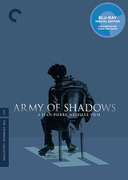
Army of Shadows
(1969)Jean-Pierre Melville
4A hard, unflinching look at what it was like to resist during wartime France. Personally, I prefer Bob le flambeur, but any Melville is good Melville. And this is very, very good.
#8 in Anthony Bourdain’s Top 10My admiration for Melville was propelled to a new level when I saw Army of Shadows for the first time in 2006. The level of suspense and paranoia that Melville is able to sustain throughout is astonishing, as is the performance by Lino Ventura. Thank you to Rialto Pictures and Criterion for making this available to us on the big screen and the small.
#1 in Dave Filipi’s Top 10Jean-Pierre Melville is once more a director from whom one could pick any film for this kind (cruelly controlled by the Criterion criminals) of list. With this double bill there comes a chance to study twice the work of two great actors, Lino Ventura and Paul Meurisse.
#21 in Aki Kaurismäki’s Top 10Our parents never explain the war. We are asked without words to pay lip service to their sacrifice. Army of Shadows puts a face on the story. Never mind the long tracking shots; Melville takes you there.
#2 in Andrew Loog Oldham’s Top 10 -

House of Games
(1987)David Mamet
4Mamet’s best film. Joe Mantegna’s best film. A suspense film about the big con. With a tight, delightfully convoluted script, great dialogue—and Ricky Jay!
#9 in Anthony Bourdain’s Top 10I dig movies about con men, and I think it’s because I saw this in high school. It was bizarrely educational. I also love the way David Mamet makes characters talk; it is my sincere hope that Criterion eventually gets the rights to Glengarry Glen Ross and The Spanish Prisoner. I offer to write the liner notes for free.
#6 in Chuck Klosterman’s Top 1010. I hope it’s not too egocentric of me to choose a film that I’m in, but I’ve had a more than thirty-five-year connection to David Mamet, and this being our first film together makes it very special for me.
#10 in Joe Mantegna’s Top 10My favorite David Mamet film, with endless and unexpected twists of plot that leave you stunned and entertained. Has a deliciously perverse ending.
#4 in Andrew Weil’s Top 10 -
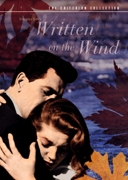
Written on the Wind
(1956)Douglas Sirk
4I’ve been directing television for almost twenty-five years. In that time, one thing that I have learned for sure is that Douglas Sirk is the godfather of all dramatic television. It all comes from him. The best of television is redolent with his sense of ironic and knowing melodrama. He piles on the conflict in each and every scene. Bad things and disappointment stalk his characters, but always with style. The first ten minutes of Written on the Wind are literally drunk with this style. Robert Stack drinking from the bottle in an intensely yellow sports car, hundreds of leaves that blow through a Texas mansion, pages of a calendar that flip through time, and, above all else, Dorothy Malone. Nobody mambos like Malone: the sequence where she drunkenly mambos in her room while her father dies of a heart attack is choreographed for the camera like a Minnelli musical. Sirk blocks a scene with such dynamism and artfulness you can turn off the sound and know exactly what’s going on. All That Heaven Allows got me into Sirk, but Written on the Wind is the poster on my office wall—it’s a touchstone, a timeless piece of popular art.
#9 in Allan Arkush’s Top 10An oily, sexy, ridiculous melodrama that once seen is never forgotten. Lauren Bacall seethes, and Dorothy Malone is scrumptious as a platinum-haired nympho who just wants to get out of Hadley.
#2 in Diablo Cody’s Top 10The shot with Dorothy Malone walking down the stairs makes all rock videos ever after resemble forgotten, anemic nuns. With his small masterpiece, Fassbinder shows us the basic tenderness of his heart, this time not hidden behind his cinematic skills.
#8 in Aki Kaurismäki’s Top 109. Sirk’s assembled team of actors and craftspeople has never been better! Frank Skinner’s underrated score really carries this hurtling narrative from its first insane notes, dialing up the Euripidean melodramatics to levels worthy of the luridly saturated Technicolors lensed by Russell Metty. Rock Hudson, Robert Stack, Lauren Bacall (of that certain age long before any other Sirk heroine), and the impossible-to-carbon-date Dorothy Malone, in a helmet of dead hair, whirl around each other like a mobile in a gale, all the while perfectly delivering dialogue as confected as Alexander Golitzen’s decors. Hard to believe Rock’s muse, Ross Hunter, didn’t produce this one!
#9 in Guy Maddin’s Top 10 -

Rififi
(1955)Jules Dassin
4Jules Dassin’s gangster film about a robbery and its consequences is a French classic, noir before the word was in use to describe a certain kind of filmmaking. A word is in order here: I was educated in Switzerland, in an era when French-speaking people expected to see French films, so when we were allowed to go to the local cinema at Rolle or Gstaad, we mostly saw French films. British films, except for The Third Man, which is very “European” in tone, seldom played; still less big Hollywood ones. Rififi was a stunner, and an eye-opener, teaching us that French gangsters were a lot more interesting and attractive than our own mobsters, but just as tough, if not tougher. “Julie” Dassin was an American who moved to France, but he captured a whole, pungent slice of French life, and for months everyone at my school (le Rosey) went around trying to sound like Jean Servais, and to talk with a cigarette glued to their lips. Whole scenes from it still play in my fantasies.
#5 in Michael Korda’s Top 108. Jules Dassin again. One of those movies that I wish I was around then and could have been in . . . if I could speak French!
#8 in Joe Mantegna’s Top 10I love that Jules Dassin took an archetype like the mentor and turned him into the main character. One of the greatest heist films I’ve ever seen, Rififi employs character for the sake of plot progression, resulting in a unique economy of filmmaking. Pure entertainment. Plus, the details: padding a hammer not leaving matches or cigarette butts during a heist, catching debris with an umbrella. And that’s just one scene.
#7 in Scott Morse’s Top Ten3. I have always loved heist movies, don’t ask me why, and this is the best.
#3 in Al Reinert’s Top 10 -
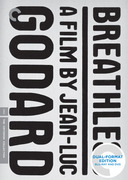
Breathless
(1960)Jean-Luc Godard
4It was 1966, my senior year of high school, and with one of my closest friends in tow I cut school and went into New York, to the Bleecker Street Cinema, to see a double bill of Breathless and 8 1/2. I had seen foreign films before, but nothing like these two. We loved Breathless. It was rebellious, anarchic, romantic, and the characters were so superkool we wanted them in our seventeen-year-old lives. But as much as Breathless moved and influenced me, 8 1/2 rocked my world. In the first five minutes, during Guido’s dream, I could feel my brain collapsing in on itself. The camera’s POV of Guido’s foot tethered to the ground as he floats high above the ocean, then suddenly falling only to awake with a hand grasping for consciousness, was deeply personal for me. I often wake from my nightmares in much the same way. Forty years later, in season one of Heroes, an episode called “6 Months Ago” afforded me the opportunity to re-create those very same shots. It was thrilling to use those same images in the service of a different story of my own creation. If forced to name my all-time favorite movie sequence, the childhood memory of “Asa Nisi Masa” would make the final four. It is cinema as magic. The way the mentalist grapples with the words Asa Nisi Masa, and we travel through Marcello Mastroianni’s mind and into a haunting memory of the past. His childhood is alive with mysticism, mischief, and a lost family’s love. Don’t get me started about the exquisite finale, with its parade of characters and clowns. Is Guido dead or not? I still haven’t decided. Leaving the Bleecker, my mind permanently blown, I thought that I would never understand this movie—and that is one of its strengths. After forty-two years and as many viewings, it reminds me of the best of Bob Dylan, the last line of “Frankie Lee & Judas Priest”: “Nothing is revealed.”
#2 in Allan Arkush’s Top 10I’d lie if I said this film doesn’t knock my socks off—I’d like to, since it’s so prevalent, but it’s undeniable how cool and free it is! This will never be replicated ever; it’s Godard’s Citizen Kane, cursed by that fact, I’m sure, but thank God he hired all the right people and made it. Cool was dead after it—why bother?
#9 in Miguel Arteta’s Top 10A great example of cinema-to-be. The nonchalance, the free form. So much cinema from so many decades owes a nod to the tricks in this one.
#5 in Andrew Loog Oldham’s Top 10I remember the unique cutting patterns and Godard’s statement that storytelling needs a beginning, middle, and end, but not necessarily in that order.
#4 in Haskell Wexler’s Top 10 -
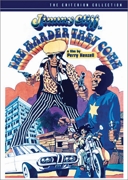
The Harder They Come
(1973)Perry Henzell
4I first saw this in Detroit— I was seventeen, it was 1975. We lit up our Colombian spliffs, along with everyone else in the theater, an all-smoking venue. I’d never listened to reggae before. I’d never seen a movie where the hero is last pictured in a rain of gunfire, still blasting his pistol, the immortal prince.
#6 in Susie Bright’s Top 103. As close as any film I know to folk art—how this film came about, how it could be the way it is, is a mystery and a miracle.
#3 in Whit Stillman’s Top 108. Susan has her ear to the street. She always looks for some interesting stuff to put out.
#8 in Adam Yauch’s Top 10 -
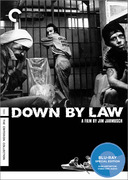
Down by Law
(1986)Jim Jarmusch
4When I was seventeen, I dressed like John Lurie and Tom Waits in Down by Law. They were the apex of cool in my book. This is my favorite Jim Jarmusch movie. The “I scream. You scream. We all scream for ice cream” scene is classic.
#13 in Bill Hader’s Top 10“I’m afraid we live at the mercy of a power, maybe a God, without mercy. And yet we find it, as I have, from others.” —Philip Levine
#4 in Iron and Wine’s Top 10My personal favorite from Jim Jarmusch, one of our finest American auteurs. If as filmmakers we’re all just laboriously trying to simulate the rush of texture and emotion you get from listening to great music, no one has ever come closer to smacking the heart of a Tom Waits tune up there on the screen than Jarmusch.
#10 in Rian Johnson’s Top 10I love pretty much everything Jarmusch does, and Down by Law is as good an introduction to his work as any of his many wonderful films. Now that I think about it, be sure to also check out Mystery Train and Night on Earth, probably before watching Down by Law because they’re a bit more accessible. Then come back to Down by Law and watch it again, and see how it gets better each time, and how you want to relive it like a nice dream. The world of Jim Jarmusch is a truly wonderful place, like a little corner café for cinema lovers to spend their days in. Bonus: Roberto Benigni is just incredibly delightful in Jarmusch films. Hey, Criterion, can we get a nice Ghost Dog set?
#6 in Kazu Kibuishi’s Top 10 -
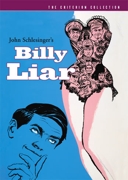
Billy Liar
(1963)John Schlesinger
4An early sixties, black and white British gem from John Schlesinger. Tom Courtenay plays a dreamer who wants to bust out of his small town with the help of Julie Christie. One of the saddest endings to a comedy I’ve ever seen. I saw John Schlesinger give a Q&A after a special screening at the Film Forum, and he said he didn’t feel that the ending was sad at all, just appropriate to Billy’s character.
#1 in Steve Buscemi’s Top 10In the early sixties, young Tom Courtenay knows he’s got to leave soul-killing Yorkshire and escape to London, where it’s all about to happen. Awesome Julie Christie tries to help, but can Tom get it together?
#4 in Donald Fagen’s Top 10Being swept up in British pop culture and its swinging sixties scene is something that I am not close to alone in and yet may be hard-pressed to explain. Well, the British are so beautiful, and you can’t understand a word they’re saying. Screaming girls and Beatle haircuts may provide some distraction, but A Hard Day’s Night captures the mood of a traumatized postwar culture just as effectively as other, starker films of the “new” British cinema. In Billy Liar, Tom Courtenay’s Billy could be a famous Beatle in the making except that comedy writing is his calling, and the more eccentric and imaginative he allows himself to become creatively, the clearer it is how stifled he is by his family, his lack of self, and his generally dismal surroundings. The bleakness and futurelessness are so embedded in this character’s outlook and ultimate outcome that even the sway of Julie Christie’s modern vivaciousness and beautiful smile can’t compete with his inability to rise out of his own sorry lot in life. Just a little bit heartbreaking.
#9 in Georgia Hubley’s Top 10I’m known for “extending the truth”—my stories tend not to be limited by what actually happened but by what can sound the best! So I empathize here with Billy. A young man interested in raising his class level in the 1960s, he tells anyone who wants to hear that he is going to London “to be an actor.” His story becomes more and more transparent and tragic. Great movie.
#7 in Dominic Monaghan’s Top 10 -

Dazed and Confused
(1993)Richard Linklater
4I love this movie and always have! And now I get to love it more on this far-out DVD package. Until watching the accompanying doc, I had never really thought of the film as a 1970s American Graffiti—for me, the fun of it is in the ensemble cast of young people, many of whom became huge stars later—it reminds me more of Fast Times at Ridgemont High.But also on this doc is an extraordinarily frank look at the difficulties of making this film. People in the movie business—indie or otherwise—are rarely this honest in discussing what it took to get the film you see on the screen. I really appreciated the honesty of Jim Jacks and Richard Linklater, who, uh, shall we say, didn’t always agree on the set. Also, the interviews with the young actors, like Marissa Ribisi, talking about the approach Linklater took with them, were completely enlightening. I plan to steal his entire approach from now on. :)And the packaging is an artifact to have for keeps: the cover artwork by Marc English, based on the Led Zeppelin III album cover, is supremely inspired, and the booklet is a high school notebook. It’s great pop culture folk art! I own a collection of Memoryware folk art that people used to make with all their leftover trinkets and little pieces of their lives: earrings, coins, buttons, etc. They’d take these mementos and put them in plaster on top of an old jug or jar and call them “memory jugs” or “memory jars.”And this is what this DVD is for me—a keepsake. A memory jar of seventies pop culture. No, of 1976. No, of specifically 1976 Austin, Texas. And yet . . . it’s a memory jug of anyone’s last high school rite.
#9 in Allison Anders’s Top 10A film that seems to get more important every year, and I don’t mean that facetiously. I don’t think it’s actually possible to make a flick about high school in the 1970s that surpasses Linklater’s. He did it. It’s done. We all got served. The characters have perfect names too: Pink, Mitch, O’Banion, etc.
#9 in Diablo Cody’s Top 10Quick! What film do you think of every time you hear the beginning of Aerosmith’s “Sweet Emotion”? I think anyone who grew up even close to the era depicted in Dazed and Confused knows how pitch-perfect it is. That younger viewers can appreciate it as a hilarious stoner film, and that older viewers, with the presumed wisdom and perspective that comes with age, can appreciate the often poignant depiction of both the carefree joy and daily traumas of our teen years, is a testament to Richard Linklater’s ability to craft naturalistic dialogue and create well-rounded characters, even within an ensemble cast. The film includes perhaps my favorite use of a song in a film: Bob Dylan’s “Hurricane” over the slow-motion entrance of Pink, Wooderson, and Mitch into the pool hall. The moment really sums up the film for me. It’s a moment that seems to capture the fleeting promise of youth (Mitch) and the weighty permanence of unfulfilled potential (Wooderson). There is an array of great extras on the Criterion release, so there is no reason not to own this one!
#3 in Dave Filipi’s Top 10I first saw Dazed and Confused the day I got my driver’s license. It was like an instruction film on what was in store for me. I grew up in Tulsa, Oklahoma. They were in Texas. This movie was my exact high school experience if you just replace Kiss with Phish.
#7 in Bill Hader’s Top 10 -
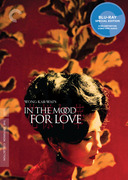
In the Mood for Love
(2000)Wong Kar-wai
4This film about intimacy and longing was the first movie I saw by Wong Kar-wai. He has found a way to draw you into the personal lives of strangers and wrap you in their secrecy. The visual style and sense of color still intrigue me.
#10 in Frederick Elmes’s Top 10This seems to me one of the most delicately melancholy and yet vibrantly beautiful films I’ve ever seen. It’s heartbreaking and infuriating, convoluted and yet transparent. The color, fabrics, and décor make me wish I could relocate into a world of low, heavy light, constricting clothing, and dank, long halls even at the expense of my own happiness. I also have to bring up my other favorite Wong Kar-wai film Chungking Express. It’s just as beautiful, but slightly more lighthearted.
#6 in Caitlin Kuhwald’s Top 102. Epic. Wagnerian. A love story told in vibrant colors, sound, chinoiseries, wallpaper, and sheets of rain.
#2 in Rodarte’s Top 107. It’s a film with great flavors. I wish it would just play on and on.
#7 in Johnnie To’s Top 10 -

Young Mr. Lincoln
(1939)John Ford
4I’m not in love with John Ford’s movies. They are staples, and it’s like saying you don’t like bread—Ford’s films are in all filmmakers’ foundations, somewhere, it’s inescapable. But when it comes to being in love with movies, I’m more of an Anthony Mann girl.Having said this, Ford’s Young Mr. Lincoln is one of the most beautiful films ever made. The images early in the film of Henry Fonda in his thick, unruly, natural environment of rivers and briars and brambles strike my heart in ways so deep I can’t even explain. The majestic landscapes Ford would be later known for are much more grounded here, more personal. What he shot reminds me of a home so far ago lost. And there is a feeling of that, deeper than nostalgia, running all through this film. It’s like a grand American ache.Henry Fonda explains on the commentary how he initially turned the film down, then the screenwriters went to his house and READ HIM THE SCRIPT! Out loud! What balls! I can’t imagine anyone doing that these days. Then he said yes to the part, did the screen test with the fake nose and flipped out when he saw himself as Lincoln and felt he couldn’t do it—he couldn’t play someone with that weight that Lincoln had and still carries and holds. Well—I won’t spoil it for you—you MUST hear what very simple ingenious thing grumpy old Ford said to get Fonda to do the role.Supporting Fonda’s performance is an incredible cast—Alice Brady in her final performance before her early death, Ward Bond, and Richard Cromwell (whom I had a real sweet thing for)! The booklet is just as poetic as the movie, with essays by Geoffrey O’Brien and Sergei Eisenstein between the pages of lovely quiet stills of a very accessible yet long-gone American landscape.
#5 in Allison Anders’s Top 10Since my daughters were old enough to enjoy movies, I have been giving them an ongoing Film Appreciation course. The successes—Bringing Up Baby, Rio Bravo, Holiday, On the Waterfront, Rebel Without a Cause—outweigh the failures of Dr. Strangelove, Citizen Kane (“Yeah, Dad, it’s supposed to be great, but I didn’t like him at all. Kane deserved to die alone”). When my youngest was eight years old, she was learning about the Civil War. So one night we watched Young Mr. Lincoln. I prepped for the screening by watching all the extras and commentaries. After giving her the proper historical and cinematic introduction, we watched the movie. It was even better and more original than I remembered it. Jackie’s response put her at the head of my class. “It was really good, funny too. But at the end, when Abe Lincoln rides away, he says he’s just riding up the hill. I don’t think he is. It looked to me like he was riding into history.” I couldn’t have been prouder!
#4 in Allan Arkush’s Top 10What can I say? Mon frère français va parler pour moi. (Check J. P. Gorin’s top ten again.)
#8 in Pedro Costa’s Top 10When asked to name a filmmaker who interested him, John Ford answered, “Renoir.” Pressed to name one film, he growled, “All of it.” Time to return the compliment: “John Ford . . . All of it,” if one wants to tap back into the ethos and the pathos of the republic and understand in the process both that form and content were never separate entities and that figures don’t have to be squarely at the center of the frame for a film to exist—crucial reminders in these times of ours.
#2 in Jean-Pierre Gorin’s Top 10 -

Monsieur Hulot’s Holiday
(1953)Jacques Tati
4. . . because I’ve seldom laughed so hard in a film and because I got to know Jacques Tati in the late sixties, around the time he was making Playtime and I was just beginning to direct.
#4 in Stuart Cooper’s Top 10This is art concealing art. On the face of it, the film is a gentle satire of French bourgeois life on holiday. There is no story, just Hulot (Jacques Tati himself) drifting innocently through a holiday resort, leaving a trail of confusion behind him. The gags are wonderful, apparently effortless, the situations natural. In reality, the film is the extraordinary creation of a man obsessed with perfection. Each move, each image was planned in detail by Tati until the gags were immaculate; the tennis ball that bounces off the head of the serious little girl curtsying to her elders, the paint pot that floats out to sea, then back on the opposite side of the beached fishing boat; everything apparently natural, everything the product of intense creativity.
#5 in Christopher Hobbs’s Top 10When I try to describe Jacques Tati’s hypnotic portrait of a summer season at a seaside resort to uninitiated friends, I ramble for a bit then cough up something like “Chaplin by way of Fellini.” In my defense I usually feel so guilty about this ridiculous description I end up buying them the disc.
#6 in Rian Johnson’s Top 104. So funny I disrupted a screening with my laughter.
#4 in Tom Schnabel’s Top 10 -
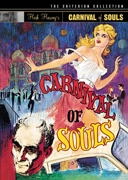
Carnival of Souls
(1962)Herk Harvey
4Another incredible thing about Criterion is that in addition to the classics, the treasures, the widely acclaimed, they also have a true love for cult and lowbrow cinema. Director Herk Harvey explains on the Carnival of Souls commentary that they had hoped the film would have an art-house release, and they actually approached a distributor successful in that market and were told that, since it wasn’t in a foreign language, it didn’t really fit. I’m sure being American-made wasn’t the only reason this was a hard fit for distributors, but it was interesting in terms of what art houses were looking for at that time and how the filmmakers saw the film’s niche.This film taught me how to watch Mulholland Drive . . . which is to say, if you stay with the mood, without fighting it, your intuition will serve you far better than the plot and structure and logic your brain is craving. Because essentially all stories are simple; what isn’t simple is the underneath of it all. And that’s more rewarding in the end.I was on a plane about ten years ago when a businessman sat down next to me. Like most people, I dreaded having to talk to someone new. I figured he wouldn’t talk to me anyway, ’cause I have tattoos and he looked very straight-up corporate. He immediately smiled and asked me who I was, what I did for a living. I told him I made movies, but probably none he’d ever heard of. Indie movies. I figured that would shut him up so I could look out the window and mope. He smiled big—“Oh, you mean like cult movies?” I shrugged kindly—well, yeah, I guess you could say that, hopefully that. He said his sister had been in a movie when he was a youngster. A film as independent as it gets. One that had become a cult classic.Somehow I just knew what he was going to say next. His sister was not Candace but another girl in the film, and that man and I talked about Carnival of Souls for well over an hour. And then we spent the next two hours of our flight engrossed in each other as he told me vividly of the supremely radical life he’d led prior to becoming a businessman for the environment! You just never know . . .
#4 in Allison Anders’s Top 10Thank you, Criterion, for putting this amazingly creepy film out into the world in such a beautiful, definitive way. This is by far one of my favorite psychological horror films of all time. The Criterion version was an unbelievable step up from the VHS copy I had of this for years, when the film was strangely titled Corridors of Evil, for some reason. Carnival of Souls is like a fever-dream-elongated Twilight Zone episode. It’s a masterpiece, and I love falling asleep to the film as well. It induces great, strange dreams.
#4 in Jonathan Caouette’s Top 10The images in this film still scare me, though I’ve seen it many times. I first watched it late at night, alone, in my empty apartment. The story isn’t that compelling, but the juxtapositions of frightening images will keep you up all night.
#7 in Frederick Elmes’s Top 101. Herk Harvey’s ahead-of-its-time 1962 low-budget film would be the template for many horror films to follow. But to call this simply a horror film would not do it justice. It will, however, scare the bejesus out of you!
#1 in David Markey’s Top 10 -
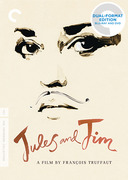
Jules and Jim
(1962)François Truffaut
4The love triangle in this movie has probably been the biggest influence on my writing. Truffaut’s rivals aren’t out to destroy each other, they love each other as much as the woman they’re chasing, and this makes the conflict and complications all the more powerful. This film taught me that as a screenwriter you have to have compassion for all your characters, and that nothing is ever black and white.
#10 in Hossein Amini’s Top 10My introduction to the French new wave. The way Truffaut dealt with relationships seemed so different. Jeanne Moreau is magical.
#8 in Chris Hegedus’s Top 1011. A miracle of discontinuity and absurd tomfoolery, but with the help of a fantastic music track and a great measure of talent from everyone connected—including the costume designer—it took off and never touched ground again. I first saw it in France, with no subtitles, and thought it was a wonderful story. When I saw it later with subtitles, I realized I’d gotten it all wrong. It was a completely different story. But it turned out not to matter. It’s simply a wild film ride. And the joke for me was that I thought I understood French.
#11 in D. A. Pennebaker’s Top 106. I love the moment in French cinema this film captures: the height of the French new wave, when Truffaut honestly believed he could lead a revolution against the bourgeois establishment with a camera and impeccable taste. It is funny, however, that any truly brilliant piece of political artistry eventually becomes seen as established taste. No matter how you view the film, as a feat of aestheticism or a revolution of sorts, it is incredibly stunning and thought provoking.
#6 in Rodarte’s Top 10 -
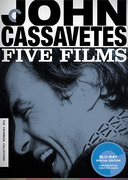
Opening Night
(1977)John Cassavetes
4Not much to add about Cassavetes, except that Criterion has put together an incredible box set, John Cassavetes: Five Films. There are alternate cuts, interviews, and documentaries, as well as the incredible films. Woman and Opening Night show Gena Rowlands at her best. These films contain performances that will never be matched, but are also structural innovations. I wish I could make movies like this.
#7 in James Franco’s Top 10Choosing a Cassavetes film was the hardest part of making this list. All his films have continued to inspire me—every aspect of them. He’s one of the only filmmakers where I will put on the DVD just to listen to his commentary. His ideals, his pursuit of the road less traveled—and traveled in a way that is curious, thought-provoking, and dangerous—have always excited me. I take his box set with me to every set. Each film has an incredible backstory, and leaves me thinking, How the hell did he pull that off?!
#4 in Brie Larson’s Top 108.
#8 in John Lurie’s Top 10 -

Time Bandits
(1981)Terry Gilliam
4Okay, I’m getting carried away. But I can’t help it. Here again, Time Bandits would be ranked as my favorite of the two, for its innocence and subversively “kid-friendly” delivery—though at its heart, it’s every bit as dark as the priceless Brazil.
#11 in Mike Allred’s Top 10Best film Napoléon ever—courtesy of Bilbo Baggins, no less. Connery as Agamemnon isn’t bad either.
#6 in Frank Kozik’s Top 10When I was a kid, the ending of this movie, where Kevin’s parents touch pure evil and explode, scared the shit out of me. I know Brazil is technically the more mature of Terry Gilliam’s films, and yet this is the one I go back to again and again. I’ve watched it many, many times since then, and I still don’t understand how it works. Gilliam creates an entirely plausible alternate universe with its own unspoken internal rules. It’s nightmarish and yet taps into what every kid desires/fears . . . the need for life beyond the yoke of one’s family. That last moment—which I’m sure was just a goofy set joke—was my first taste of existentialism. It freaked me out. I still don’t cerebrally understand why that moment ends the film. And yet it somehow works. I have yet to introduce this film to my daughter. Not sure when/if I will.
#4 in Nicholas Stoller’s Top 10 -
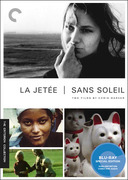
La Jetée
(1963)Chris Marker
4How can a film composed almost entirely of still frames and of such a brief length be such a revered and influential summation on the very nature of cinematic time? There is nothing else like it in all of cinema. It is perfect.
#7 in Dave Filipi’s Top 10Typically, I saw La Jetée, my first Chris Marker, in film school. To this day, I’ll hold that no other film is as great a contemplation of cinema in a way—and this is the important part—that is immediately accessible to anyone and everyone, not just students of semiotics or, for that matter, kids in film school. Sans Soleil is, of course, another matter altogether, which is what makes their Criterion pairing so auspicious.
#7 in David Hudson’s Top 10See entry for The Rules of the Game.
#7 in James Schamus’s Top 10 -

The Man Who Fell to Earth
(1976)Nicolas Roeg
4The first R-rated movie I remember seeing (my cousin took me). I’ve always been a big fan of monster movies and sci-fi, but this was a shot between the eyes. I’m a huge David Bowie fan, but even if I wasn’t, I’d argue that no rock star has come as close to perfectly filling a role as he does in Nicolas Roeg’s mind trip (second place would go to Mick Jagger in Roeg’s earlier Performance).
#2 in Mike Allred’s Top 10Nicolas Roeg’s films never cease to be fresh and youthful.
#8 in Bong Joon-ho’s Top 10Along with Lynne Ramsey, Nic Roeg is one of my favorite British directors, and he had a brilliant run of incredible, kaleidoscopic films. Don’t Look Now is one of my all-time favorites, but I love this too. It really gets to the heart of feeling alone in the universe. It’s like Five Easy Pieces, but with an alien. It’s also completely bonkers.
#10 in Andrew Haigh’s Top 10In Walter Tevis’s novel Roeg found material absolutely suited to his hallucinatory, prophetic style. Mutilated on first release, eternally underrated, this is one of the great films of the seventies.
#10 in Jonathan Lethem’s Top 10 -
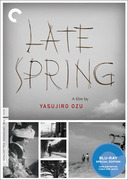
Late Spring
(1949)Yasujiro Ozu
4Gotta have Ozu, and this one seems to me to be the gentlest. Any would do, of course.
#4 in Michael Atkinson’s Top 10In his top ten, Jean-Pierre Gorin tells you about John Ford’s praise of Jean Renoir. I’ll try to top his story: One day, Mizoguchi was asked who his favorite filmmaker was. “Ozu,” he answered without hesitation. And the journalist asked him why. “Because what he does is much more difficult than what I do.” (Needless to say that those six Mizoguchis in the Criterion Collection are priceless and were among Ozu’s favorite films.)
#3 in Pedro Costa’s Top 102. Is Setsuko Hara the most beautiful actress in movie history? That’s just a rhetorical question . . . the answer, of course, is yes. In Late Spring, she plays the young daughter of a widowed father who reluctantly wants to see her married. I am the man she should have married, but that’s a different story. Like many cinephiles, I was first drawn to Ozu by his serene compositions, the meditative “pillow shots” of train stations and empty rooms that served as scene transitions, and the exquisite way that his films explore the architecture of domestic and urban life. Repeated viewings reveal that underneath the director’s formal, often eccentric playfulness, there lies a fascinating undercurrent of sexual neurosis and pathology that is thinly masked by the demure self-sacrifice of the characters. In their own quiet way, Ozu’s families are deeply fascinating. And this two-disc set has an amazing bonus: Tokyo-ga, Wim Wenders’s loving and thoughtful feature-length tribute to Ozu, the actor Chishu Ryu, and Tokyo. It’s a first-person documentary and urban portrait par excellence, photographed by Ed Lachman.
#2 in David Schwartz’s Top 10 -

Repulsion
(1965)Roman Polanski
4One of the most horrifying films ever. A nightmare transposed into cinematic form. A rare thing. I hope to achieve making a film like this one day. The restoration that you all did is amazing. Bravo.
#9 in Jonathan Caouette’s Top 10The disturbing images in this Polanski film have stayed with me since I first saw it. Catherine Deneuve’s descent into darkness reminds me that powerful cinema can take you inside another person’s head and show you horror through their eyes.
#3 in Frederick Elmes’s Top 10I read about Repulsion in a book about horror movies when I was thirteen. I smuggled it out of my local Blockbuster when they wouldn’t rent it to me (I switched its box with Father of the Bride). Watching it late at night and feeling I was getting away with something while being scared shitless was an experience I’ll never forget.
#9 in Bill Hader’s Top 10This is the most terrifying film I’ve ever seen. It’s a story about a quiet young woman named Carol Ledoux who is a manicurist in London. As the story unfolds we see that she is more and more disturbed and strange. We learn that she is sexually obsessed and actually repulsed by sex at the same time. Her sister and her sister’s lover share an apartment with her, and she’s more and more disgusted by hearing their lovemaking every night. When they leave London to vacation in Italy, she barricades herself in the apartment, and as the days pass she becomes more and more insane. The story escalates, but I won’t tell you the ending. It would spoil it for anyone who hasn’t seen it. This film freaked me out so much that it was a long time before I could stay alone in my apartment—and I must admit, I’m still affected by it.
#10 in Mary Ellen Mark’s Top 10 -
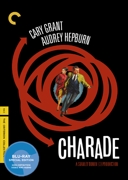
Charade
(1963)Stanley Donen
3One of the first films I remember seeing on TV as a kid that had a major impact. Seeing the bad guys getting knocked off in creepy, creative ways was a powerful contrast to the classy coupling of Cary Grant and Audrey Hepburn, my pick for the most successful teaming of two film icons ever. This is the best Hitchcock film Hitchcock never made.
#1 in Mike Allred’s Top 10The longer I live and the more movies I know, the more I love Stanley Donen. However, I fell in love with this film as a child. I went to see it because—well, because I saw everything that came to the Paramount Theater (or the Capitol) in Ashland, Kentucky. But I was especially primed for loving this movie because I was enamored of Audrey Hepburn as Holly Golightly—I had seen that movie ten times the previous year.But Charade was a very different movie from Breakfast at Tiffany’s, and for a little girl—and for that time—it was very violent, and it scared the hell out of me so much that I thought James Coburn was in my closet at night, and I made my mother go with me to check if he was there before bedtime.Nevertheless, I went back for more every weekend until its run was over. I loved the witty romance between Cary Grant and Audrey, and I loved Paris as much as I had loved New York in Breakfast at Tiffany’s. And the mystery works! And I loved that so much I went back again and again, even if it scared the pee outta me.On the DVD, director Stanley Donen and screenwriter Peter Stone banter amusingly from a long friendship together on the long process it took to make this film. Stone makes the great observation that when you write a mystery, you make it for a second viewing. And if the audience says, “That’s a cheat,” then you didn’t do it right. But if they see it a second time and say, “Oh, it was there all the time, and I didn’t see it,” then you have something.This film has all that and more—i.e., the best clothes ever!
#2 in Allison Anders’s Top 10I was so excited when I found this edition of Charade. The DVD I previously owned looked like someone had video taped a TV broadcast. And of course this edition is beautiful. The opening credits are simply the coolest. And you can never go wrong with pairing such charming and lovely icons as Audrey Hepburn and Cary Grant. This is one of those films you can watch over and over because it’s so fun and enjoyable.
#9 in Caitlin Kuhwald’s Top 10 -
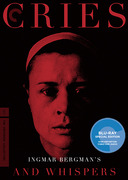
Cries and Whispers
(1972)Ingmar Bergman
3. . . because it was so disturbing and beautiful at the same moment. Photographed by Sven Nykvist, whose work came the closest to John Alcott’s brilliant use of available light. Alcott photographed my films Overlord, Little Malcolm, and The Disappearance.
#3 in Stuart Cooper’s Top 10Overwhelmingly impressive— almost intimidating—acting. Mind-blowing technique. Sensitive and thorough portrayal of tangible pain, malady, sorrow, and loneliness. Oh, and fade to red.
#2 in Xavier Dolan’s Top 10I was doing an assistant editor job in Prague for three months, and I brought with me about fifteen Bergman DVDs. Bizarrely, I was working on Shanghai Knights with Jackie Chan and Owen Wilson during the day and coming home to Persona in the evening. It was not necessarily good for my state of mind, but it was an amazing cinematic education. It’s virtually impossible to choose a favorite from his films, so I’ll choose two. I do think, though, that Cries and Whispers sums up what it means to be human—the moment when Agnes screams out in agony to her sisters as they stand by her deathbed “Can anyone help me?” and of course they can’t, or they won’t. Holy fuck.
#5 in Andrew Haigh’s Top 10 -

Fanny and Alexander — The Television Version
(1982)Ingmar Bergman
3Existential angst, black-and-white landscapes that feel cut out of slate and bone, quivering ruminations on mortality, and symbolic self-reflexive experimentation in film form-that’s all very masterful and inspiring and well and good, but I didn’t fall in love with Bergman until I discovered (via this box set) Fanny and Alexander. A rich adult fairy tale about how we use storytelling in our lives, not for pleasure alone.
#5 in Rian Johnson’s Top 10The people, the love of theater, the red room at Christmas, the terror of Bishop Vergerus, the mystery of Ismael. And the documentaries! Seeing Bergman quietly direct and set blocking: a master class.
#3 in Angus MacLachlan’s Top 10 -

Bad Timing
(1980)Nicolas Roeg
3I saw this recently for the first time, per Xan Cassavetes’s recommendation. The flashback sequences are painstaking. This is a kind of cinema that is rare and beautiful.
#3 in Jonathan Caouette’s Top 10Deeply pervy—and that’s just the decision to cast Art Garfunkel in the lead as a math professor in Vienna! My favorite moment is when the detective—an implausibly wonderful Harvey Keitel—asks Garfunkel to confess to the crime “as a personal favor.” As bonkers as it is beautiful.
#3 in Geoff Dyer’s Top 10Nic Roeg’s films are known for their structural innovation, but it’s great to be able to see them in a form that also shows off their photographic excellence.
#5 in Christopher Nolan’s Top 10 -
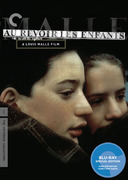
Au revoir les enfants
(1987)Louis Malle
3This is a heart-wrenching film. It’s one of about three films that exist that truly still make me cry. I saw this at our local art-house cinema in Texas when it came out, and it was one of the first films that I saw that made me want to be a filmmaker in a real way.
#2 in Jonathan Caouette’s Top 10Malle is one of my favorite directors. He flirts with genres, tries all sorts of things, travels all around the world, refuses to let go of documentary, his first love (or first milieu)—although his fiction movies are acclaimed. This film, close to his skin and past, is a strong coming-of-age work, set in France under Vichy. Often, in the middle of the day, I think of scenes from Au revoir les enfants, moments of grace like the restaurant sequence, with the mother. French officers burst into the place and ask for citizens’ papers. They find an old Jewish man dining quietly at his table and start to reprimand him, asking him if he knows how to read; the place is, of course, forbidden to “youtres,” as the young French officer says insolently. Suddenly, every patron at the restaurant starts yelling at the officers, insulting them (“Collabo!”), forcing them to leave. And then, among the clientele, German officers stand up and order them to exit the place. Strong turning point. That is exactly Malle, in there, striking again. Contrast, antagonism, emotions, brute emotions. The rest is craft and mastery. But emotions. That is what he aims for. That is what we get.
#7 in Xavier Dolan’s Top 10I saw this in the late eighties in the cinema, and it was probably the first art-house film I ever saw. I can’t really remember much about it now and really should see it again, but I do remember crying for about a week.
#6 in Andrew Haigh’s Top 10 -
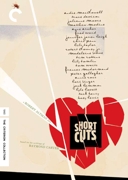
Short Cuts
(1993)Robert Altman
3What can I say? Robert Altman interprets Raymond Carver with an amazing cast of characters. Look at any of Altman’s films and you’ll find they are among the finest examples of collaborative efforts, yet unmistakably and uniquely his own. I was lucky enough to get to work with him on Kansas City, and briefly on Tanner on Tanner, and will always be inspired by his vision, independence, and generosity of spirit. About Kansas City he once said to me, “I don’t care if this film makes a nickel—I want it to be successful on my terms.” Then gesturing toward himself and me, he added, “Our terms.” We’ll miss you forever, Bob.
#7 in Steve Buscemi’s Top 10Robert Altman! Need I say more? Upper East Side theater with the woman I love.
#6 in Oren Moverman’s Top 10Robert Altman turns his multilevel, multidimensional auteur’s eye on the short stories of Raymond Carver, and creates one grim portrayal of Los Angeles culture that will leave you breathless. Many of the stories that make up Short Cuts could have spun off into TV series, so well drawn are the characters. Released after Altman’s smash hit The Player, Short Cuts came across as a disappointment, but after a recent viewing, I feel Short Cuts to be the superior and more lasting success. A killer cast that never gets in the way of the material has to be an all-time favorite of mine. With Tim Robbins, Julianne Moore, Robert Downey, Jack Lemmon, and Jennifer Jason Leigh.
#10 in John Taylor’s Top 10 -
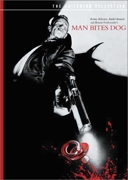
Man Bites Dog
(1992)Rémy Belvaux, André Bonzel and Benoit Poelvoorde
3Another black and white, this one from Belgium, 1992. I think I saw it at the Toronto Film Festival with Quentin Tarantino. It’s a hilariously dark, fake documentary about a serial killer and his concerned friends and family. It’s not for everybody, but it genuinely shocked me while I laughed my ass off. Kudos to directors Rémy Belvaux, André Bonzel, and Benoît Poelvoorde.
#4 in Steve Buscemi’s Top 10“CINEMAAAAAA . . . CINEMAAAAAAAAAAAAAAAAAA.”
#7 in Flying Lotus’s Top 109. One of the most cynical films ever made, a French mockumentary about a serial killer with the complicity of a camera crew—hilarious, the darkest of humor..
#9 in Bill Plympton’s Top 10 -
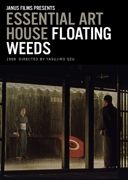
Floating Weeds
(1959)Yasujiro Ozu
3Ozu in stunning color and black and white. One of the many great Criterion packages that offer two films together for the viewer to admire. The theatrical aspects of this set appealed to me, but I was ultimately won over by the heartbreaking simplicity of Ozu’s aesthetic.
#6 in Neil LaBute’s Top 10A couple of years ago, I finally discovered Ozu’s work, starting with this film. The stories are beautiful, yes, and the filmmaking is exquisite. I’d recommend any/all of the late films and will use this one as an example. Many of the actors and crew worked with Ozu on many of these late films, so they all feel interrelated, small stories of intimate life in Japan in the fifies and sixties. Also recommended: Early Spring, Late Autumn, The End of Summer. —Lee Ranaldo
#1 in Sonic Youth’s Top 10This is one of my favorite Ozu movies. On Ozu’s gravestone is the word mu, which in Japanese means “emptiness.” For me, emptiness and silence are very familiar, important family members, and I think the forms come out of emptiness. In the way Ozu makes movies, I feel deeply aware of emptiness. There is something very wise, quiet, and powerful in it. So Ozu for me is like a big brother who helps me remember from time to time the really important things about the form of moviemaking, which have nothing to do with manipulating the audience or being clever. Form can have something to do with truth.
#3 in Götz Spielmann’s Top 10 -
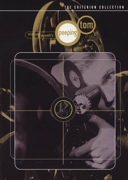
Peeping Tom
(1960)Michael Powell
3I saw this movie for the first time at the Elgin Theater on Eighth Avenue as part of a double feature with The Tenant a long time ago, when I was young and scared. I didn’t like it. But I was young and scared. Eighth Avenue used to be scary. I honestly don’t remember why I didn’t like it, but just a few years later I would be mocking my younger, uninformed self. I absolutely love everything about this movie, from its cheesiness (camera as murder weapon) to its sheer profundity (camera as murder weapon). Anna Massey should be a household name.
#1 in Georgia Hubley’s Top 10Two films about the brutality of seeing (about cinema?), one directed by France’s answer to Fritz Lang, the other by the British Vincente Minnelli. And on the Franju DVD, there’s a precious extra: the 1949 short documentary Blood of the Beasts, a film that dares to look death in the eyes.
#8 in João Pedro Rodrigues’s Top 10I edited Scott Pilgrim on Charlotte Street in London. Two key Peeping Tom locations were outside the door of my workplace: the passageway where a doomed prostitute picks up Mark Lewis in the opening sequence, and the newsagent above which he takes adult photographs.
#6 in Edgar Wright’s Top 10 -

Alphaville
(1965)Jean-Luc Godard
3It has not aged a bit, and it contains my cinema debut, albeit in a small role. And the great Akim Tamiroff gets to die on me! An unforgettable experience. My daughter loves the way I pickpocket Tamiroff while taking his coat off.
#7 in Christa Lang-Fuller’s Top 10. . . also A Woman Is a Woman, Band of Outsiders, Breathless, Contempt, Made in U.S.A, Masculin féminin, Tout va bien, and 2 or 3 Things I Know About Her.
#7 in Nathan Lee’s Top 10For one of the weirder and more opaque viewing experiences out there, watch Alphaville. It’s just such a strange movie, and yet it conjures a future world that somehow makes sense. The weird jump cuts when intergalactic detective Lemmy Caution fights bad guys are hilarious. And deeply strange. And hilarious.
#1 in Nicholas Stoller’s Top 10 -
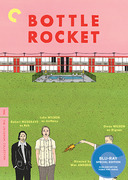
Bottle Rocket
(1996)Wes Anderson
3Bottle Rocket remains my favorite Wes Anderson movie—and I love all of his movies. Dignan was a character I felt I knew from my life but had never seen in a movie, much less as the lead of a movie. “How did an asshole like Bob get such a nice kitchen?” is one of my favorite lines . . . and it’s offscreen.
#8 in Bill Hader’s Top 10I’m a child of the ’80s and ’90s, and I just feel this film strikes a chord like no other. It’s such a wonderful portrayal of a generation of adolescents who simply felt like they had no real causes to fight for. In some respects, they were left to create problems for themselves to solve, and this film does a great job of caricaturing that “comfortable”—but honestly uncomfortable—plight of a generation. Owen Wilson’s performance as Dignan is also one of my all-time favorites.
#9 in Kazu Kibuishi’s Top 10 -
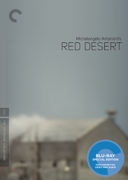
Red Desert
(1964)Michelangelo Antonioni
3I love too many Antonioni films, but this is my favorite. La notte is second. The power of slow observation. Here he massages color, industry, and fog as antagonists to femme urban madness. My favorite use of Design by Location Curation. An opposite influence for me on Her. A companion piece to Todd Haynes’s Safe.
#6 in K. K. Barrett’s Top 10A sense of shredded nerves pervades the whole film, soothed by some of the most beautiful colors ever seen on a cinema screen (the rhyming green of Monica Vitti’s coat chief among them). Remember that weird almost-orgy down by the docks, in some kind of hut? It’s one of those scenes—and one of those films—you watch again and again to see if it’s really as you remember it. Of course it is—and isn’t.
#9 in Geoff Dyer’s Top 10Antonioni’s first color film. I felt like I was opening my eyes for the first time. An incredible palette and commitment to tone. He actually painted trees whites and grays! I have always wanted to talk technicalities with someone about this film. The fog? How did he do the fog?!
#8 in Brie Larson’s Top 10 -
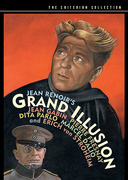
Grand Illusion
(1937)Jean Renoir
3I had the privilege of being a member of a festival jury led by Jean Renoir, and subsequently replaced him as a cameo actor in a film. (There obviously were no physical requirements for the role.) I think Grand Illusion may be the most humanistic film ever made, but it’s no more humane than its creator.
#10 in Monte Hellman’s Top 10The fact that this is down at number 9 on this list goes to show how difficult it has been to make the list. I’m a real sucker for seeing down-to-earth human interaction trump the machinery of politics during wartime, and this is a film that documents the idea of a “gentleman’s war” as a dying concept, and does it very well. Erich Von Stroheim’s performance is also magnificent and timeless.
#12 in Kazu Kibuishi’s Top 10Renoir, the great humanist with Marx Brothers flourishes. Jean Gabin. War as a struggle between ruling classes at the expense of the people; love as the mechanics of survival. “Out there children play at being soldiers, in here soldiers play like children.” A great war movie, anti-war, with the war out of sight, anti-sight, all heart. Von Stroheim is the sight to behold. The use of the offscreen. Man’s desire to escape, the camera’s desire to move. Film seminar, Brooklyn College.
#4 in Oren Moverman’s Top 10 -
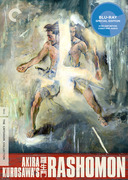
Rashomon
(1950)Akira Kurosawa
3Narrative films will never grow stale as long as filmmakers have tricks like Rashomon structures in their bag. Not only filled with fantastic acting, tremendous cinematography, and a haunting soundtrack, Rashomon attempts what great films always strive for—to express an inexpressible . . . in this case, the nature of truth, or . . . the nature of humans’ inability to realize the fallibility of their own perception, their own stories.
#8 in Roger Corman’s Top 10A meditation on the nature of reality by Akira Kurosawa, one of greatest of all Japanese films, with magnificent performances by Toshiro Mifune. Is there such a thing as “objective reality”? Or, as Kurosawa suggests, is it all in the eye of the beholder?
#8 in Andrew Weil’s Top 109. When I was hanging out up there Heather was working on the audio. But now she switched over to some other department.
#9 in Adam Yauch’s Top 10 -
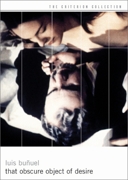
That Obscure Object of Desire
(1977)Luis Buñuel
3I am convinced that Buñuel had intimate conversations with God throughout his life, wherein they would share their observations on humanity and tell lots of jokes. Buñuel’s movies are evidence of these dialogues. That Obscure Object of Desire is about a little man like you and me, self-satisfied and lustful. He is in love with a woman who refuses to give herself to him physically. This 1977 movie (Buñuel’s last) is irreverent, sexual, funny, elegant, shocking, embarrassing, political, and light as a feather. The way to enjoy it is to just let it happen to you, rather than to harbor any preconceived thoughts. To try to analyze why the director uses two actresses to play the same character and the motivation behind when he chooses to use each one is to miss the movie entirely (and to be the butt of a Buñuel practical joke—that’s him laughing at you while you are engaged in this fruitless exercise). As the story unfolds, you begin to feel that these two physically opposite actresses (the drop-dead gorgeous Carole Bouquet and the sultry, exotic Angela Molina) are the same woman and represent Buñuel’s complete male fantasy. Like many of his great films, this one includes a pig, a few nuns, a dwarf, and Fernando Rey.
#6 in Michael Barker’s Top 10Buñuel is my first deep love in cinema. He is the adult that pulled the plug on the human art of pretending. He blazes through the hypocrisy at the heart of our bourgeois lives mercilessly—no one is sacred, no ideal or moral is spared. He is perfectly modern, bold, and clear. I found myself laughing in joy and amazement. He understands human nature while refusing to sentimentalize it.
#4 in Jane Campion’s Top 10Luis Buñuel’s take on hypocrisy.
#3 in Christa Lang-Fuller’s Top 10 -
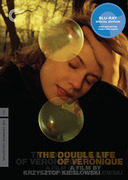
The Double Life of Véronique
(1991)Krzysztof Kieślowski
3My students always ask me to explain the ending, or what the film means. I can’t. I only know it has a powerful effect on me. The documentary on the making of the movie, in which we discover Kieslowski’s philosophy and methods, has become required viewing in all my classes.
#2 in Monte Hellman’s Top 10Hard to choose a favorite Kieslowski. This one is so wonderfully evocative and rich. We’ve all felt that quantum split, even for a second, and this is a film that illustrates that feeling perfectly. Zbigniew Preisner scored most, if not all, of Kieslowski’s features, and their creative sympathy is really evident in The Double Life.
#11 in Stella Mozgawa’s Top 109. In January 2007, after a particularly difficult shoot (both physically and emotionally), I found myself back in Chicago with some time on my hands. I didn’t want to edit, because I didn’t have the energy to confront the footage. The Gene Siskel Film Center was showing several of Kieślowski’s films, including all of his later work. Every day, I would make my way to the theater in the evening and sit there eating dark chocolate, letting the work pour over me. It was like a religious experience. I came away from that series feeling revitalized. The Double Life of Véronique and Blue were especially breathtaking. Sławomir Idziak’s photography left an indelible impression on me and changed the way I look at light. One year later, I went back to New York to finish that difficult film, and I finally had an outlet for all the good energy Kieślowski had given me.
#9 in Joe Swanberg’s Top 10 -
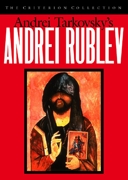
Andrei Rublev
(1969)Andrei Tarkovsky
3A masterpiece with an enormous faith in something that I don’t want to define.
#2 in Götz Spielmann’s Top 10 -
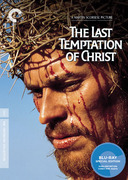
The Last Temptation of Christ
(1988)Martin Scorsese
32.
#2 in John Lurie’s Top 10This is real passion, compelling enough to make an atheist think about things. I’d put it up with Scorsese’s best. It’s obvious he put his heart into this moving, very human, modern depiction of a very old story.
#5 in Phil Rosenthal’s Top 10 -
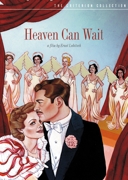
Heaven Can Wait
(1943)Ernst Lubitsch
3Perfect movie. Perfect DVD. If enough people see this disc, Heaven Can Wait will gain its rightful place in the pantheon of the greatest movies ever made. Elegant, warm, funny, wise, and unbelievably exquisite-looking, this film is Lubitsch’s finest two hours. I vote that we retire It’s a Wonderful Life for a few years and annually watch Heaven Can Wait instead. It is the better movie. The DVD extras include Richard Corliss’s intelligent interview with screenwriter Samson Raphaelson, and the video analysis by Andrew Sarris and Molly Haskell (the Tracy-Hepburn of film criticism) is as sublime as the movie.
#2 in Michael Barker’s Top 10Another film about death, yet a film that just feels like a long, permanent convalescence. When everything seems hopeless and lost, Dr. Lubitsch is the one to call.
#6 in Pedro Costa’s Top 10A real classic, perfectly executed by Ernst Lubitsch. Don Ameche gives a winning performance as a man trying to get permission to enter the gates of hell. Laird Cregar’s Satan is lovable and makes eternal damnation seem not such a bad fate. I can appreciate an imaginative, feel-good film about Satan.
#11 in Marcel Dzama’s Top 10 -
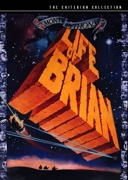
Monty Python’s Life of Brian
(1979)Terry Jones
3Life of Brian is the one Monty Python movie that really works as a movie (they’re all funny). The hardest I ever saw my dad laugh is when it cuts to the Sermon on the Mount and the camera slowly zooms back to reveal a huge crowd of people listening and finally settles on Terry Jones, playing Brian’s mother, at the very back, and he shouts “Speak up!” One of the best comedies ever.
#19 in Bill Hader’s Top 10The only film I’ve seen more is The Empire Strikes Back. This is Python’s best movie. Holy Grail has its moments, but this has many more funny scenes. A parody of the life of Christ, it is neither blasphemous (Christ actually appears in it, as a genuine prophet) nor cruel. It mocks humans more than anything else. Michael Palin’s Pontius Pilate with a lisp is hilarious, Terry Jones as Brian’s mum is extremely funny—it may be the movie I quote (annoyingly) the most. I ask you, “What have the Romans ever done for us?!” Watched over 150 times.
#10 in Dominic Monaghan’s Top 10After I saw this film and began quoting it every chance I got, my adolescent virginity was sealed. In addition, it’s one of the best films ever made about religion.
#5 in Nicholas Stoller’s Top 10 -

La haine
(1995)Mathieu Kassovitz
3I saw this film when I was a teenager, and it had a lasting impact on me, having been a fan of hip-hop but being largely unaware of the social conditions in France that made hip-hop culture so powerful there. There’s a scene in particular I have fond memories of in which Cut Killer is deejaying above the streets of his banlieue. So good.
#6 in Daniel Lopatin’s Top 10The film debut of Vince Cassel, this film documents the Paris riots of the early 1990s. Filmed in black and white, it is an intimate look at French youth. The music is killer, the performances almost come through the camera, and hoodlums have never seemed so hip.
#3 in Dominic Monaghan’s Top 10A more realistic now Clockwork Orange.
#9 in Andrew Loog Oldham’s Top 10 -
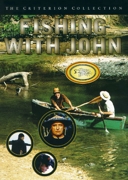
Fishing with John
(1992)John Lurie
3Renaissance man John Lurie and friends converse obliquely while trying to fish. You will laugh hard. Check out John’s Top 10 list elsewhere on the site—it’s excellent.
#12 in Daniel Lopatin’s Top 106.
#6 in John Lurie’s Top 1010. This is mostly on my list because I think it’s hilarious and I have watched all of the episodes several times. I love exposing friends to it, as many people haven’t even heard of it. It did teach me that the same idea can be interesting and entertaining over and over again, as long as you switch up the people in front of the camera (and as long as those people are fascinating to watch).
#10 in Joe Swanberg’s Top 10 -

Häxan
(1922)Benjamin Christensen
3Scandinavian cinema has, I admit, obsessed me for most of my career as a critic. But all credit to Criterion for giving this bizarre and seductive silent film from 1922 the same loving attention as they would a new release by Richard Linklater or Mike Leigh. For extra value, the DVD includes an abridged version of the movie issued in 1968, with a sly offscreen narration by William S. Burroughs.
#5 in Peter Cowie’s Top 10Sheer terror and sheer poetry, but both stem from distinctive medieval traditions. Häxan is the filmic equivalent of a hellish engraving by Bruegel or a painting by Bosch. It’s a strangely titillating record of sin and perversity that is as full of dread as it is of desire and atheistic conviction, and a condemnation of superstition that is morbidly in love with its subject. Vampyr is, strictly speaking, a memento mori, a stern reminder of death as the threshold of spiritual liberation. Like any memento mori, the film enthrones the right morbid imagery (skull, scythe, white limbo) in order to maximize the impact of the beautiful, almost intangible images that conclude it. If only Criterion had acquired my commentary track—sigh—from the UK edition.
#19 in Guillermo del Toro’s Top 1010. Strange little silent history of witchcraft out of Denmark, fashioned sort of in the Intolerance shape, featuring incredibly chiaroscuroed mise-en-scène, with plenty of pornish coven action. Being evil never looked so sumptuous. I like the alternate version, Witchcraft Through the Ages, narrated by William S. Burroughs—his voice seems to have been created to discuss any matters supernatural. You can’t tell for sure how much he believes in it, yet still he manages to be equal parts hilarious and menacing!
#10 in Guy Maddin’s Top 10 -

All That Heaven Allows
(1955)Douglas Sirk
310. Technicolor is one of my weaknesses, and Douglas Sirk has a way with ahead-of-its-time drama unlike few others.
#10 in David Markey’s Top 105. Is there a greater, more suggestive and bittersweet movie title than All That Heaven Allows? (Well, yes, there is, Yasujiro Ozu’s I Was Born, But . . . , but that’s another story and another great Criterion disc.) Sirk dug beneath the surface of idyllic American small-town life in the 1950s, and the surface has never been more beautiful than in this Technicolor nightmare of conformity and the repressive nature of community and family life. It’s Freud vs. Walden, as pettiness, jealousy, and repression pair off against a bohemian vision of rural tranquility. Rainer Werner Fassbinder, whose brilliant essay on Sirk is included as an extra, remade the movie as Ali: Fear Eats the Soul, and it was also the model for Todd Haynes’s Far from Heaven and Sanaa Hamri’s not-too-shabby Something New.
#5 in David Schwartz’s Top 10 -

Woman in the Dunes
(1964)Hiroshi Teshigahara
3Simon of the Desert utilizes austere staging to create a particular mood and feel, and so, too, does Woman in the Dunes. Except here we have traded in the desert for the dune, and it is even bleaker, as a young man literally climbs into an existential nightmare from which there seems to be no escape. Just as contrast plays an important role in Japanese kabuki theater and Butoh dance and is used to great effect by photographers like Daido Moriyama and Eikoh Hosoe, postwar Japanese filmmakers seem to have a heightened sensitivity to the power of darkness and light as well. The role of shadow here really helps convey a feeling of claustrophobia and helplessness, which seems to be a key aim of the film. All of that being said, it is a very beautiful and enigmatic film and well worth an attentive watch.
#6 in Keegan McHargue’s Top 107. It’s as much an impressionist painting as it is a film.
#7 in Tom Schnabel’s Top 10A surrealist landscape . . . It manages to feel both expansive and claustrophobic. I love the photography of the dunes, and most of all the score, by Toru Takemitsu. It’s tense and dissonant, a perfect sonic counterpart to the falling sands and the push-pull struggle of the two main characters.
#3 in Zola Jesus’s Top 10 -
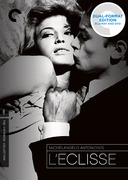
L’eclisse
(1962)Michelangelo Antonioni
3Antonioni’s great L’avventura, La notte, and L’eclisse are yet another linked trilogy, though their stories and characters are as disparate as those of the Rossellini trilogy. It may be the director’s hyper-refined architectural style that we remember most in this film, people lost in its urban landscape. But Antonioni was also very much a child of Italian neorealism, as we can trace in his early films and documentaries. The long, wordless sequence, devoid of the main characters, that concludes this film is justly cited as a masterpiece of visual alienation and loss. But the hectic frenzy of the Turin Bourse sequence, a near standalone set piece in the middle of the film, shows the director at his documentary best, even as the camera smoothly glides through the rushing masses of stock traders with a singular determination of its own mission.
#10 in John Bailey’s Top 10Antonioni’s best film. This movie puts me into such a pleasurable deep funk. Profound, chic, visual existentialism has always been up my alley. Every image is boldly striking—from the hustle and bustle of the stock market (as timely as today’s headlines) to the urban architectural landscapes to the lovers Monica Vitti and Alain Delon. The last are especially easy on the eyes. This movie caters to the intellectual fantasy in many of us. If you are a professional philosopher or lay thinker (like myself) who likes to contemplate the nature of “reality,” the last ten minutes will totally blow your circuits. This is one very cool movie. Richard Peña’s commentary has so much information, minute for minute, you wonder how the guy keeps it all in his head.
#3 in Michael Barker’s Top 10 -

Stray Dog
(1949)Akira Kurosawa
3Sweat it out with this cop looking for his gun. A basic guide to filmmaking for me may start with Kurosawa and Hitchcock, and go backward and forward from there. I’m also so happy to have Throne of Blood on Blu-ray!
#6 in Paul Dano’s Top 10Seven Samurai goes without saying. But Stray Dog is the best Japanese film noir I know, with two powerhouse stars: Takashi Shimura and Toshiro Mifune.
#2 in Bruce Goldstein’s Top 10The first lines of Stray Dog are Mifune’s cop reporting that his gun has been stolen. It really grabs you. You immediately know this guy is in deep shit, and because it’s Mifune, you want to see him get that gun back. And then Takashi Shimura shows up, and you’re off and running. By the end of this movie, you’ll have the AC cranked!
#2 in Bill Hader’s Top 10 -
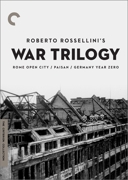
Paisan
(1946)Roberto Rossellini
3In My Voyage to Italy, the documentary that we made about Italian cinema, we started with this picture. For me, it really was the beginning. I saw it for the first time on television with my grandparents, and their overwhelming reaction to what had happened to their homeland since they left at the turn of the century was just as present and vivid for me as the images and the characters. I was experiencing the power of cinema itself, in this case made far beyond Hollywood, under extremely tough conditions and with inferior equipment. And I was also seeing that cinema wasn’t just about the movie itself but the relationship between the movie and its audience. Fellini said that when Rossellini was filming the Po Valley sequence, he acted on pure instinct, inventing freely as he went along. The result—in that episode, and in the Sicilian and Neapolitan and Florentine episodes as well—is still startling: it’s like seeing reality itself unfolding before your eyes.
#1 in Martin Scorsese’s Top 10Early on, surprisingly enough, Italian cinema broke the Hollywood barrier by making simple, down-to-earth stories. Most of the films were made without live sound but dubbed later by experts. It meant that noisy, unblimped cameras would give flexibility to image-making. Stories like Bicycle Thieves, Rome Open City, and Paisan all fell into that category.
#10 in Haskell Wexler’s Top 10 -
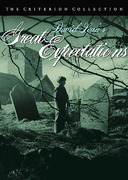
Great Expectations
(1946)David Lean
3The most perfect literary adaptation ever (can anyone come up with a better one?).
#10 in Bruce Goldstein’s Top 10David Lean again, in perhaps the best translation of a Dickens novel to the screen, and surely the greatest of Dickens’s novels too. Crisp, brilliantly cast, a flawless rendition of the period, and amazingly faithful to the novel, Great Expectations is the model that every Masterpiece Theater rendition of an English classic strives to emulate, only better, far better than that.
#3 in Michael Korda’s Top 10 -
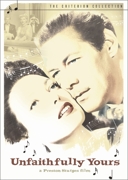
Unfaithfully Yours
(1948)Preston Sturges
3The candle that burns twice as bright burns half as long, as the saying goes—and Sturges’s films and meteoric, puzzling career confirm this. These are masterful films full of mad energy and fireworks, but Sullivan’s Travels also manages to encapsulate one of the most intimate reflections about the role of the filmmaker as entertainer. Many have attempted to mine the same field as Sturges, and all have failed. A rara avis in the landscape of film.
#17 in Guillermo del Toro’s Top 109. You’ll never watch a conductor the same way after seeing this great Preston Sturges film.
#9 in Tom Schnabel’s Top 10 -
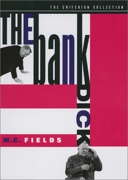
The Bank Dick
(1940)Edward Cline
3W. C. Fields, with wife, mother-in-law, child, daughter, and son-in-law, played by the wonderful Grady Sutton. All this is pure enjoyment. When were movies ever more alive than in the thirties, when the great performers from the musical and vaudeville stage entered films? W. C. Fields, the Marx Brothers, Mae West, Maurice Chevalier, Fred Astaire, Marie Dressler, Mickey Rooney, and Judy Garland, among so many others. They were the real authors of their films, needing little help from their directors. American films began with audiences wanting to see performers, not directors, and this, perhaps, continues to separate American films from European films, but we’re lucky to have both, and who’s to say which is really better.
#10 in Paul Morrissey’s Top 107. A lot of my critics say my films lack strong, concise storylines. They complain that they ramble—I say, look at all the W.C. Fields classics; that’s his trademark. He goes off on these crazy, hilarious tangents that make no sense whatsoever. And that’s what makes this film so much more interesting and screwball.
#7 in Bill Plympton’s Top 106. The amazing thing about W. C. Fields’s comedy is how much mileage he can get out of almost no plot and very little dialogue. The humor comes from his gleeful disdain of American propriety, and from his impeccable sense of timing and absurdity. He can build a comic routine out of the pronunciation of “proboscis” and of such names as “Egbert Souse.” Fields’s movies have few frills, and the same is true of this straightforward single-disc version, but the performance and the movie are as bracing as a shot or two of late-morning whiskey.
#6 in David Schwartz’s Top 10 -

Winter Light
(1962)Ingmar Bergman
3This is a terrifying film to watch for any aspiring filmmaker worth his/her salt. One takes a look at it and soon realizes that it spells perfection. Not a reassuring realization when one is trying to enter the trade. The only thing that can mitigate somewhat this feeling is that Bergman himself expressed wonderment at what he had pulled off here, as if he weren’t entirely responsible for it and lady luck had been outrageously on his side. The conventional wisdom when one talks about Bergman is always to list the thematic bases he hits: the fundamental triviality of faith, the traumatic economy of unrequited love, etc. Better go small and more mysterious: this is a textbook of what drama is made of, each scene exploring relentlessly the perilous equilibrium of a situation, what makes it what it is, what will keep it there. Nothing ever comes to a trite conclusion in this film. Everything is suspended, held together by the contradictory forces that vie for the moment to be what they are, and as a consequence everything is resonant. It is so finely tuned that it can be unendurable: nobody has ever explored the savagery of gender relationships as accurately as Bergman, because nobody else has so detailed them as an ineluctable stasis. Yes, Bergman was right to wonder: there is a miracle at work here. It’s a film where the energies and the craft of the principals intersect so splendidly under the guidance of a director: the photographer’s eye (Sven Nykvist, who knows how to match the coldness of these souls with the cold dampness of the landscape outside); the actors’ bodies (Ingrid Thulin, her hands, wrecked by eczema, fussing around abjectly out of unrequited love for her pastor; Gunnar Bjornstrand, with a terminal case of the sniffles and an endless ability to tap into cruelty). Not a first-date movie, but it will do for the third. And, any time, a humbling lesson in film craft.
#5 in Jean-Pierre Gorin’s Top 109. It was hard to pick just one Bergman film—so many brilliant choices. I suppose I picked Winter Light because it is so perfectly bleak, the very essence of the frozen grayness of winter. This is one of Bergman’s famous “God’s silence” films. The dilemma of Pastor Ericsson’s trying to find meaning in a godless universe (or at least a universe where God will not answer) is hard to watch without personally taking on his existential dread. Bergman never blinks. He doesn’t hand us any easy answers or life-affirming reassurances. It’s grim. A great work of art.
#9 in Seth’s Top 10 -

The Flowers of St. Francis
(1950)Roberto Rossellini
3My favorite from Rossellini. A sublime call to us all to be good, even at our own expense. Ten times more subversive and inspiring than any in the long list of meaningless yet much-lauded films made about the “lessons” of war, injustice, and inhumanity. This is the film everyone should have been watching in the last eight years. Fellini’s humor and Rossellini’s ironic wit are at their very best here. The monks are brilliant in their roles. A must-see gem.
#3 in Ramin Bahrani’s Top 10I saw Flowers for the first time during grad school in the early 1990s, and Rossellini’s deceptively simple depiction of grace and faith has never left me. I always wanted to see it again, so I was beyond thrilled when I found out that Criterion was releasing it. Hands down my favorite Rossellini.
#5 in Dave Filipi’s Top 10 -
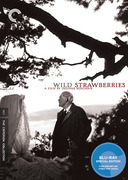
Wild Strawberries
(1957)Ingmar Bergman
3There’s a reason this is one of Ingmar Bergman’s most cited works: it’s one of his best. A beautiful and unusually brisk road movie, this may be Bergman’s most accessible film, but what’s wrong with that? This is the kind of film artists spend their entire careers striving for. Bergman achieved it early on, and made many more classics as a result.
#8 in Matt Dentler’s Top 10Cinema is most often analogized with dreaming (see Hollywood as “dream factory”), but it is also a kind of remembering: it manufactures an immediate past, and thus makes us retrospectively and prospectively older. Bergman’s Wild Strawberries starts with a dream and ends with a memory, aligning its beauty with the beauty of its seventy-seven-year-old star, the great Swedish actor and director Victor Sjöström.
#3 in James Schamus’s Top 10 -
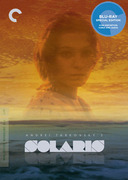
Solaris
(1972)Andrei Tarkovsky
3Really meditative and challenging, like being sentenced to a philosophical nightmare. I used to pray for the ability to reanimate my childhood pet dog till I saw this film. Eerie stuff.
#4 in Stella Mozgawa’s Top 108. If you watch this back-to-back with 2001, it will show you why “the space race” was a politicians’ game that demeaned the dream.
#8 in Al Reinert’s Top 10Solaris is not just a movie to me. It feels like an entire language. The more I watch it, the more I learn about the genius of Tarkovsky’s vision. I still have yet to read the original story by Stanislaw Lem, but it’s next on my list to understanding the puzzle that is this wonderful film.
#2 in Zola Jesus’s Top 10 -
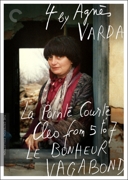
Cléo from 5 to 7
(1962)Agnès Varda
3I only saw this a few years ago, and I think it’s become my favorite of the French New Wave. I think it’s virtually impossible to make a film about complex ideas and yet at the same time make it feel as light as air. It’s a thrilling film that feels very much of its period but also completely timeless.
#9 in Andrew Haigh’s Top 1010. Agnès Varda’s New Wave masterpiece about a famous singer/fashion model who abandons her blond wig and rediscovers her identity on the streets of Paris is jam-packed with vivid detail, an expressive graphic style, and an eye for urban chaos, and is at least as engaging and inventive as Breathless and The 400 Blows. While waiting for this film to enter its rightful place in the canon of great movies, buy it now and enjoy its distinctly up-to-date sensibility. More than forty years after it was made, Cléo from 5 to 7 is a perfect movie for our times, digging beneath the surface of fashion and celebrity culture.
#10 in David Schwartz’s Top 10 -
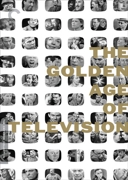
The Golden Age of Television
()3If only for Rod Steiger’s performance in Marty. I think that could be the best performance I’ve seen. It’s so unbearably moving. The quality of his voice is heartbreaking.
#13 in Richard Ayoade’s Top 104. My dear friend Dan Lauria turned me on to a few of the selections presented here. Mickey Rooney in The Comedian gave me a whole new respect for him as an actor, and Marty and Days of Wine and Roses are both must-sees for any aspiring actor.
#4 in Joe Mantegna’s Top 10Look at it this way: The Twilight Zone is your memories of growing up, of learning to understand a certain language of cinematic storytelling that embraces fantastic twists of plot and character. Then, when you’re older, and it occurs to you to ask your parents what things were really like back in the day, the answer is Patterns, Requiem for a Heavyweight, and The Comedian, all written by Rod Serling. Of course, there’s more than Serling’s writing to love here: the immediacy of the productions and the adrenaline of the performances make for a perfect record of this incredibly pivotal era of storytelling.
#2 in Scott Morse’s Top Ten -
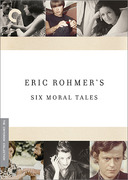
My Night at Maud’s
(1969)Eric Rohmer
3The Six Moral Tales is a convenient package for me because, as with, say, Ozu, I love Rohmer’s oeuvre more than I prefer one film over all the others.
#10 in David Hudson’s Top 108. Eric Rohmer may be underrated as a director. His films are rightly known for their endless talking, and for their intricate, ambiguity-filled exploration of contemporary romance and relationships. Yet he is also a precise and inventive director. His deceptively straightforward films are rich and cinematic: every cut, every decision to shoot in long shot or shot–reverse shot, and every object, costume, and piece of furniture reveals something about the emotional and intellectual subtext. Filmed in lush, crisp black and white, during a snowy Parisian winter, by the great Nestor Almendros, this is the most beautiful of Rohmer’s films. And the good news is that in order to obtain this film, you’ll have to get the astonishing box set Six Moral Tales.
#8 in David Schwartz’s Top 10 -

Harold and Maude
(1971)Hal Ashby
3This is the film that turned me on to Cat Stevens, Bud Cort, and Ruth Gordon, all simultaneously. The film never gets old, and the extras on the Criterion version are amazing. I had no idea that Hal Ashby was such a hippie.
#7 in Jonathan Caouette’s Top 10I saw this movie in our local Michigan theater when it first came out. I was a teenager, and the only other people in there were a pair of teenage girls who were completely grossed out by the film and vocally disapproved of every scene. But for me, the movie was a revelation. The dark comedy, the amazing performances, and the soundtrack of Cat Stevens songs culminate in one of the most beautiful, emotional film endings ever, making this one of those movies I can and have watched more times than I can count.
#2 in Paul Feig’s Top 10A hilarious, twisted, gorgeous love story between a teenager, Bud Cort, and an old lady, the magnificent Ruth Gordon. Indelibly directed by Hal Ashby, it features one of the best soundtracks ever—all classic Cat Stevens. Still can’t hear “Trouble” without seeing a hearse drive off a cliff.
#3 in Phil Rosenthal’s Top 10 -

Pierrot le fou
(1965)Jean-Luc Godard
3If you’re forced to pick a sixties Godard, you do it without worry and with as much Godardian esprit, whimsy, impulse, and movie love as you can, and no one’s choice can be better or worse than anyone else’s. I can’t say exactly why this one is my favorite—it’s a vacation travelogue amid genial diatribes and ironic pastiches, four-dimensional masterpieces all—but I can say that when I interviewed Anna Karina (who is very tall, by the way), she guessed that it was, and she also kissed me.
#3 in Michael Atkinson’s Top 10The ultimate freedom. Freedom of words, freedom of images, freedom of colors, and freedom of love. This is Godard at the acme of his art, the apex of his craft. A cinema that never denies itself anything.
#1 in Xavier Dolan’s Top 10Karina sings. Karina dances. Karina as the non-Karenina. The epic, kaleidoscopic odyssey. Fucking with sound. Fucking with cinema language. Fucking period. Hollywood genre soup via French countryside. Radical widescreen color exploration. Breaking rules, breaking the fourth wall, breathing cinema. Sam Fuller. JLG, the director, is but a former critic, the critics are formally challenged, the challenge is to feel, the feeling is personal. Pop culture lives . . . North London repertory cinema with the woman I love. A washed-out print. Heaven. Discovery. Frustration.
#3 in Oren Moverman’s Top 10 -

The Life and Death of Colonel Blimp
(1943)Michael Powell and Emeric Pressburger
3One of the better, funnier DVD menus I’ve ever seen—is it weird to recommend a DVD just for the menu? Plus, great commentary by Stephen Fry, plus background on the Colonel Blimp cartoon strip and creator, which shows you how miraculous this movie adaptation is. Imagine a big-screen version of Family Circus that manages to be a searing indictment of the American family. Wow!
#6 in Patton Oswalt’s Top 109. This is a hugely underrated film, probably because it is so long and, coming so soon after the war, it got almost no distribution here. But it’s my second favorite Powell film, because he really gets under the skin of the government that ran England. Of course, it’s all about Churchill. An amazing film.
#9 in D. A. Pennebaker’s Top 10Quintessential Englishness and the quivering heart that beats beneath the stiff upper lip. This is a most wonderful story about love and friendship, and how duty can get in the way of both. Perfect performances by Anton Walbrook and Deborah Kerr, and Roger Livesey as the colonel. When Theo, played by Walbrook, the colonel’s adversary in wartime but now his friend, announces to him that Edith (Kerr) and he are to be married, both the colonel and Edith realize that his stiff upper lip has gotten in the way of their chance at real love. The directors capture this moment so tenderly and beautifully it is impossible not to cry. Set against the backdrop of forty years of twentieth-century war, it is a very sad film that is also both exciting and hilarious. Churchill decided it was negative propaganda and banned it. Michael Powell proposed marriage to Miss Kerr in Hyde Park, opposite the entrance to the Dorchester hotel. She declined. A movie about broken hearts.
#5 in John Taylor’s Top 10 -
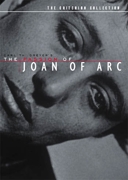
The Passion of Joan of Arc
(1928)Carl Th. Dreyer
3Not actually a “spiritual” work at all (if only someone could define terms like that for me), this is the first truly great film about institutional oppression (forget the Soviets’ chockablock puppeteering and jigsaw manipulations), a subject that always manages to give a film with this much passionate force pertinence in virtually any age and political climate. It took me years to realize—and this is all the props George Lucas will get from me at this late date—that Dreyer’s film is in fact an abstracted dystopian horror film, a point Lucas made by remaking it as THX 1138, right down to the shaved skulls, white-on-white compositions, inarticulate victim protagonist, looming totalitarian machinations, and semihopeless action finale.
#1 in Michael Atkinson’s Top 10I remember seeing this and thinking, I should see this again. The compositions and the close-up. Her performance. It’s extraordinary.
#8 in Paul Dano’s Top 10This film is so emotional and breathtakingly beautiful. It’s full of stark, minimalist imagery and the compositions of many scenes are extremely contemporary. It’s chilling and overwhelming, and by far one of the most fascinating films I’ve ever seen.
#10 in Caitlin Kuhwald’s Top 10 -

Through a Glass Darkly
(1961)Ingmar Bergman
3Like for many Americans, incest is a rough area for me. I just have a natural aversion to it. That being said, when I saw this film in my Bergman/Polanski seminar sophomore year, I was so taken with the Bergman way that I forgot to be freaked out by the sex between siblings. I couldn’t stop whispering the last line, “Papa spoke to me,” at everyone I came across, and I think I will start again. Bergman is the king of mood, and his actors give it all to him, free of vanity and therefore crazy beautiful.
#14 in Lena Dunham’s Top 10His spiritual explorations: Through a Glass Darkly, Winter Light, The Silence, all in Nykvist’s black and white. Plus Ingmar Bergman Makes a Movie. This is everything art should be. Struggling for something ineffable, entertaining, illuminating, and beautiful.
#10 in Angus MacLachlan’s Top 10 -

Masculin féminin
(1966)Jean-Luc Godard
312. I’ve come to appreciate all of Jean-Luc’s films, even the bad ones. They are all of a kind, and such a unique kind. He’s like a cat. If you drop him on the floor, he lands on his feet. A natural filmmaker. And having personally worked with him on One PM, I can say with authority that he doesn’t bother himself with all the nitty-gritty details I seem to have to carry around. He just flies, and the film follows.
#12 in D. A. Pennebaker’s Top 106. The scene where Paul makes a record declaring his passion for Madeline—"Paul calling Madeline!"—is the best ever version of a love letter in cinema.
#6 in Leanne Shapton’s Top 10Godard’s films are the ultimate (even when I have a hard time sitting through one). They are among the greatest works in cinema, and he continues to turn out provocative and amazing films. All are worth seeing; this is one of my favorites from his early years—radical filmmaking, pop culture, politics: the children of Marx and Coca-Cola, indeed. —LR
#4 in Sonic Youth’s Top 10 -

Brief Encounter
(1945)David Lean
3In her coverage of the Nuremberg trials, Rebecca West records the reaction of a Czech audience who, during a screening of Brief Encounter, “asked themselves with some emotion whether it could really be true that in England there were no other places than railway buffets where lovers could meet.” Maybe there weren’t, which is why the refreshment room at Milford Junction boils with passion, why Celia Johnson has a voice—and face—like cracked china, and why, when Trevor Howard utters the simple word good-bye, it is as soaked with tragic resignation as a biscuit in tea.
#2 in Geoff Dyer’s Top 10I knew and liked David Lean, a director of genius, who was very kind to me when he was making The Sound Barrier for my Uncle Alex, and Brief Encounter has always seemed to me the very best of classic British filmmaking, with its fiercely restrained emotions and good manners trumping passion, typical of its era. It is the best of the “small” British pictures, which my Uncle Alex tried to replace with “big” British pictures in an attempt to outdo Hollywood, rather than coexist with it, after he left it for Britain in 1932. Lean, who in Brief Encounter made this most English of English films (a distinction perhaps shared by This Happy Breed and The Fallen Idol, see below), moved onward and upward to ever bigger pictures, by way of The Sound Barrier, Summertime, and eventually the biggest and best of all epic films, Lawrence of Arabia, escaping from the confines of England to “international” films that challenged and beat those of the Hollywood studios. But Brief Encounter was a perfect, close-up view of a shabby, threadbare England, the England of “books from Boot’s, good drains, and class distinction,” in John Betjeman’s words, and of a muted, sad, doomed, and very English love affair. It has always been a film that puzzles the French, who find it hard to believe in a love story with almost no eroticism, and in which the lovers are usually dressed in raincoats. It is also Trevor Howard, a wonderful actor, at his best.
#1 in Michael Korda’s Top 10The wonderful fragility of civility and feelings.
#10 in Andrew Loog Oldham’s Top 10 -
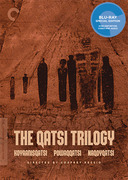
Koyaanisqatsi
(1983)Godfrey Reggio
3Unfairly classified as a stoner classic and consistently underrated as a consequence. Except it is a stoner classic and it’s not underrated at all, since virtually everyone agrees that it’s great. Soundtrack could do with a remix.
#8 in Geoff Dyer’s Top 10Score by Philip Glass. Score by Philip Glass. Score by Philip Glass. Score by Philip Glass. Score by Philip Glass. Score by Philip Glass. Score by Philip Glass. Score by Philip Glass. That’s about all I have to say. Probably the greatest score for a movie ever. And it’s an amazing film with amazing cinematography to boot. But in case you didn’t hear me: score by Philip Glass.
#8 in Paul Feig’s Top 10An incredible document of how man’s greatest endeavors have unsettling consequences. Art, not propaganda, emotional, not didactic; it doesn’t tell you what to think—it tells you what to think about.
#8 in Christopher Nolan’s Top 10 -

The Friends of Eddie Coyle
(1973)Peter Yates
3It’s not upbeat.
#8 in Wes Anderson’s Top 10This is a superb and uncompromising adaptation of George V. Higgins’s bleak masterpiece of low-level criminality—and possibly Robert Mitchum’s finest performance.
#1 in Anthony Bourdain’s Top 103. Robert Mitchum is one of my favorites, and I’ve had the pleasure of working with and becoming a friend of Peter Yates. Both were in top form with this one.
#3 in Joe Mantegna’s Top 10 -

Jeanne Dielman, 23, quai du Commerce, 1080 Bruxelles
(1975)Chantal Akerman
3Every once in a while, when I face a sink full of dishes or a load of laundry, the memory of Jeanne Dielman will come to me. Am I doing this because it must be done, or am I doing this to keep something at bay? Chantal Akerman was just twenty-five years old when she made her masterpiece of things we didn’t know could go together. Experimental cinema with narrative character study. Repression and prostitution. Feminism with tragedy. It’s a daunting and demanding affair, so don’t be fooled if you’ve been led to believe this is some kind of nonsense. This is an experience you shouldn’t avoid. Sit down and take the time. Great works of art speak to everyone.
#8 in Philip Anderson’s Top 10There are great movies, and sometimes masterpieces, but only once in a blue Belgian moon are there movies that forever change the way you look at cinema—not to mention the peeling of potatoes.
#4 in Nathan Lee’s Top 10This amazing, epic film put the Belgian director Akerman on the map. Three hours of static shots and Robbe-Grillet-style repetitive minimalism, revolving around a middle-aged prostitute in a suburban house. This amazing film is a landmark of seventies art cinema. —LR
#2 in Sonic Youth’s Top 10 -

My Man Godfrey
(1936)Gregory La Cava
3As much as I love this film and have seen it hundreds of times, I feel like I never TRULY saw it before looking at this remastered DVD! Such beautiful black and white! Every character in this film is a feast for an actor to play . . . even the maid (Jean Dixon) is rich with her own cynicism and longings. The chemistry between William Powell and Carole Lombard is something seldom glimpsed these days. And yet their romance had long before this film bloomed, gone to marriage and divorce. But the couple remained the closest of friends and the warm feeling between them is brimming in every single frame of the film.The DVD also includes the Lux Radio Theater broadcast, and there are some really fun outtake bloopers with Eugene Pallette—LOVE HIM—and Powell and Lombard.
#6 in Allison Anders’s Top 10A rich guy pretending to be a butler during the Great Depression, the great William Powell’s best part. Plus Carole Lombard. It’s a thoughtful riot.
#3 in Donald Fagen’s Top 107. The first I ever heard from Criterion was a call to work on the commentary track for My Man Godfrey, but there’s still nothing I can say about it. There it is, and there are the magnificent contributions of William Powell and Carole Lombard, director Gregory La Cava, and writers Eric Hatch and Morrie Ryskind.
#7 in Whit Stillman’s Top 10 -

Day of Wrath
(1943)Carl Th. Dreyer
3Carl Dreyer loved women, and understood their sociosexual dilemma. This glowing 1943 film about a witch hunt in seventeenth-century Denmark is still a shocker.
#6 in Donald Fagen’s Top 102. Best Lutheran melodrama I’ve ever seen! Fantastically restrained love triangle involving a pastor, his young bride, and his son. Throw in cauldrons full of witchcraft and a mother more sexually suspicious than Mrs. Bates, and you’ve got perfection. The costumes and the performers inhabiting them are more rigid and austere than an unbuttered slice of Danish toast. Uneasily funny, chilling, and timeless.
#2 in Guy Maddin’s Top 10 -
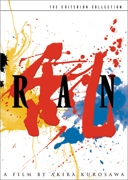
Ran
(1985)Akira Kurosawa
3I could just as easily have picked Kagemusha. The beauty of the Samurai war film. Color-coded armor and banners and endless waves of soldiers attacking fortresses shrouded in mist. I read somewhere that Kurosawa painted the grass greener and the wheat fields yellower as part of his color scheme.
#9 in Hossein Amini’s Top 10Kurosawa’s being one of the essential masters is best represented by these, his most operatic, pessimistic, and visually spectacular films. Try and guess which is which. How he managed to be both exuberant and elegant at the same time will be one of life’s great mysteries.
#3 in Guillermo del Toro’s Top 10It’s hard to pick which of Kurosawa’s films is my favorite, since they’re pretty much all top-ten worthy. But for sheer spectacle and beauty, Ran is pretty hard to beat. The cinematography is unreal, the acting heightened and emotional, and his use of music and sound (and the sometimes dramatic lack of it) shows a master at the top of his game. I’ve lived my life by the Kurosawa quote “An artist is one who never averts his eyes.” Make sure you don’t avert your eyes from this classic! (Yes, I just said that. You’re welcome, Criterion!)
#7 in Paul Feig’s Top 10 -
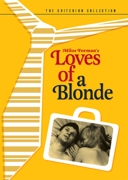
Loves of a Blonde
(1965)Miloš Forman
3This is such a simple and funny movie that tells what is at its core a very sad story about a young woman trapped in Communist Czechoslovakia. The actors and faces that Milos Forman cast in all the roles are fantastic and real, and the young piano player’s tired and fed-up parents are two of the funniest, most subtle characters I’ve ever seen in a movie. This is one of my favorite movies to turn people on to, since very few people have ever seen it.
#3 in Paul Feig’s Top 10One of my favorite films by Milos Forman and so bittersweet as to leave an aftertaste. Glorious in black and white and poignant as hell, it’s one of those films that reminds you why you fell in love with cinema in the first place.
#3 in Neil LaBute’s Top 10This wonderful film about young female factory workers in an isolated town in central Czechoslovakia utterly convinced me that I wanted to spend my career making photographs of institutional life. To raise the morale of the women, the factory director invites a reserve unit of older men (mostly married) to the next factory dance. The only young man at the dance is a jazz musician from Prague. The result is hilariously funny and very touching, with a twist of sadness at the end—a typical Milos Forman film.
#8 in Mary Ellen Mark’s Top 10 -
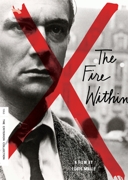
The Fire Within
(1963)Louis Malle
3The best film about alcoholism I’ve ever seen. Not so much about drinking as the alcoholic’s search for meaning in a world that is slowly losing definition. Malle’s camera is also masterful at capturing the experience of being hammered.
#3 in Hossein Amini’s Top 10This is the single most underrated film of the entire French New Wave. Its near obsessive tracking of Maurice Ronet through the wet Paris streets as he retraces the steps of a wasted life makes for one of the most tightly focused of the era’s film portraits of a desperate man at the end of his rope. Its slow build toward an inexorable end is Louis Malle’s most nuanced work—this from a director who was already noted for his almost classical discipline. Ronet, until then largely thought of as a lightweight romantic film actor, surrenders himself to the downhill yet strangely transcendent fate that awaits him on the mirror of his room.
#3 in John Bailey’s Top 10It was a struggle for me to choose just one Louis Malle film, so I chose two to count as one. This one is particularly exceptional, thanks in part to the amazing performance by Maurice Ronet. Pushed by Malle to lose forty pounds, Ronet gave a hard, hopeless portrayal of a despondent and suicidal man saying good-bye to his disdainful and shallow youth. Though he originally shot the film in color, Malle switched to black and white to more accurately depict the subject matter. Listening to the commentary, I learned that Malle used this film as a sort of exorcism for himself, feeling that he had already done everything at such a young age. Deeply personal, it was his favorite of his own films.
#3 in Marcel Dzama’s Top 10 -
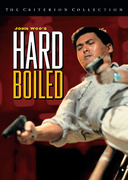
Hard Boiled
(1992)John Woo
3I’ve probably seen this film a hundred times. It’s gunfights as ballet—and the two coolest, most bad-ass movie cops ever Not played by Clint Eastwood —RBG
#6 in Robert Ben Garant and Tom Lennon’s Top 10Out of print, but I’ve got it! Wheeee! Terrific commentary and eleven Woo trailers!
#1 in Patton Oswalt’s Top 10 -
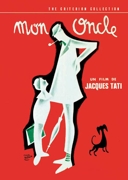
Mon oncle
(1958)Jacques Tati
3Again, limiting myself to only one film per director, I went with Mon oncle to stand for Tati’s body of work. It was hard not to pick Playtime, but now that I’ve seen it a few times in 70 mm, I’m not sure I can ever bring myself to watch it on television (and I own the Criterion version). I had the opportunity to see M. Hulot’s Holiday a number of times as a teen and in college, but it never did much for me. Mon oncle was different. It was a revelation, so charming and brilliantly inventive, yet understated. It is a film I can watch again and again (and I have).
#8 in Dave Filipi’s Top 1010. Jacques Tati is one of my heroes, and this film, I believe, is his best. It parodies the influence of modern architecture and design in the late 50s. Also, Mr. Tati used just the visuals to tell a story and make people laugh. Very deadpan. I also generally discard dialogue to make the imagery carry the plot and humor.
#10 in Bill Plympton’s Top 10The first film I remember seeing. I was seven. It was a Sunday morning, late in 1973. I was alone in a theater that no longer exists. I remember I couldn’t stop laughing. Mon oncle and Playtime were the films that made me love modern architecture.
#1 in João Pedro Rodrigues’s Top 10 -
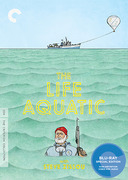
The Life Aquatic with Steve Zissou
(2004)Wes Anderson
3Wes Anderson really used everything he had in this one. All the things that make him such an amazing, unique filmmaker come to life.
#4 in Flying Lotus’s Top 10A masterpiece of art direction and set design. No other film in history has ever quite captured the essential dry rot of the 1970s’ fourth-rate Mediterranean beach world. Having spent sixteen summers in areas near, but not quite in, low-rent Med tourist towns, it was a thrill ride straight back to childhood.
#3 in Frank Kozik’s Top 1010. Sometimes I get free DVDs from Criterion, but not always. I wanted to get one of each, you know, like the whole collection, but they said, “No, Adam, we don’t do that.”
#10 in Adam Yauch’s Top 10 -

L’Atalante
(1934)Jean Vigo
3Channel Jean Renoir through Luis Buñuel—voilà!—Jean Vigo. This, his only feature, renders the mundane magical, the sad humorous, and the flesh transcendent as it portrays young newlyweds and their life on a river barge. “All day long it’s either smooching or squabbling,” laments a companion. And so it is in this poignant, poetic paean to the beauty and tribulations of married love.
#1 in Tim Forbes’s Top 10While it is sad to consider how young Vigo was when he passed away and to think of all the great films he never had a chance to make, it is amazing to think how we continue to remember this artist’s small body of work with such great admiration. This is a real testament to the power of his one full-length feature film, L’Atalante—a film that documents the early days of a newlywed couple who operate a canal barge. When I saw this for the first time, I was reminded of what it was like to see Citizen Kane for the first time: that sudden, startling feeling that you are watching something so far ahead of its time that it feels oddly out of place.
#5 in Kazu Kibuishi’s Top 10 -
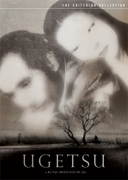
Ugetsu
(1953)Kenji Mizoguchi
2Probably the most beautiful overall film/package combo in the Criterion Collection. Mizoguchi’s eerie, haunting, and elegant film is one of the most devastating morality plays I’ve ever seen, and it just might scare you into being a better person. It will most likely haunt you for quite a while. The design of the packaging is also really gorgeous. Most likely my favorite Criterion disc set.
#4 in Kazu Kibuishi’s Top 10Mizoguchi is one of the greatest masters who ever worked in the medium of film; he’s right up there with Renoir and Murnau and Ford, and after the war he made three pictures—The Life of Oharu, Ugetsu, and Sansho the Bailiff—that stand at the summit of cinema. All of his artistry is channeled into the most extraordinary simplicity. You’re face-to-face with something mysterious, tragically inevitable, and then, in the end, peacefully removed. I love all three of these pictures and many other Mizoguchi films as well (including Princess Yang Kwei-fei, The Story of the Last Chrysanthemums, and Miss Oyu, to name only a few), but Ugetsu has the most powerful effect on me. There are moments in the picture, famous ones, that I’ve seen again and again and that always take my breath away: the boat slowly materializing from out of the mist and coming toward us . . . Genjuro collapsing on the grass in ecstasy and being smothered by Lady Wakasa . . . the final crane up from the son making an offering at his mother’s grave to the fields beyond. Just to think of these moments now fills me with awe and wonder.
#4 in Martin Scorsese’s Top 10 -

La dolce vita
(1960)Federico Fellini
2For all its other virtues, it is the party scenes that have stuck with me. I feel like I’ve been to many parties like these. Everyone having a good time on the outside while feeling helplessly lonely and insecure inside.
#4 in Hossein Amini’s Top 10I saw this film when it first came out in the very early ’60s. It’s a chronicle of a decadent society full of Fellini’s incredibly inventive and imaginative imagery. It’s the story of a Roman journalist struggling between producing something meaningful in his life and drifting along a path of total emptiness. I was very young when I saw the film. I was completely inspired by the combination of such beautiful photography and the sad and powerful story.
#3 in Mary Ellen Mark’s Top 10 -

Rosemary’s Baby
(1968)Roman Polanski
2Set in a world that seems completely familiar and mundane—the devil could be our neighbor or sitting next to us in our local café. The experience is all the more terrifying for bringing horror into our everyday existence rather than keeping it at a safe fantastical distance.
#7 in Hossein Amini’s Top 10A lullaby for the Antichrist, Roman Polanski’s adaptation of Ira Levin’s diabolic best seller has Manhattanite Rosemary (Mia Farrow) slowly coming to believe that her husband (John Cassavetes), nosy neighbor (Ruth Gordon), and almost everyone else in their apartment building are conspiring against her . . . and that the child she is carrying is the prophesied spawn of Satan. The chanting and summoning are solemn yet absurd, but the sense of betrayal and a world turned against a lone woman makes this an enduring nightmare.
#5 in Kim Newman’s Top 10 -

A Woman Is a Woman
(1961)Jean-Luc Godard
2I blame this movie for starting me smoking again when I was in film school in the eighties. After becoming so smitten with all that Anna Karina embodies, I decided to wear blue tights with red skirts and smoke, constantly. Needless to say it did not turn me into Anna Karina—my tights were the wrong shade of blue, and I was hacking like an old granny at the Santa Anita racetrack. Still, I loved the film, wildly, and love her in it.What is so gorgeous about this DVD is, firstly, Anna herself, and nextly, the color is like powdered paint, soft yet vibrant—not just the gorgeousness of everything Karina wears but also the murals on the walls of the strip club where she works, the jukebox from which Charles Aznavour sings. The exteriors, often shot from high angles on rooftops, have the feel and texture of what Paris must have been at that moment.I saw in the booklet that this film was very special for Jean-Luc Godard and Karina. They were in love, they wed, she was pregnant with their baby, and you can feel the exuberance of the romance in this movie. It’s absolutely exhilarating to me, and also incredibly funny.The other amazing feature on the DVD is a short documentary on Anna Karina made in 1966, clearly to promote Anna, the musical Serge Gainsbourg wrote for her. Serge closes the short, talking in the most brazenly sensual, big, bold close-up about Anna’s humor, her voice, and her sex appeal . . . It’s scrumptious!
#1 in Allison Anders’s Top 10This has always been my favorite Godard film. The first time I watched it, I was heartbroken because I thought my DVD was defective: the sound kept cutting out. In researching further I learned I was the fool—Godard was playing with sound design. It was in a way I had never heard before. His use of long camera pans with text explaining what our heroes think but would never say is absolutely brilliant. Between Anna Karina, her red tights, and the celebration of American musicals, it manages to sum up all my favorite things.
#1 in Brie Larson’s Top 10 -
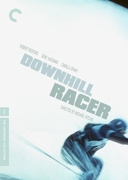
Downhill Racer
(1969)Michael Ritchie
2I’d rather watch a movie about sports than watch actual sports, and even then, I’d rather not watch a movie about sports. That being said, this is one of my favorite character studies put to film, and certainly one of the best sports films ever made. Michael Ritchie and Robert Redford dodge the pep talks and winning redemptions. There’s no cheering for the underdog here. Instead, they’ve crafted a smart and poetic ride through a complex world of talented assholes, and in doing so they reveal darker intrinsic truths about the myth of teamwork. It’s a complicated portrait of an unlikable hero, and a film that has one of the most indelible endings I’ve ever seen.
#6 in Philip Anderson’s Top 10The style, the cutting. Gene Hackman, Dabney Coleman. Once he hit his stride, did Redford ever give a bad performance? And what choices Redford made—to make films showing the dark side of competitive America.
#4 in Angus MacLachlan’s Top 10 -
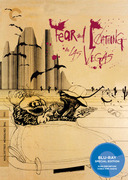
Fear and Loathing in Las Vegas
(1998)Terry Gilliam
2Now another one of my all-time favorites. Who doesn’t want a bangin’ red convertible and a suitcase full of drugs? I’M IN.
#2 in Flying Lotus’s Top 109. This one has grown on me, and I realize it’s one of the better novel-to-film works from the 1960s counterculture. Also notable for the brilliant performances from Johnny Depp and Benicio del Toro.
#9 in David Markey’s Top 10 -

And God Created Woman
(1956)Roger Vadim
210. I saw this movie as an adolescent in the late fifties, at the Bay Theatre in Pacific Palisades, and it made me feel strange things I’d never felt before . . . I also thought that Brigitte Bardot was the number-one sex kitten on earth.
#10 in Tom Schnabel’s Top 107. Peter is like the bigwig. He’s the head honcho.
#7 in Adam Yauch’s Top 10 -

Robinson Crusoe on Mars
(1964)Byron Haskin
2This one is on the list for nostalgic reasons, plain and simple. I saw it on TV as a child (on my mom’s recommendation, if memory serves) and knew I was watching something completely different than the rest of the brainless fare to which most kids are exposed. One vivid memory I have is of being scared by the film, but in that really great way kids are scared by things like the flying monkeys in The Wizard of Oz or the Pleasure Island sequence in Pinocchio. Though I’m sure I saw it in a pan-and-scan version, I was struck by the vivid colors of the film, and the scenes with little to no dialogue must have been as foreign to me as the beginning of Wall-E was for most kids this past summer. I’ve seen it a couple of times as an adult, and thankfully it stands up very nicely.
#9 in Dave Filipi’s Top 109. From the glory days of sci-fi, still innocent and fun.
#9 in Al Reinert’s Top 10 -
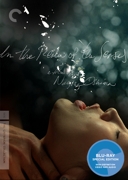
In the Realm of the Senses
(1976)Nagisa Oshima
2Crazy Love—A Double Bill Not for the Faint of Heart: On the face, Senso’s operatic melodrama and the pornographic explicitness of In the Realm of the Senses make for an odd coupling, but both serve up powerfully extreme and provocative portrayals of love run amok. Exquisitely photographed and scored, both are tales of unbridled passion and lust told against backdrops of political and social turmoil. Both end with women gone mad, consumed by obsessive love that destroys their men, who both die at their lovers’ hands. Luchino Visconti and Nagisa Oshima are filmmakers of deeply different sensibilities and concerns, of course, and the meaning and import of their stories are utterly divergent. Senso is an opulent, chilling tragedy of individuals bound in their lives and times. In the Realm of the Senses is transcendental; in death, love is forever.
#6 in Tim Forbes’s Top 10Bleecker Street Cinema, early eighties, I winced at the climax (well, the movie’s climax, not the characters’, which are plentiful). Chekhovian hard-ons as a country marches to war. The end of masculinity. Pornography slowed down to find cinematic expressions for the language of human needs. The egg—make like a chicken! The Japanese theater of sex. The universal power of love—deadly. Decadence. Laughing at the wrong moment of dismemberment. My mind is blown. Is there nothing the screen can’t hold? The goal of art is not to be great but to be daring. Sometimes it’s both.
#5 in Oren Moverman’s Top 10 -

Kes
(1970)Ken Loach
2There are 400 Blows people and there are Kes people. I’m Kes people. It’s my favorite coming-of-age film. Make sure to watch the extras so you can learn about Ken Loach’s equally gifted producer, Tony Garnett. See his films Handgun and Prostitute if you’re able to find them.
#9 in Philip Anderson’s Top 10What can I say about this movie? One of the more influential films of my childhood, it is a heartbreaking and hilarious tale of a poor young schoolboy who poaches a kestrel as a pet. He has nothing in his life apart from the relationship with his bird. The realism may be the best I’ve witnessed. The lead performance is perfect on every note. I dream of being in a movie this good.
#4 in Dominic Monaghan’s Top 10 -
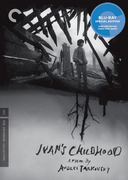
Ivan’s Childhood
(1962)Andrei Tarkovsky
2I have special memories of the film not only because it’s one of my favorites but also because it was the film that introduced me to Tarkovsky. Though not as rigorous as later works such as Andrei Rublev or The Mirror (another film on childhood during World War II), it contains plenty of the thematic concerns and stylistic tendencies that would appear again and again in his work. And, of course, the end of the film is simply devastating.
#6 in Dave Filipi’s Top 10Tarkovsky is my hero, and the hero of Russian cinema—a man who found a way to make transcendent, transgressive films that went beyond his political circumstances and captured something far more primordial and enigmatic about the world itself. For this and many other reasons, he’s considered to be one of the great directors in cinema history, which is no small feat for a Soviet artist. If you’re a newcomer to his films, start with Ivan’s Childhood and go from there.
#2 in Daniel Lopatin’s Top 10 -

Vengeance Is Mine
(1979)Shohei Imamura
2This true-crime docudrama creeps along with a strange momentum and, at first glance, reads like a straightforward telling of a murderer’s life on the lam. In time, however, Imamura’s distance and deceptive simplicity start to add up to motives all their own, and deeper themes about our impulses and the various forms we use to mask them take hold. Soon we’re no longer dealing with just a killer but an entire country seemingly stained to its core with a hidden sickness. Imamura takes true crime and irrevocably intertwines it with the potent idea that murder is one of our most honest forms of expression, and brilliantly unfolds it from our killer’s bloody beginnings to his last gesture of impossible defiance.
#10 in Philip Anderson’s Top 10A tough, energetic chase film from Japan in the late seventies, based on a true story, with a strong performance by Ken Ogata as an outwardly charming con man and serial killer. It differs from the formal style of the great Japanese filmmakers like Ozu, to whom Imamura was an assistant. When Imamura started directing, he wanted to make films as unlike Ozu’s as possible, and Vengeance Is Mine is the best example of that. He leaves all judgment of his characters to the viewer, and the film is both operatic and contemporary. Beautifully photographed, it’s at times surreal and at other times plays like a documentary, which some viewers have found confusing, especially Imamura’s fracturing of the timeline. Those who love film and know Imamura’s others, like The Eel and The Battle of Nayarama, will find this one essential.
#9 in William Friedkin’s Top 10 -
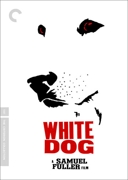
White Dog
(1982)Samuel Fuller
2In the days when people carried lists and searching for a movie was a more tactile process, the question “Do you have that racist dog movie starring Kristy McNichol?” was not uncommon for me to hear. Fuzzy VHS bootlegs of the film existed, but a proper release of this legendary film remained elusive. Finally unearthed, White Dog is here accompanied by extras that explain why it became such a rarity, and the shameful absurdity that followed its making. Who other than Sam Fuller could feverishly quilt together an animal horror tabloid with a dreamy-eyed starlet and offer up an earnest exploration of racism at the same time?
#11 in Philip Anderson’s Top 10I don’t know many people who have seen this movie, but it’s great. Are you a dog person or a cat person? Forget Cat People with Nastassja Kinski and Malcolm McDowell—not that the two animalistic movies have much in common other than dangerous, large-fanged creatures and a bit of 1980s spandex. Who knows what possessed Samuel Fuller to cast that straight-shooting seventies TV star Kristy McNichol as the lead? But no arguments here! White Dog is suspenseful, poignant, and entertaining, plus it features some of your favorite Roger Corman all-stars!
#10 in Georgia Hubley’s Top 10 -
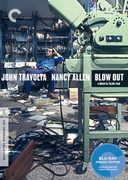
Blow Out
(1981)Brian De Palma
2Close-up and Blow Out make a great double feature, mainly because their titles sound so cool together but also because you can’t find two better examples of wickedly smart and politically alive “self-referential” cinema that couldn’t be less doctrinaire. Also, because including Brian De Palma proves I’m not a total snob and allows me to plug one of the funniest and most intelligent books of film theory of the past decade, Chris Dumas’s Un-American Psycho.
#10 in James Schamus’s Top 10I have heard people call themselves Brian De Palma apologists. I am proud to say that I am a huge fan without any caveats. There’s a reason that, back in the seventies, fellow movie brats Spielberg, Lucas, and Scorsese would defer to De Palma as “the filmmaker.” When on form, his work is something to behold. Even the lesser works of De Palma contain flashes of genius, while the best of his movies rank as pure cinema. Blow Out is certainly one of De Palma’s finest. There’s not a wasted shot, not even a wasted corner of frame. In the telling of this audiovisual thriller, De Palma uses Steadicam work, split screens, split diopter shots, and complex optical effects to utterly exciting but never overly flashy effect. Some directors are great storytellers without their presence being felt, but De Palma, much like his cinematic hero Alfred Hitchcock, is a master manipulator of both his medium and his audience. He plays us like an instrument, maneuvers us like puppets, and frequently makes us look where we’d rather not. Blow Out begins with De Palma turning the camera on himself and criticisms against him, then ends with one of the crueller, blacker chapters in cinema.
#1 in Edgar Wright’s Top 10 -
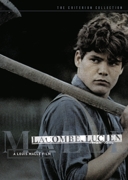
Lacombe, Lucien
(1974)Louis Malle
2Malle delivers stories that still resonate for their audacity of subject and unflinching portrayals of sorrowful characters.
#3 in James Franco’s Top 10I remember the story of Lacombe, Lucien, who was seduced by the German occupiers to be a quisling. They made him feel he was “somebody.” The film, being after the war, dealt with his psychic examination of who he was; many of his contemporaries would not forgive him. I knew director Louis Malle personally, and I know that attracted me to see his film, which was somewhat autobiographical.
#8 in Haskell Wexler’s Top 10 -

The Spy Who Came in from the Cold
(1965)Martin Ritt
2I had never seen it before. It’s great, and the interview with John le Carré is touching—especially his assessment, or more like admission, at the end that Martin Ritt made “something like a classic.”
#7 in Wes Anderson’s Top 10Before Tinker, Tailor, Soldier, Spy there was the bleaker, 1960s John le Carré, who wrote the novel upon which this film is based when the cold war was at its coolest. This meditation on spy-craft by Martin Ritt is Brit-noir at its finest. Richard Burton as the alcoholic Alec Leamas oozes arrogance and desperation in equal measure, and with wonderful performances by Claire Bloom and the always interesting Oskar Werner, this is a spy movie Bergman could have made. An unusual saxophone-driven score of terrific atmosphere—I once chased all over London to find it, returning home to find the album disappointingly did not feature the best cues.
#7 in John Taylor’s Top 10 -
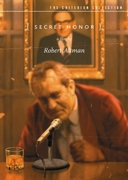
Secret Honor
(1984)Robert Altman
2Altman is another hero. These films are hypnotizing because of their pace. Altman’s cameras swirl around and zoom in on his characters as they reveal themselves slowly. Altman said he let actors do what they became actors to do (meaning: Act! Create!), and these films are two examples of how this freeing process can create indelible performances.
#15 in James Franco’s Top 10I managed to survive the sixties with very long hair and very little insight into politics. Everything I didn’t want to think about Richard Nixon was brought to life in a remarkable performance by Philip Baker Hall in Robert Altman’s underappreciated classic.
#6 in Ricky Jay’s Top 10 -

Last Year at Marienbad
(1961)Alain Resnais
2This one really shook up the filmmakers of my generation before we started making our own films. The late comedian Bert Lahr told me that, when he was in the first production of Beckett’s Waiting for Godot in 1956, “I did that damn play for ten weeks, and I never understood a word of it.” I’ve seen Marienbad at least twenty times over the past fifty years, and I don’t understand one scene of it, but what a fantastic experience. I don’t understand the Grand Canyon or Schoenberg’s Transfigured Night, either, but they continue to move me. Marienbad is that rare film that changes the possibilities of narrative in cinema. I no longer try to “figure it out”; I just let it take me. The soundtrack can get on my nerves, but the film itself is visual music.
#3 in William Friedkin’s Top 101. A rich and complex hypnogogic experience. Just where is this story taking place? In a dream, in memory . . . in the afterlife? Are these even questions that you can ask about a movie like this? Resnais structures the film in an ever looping pattern—everything turning in on itself again and again. The narrative seems to match the very patterns of how memory works. Every viewing reveals new layers of meaning previously unseen. A masterpiece.
#1 in Seth’s Top 10 -
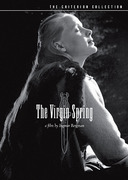
The Virgin Spring
(1960)Ingmar Bergman
2I put myself through college working as a projectionist for the film program, and this was the first film I showed. Its images still haunt me. This film first brought Bergman together with his acclaimed cinematographer Sven Nykvist, and it brought them to me.
#1 in Frederick Elmes’s Top 10Such a haunting, penetrating film. It feels undoubtedly ahead of its time, as potentially one of the first films to explore themes of rape/revenge in its narrative.
#9 in Zola Jesus’s Top 10 -
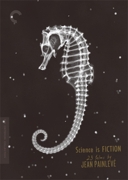
Science Is Fiction: 23 Films by Jean Painlevé
()Jean Painlevé
2Jean Painlevé’s twenty-three shorts feel like they are from another planet. They are beautifully dreamlike; I watch them anytime I need inspiration.
#10 in Marcel Dzama’s Top 10I’m still working my way through this two-disc set of whimsical documentary shorts by a filmmaker unknown to me until now. Droll, enchanting, and perfectly scaled for home viewing, they open a window on an aquarium that Paul Klee would have felt right at home in—were he, you know, a fish.
#10 in Nathan Lee’s Top 10 -

Sansho the Bailiff
(1954)Kenji Mizoguchi
2The most beautiful melodrama ever made. I can’t help crying when I think about the last scene, on the Island of Sado: in the beach, near a poor shack, the sublime Kinuyo Tanaka, now old and blind, finally reunites with her long-lost son, Zushio. And life goes on; the seaweed picker continues to turn the weeds that dry in the sun.
#4 in João Pedro Rodrigues’s Top 101. A strong candidate for Greatest Film Ever Made. A perfect and profound masterpiece, rivaled only by its near companion Ugetsu.
#1 in Robin Wood’s Top 10 -

Ordet
(1955)Carl Th. Dreyer
2Directed by the Danish master Carl Theodor Dreyer, Ordet is yet another film made in 1955 to which I’m deeply indebted. There is a stunning scene of literal resurrection that inspired my own visual approach to The Exorcist and gave me the courage to stage a supernatural event as if it were actually happening, without scary lighting or weird angles. Like many of Dreyer’s other films, including Vampyr and The Passion of Joan of Arc, Ordet is based on literary source material (in this case, a play). But all his films are deeply spiritual in their examinations of the mystery of faith, and purely cinematic.
#5 in William Friedkin’s Top 10The first two hours of the film consist mainly of Danish farmers and craftspeople arguing about Christian theology in veritable slow motion; the final six minutes, unless you’re an alien replicant, will have you on your knees, eyes lifted in wonder to the screen.
#2 in James Schamus’s Top 10 -

Shock Corridor
(1963)Samuel Fuller
2The voice-over in Shock Corridor affected me deeply. It helped me realize that as a storyteller, you really have all the freedom in the world to tell the story the way you want to. There’s a line in here where an inmate wakes our hero in the middle of the night, chewing gum, to tell him that if you chew enough gum your mouth gets tired and your mind gets tired and then you don’t feel crazy, and he shoves gum in our hero’s mouth and then goes to sleep. Everyone is coping the best they can, madness is in all of us, ambition will take you down and don’t you forget it—how comforting!
#5 in Miguel Arteta’s Top 10Something’s to be said for the Bicameral Mind. Kill the Pig and the Gods will commune through the head on the pole. I think I’m getting Lasik—just in case the veneer shatters.
#11 in Christa Lang-Fuller’s Top 10 -
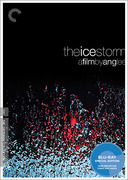
The Ice Storm
(1997)Ang Lee
2One of the most gloriously depressing films ever made, an awkward tribute to the dysfunctional family in seventies America. And the wallpaper in many scenes is a tacky sort of perfection. So if you’re in a mood to get pretty bummed out, and look at some really authentic wallpaper, look no further. This film is like getting punched in the stomach with a rotary phone. —TL
#3 in Robert Ben Garant and Tom Lennon’s Top 10The tragedy of this movie strikes out of nowhere and yet remains completely inevitable, which is the best sort of storytelling. It captures how sex is dangerous in a visceral gut punch. Even though this is very much a period piece, the themes remain timelessly disturbing. And the haunting sound design of the clinking ice-covered branches stayed with me long after the film ended.
#6 in Nicholas Stoller’s Top 10 -
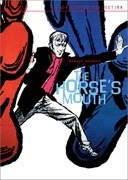
The Horse’s Mouth
(1958)Ronald Neame
28. This is not only one of the funniest films ever made, but, as one who has spent time with a number of painters, I could see that it was really about painters and painting. And it was responsible for my first film—a short that ran for almost a year at the Paris Theater in New York. Of course, I’ll always love it. One of the lines I love is when the helper lady asks how you can tell when a picture is finished, and the painter hero looks at her quizzically and says, “You just know.” For me, that was movies.
#8 in D. A. Pennebaker’s Top 105. Alec Guinness at his peak, as a mad, misanthropic artist living on a houseboat. Very funny satire on the “art” industry.
#5 in Bill Plympton’s Top 10 -
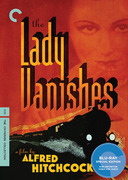
The Lady Vanishes
(1938)Alfred Hitchcock
21. The tea label stuck precipitously on the window was such an astonishing film idea that I will ever look to duplicate that feeling of chill in any film I make.
#1 in D. A. Pennebaker’s Top 102. So well made, so clever, you have to laugh—perhaps the cleverest thriller ever. What I especially love in Hitchcock is the level of social detail: you get an intense feeling for the time, the place, the social structure, and all social forms. The two cricket-buff characters went on to have their own series of films.
#2 in Whit Stillman’s Top 10 -
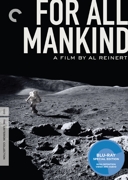
For All Mankind
(1989)Al Reinert
2Sandra Bullock was clearly tired and emotional when she said, in Gravity, that she hated space. How could you not love space, and how could you not love a documentary about how we—yes, all mankind—made it to the moon and back? Turned out the best thing about the moon was the view of Earth, but it was worth going all that way just to feel better about home. My only complaint is that the film could be three hours—or three days—longer.
#1 in Geoff Dyer’s Top 10An incredible document of man’s greatest endeavor.
#7 in Christopher Nolan’s Top 10 -

Le cercle rouge
(1970)Jean-Pierre Melville
2Classic noir droll flick.
#7 in Andrew Loog Oldham’s Top 106. It contains a Buddhist concept that is echoed in some of my own works. Here we see three heroes caught in a unique situation where their friendship matters more than anything else.
#6 in Johnnie To’s Top 10 -
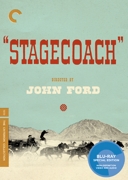
Stagecoach
(1939)John Ford
2The perfect movie. Perfect structure, perfect characters. Every character in every movie made since Stagecoach is a version of a Stagecoach character. —RBG
#9 in Robert Ben Garant and Tom Lennon’s Top 10One of the very few westerns, my favorite classical genre, in the Criterion Collection. How to make an almost huis clos in the immensity of Monument Valley? Only Ford had that secret. The apparition of the great John Wayne in the Ford family, as the Ringo Kid, in a beautiful tracking shot, made him a star. Later, Wayne said about Ford: “This made me a star, and I’ll be grateful to him forever. But I don’t think he ever really had any kind of respect for me as an actor until I made Red River for Howard Hawks, ten years later. Even then, I was never quite sure.”
#10 in João Pedro Rodrigues’s Top 10 -

Richard III
(1955)Laurence Olivier
2Olivier’s best film as a director and maybe as an actor. With the help of excellent source material, he gives us a masterly criminal who narrates his villainy before executing it, trusting that his will, brains, oily charm, and relentless commitment will serve him, until it no longer does. Like Rupert Pupkin, he’d rather be king for a day than a shmuck for a lifetime. Every time I watch it, I think: “This time Anne will resist him.” She never does.
#6 in Gary Giddins’s Top 10I have never tired of watching this film over the decades, ever since it premiered on TV in 1955, the same day of its theatrical release. Richard III is the greatest character the world’s greatest writer ever created, and this is his best play, and the greatest heroic performance ever given by the greatest English-speaking actor, Laurence Olivier, perfectly directed by the actor with a superb supporting cast and a fantastic score by Sir William Walton. It’s quite an achievement in every possible way. From his first appearance in the part on the London stage in 1944, it was acknowledged as the greatest Shakespearean performance anyone had ever seen, and it seems destined to remain that, thanks to this great film.
#1 in Paul Morrissey’s Top 10 -
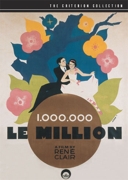
Le million
(1931)René Clair
2As delightful as any other film of the early thirties. Their influence on sound films in general, and musicals in particular, is underestimated.
#7 in Bruce Goldstein’s Top 104. How I loved this film. It was what I had always wanted a musical to be. Little bits of music woven through a romantic story. I thought it was perfect, and I even made a tape of the soundtrack, which I still have, somewhere in the archives. A great opening—which, by the way, I think is the case with most of my film loves—and, of course, the two- and three-line songs that inspired the Marx brothers as well as many others, myself included. But I don’t think anyone did it as well as Clair.
#4 in D. A. Pennebaker’s Top 10 -
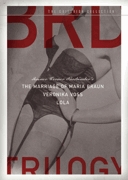
The Marriage of Maria Braun
(1978)Rainer Werner Fassbinder
2I love the whole BRD trilogy for Fassbinder’s truthful rendering of the German psyche after World War II devastation and post–Marshall Plan de-Nazification, and for the great parts that he offered to his female actors. Being a teenager in the fifties, in Germany, I left for Paris to avoid being sucked into the materialistic obsession displayed here.
#6 in Christa Lang-Fuller’s Top 10 -
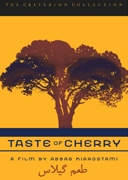
Taste of Cherry
(1997)Abbas Kiarostami
2Kiarostami’s world-beating mystery is less about method and meta than the filmmaker usually prefers, but the immediacy of its peril and intimacy of its reality are pure soul glue. Such is the film’s veracity that I didn’t see the three-part schematic construction of it until I’d seen it four times, by which point it ceased to make a difference. The ending, for simply being itself without apologies, is peerless.
#9 in Michael Atkinson’s Top 10A powerful journey through despair and silence. A magnificent reflection on death and the meaning of life, as well as the ways life sometimes unveils its beauty—by, say, the taste of cherries that have fallen from a tree, a tree shaken by a man who was planning to hang himself on one of its branches but who remembered, when savoring these wild berries, that life is worth living. Long single takes, car scenes (for which Kiarostami is famous, and rightfully so). A gem. Must see. Now, please.
#5 in Xavier Dolan’s Top 10 -

La collectionneuse
(1967)Eric Rohmer
210. Eric Rohmer is one of our all-time favorite directors. All of the “Six Moral Tales” contained in the box set are brilliant. La collectionneuse is our favorite. It is sparse and dreamlike. Every second moves languidly; every detail revealed with warmth . . . Time unfolds in this film just like summer.
#10 in Rodarte’s Top 10 -
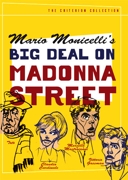
Big Deal on Madonna Street
(1958)Mario Monicelli
26. I discovered the film on TV in Spain and still like the Spanish title, Rufufu—signaling it as a travesty of a Rififi-style clever caper. The original Italian title—I soliti ignoti (Persons unknown)— also becomes very good once you’ve seen the film. Just the way the characters eat food in the movie is delightful, and the filming style classic and brilliant—a comedy of great elegance. The only two autographs I’ve collected are Mario Monicelli’s and Diana Ross’s (whose “I’m Coming Out” greatly aided the Last Days of Disco soundtrack).
#6 in Whit Stillman’s Top 10 -

Claire’s Knee
(1970)Eric Rohmer
2Eric Rohmer’s films appeal to me because of the moral tales he presents. His characters confront inner conflicts where there are never clear answers. The adventure is in watching human nature take its course.
#6 in Frederick Elmes’s Top 10 -

Love in the Afternoon
(1972)Eric Rohmer
2To take off a turtleneck shirt or not, that is the question. On the answer hinges the happiness of a lifetime in this, Eric Rohmer’s most direct and emotionally gripping “moral tale.”
#8 in Tim Forbes’s Top 10 -
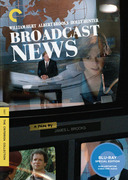
Broadcast News
(1987)James L. Brooks
2No one writes a complex woman like James L. Brooks, and no one embodies her like Holly Hunter.
#3 in Lena Dunham’s Top 10I watch this film once a year. I’ve studied it. I’ve graphed it out. After hundreds of years of love triangles, to have resolved one in such an original way is truly astounding. The moment William Hurt deceives Holly Hunter with the fake crying is just heartbreaking. Not to mention the sweating set piece, which is among the great comedy bits. It also introduces our three main characters with startling economy and humor, a feat that is near impossible.
#3 in Nicholas Stoller’s Top 10 -
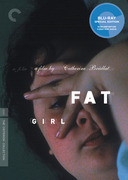
Fat Girl
(2001)Catherine Breillat
2Brutal and very funny. I love its defiance. I look forward to each new Catherine Breillat film.
#12 in Richard Ayoade’s Top 10I haven’t seen this, but I really liked A Very Young Girl and The Last Mistress, with Asia Argento, which I thought was brilliant and hilarious. —Kim Gordon
#11 in Sonic Youth’s Top 10 -
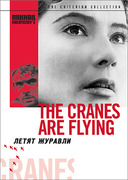
The Cranes Are Flying
(1957)Mikhail Kalatozov
2A vanguard film (again). 1957. A great love story. But mostly a work of overimpressive technical virtuosity. Breathtaking crane shots, hair-raising forest sequences (with a memorable rotating low-angle shot of trees dissolving into one another), an amazing and very swift traveling shot (captured from a tram in movement) in which the lead actress dives into a crowd, looking for the man she loves. We follow her, and once she is stopped by a fence, we tilt up fluidly, and end the scene with a great ensemble shot. Superb art direction, superb lighting, with curtains flying in the wind, hiding the face of the actress, partially lit with lightning flashes. A true work of art. Tatyana Samojlova, who won an award at Cannes for this role, is brilliant and touching, and delivers a rather minimalist performance for its time.
#6 in Xavier Dolan’s Top 10A Soviet film, it came out when the Cold War was going full blast. American films celebrated victory without displaying the true extent of the cruelty of warfare, and the damages it inflicts on our humanity. Of particular technical interest to me was a combination handheld crane shot, which I duplicated in Bound for Glory with a new device called the Steadicam.
#6 in Haskell Wexler’s Top 10 -
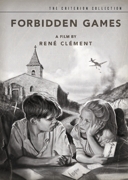
Forbidden Games
(1952)René Clément
2In my top three love stories. Narciso Yepes’s legendary score gives this juvenile romance its fame and contributes to its magic, but the movie is an entity of perfection. The artistic direction is meticulous and inspired; there’s a vanguard oneiric look to the film. Brigitte Fossey delivers an endearing and incredibly mature performance, and looks the epitome of femininity despite her—gulp—six years of age. Great opening sequence depicting the 1940s French exodus from Nazi occupation. Genuine and sensible study of youthful mores; creative representation of the children’s universe. Stunning grace and poetry. Heartbreaking departure scene. I love that film. It makes me want to be a pretentious critic.
#3 in Xavier Dolan’s Top 101. For me, the most devastating childhood remembrance film—if that’s what it is. The story is too remarkable and strange to be fiction. Six-year-old Brigitte Fossey—trying to make sense of her just-witnessed parents’ deaths by urgently assembling a beautiful little animal graveyard—might just nudge out Dean Stockwell as my all-time favorite child star, and she makes me cry a lot more! Comedy mixed in with such sadness, sadness, sadness!!! This is early childhood distilled and put in a very dangerous bottle!
#1 in Guy Maddin’s Top 10 -

Il Posto
(1961)Ermanno Olmi
2A great Italian film from the often ignored Olmi (please also see The Tree of Wooden Clogs). The scenes between young Domenico and Antonietta are so real you will think you have witnessed them yourself while standing outside a café window. Wonderful mix of humor and sadness, and of lightness in the face of the eternal meaninglessness of society’s damning labyrinth. The scenes go by so effortlessly, yet by the end you’re profoundly moved without understanding how Olmi has done it.
#4 in Ramin Bahrani’s Top 10What a beautiful film. Olmi was a documentary filmmaker who then switched to features. He explores young love in very simple, but deeply felt, terms. Even more exciting is the short film included on the disc, La cotta. This is like Rushmore in miniature. A young, imaginative kid in love. So fun and sad.
#13 in James Franco’s Top 10 -

The White Sheik
(1952)Federico Fellini
2My favorite of all Fellini’s films, it seems his most perfect and certainly his most likable and affecting. And it’s his most comical, thanks to the wonderful performances of Leopoldo Trieste and, especially, Alberto Sordi, who went on to star in over three hundred films in Italy and is rightly regarded as their greatest actor. Its story also prefigures the theme of three of his later films (La dolce vita, Toby Dammit, and Ginger and Fred), as to the corrosive effect of the new media religion of celebrity. In 1950, the inroads of paganism on Christianity still seemed only foolish when a photo¬-comic-book character almost destroys a Catholic marriage. But already by 1959, the lust for media attention had become all consuming and malignant in La dolce vita, where a journalist goes from one idiotic media event to another, including an imagined miracle in the rain. In Toby Dammit, on a nightmarish TV talk show, the church itself parades in front of the TV cameras; and in Ginger and Fred, about another ridiculous TV celebrity program, it has all become totally absurd, only momentarily relieved by a nostalgia for older performers. Half a century later, the celebrity media religion rules, and there is no end to its reign in sight.
#5 in Paul Morrissey’s Top 10 -
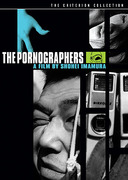
The Pornographers
(1966)Shohei Imamura
2One has to love a film that has for its subtitle An Introduction to Anthropology. This hardscrabble tale of two blockheads dedicated to making a yen in the flesh trade is the most congruent homage to Laurel and Hardy one could dream of. Everything falls apart around them, but they keep forging on. The film does, too, ratcheting up craziness along the way: a carp in a fish tank—the reincarnation of a deceased husband—somersaults to show its disapproval of the widow’s sexual antics with her new beau; a depressed middle-aged woman jumps on the windowsill of her hospital room and masturbates, to the great joy of a crowd of workers that seems to have just exited the Lumière factory; a crumpled pornographer indulges in a bit of voyeurism that turns into a lesson in the use of angles in cinema, etc., etc.; and finally an ending in the waters off Osaka’s harbor that leaves one howling with laughter. All of it is filmed with an aggressive, unrelenting elegance that puts the viewer through rigorous ocular gymnastics. If you thought that Ozu was the alpha and the omega of the visual possibilities offered by Japanese home architecture, Imamura’s truculent epic will open your eyes anew.
#3 in Jean-Pierre Gorin’s Top 109.
#9 in John Lurie’s Top 10 -
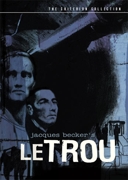
Le trou
(1960)Jacques Becker
2For this one, puff up a bag of popcorn in the microwave, empty your bladder, and expect to be on the edge of your seat from the word go. Pure filmic pleasure, more complex than it appears, because all depends on the intensity with which Becker piles details upon details. It makes the film a perfect “how to burrow through walls when you only have a toothpick for a tool” movie and a kissing cousin of Bresson’s A Man Escaped, minus the grandiosity of patriotism. The he-men that constitute the cast are fresh off the streets, still gloriously incapable of histrionics and so good that more than a few have gone on to honorable acting careers. And to boot, get ready for the most laconic and hands-down greatest last line of any movie. I won’t act as a spoiler.
#9 in Jean-Pierre Gorin’s Top 10An absolutely riveting prison-breakout story. Becker is the bridge between Renoir and the new wave.
#4 in Jonathan Lethem’s Top 10 -
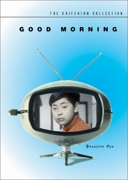
Good Morning
(1959)Yasujiro Ozu
2Ozu! One of my wife’s favorite movies. Good Morning is a sweet and simple story about two Japanese boys who refuse to speak after their parents won’t buy them a television set. It also has a lot of fart jokes.
#3 in Bill Hader’s Top 10The Ozu film that makes me think more of Tati. Is it the music in the beginning? I wish I had seen it when I was seven, but none of Ozu’s films were ever released in Portugal.
#2 in João Pedro Rodrigues’s Top 10 -

Spartacus
(1960)Stanley Kubrick
27. We need one costume drama in here, and I love the fact that Kirk Douglas gave blacklisted Dalton Trumbo a shot at the script. This is a great film on many levels.
#7 in Joe Mantegna’s Top 10 -
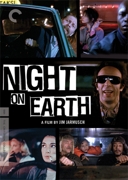
Night on Earth
(1991)Jim Jarmusch
2Jim Jarmusch is the finest director at making you feel the energy of different countries. Here, he gets a great opportunity to do that, as he tells the story of five taxi drivers working different night shifts around the world. A young Winona Ryder is dwarfed in her driver’s seat; Roberto Benigni shines.
#8 in Dominic Monaghan’s Top 10One of my favorite films by one of my favorite directors. My list could just as easily include Down by Law or Stranger Than Paradise. The soundtrack is by Tom Waits. You’ve seen it already, right? —SS
#10 in Sonic Youth’s Top 10 -

Black Moon
(1975)Louis Malle
2Black Moon is a quintessential “surreal” film. What interests me is that so many films that we would label surreal were made in the sixties and seventies, decades (and many art movements) after surrealism’s inception. By the time so many of these surreal films were being made, the prevalent trend in art was toward conceptualism and minimalism, approaches aimed at stripping away the non sequitur . . . which is, in essence, the guiding principle at work in Black Moon. What is also interesting to me is the tenor of most of these films. While Zéro de conduit captures a certain joie de vivre and sense of humor, which, I feel, is indicative of the early surrealists, the nature of many later surreal films generally seems much darker—more Max Ernst than, say, Magritte.
#9 in Keegan McHargue’s Top 10Such a fantastical film . . . I love how even at its most bizarrely surreal moments it feels firmly rooted in a stark alternate reality.
#6 in Zola Jesus’s Top 10 -

George Washington
(2000)David Gordon Green
2When I first saw David Green’s George Washington, I was completely blown away by it. The scene where George saves the white kid in the pool, despite his head injury, always makes me cry. Thanks for that, Daaaaave!
#4 in Bill Hader’s Top 10David Gordon Green!
#2 in Patton Oswalt’s Top 10 -
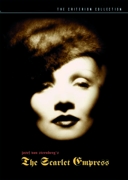
The Scarlet Empress
(1934)Josef von Sternberg
2I sometimes hear films described as “Lynchian,” which, I take it, means that they deal with a certain space between light and darkness (or perhaps it’s just a more sophisticated way of saying that something is flat-out creepy). The Scarlet Empress is David Lynch for 1934 . . . and by that I mean that the lighting design is crucial. I love the scene where the freaky Grand Duke Peter (whom I recognized as the crotchety book salesman from my childhood favorite—the ever-so-slightly psychedelically tinged—Bedknobs and Broomsticks) emerges from the shadows to meet his new bride, the Princess Sophia Frederica (played by Marlene Dietrich) for the first time.
#2 in Keegan McHargue’s Top 10This fifth film from von Sternberg and Dietrich is their apotheosis, delirious and excessive, with the most perfectly controlled photography (by Bert Glennon) of any black-and-white film ever made. Dietrich never looked more beautiful, nor flaunted her signature decadent Dietrich persona more fully. Their sixth and final film, The Devil Is a Woman, harshly photographed by von Sternberg himself, just didn’t work. But after The Scarlet Empress, it’s not surprising that neither director nor actor had anywhere better to go, as this film summed up and concluded the greatest actor-director collaboration in film history. And the supporting performances by Louise Dresser, as the empress, and Sam Jaffe, as the mad emperor, are really superb.
#6 in Paul Morrissey’s Top 10 -

The Long Day Closes
(1992)Terence Davies
2Terence Davies is one of my favorite filmmakers. His first three films, which include this one, are so passionate and personal it makes me want to jump out of my skin, ecstatic with tears.
#10 in Paul Dano’s Top 10I have to declare an interest here—I was the production designer of the film. Terence Davies takes us on a fictionalized journey through his childhood. There is no story; the film is composed of memories, some long and complicated, some very short, all vivid. A shot onto a carpet in which nothing happens but movements of shadow and sunlight is memorable because so universal; a sailing ship seen in a child’s schoolroom daydream, the tortures of confused guilt, the joys of a close family life, and the loneliness of the outsider are, in one way or another, common to us all. Davies has somehow caught that essence for us.
#10 in Christopher Hobbs’s Top 10 -
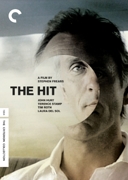
The Hit
(1984)Stephen Frears
2Stephen Frears’s The Hit is John Hurt (in a truly frightening performance) and a young, punked-out, Chinese-star-throwing Tim Roth (ditto) as two hit men transporting stool pigeon Terence Stamp (what a fucking cast!) from Spain to Paris to meet retribution from the crime boss he put away. Add seductive Laura del Sol and music by Roger Waters and Eric Clapton and you have one of my favorite British crime movies ever.
#5 in Bill Hader’s Top 10That Criterion has released this little-known Stephen Frears gem is a testament to the thoroughness of their search for obscure masterworks. Few films have gambled as much on a simple portrayal of the dynamics between desperate men . . .
#1 in Christopher Nolan’s Top 10 -

The Last Emperor
(1987)Bernardo Bertolucci
29. Okay, maybe one more costume drama, but what a one it is. Bertolucci is a favorite of mine, and this is one of those majestic films that remind you how powerful the medium can be.
#9 in Joe Mantegna’s Top 109. It’s almost surreal to see Chinese costume drama performed with English dialogue!
#9 in Johnnie To’s Top 10 -

Mona Lisa
(1986)Neil Jordan
2When I first saw Mona Lisa, I had no idea who Bob Hoskins was (I was eight). I honestly thought they paid some low-rent criminal money to be in this movie. He was so believable that when I saw Who Framed Roger Rabbit, I was like “Hey, that guy really turned his life around. This movie is huge. Good for him.”
#6 in Bill Hader’s Top 10My favorite film of the eighties. Maybe Marlon Brando in Last Tango in Paris and Robert De Niro in Raging Bull can compare with Bob Hoskins’s performance here, but very few others can. Who else could have fully mined the depths of unrequited love and authentic heartbreak while wearing a pair of glittery, heart-shaped sunglasses? Who else could have so completely personified the rage, hope, humor, pathos, and cruel decency at the heart of Neil Jordan’s dreamy masterpiece? No one. Absolutely no one.
#1 in Dennis Lehane’s Top 10 -
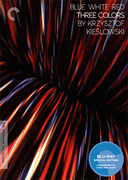
Three Colors: Blue
(1993)Krzysztof Kieślowski
2A filmmaker taking all the elements of cinema and using them to their fullest. And Juliette Binoche.
#5 in Paul Dano’s Top 10This film contains some of my favorite quiet moments in all of cinema, and Kieślowski is a master of using restraint as a means to tell a powerful story. Small moments in a Kieślowski film can often carry the weight and impact of a sledgehammer. Just watch the beginning of Blue and you will see what I mean. And while you’re at it, I recommend checking out the rest of the great Three Colors trilogy.
#7 in Kazu Kibuishi’s Top 10 -
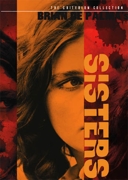
Sisters
(1973)Brian De Palma
2I love early Brian De Palma thrillers, and this is one of the best. Margot Kidder and Jennifer Salt are great. What Psycho did for taking a shower this movie did for giving a birthday cake to your girlfriend. And where Charles Durning’s character ends up is hilarious.
#10 in Bill Hader’s Top 10Brian DePalma’s breakthrough thriller pays homage to several Hitchcock classics—Rear Window and Psycho, mostly—in a genuinely innovative manner, with jittery, counter-culture-ish New York wiseass humor rather than Hitch’s British wryness, an interesting set of mirror image antagonists in peculiar twins played by Margot Kidder (with a seductively odd French-Canadian accent), and nosy reporter Jennifer Salt. It has graphic shocks but also stretches of hallucinatory strangeness.
#8 in Kim Newman’s Top 10 -

A Man Escaped
(1956)Robert Bresson
2The specificity, the precision, the pacing, the details, the economy. The offscreen action and the use of sound. This is one of my very favorite films.
#2 in Paul Dano’s Top 10Robert Bresson’s ode to freedom is an astounding tour de force. As a prison-break movie, it is a thriller of high suspense, told by a master who eschews artifice. He relies on precisely observed action, a sophisticated and spare technique (no one makes more of off-camera space and sound), and a direct, first-person narration to achieve a fully realized world of remarkable intensity in which our identification with the protagonist is total. His unshakeable faith and persistent effort elevate us all. His liberation is ours.
#9 in Tim Forbes’s Top 10 -

Wise Blood
(1979)John Huston
2John Huston had an incomparable late run—The Misfits, Fat City, Under the Volcano, Prizzi’s Honor—but Wise Blood is my favorite. William Hickey, Harry Dean Stanton, and Brad Dourif kill it with a baby Jesus; bent religious fervor second only to Ken Russell’s The Devils.
#2 in K. K. Barrett’s Top 10This movie solidified my love for and devotion to Brad Dourif. Through thick and thin, I will follow that man’s work. His stellar performance in Wise Blood nearly left me broken by the end.
#8 in Zola Jesus’s Top 10 -
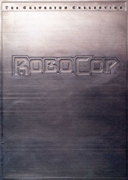
RoboCop
(1987)Paul Verhoeven
2I’d buy that for a dollar! Or $39.95, as it were.
#8 in Nathan Lee’s Top 10Paul Verhoeven’s masterstroke, and one of society’s ultimate post-human lores—a cyborg cop in search of the criminal who ended his emotional existence . . . or did he? Forget that it’s one of the best cyborg-related films ever (second only to T2)—it would make my list on the strength of its satirical depiction of American TV news. It’s a classic.
#11 in Daniel Lopatin’s Top 10 -
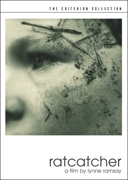
Ratcatcher
(1999)Lynne Ramsay
2When I was starting to think about making my own films, it was always Lynne Ramsay who I would turn to. I think she is an incredible filmmaker and one of the greatest we’ve ever had in the UK. I would watch this film endlessly, amazed by the composition, the sound design, the naturalistic acting. It is also beautifully emotional. I still put it on in the background when I write, in the hope of some inspiration. I met her briefly at an awards party last year, and I was stupidly overexcited.
#7 in Andrew Haigh’s Top 10 -

Daisies
(1966)Věra Chytilová
2I love this movie so much. It feels a little sociopathic at times. It’s very unfortunate that the director, Vera Chytilová, was so heavily censored by the Czechoslovakian government after the making of this film, which was banned nearly instantly after it was released.
#10 in Zola Jesus’s Top 10 -

Seconds
(1966)John Frankenheimer
2What’s the most chilling last line in the cinema? How about “cranial drill”? Followed by an unforgettable sound effect. John Frankenheimer’s nightmarish adaptation of David Ely’s be-careful-what-you-wish-for novel has a weary, middle-aged businessman (John Randolph) buy out of his old life and be transformed into Rock Hudson, only to find that renewed youth isn’t satisfying. A unique, affecting, paranoid science-fiction film noir, with a perfectly cast Hudson doing his best-ever screen acting and the too-seldom-used Salome Jens an extraordinary presence as the girl on the beach.
#2 in Kim Newman’s Top 10 -
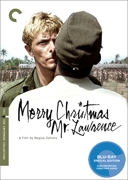
Merry Christmas Mr. Lawrence
(1983)Nagisa Oshima
2Nagisa Oshima will probably be remembered best for his groundbreaking and beautiful hardcore film In the Realm of the Senses, but this is a wonderful one. Breathtakingly shot, with a fantastic, memorable score, and great performances by David Bowie, Tom Conti, and “Beat” Takeshi Kitano.
#6 in Anthony Bourdain’s Top 10Few films have been able to capture David Bowie’s charisma, but Oshima’s wartime drama seems tailor-made for his talents. Tom Conti has rarely been such a sympathetic guide for the audience’s emotions.
#6 in Christopher Nolan’s Top 10 -
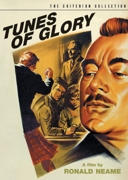
Tunes of Glory
(1960)Ronald Neame
2A fierce elegy to Britain’s past glories, this is a film to see again and again, if only because of Alec Guinness’s bold and vivid portrait of a rapidly tarnishing military hero. I am attached to it because I spent some of my two years’ service in the Royal Air Force at the Joint Services School for Linguists in Bodmin, Cornwall, not only with Navy and Royal Marines types but with soldiers from the endless list of British Army regiments, each with its fiercely prized individual identity, history, peculiarities of uniform, and traditions. No soldiers were more clanny or inbred than those of the fabled Scottish (kilted) Highland regiments, like the Black Watch, the Argyll & Sutherlands, or the Cameronians. The regiment in Tunes of Glory is like one of those, a small, enclosed world, and in it the rivalry between the brash and heroic young colonel and his replacement leads to a sad and messy tragedy. It is one of those brilliant “little” films that almost reaches greatness, and it remains, along with The Hill and Zulu, one of the iconic films about the British Army.
#9 in Michael Korda’s Top 1010. A surprisingly complex film, especially considering its subject matter: Scottish military men and bagpiping! The contrast between the two commanders (Alex Guinness and John Mills) is a fascinating set of character studies. The film builds to a powerful emotional climax, which, at least for me, was completely unexpected. Guinness’s performance as Major Jock Sinclair is very rich and layered—especially for such a broad and bombastic character.
#10 in Seth’s Top 10 -
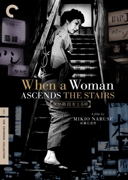
When a Woman Ascends the Stairs
(1960)Mikio Naruse
2My friend Shigehiko Hasumi told me that Naruse was a very silent man because he had the feeling the world had betrayed him. Naruse was one of the greatest craftsmen of all time, a man who always spoke softly about our weaknesses. This is one of those rare films that will offer you new mysteries each time you see it.
#4 in Pedro Costa’s Top 10 -
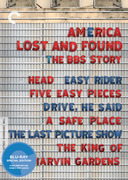
The Last Picture Show
(1971)Peter Bogdanovich
2This is such a beautiful, sad movie. A film about the fifties infused with the disappointment of the seventies that, when watched now, simply seems to be about the disappointment inherent in all of our lives. Like all incredible films, it seems to burn itself into your mind like memories of your own life. Jeff Bridges is also really hot in it.
#8 in Andrew Haigh’s Top 10Youthful optimism and sexuality are thwarted by the bitterness of a crumbling town in Peter Bogdanovich’s lovely film of Larry McMurtry’s novel. One can feel the influence of John Ford and Orson Welles in both the deep focus compositions and the unexpected bursts of volatility. For example: there’s a fantastic scene where an argument between Jeff Bridges and Timothy Bottoms escalates into a fistfight—the shots start to come faster and faster, almost every new shot from a different camera angle, culminating in a shocking moment of violence.
#10 in Greg Mottola’s Top 10 -

The River
(1951)Jean Renoir
2No bullshit sentimentality here. One of the most courageous films ever made. Mr John: We should celebrate that a child died a child. That one escaped. We lock them in our schools, we teach them our stupid taboos, we catch them in our wars, we massacre the innocents. The world is for children. The real world. They climb trees and roll on the grass, close to the ants . . .
#1 in Pedro Costa’s Top 10The years right after the war were a very special time in cinema, all around the world. Millions were slaughtered, entire cities were leveled, humanity’s faith in itself was shaken. The greatest filmmakers were moved to create meditations on existence, on the miracle of life itself. They didn’t look away from harshness and violence—quite the contrary. Rather, they dealt with them directly and then looked beyond, from a greater and more benign distance. I’m thinking of Rossellini’s The Flowers of St. Francis and Europa ’51, the great neorealist films by Visconti and De Sica, Mizoguchi’s Ugetsu and Sansho the Bailiff, Kurosawa’s Ikiru and Seven Samurai, Wyler’s The Best Years of Our Lives, Ford’s My Darling Clementine and Wagon Master, and this remarkable picture. This was Jean Renoir’s first picture after his American period, his first in color, and he used Rumer Godden’s autobiographical novel to create a film that is, really, about life, a film without a real story that is all about the rhythm of existence, the cycles of birth and death and regeneration, and the transitory beauty of the world.
#3 in Martin Scorsese’s Top 10 -
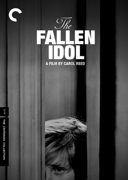
The Fallen Idol
(1948)Carol Reed
2Carol Reed was a brilliant director and a sweet man, but he was not a one-man band like David Lean; he required a strong, patient producer who loved him, as my Uncle Alex did, and a gifted screenwriter, which Alex found for him in the novelist Graham Greene, as well as an art director of genius—my father. He was at his best surrounded by talented people who loved him, who were virtual family, and that shows in his best films, Odd Man Out, The Fallen Idol, and The Third Man. One unusual aspect of Carol’s gifts was that he was among the rare directors good at working with children—go watch The Third Man and you will be astonished at the brilliant inclusion of the ghastly little boy who accuses Holly Martins of murder. Most of the great directors hate working with animals or children, but Carol—himself the illegitimate son of the great Edwardian actor and theatrical producer Sir Herbert Beerbohm Tree—had a natural sympathy and understanding of children. He was in fact childlike himself—hence his choice, later in life, to make a film of the musical Oliver!—and this shows in his direction of Bobby Henrey in this, another of those English films in which good manners manage to hide passion and even murder, except in the alarmingly clear view of a child. Ralph Richardson, dear Ralph, is at his best in the role of the butler.
#2 in Michael Korda’s Top 10 -
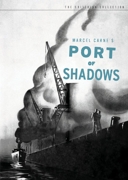
Port of Shadows
(1938)Marcel Carné
2It seems I’ve been watching Children of Paradise all my life. I remember taking my son to see it when he was seven. When I was trying to convince Brando to play Garrett in Pat Garrett and Billy the Kid, he told me that, along with the master swordsman in Seven Samurai, the thief in Children of Paradise was the greatest performance on film. I came to Port of Shadows much later in my life, and the Criterion transfer really enhanced its beauty. Jean Gabin became a prototype for me of a kind of actor difficult to find today. And the dialogue inspired me to attempt to re-create its poetic realism.
#9 in Monte Hellman’s Top 10As clearly as there is only one Lino Ventura, there is a sole Jean Gabin. Neither have I seen a replica of Michèle Morgan nor Michel Simon (one of the reasons why Renoir’s Boudu should be in this list, but . . .). Port of Shadows is a pure actor-based melodrama full of prewar pessimism. Bicycle Thieves proves that even the tiniest dreams can be torn to pieces. Never in the history of cinema has hope been served in so minimalistic but heartbreaking a way as in the last shot of this masterpiece.
#23 in Aki Kaurismäki’s Top 10 -
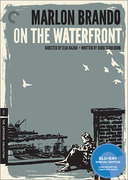
On the Waterfront
(1954)Elia Kazan
2Brando and Kazan. If there is some pearly gates studio, many of the films being shown at the Angelic Cinematheques will have these heavyweights working together. Urban poetry, raw and unrestrained masculinity, a heightened method of “real” acting. The kind of picture that really pulls you in, forces all the senses to work in tandem. Hypnotic and earthy, the real stuff of cinema, electrolysis of the rough and the holy.
#6 in Roger Corman’s Top 10It was you, Charlie.
#7 in Donald Fagen’s Top 10 -
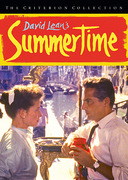
Summertime
(1955)David Lean
2Summertime is David Lean escaping from British filmmaking to take on a love story starring Katherine Hepburn. Perhaps not his finest moment, but my father did the art direction, which is sumptuous, and I spent a whole summer in Venice watching it being made.
#7 in Michael Korda’s Top 10As in the Max Ophuls film, Lean also deals with romantic love outside of marriage and intelligently understands that these relationships were sad and not meant to be. But with the end of marriage as anything more than a foolish, outdated formality that no one takes seriously anymore, the romantic film has logically disappeared, and there have been no great romantic leading roles for women ever since. The vulnerable, sympathetic character Katharine Hepburn so beautifully plays would be now considered some kind of neurotic nutcase, but I think it’s her best performance and it’s David Lean’s best film. He specialized in this genre of marital infidelity in films such as Brief Encounter and Passionate Friends, and when he gave it up for his outdoor spectacles, I don’t think he was ever as good again.
#8 in Paul Morrissey’s Top 10 -
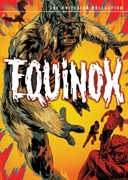
Equinox
(1970)Jack Woods
2The low budget and the amateur quality only help to create the unnerving creepiness of it.
#3 in Jaime Hernandez’s Top 108. This was a surprise when I first saw it, and it remains a surprise. I initially viewed it on an old VHS cassette (lent to me by a friend) taped off of late-night TV back in the 1980s (commercials and all). It really wasn’t what I expected. Its low-budget veneer faked me out. I figured it for an amateur snore-fest, but the movie turned out to be a truly otherworldly experience capturing some quality of the dislocative feelings of a nightmare.
#8 in Seth’s Top 10 -
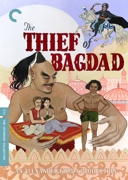
The Thief of Bagdad
(1940)Ludwig Berger, Michael Powell and Tim Whelan
2It makes me want to be a sailor, sailing out to sea.
#9 in Jaime Hernandez’s Top 10The beautiful music by Miklós Rózsa (the first film score ever released as a recording), the photography by Georges Périnal, the production design by Vincent Korda, and the performances by the Indian child star Sabu, Conrad Veidt, and the entire cast make it the most beautiful fantasy film I’ve ever seen. Like Snow White and The Wizard of Oz from the same period, this type of fairy tale depends on an innocence that has long since vanished, but I think it still works its magic today and is better than all the computer-generated children’s films of the last twenty years combined. Michael Powell, who was only one of many directors who made different sections of the film, attributes its true authorship to the genius of Sabu and the vision of its great producer, Alexander Korda.
#4 in Paul Morrissey’s Top 10 -

Berlin Alexanderplatz
(1980)Rainer Werner Fassbinder
2Yes, there was quite a controversy kicked up last year over the restoration. And while it’s not an uninteresting issue, it doesn’t distract from the gratitude we who hold Fassbinder dear feel when we hold this handsome box in our hands. This is the epic he was racing against destiny to complete; poring over the extras, you can’t help but sense that he knew it too. All of Fassbinder’s period pieces are, of course, about the Germany he lived in, the Germany I would begin visiting regularly just a few years after he’d gone, a Germany at ferocious odds with itself, arguing in the streets and in the papers and in classrooms and over dinner over what sort of country it’d make of itself, even in those later stages of starting all over again—not too long, of course, before starting all over yet again in 1989. An intense love-hate relationship with the German character, with German history and culture, and an ongoing recognition of the inextricability of the personal and the political, for better and for worse, permeate all of Fassbinder’s work; here, all that’s practically on parade. And the fireworks at the end are gruesome and gripping.
#4 in David Hudson’s Top 10 -

Night and Fog
(1955)Alain Resnais
2. . . which I first viewed at the Imperial War Museum while ensconced in the film archive researching for Overlord. It had a huge effect on me at the time, and I still regard it as one of the most profound films about the holocaust. Particularly in light of the fact that it was made so soon after World War II and was hauntingly structured by Resnais as a documentary.
#6 in Stuart Cooper’s Top 10An early work by Resnais. It’s only a half hour long, but I’ve not seen a film of any length that matches it in emotional resonance. It transcends the documentary form. I saw it around the time I first saw The Night of the Hunter, in the late fifties, and I was about to film my first documentary. Night and Fog begins with a beautiful color landscape beneath a blue sky. The camera cranes down to reveal a long stretch of barbed wire, followed by shots of vast fields overgrown with tall grass, trees, and wildflowers. The camera tracks slowly across the placid landscape, dotted with abandoned red brick buildings that could have been warehouses or barns; then a sudden shock cut to black-and-white footage of victims of the Holocaust. The long, tracking color shots of the killing fields of Auschwitz and Majdanek, only ten years after the end of the Second World War, are intercut with horrific black-and-white shots of piles of dead bodies, rooms filled with women’s hair, and personal effects. A dry, dispassionate narration is heard throughout, written by Jean Cayrol, a survivor of the camps. Night and Fog is one of Resnais’ first “memory” films and points the way to his later masterpieces, Hiroshima mon amour and . . .
#2 in William Friedkin’s Top 10 -
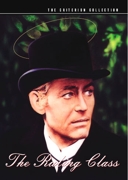
The Ruling Class
(1972)Peter Medak
2Hilarious, scary, grotesque, macabre; an opportunity to watch Peter O’Toole not playing Lawrence but still acting brilliantly, in a film that sets out to destroy the myth of British upper class superiority and does so wonderfully, demonstrating, among other things, that O’Toole is a great comic actor when given the chance. It in some ways prefigures Monty Python, but with an edge of real horror and madness that leaves one disturbed for days afterward. Not to be missed, despite some really weird moments.
#6 in Michael Korda’s Top 106. Love the Brits’ sense of humor, and I’d watch Peter O’Toole do almost anything.
#6 in Joe Mantegna’s Top 10 -

Yi Yi
(2000)Edward Yang
2If cinema went looking for a Theory of Everything—and found it—it would probably look something like this. All I can add, really, is that I very, very much hope to see A Brighter Summer Day in the not too distant future.
#5 in David Hudson’s Top 10A phenomenal slice-of-life family drama directed by the late Edward Yang from Taiwan that exemplifies some of the great realist cinema that was being made in Asian countries during this time (see Ang Lee). And despite the films having very little to do with each other, I always personally associate this film with In the Mood for Love by Wong Kar-wai. Both films were released here in the U.S. at the same time, and I watched both on the same day. That was a crazy day. I still remember how the air tasted after stepping out of the theater that evening. Also—and I feel I have to mention this—I watched a third film that amazing weekend, After Life by Hirokazu Kore-eda, and it was my favorite of the three (and is one of my all-time favorites). Kore-eda has a nice movie called Still Walking available from Criterion, but I am hoping for a nice edition of After Life someday.
#8 in Kazu Kibuishi’s Top 10 -

12 Angry Men
(1957)Sidney Lumet
2I’m grateful I saw this movie when I was twelve years old, without a scrap of cynicism. It was my first exposure to the anatomy of a sequestered jury. I remember I couldn’t wait to get my turn to serve, to be like Henry Fonda and repudiate bigotry once and for all. This was the American dream—not a Cadillac and a cigar but justice—righteousness and fair play that any child could understand.
#1 in Susie Bright’s Top 10. . . except perhaps this Sidney Lumet classic.
#2 in Christopher Nolan’s Top 10 -

Sans Soleil
(1983)Chris Marker
2La Jetée is probably the most powerful example of the use of still photography in cinema. It is a real landmark achievement in the world of low-budget filmmaking, produced primarily through the use of still photos and voice-over narration. Its limitations enhance the dramatic effect of the film, especially in its haunting final frames. I’ve always felt like so much great cinema is storytelling through memories, and here is a perfect example in possibly its purest form (another great example would be Memento, by Christopher Nolan). Similarly, Sans Soleil documents Marker’s journey through Japan, adding his travelogue notes as voice-over narration. A hypnotic and powerful film in its own right.
#11 in Kazu Kibuishi’s Top 10I would say it’s one of my all-time favorite movies. There were times in my life when I had to watch Sans Soleil once a year, and I could because there was a cinema in Vienna that used to show it every summer. On one hand, it’s a perfect and artistic movie, but on the other, it’s like the basis of moviemaking. It’s an essay film dealing with documentary material, and it transforms it into a poetic idea of the world. For me, it’s the highlight of documentary filmmaking.
#10 in Götz Spielmann’s Top 10 -
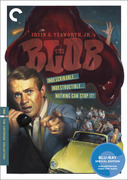
The Blob
(1958)Irvin S. Yeaworth Jr.
2Run! Don’t walk! I enjoy horror movies that involve fog, ooze, or anything nonhumanoid consuming humanity. You can choose to interpret them through a scholarly lens or simply enjoy the spectacle of blobitude.
#7 in Diablo Cody’s Top 10Screw it—I’m breaking the rules. I’m building a ’31 Coupe with my dad right now, all hopped up and ready to steal pink slips. Couple that with a new book I’m working on called Ten Against the World, about teen angst in the fifties, set against big ol’ Jack Kirby–style monsters, and you might begin to see why I hold The Blob so dear to my heart. It’s just fun. Live a little.
#11 in Scott Morse’s Top Ten -
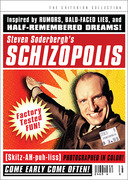
Schizopolis
(1996)Steven Soderbergh
2Steven Soderbergh’s most personal—and certainly most eccentric—film. Totally balls-out and unapologetic. This kind of movie is really, really hard to get made these days.
#3 in Diablo Cody’s Top 10 -
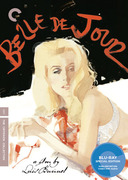
Belle de jour
(1967)Luis Buñuel
2As a sixteen-year-old when I first saw it, I was mesmerized, if utterly baffled, by Buñuel’s delightfully told, superbly crafted, and deeply disturbing fable of a young married woman, frigid at home, prostitute by day. Fantasy and reality interplay so freely that it is impossible to know the difference. And it matters not a whit. Love is punishment either way. And Catherine Deneuve’s almost unbearable beauty makes it hurt all the more.
#3 in Tim Forbes’s Top 10A thriller wrapped inside an enigma, this is my desert island disc, the one I’ve watched more than any other on this list. The psychology of the characters is revealed slowly and ambiguously. Each time I see the wheelchair (the husband’s fantasy) and hear the sound of the horse-and-carriage bells (the wife’s), and the way the two achieve harmony in the final scene, I’m reminded of Luis Buñuel’s ability to fuse reality and illusion in his characters and for the viewer. He performs this magic in plain view, like the best magicians. This is the film that illustrates that Catherine Deneuve is not only one of the world’s most beautiful women but a fine actress. Belle de jour is truly subversive in its satiric depiction of middle- class society, the church, and our social mores. If a ratings board ever understood this film, it would receive an NC-17, though there is no sex and little violence.
#10 in William Friedkin’s Top 10 -
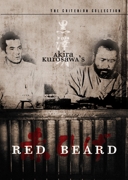
Red Beard
(1965)Akira Kurosawa
2Kurosawa’s secret Dickensian masterpiece: sprawling, sentimental, and encompassingly humane.
#2 in Jonathan Lethem’s Top 10 -
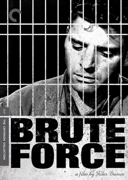
Brute Force
(1947)Jules Dassin
2I watched this 1947 stark, black and white, noirish prison drama as part of research for a film I directed called Animal Factory, written by novelist and ex-convict Eddie Bunker. For years I thought director Jules Dassin was a Frenchman working in the U.S. I was surprised to learn he was an American (Russian Jew) from Connecticut who fled the U.S. during the red scare of the fifties. He ended up in Paris and made the wonderful French film Rififi, which added to my confusion. The Naked City (1948) by Dassin is also a classic, shot on gloriously gritty locations in New York City.
#2 in Steve Buscemi’s Top 101. How cool is it to see Burt Lancaster flip Hume Cronyn off the wall? I love prison films, and this is one of the best. Bravo, Jules!
#1 in Joe Mantegna’s Top 10 -

Simon of the Desert
(1965)Luis Buñuel
2This is such a markedly wicked satire on the life of a tempted devotee. I can imagine that it was quite scandalous to many people when it debuted in 1965. I prefer Simon of the Desert’s austere qualities over the more outlandish subject matter and bold palette of later Buñuel. It does, however, have one of the strangest and most bombastic plot twists of all the Buñuels. I guarantee that you won’t see it coming, and it will definitely leave you scratching your head.
#5 in Keegan McHargue’s Top 10 -

Samurai I: Musashi Miyamoto
(1954)Hiroshi Inagaki
2I didn’t know anything about this film; I decided to just try it. I loved it. An old-style movie, and Mifune’s wild-man performance gives it special stature. There are not many actors with his charisma, a true strength, and humor, vulnerability, and truth. The film is well told, strong, honest, and simply filmed. I found it refreshing to be reminded that these simple qualities made the film, now fifty years old, beautiful and alive to me; a classic just like you promised, Criterion.
#9 in Jane Campion’s Top 10I cringe whenever I think of Pat Morita grabbing a fly with chopsticks. Toshiro Mifune’s original display of this technique is what film characterization is all about. His remarkable portrayal of Musashi Miyamoto grows in richness and complexity with each episode.
#8 in Ricky Jay’s Top 10 -

Zéro de conduite
(1933)Jean Vigo
2It is easy to see how this previously banned surrealist/Dadaist masterpiece influenced so many filmmakers to come. Jean Vigo’s use of physical comedy and the slightly provocative nature of the film’s subject matter work together to create a generally outré atmosphere that at times borders on the chaotic. It makes for a mesmerizing watch. Without Zéro de conduite, it’s hard to imagine a 400 Blows or If….
#1 in Keegan McHargue’s Top 10 -
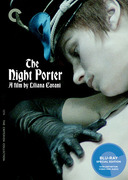
The Night Porter
(1974)Liliana Cavani
2A film that made an enormous impression on me. Dirk Bogarde and Charlotte Rampling in a film of extraordinary psychological perversity and truth. A film that persuades me that our lives are not logical but poetic and allegorical.
#2 in Jane Campion’s Top 10“None does offend, none, I say, none!” I’m with King Lear on this score: I never find anything offensive. Except The Night Porter. I include it here on the grounds that it must have something going for it—something utterly prurient—to have earned this unusual place in my tiny pantheon of aversions.
#7 in Geoff Dyer’s Top 10 -
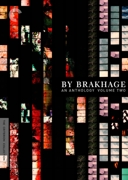
By Brakhage: An Anthology, Volume Two
()Stan Brakhage
1I can’t overemphasize what an important curatorial achievement these collections represent. Unless you were a film student, and even then, seeing films by Stan Brakhage was difficult. Prior to this release, his legend loomed large but few could experience why, and until recently, the majority of this work had been relegated to the exclusivity of educational markets. I’m grateful Criterion takes risks like this to make it available for everyone. It gives much-needed exposure to the mostly unseen world of experimental cinema and presents Brakhage, rightfully, on the same plane as our most well-known narrative masters. See A Hollis Frampton Odyssey for more!
#4 in Philip Anderson’s Top 10 -

49th Parallel
(1941)Michael Powell
1Both of these films can be considered B movies in the standards of Powell and Pressburger, but maybe partly because of that they seem to remain extraordinarily fresh, even if the first one (made in 1941) is clearly made partly for war propaganda reasons. All films made by the Archers are among the most beautiful.
#19 in Aki Kaurismäki’s Top 10 -
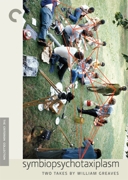
Symbiopsychotaxiplasm
(1968)William Greaves
1This title never comes through the spell check unscathed. I love director William Greaves’s bravery for making this outrageously fascinating experimental feature that pushes the boundaries of what’s traditionally accepted in film. There are actually two films here. The first one, which he made in the late sixties, was somehow denied a proper release, and the sequel (of sorts) he made over thirty-five years later. Part one was my favorite discovery at Sundance 1992, and I was proud and honored to have worked on the second installment. More to come, Bill?
#8 in Steve Buscemi’s Top 10 -

À propos de Nice
(1930)Jean Vigo and Boris Kaufman
1I have always considered Jean Vigo and Robert Flaherty close relatives. Between Nanook and L’Atalante, you can place practically all cinema except Bunuel’s L’age d’or.
#15 in Aki Kaurismäki’s Top 10 -
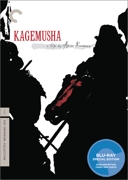
Kagemusha
(1980)Akira Kurosawa
1When I was fifteen, I caught a portion of Throne of Blood on television and couldn’t get it out of my mind. It set me off on a quest through video store shelves to figure out what it was I had seen, and I began by watching both Kagemusha and Seven Samurai on my way to finally rediscovering Throne of Blood. This pretty much sparked my interest in the classics. I cheated on this list by choosing three films, but I think it’s difficult to ever recommend just one Kurosawa film. Here’s a little side story: I used to encourage my friends to watch older movies back in high school, but they mostly found them to be dreadfully boring. The night before we were leaving for a snowboarding trip, I suggested watching a little bit of Seven Samurai. Now mind you, these are dudes who pretty much only watched the latest action movies or comedies. By the time intermission(!) came up, everyone had decided they needed to see the rest of this nearly four-hour epic instead of snowboarding in the morning. I highly recommend Seven Samurai for the reluctant classic movie watcher. It might just change some lives, but it can certainly change people’s perceptions of older films and remind them that “classic cinema” simply refers to old movies that are so awesome they’ve stood the test of time.
#3 in Kazu Kibuishi’s Top 10 -
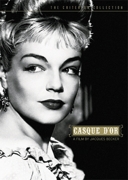
Casque d’or
(1952)Jacques Becker
1Here we find two versions of the same story, both unique.
#1 in Aki Kaurismäki’s Top 10 -

Mon oncle Antoine
(1971)Claude Jutra
1I emigrated to Canada with my mother the year Mon oncle Antoine debuted, the same time that the U.S. was doing nuclear testing on Amchitka Island, off the coast of British Columbia. The FLQ (Front de libération du Québec) was flourishing. Canadian radio was given a mandate to stop playing American bubblegum round the clock.
#7 in Susie Bright’s Top 10 -
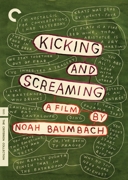
Kicking and Screaming
(1995)Noah Baumbach
1Be careful when discussing this film. If it randomly comes up in conversation, do not immediately start lecturing about how insightful it is in unspecific terms, because there’s a high likelihood the other person will think you’re actually referencing that movie where Will Ferrell coaches a soccer team. This will problematize the conversation in an interesting way, and you may be unfavorably compared to Armond White.
#5 in Chuck Klosterman’s Top 10 -
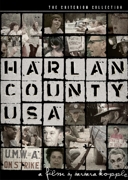
Harlan County USA
(1976)Barbara Kopple
1I found out in my thirties that Barbara Kopple’s effort is considered one of the greatest documentaries ever made. At the time of its release, I only knew that she had all but recorded my own life as a union organizer—the cold breaking dawn of the picket line each morning, sniper shots fired by company thugs, all completely unseen by the mainstream media.
#5 in Susie Bright’s Top 10 -
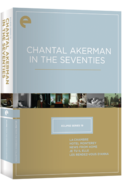
Je tu il elle
(1975)Chantal Akerman
1I remember going to my first “gay” film festival in the ’70s, with its tiny newsprint program, folding chairs for the audience, a complete underground experience. I asked my companion, “When do we see a lesbian movie?” Chantal Akerman’s avant-garde jewel was my first. My God, talk about ahead of her time. A proto-punk dyke protagonist, a butch, a whore, an outlaw, the unrepentant seize-fiend of all she sees . . . We still fight for glimpses of such antiheroines in the movies. Julie/Chantal is, regretfully, still a woman on the edge of antipatriarchal time.
#4 in Susie Bright’s Top 10 -
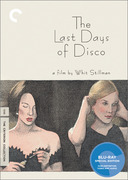
The Last Days of Disco
(1998)Whit Stillman
1When I first saw this, in Akron, Ohio, I thought, That’s a good movie. I saw it again after I moved to New York. It obliterated my mind. These people still exist.
#9 in Chuck Klosterman’s Top 10 -

The Bad Sleep Well
(1960)Akira Kurosawa
1Although any one of the recent godsend rush of Kurosawa releases could go in this slot. For years now this gem (and much of his filmography) has only been available for us poor Region 1 sods on crappy import discs, and though the broken English subtitles via a bad Chinese translation had a sometimes poetic dadaistic flair, it’s a relief to finally have a beautiful, intelligible disc of it. The film itself stands easily up to Stray Dog and High and Low as one of Kurosawa’s best contemporary crime dramas.
#9 in Rian Johnson’s Top 10 -
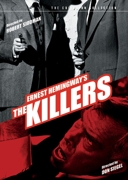
The Killers
(1964)Don Siegel
1. . . because it’s Don Siegel and film noir at its best. And because Lee Marvin is outstanding in it. Marvin became a friend after The Dirty Dozen [in which Cooper was one of the dozen]. Sadly, I failed to make a political thriller that Lee and I wanted to do, which had been coscripted by Christopher Hudson, with whom I co-wrote Overlord.
#5 in Stuart Cooper’s Top 10 -
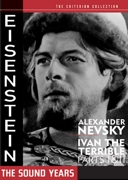
Ivan the Terrible, Part I
(1944)Sergei Eisenstein
1Potemkin is taught in film schools worldwide, more like a fossil than a real, breathing animal that must be dissected. Watch it because it’s important. So budding filmmakers are taught about formalism and montage, and they rarely get to watch Eisenstein’s later works, like Ivan the Terrible. They’re missing out: imagine a biopic run through the meat grinder of German expressionism, with every image connoting the pitfalls of absolute power, with cutaways of faces that are thankfully forever captured in celluloid marble, with a sense of mounting state paranoia and ever-crumbling artifice. Potemkin may have the classic scenes, like the dish, the lion, the guns, but Ivan has taken all those early lessons and boyhood feints and given us a masterpiece.
#5 in Roger Corman’s Top 10 -
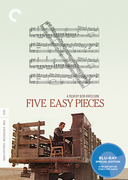
Five Easy Pieces
(1970)Bob Rafelson
1I’m also a big fan of Head and The King of Marvin Gardens, but this is my favorite of Bob Rafelson’s films. It is also one of the greatest ever about the solitude that comes from feeling adrift and morally alone in the world. I think Rafelson is oddly underappreciated, especially seeing as he made a succession of films that pretty much summed up the mood of seventies. I’m also determined to make a film with Karen Black.
#2 in Andrew Haigh’s Top 10 -
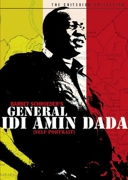
General Idi Amin Dada
(1974)Barbet Schroeder
1Possibly the most surreal documentary ever filmed. The restored print propels this into a realm of “reality” that’s nearly hallucinogenic. What a snappy dresser! A must for any accordion enthusiast.
#1 in Frank Kozik’s Top 10 -
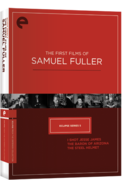
The Steel Helmet
(1951)Samuel Fuller
1I discovered Sam Fuller’s films when I was twenty, after seeing The Typewriter, the Rifle & the Movie Camera on IFC. I love how tough and authentic this movie feels. Gene Evans is so scary. The way he eats that cantaloupe and says “That man’s nothing but a corpse. Nobody cares who he is now,” is truly frightening.
#18 in Bill Hader’s Top 10 -
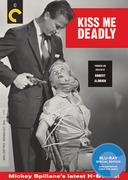
Kiss Me Deadly
(1955)Robert Aldrich
1Easily the ugliest, greasiest, darkest, and most influential noir of its day. Love it.
#5 in Anthony Bourdain’s Top 10 -

Chungking Express
(1994)Wong Kar-wai
1I could watch the work of Wong Kar-wai (and the brilliant cinematographer Christopher Doyle) all day long. I don’t have to understand what’s going on . . . I don’t care. Beautiful people, photographed beautifully. His films are the best, most romantic out there.
#4 in Anthony Bourdain’s Top 10 -
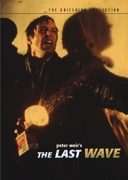
The Last Wave
(1977)Peter Weir
1Death, bones, secret underground caverns . . . apocalypse. What more could anyone possibly want?
#2 in Frank Kozik’s Top 10 -
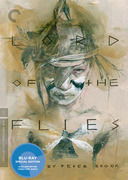
Lord of the Flies
(1963)Peter Brook
1Something’s to be said for the Bicameral Mind. Kill the Pig and the Gods will commune through the head on the pole. I think I’m getting Lasik—just in case the veneer shatters.
#10 in Frank Kozik’s Top 10 -
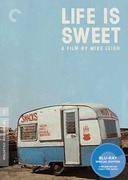
Life Is Sweet
(1990)Mike Leigh
1The actors/characters in Mike Leigh’s films are always shockingly vivid and alive.
#7 in Bong Joon-ho’s Top 10 -
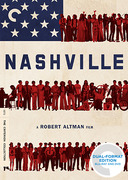
Nashville
(1975)Robert Altman
1There have been many “tapestry films,” including Altman’s own Short Cuts and Paul Thomas Anderson’s Magnolia. But I believe Nashville will always be the best in the class.
#6 in Bong Joon-ho’s Top 10 -
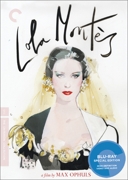
Lola Montès
(1955)Max Ophuls
1It’s Max Ophüls!
#5 in Bong Joon-ho’s Top 10 -
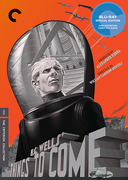
Things to Come
(1936)William Cameron Menzies
1I’m anxious to find out if I will be as thoroughly excited by the film as I was by H. G. Wells’s science fiction novels when I read them as a youth.
#4 in Bong Joon-ho’s Top 10 -
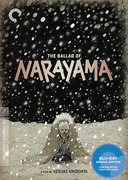
The Ballad of Narayama
(1958)Keisuke Kinoshita
1I would like to compare the film to The Ballad of Narayama by Shohei Imamura and Goryeojang by Kim Ki-young. I wish to fully experience and appreciate Keisuke Kinoshita’s bold colors through Blu-ray.
#3 in Bong Joon-ho’s Top 10 -

Kind Hearts and Coronets
(1949)Robert Hamer
1A perfect black comedy with one of the most underappreciated central performances in film history, by Dennis Price (and a handful of genius ones by Alec Guinness). Truly funny and as dark as sin, this is a film that still feels ahead of its time. The attached “American” ending helps remind us just how annoyingly safe and predictable American tastes can be—did we really need to be reminded?
#12 in Neil LaBute’s Top 10 -

The Tin Drum
(1979)Volker Schlöndorff
1Volker Schlöndorff’s brilliant adaptation of the great Günter Grass novel.
#5 in Christa Lang-Fuller’s Top 10 -
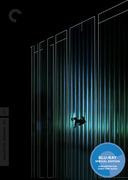
The Game
(1997)David Fincher
1I saw this when it came out. I was seven. It was my favorite film. I must have watched it forty times.
#3 in Brie Larson’s Top 10 -

I Am Curious—Yellow
(1967)Vilgot Sjöman
1Lena Nyman is fearless and riveting in this film, along with its companion, I Am Curious: Blue. I feel a little silly preferring one to the other, but I do enjoy this side of the story more. Are there men in blue knocking at my door? Don’t hurt me!
#6 in Brie Larson’s Top 10 -
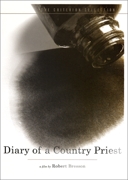
Diary of a Country Priest
(1951)Robert Bresson
1I first saw it on TV, one Easter Sunday. I was nine or ten, sick in bed. It made my convalescence so much sweeter (just like the old Lubitsch touch). I also remember Chronique d’Anna Magdalena Bach by Huillet and Straub being aired on a Christmas Day! If you’re this lucky, you’re hooked for life (imagine watching these films on TV nowadays).
#10 in Pedro Costa’s Top 10 -
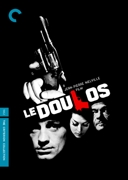
Le doulos
(1962)Jean-Pierre Melville
1I’d read Scorsese, Tarantino, and Jarmusch raving about Jean-Pierre Melville for years. Then I read how Paul Thomas Anderson’s brilliant first movie, Hard Eight, was an homage to Melville’s Bob le flambeur. I had to see one of his movies but couldn’t track them down at my local Tulsa video store. My first night in L.A., I walked down to the newly opened Cinephile video store and rented all of them! Le doulos is my favorite. It’s one tough-guy movie. Great ending!
#14 in Bill Hader’s Top 10 -

Le plaisir
(1952)Max Ophuls
1Le plaisir is probably my favorite Ophuls movie. It’s three stories by Guy de Maupassant. The camera work in this movie (as in all of Ophuls’s movies) is astounding. The masked figure dancing in the first story is incredibly haunting. Then there are the tracking shots from window to window at the bordello in the second story. And there’s a camera move in the third story that, given the equipment of the time, has to be one of the best in film history (I can’t say what it is or it’ll ruin the story—you’ll know it when you see it).
#12 in Bill Hader’s Top 10 -
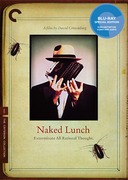
Naked Lunch
(1991)David Cronenberg
1It’s a good thing you people only have three of his movies, because this whole list would get really predictable. On second thought, it’s a terrible thing that you haven’t done more Cronenberg. Armageddon, but no Rabid? Priorities, people.
#3 in Nathan Lee’s Top 10 -
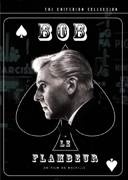
Bob le flambeur
(1956)Jean-Pierre Melville
1Melville has been hailed as the father, or godfather, of the French new wave. In fact, he was a classical filmmaker, telling his gangster stories in linear fashion, but with the highest quality control where acting and locations were concerned. Rain-slick streets belong, by some kind of divine right, to Melville, just as rivers belong to Renoir.
#7 in Peter Cowie’s Top 10 -

The Warped Ones
(1960)Koreyoshi Kurahara
1Pure maniacal energy and hoodlum spunk with a spinning moral compass. Looks like it was shot in a day. Under-wrought in the best ways. Just keeps me laughing. Dumb swagger to spare. Godard dialed to eleven.
#5 in K. K. Barrett’s Top 10 -
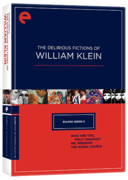
Mr. Freedom
(1969)William Klein
1William Klein, an expat photographer, looks at what drives the USA, a cocky hubris. Delirious colors and comic realities of the American way. Serge Gainsbourg music! A riotous pop art telling of the George W. Bush era long before it came to be.
#4 in K. K. Barrett’s Top 10 -
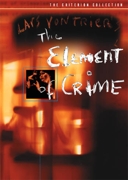
The Element of Crime
(1984)Lars von Trier
1My introduction to Lars von Trier, a breath of stale, musky air when I found it in 1990. A circular story in a sodden netherworld. Before his naturalism period, Lars explores studio trickery, and, as always, with guilt and repression bubbling under the surface.
#3 in K. K. Barrett’s Top 10 -
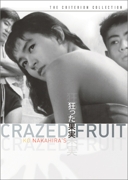
Crazed Fruit
(1956)Kô Nakahira
1Another revelation to come out of left field just when you thought you knew the pantheon of Japanese cinema. Nakahira’s control of his material is apparent from first shot to last, as he charts the frantic duel between two rock and roll–generation youngsters for the sticky, sweaty affections of Mie Kitahara. Here’s a film that not only reflects the rebellious spirit of Japanese youth in the mid-fifties but also sports an intoxicating visual panache. It also features one of Donald Richie’s most engaging commentaries.
#10 in Peter Cowie’s Top 10 -

Insomnia
(1997)Erik Skjoldbjærg
1Christopher Nolan’s American remake was perfectly fine, but it still couldn’t capture the gut-twisting oppressiveness of Erik Skjoldbjaerg’s original. Anchored by Stellan Skarsgard’s impeccable portrayal of a man drowning in his own sins, this is the neonoir that truly turned noir on its head: darkness becomes something you pray for, while light is a straight razor that’s found entrance to your brain.
#5 in Dennis Lehane’s Top 10 -
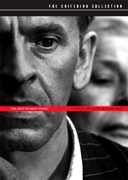
The Shop on Main Street
(1965)Ján Kadár and Elmar Klos
1My first foreign film experience, at the age of eleven, is one of the finest films on the subject of the Holocaust. Without showing any scenes of extreme violence, it fully realizes, through its simple characters, the devastation of what happened and how it can happen if people don’t pay attention or fall prey to delusion. Here is where I also discovered great acting for the first time. Forty years later, Ida Kaminska and Josef Kroner’s performances remain amongst the best I have ever seen on the screen.
#10 in Michael Barker’s Top 10 -

The Making of Fanny and Alexander
(1982)Ingmar Bergman
1Really, the whole box set. But let me draw your attention to this remarkably plainspoken and demystifying self-portrait of the artist.
#7 in Jonathan Lethem’s Top 10 -

The Sword of Doom
(1966)Kihachi Okamoto
1I’m still recovering from the out-of-kilter intensity of this film, which feels like some interior journey into darkness rendered as a samurai allegory.
#9 in Jonathan Lethem’s Top 10 -

The Killers
(1946)Robert Siodmak
1Ernest Hemingway’s superb eight-page short story is the jumping-off point and inspiration for these two essential and very different movies (Stacy Keach reads the story magnificently in one of the DVD extras). I don’t understand why more people don’t know the 1946 Siodmak film. For my money, this is not only the best noir movie of all time but is just about my favorite Hollywood drama from the 1940s. The complex narrative structure begins as a jumbled Rubik’s Cube, and, slowly but surely, each piece falls into its precise place by movie’s end (the stuff Quentin Tarantino’s dreams are made of). The moody atmosphere provided by Siodmak and his technicians is a marvel. The cinematic execution of a heist has never been better. Here marks the birth of two glorious stars: Burt Lancaster (a beautiful caged animal, all teeth) and Ava Gardner (wow). Paul Schrader’s seminal essay on film noir, as a DVD extra, is invaluable. For those of you who wonder why Siegel’s 1964 violent, stylish, quirkily entertaining B version (the first TV movie ever made) is on this list, I have two words for you: Lee Marvin. There has never been a star like him before or since. Words simply cannot do justice to the magic of this guy—the timbre of his voice, the calm, paranoid, roughneck danger in his physical moves. In a spectacular extra on this DVD, fellow actor Clu Gulager gives a very moving (and, one feels while watching it, very truthful) account of working with Marvin, Siegel, and Ronald Reagan (who hated the movie—yet another reason to see it!).
#5 in Michael Barker’s Top 10 -

A Constant Forge
(2000)Charles Kiselyak
1It’s hard for me to pick one Cassavetes film, so I’m going to default to this great documentary about him, which is included in Criterion’s John Cassavetes: Five Films set. See them all, but see this first and get a sense of what he’s all about. There’s no more unique and important filmmaker in American history—his impact on independent film was massive, having arguably invented it in the States, and his films are honest in a way that Hollywood simply is not. Many imitate his loose style, but he’s the master of the raw conversation. Although now that I’m getting into Bergman . . .
#4 in Daniel Lopatin’s Top 10 -

Boudu Saved from Drowning
(1932)Jean Renoir
1Again, Renoir’s humor and compassion, and the way he captures the streets of Paris. Michel Simon is a real, bizarre, challenging genius—like a French Brando in his anarchic, charismatic danger.
#6 in Angus MacLachlan’s Top 10 -

Hunger
(2008)Steve McQueen
1The story of Bobby Sands and the hunger strike he died from while imprisoned by the British government at the Maze prison in Northern Ireland in 1981 is not for the faint of heart. Michael Fassbender, as Sands, takes your heart nearly to the grave with him in a miraculously dedicated and brave performance. The politics of the strike, orchestrated to protest the unwillingness of Margaret Thatcher to recognize the IRA inmates as political prisoners, is a quiet backbeat to the action and is never demagogic. But like with all great films containing shattering performances, your feelings for the cause of the IRA at the hands of the British government circa 1981 cannot help but be brought into sharper focus. McQueen won the BAFTA Award for most promising new filmmaker for this film.
#10 in Alec Baldwin’s Top 10 -

Early Summer
(1951)Yasujiro Ozu
1Ozu changed the way I look at film. Proof that less is more. What blossoms from his unmoving camera is huge, heartbreaking, poetic, and truly singular. This is my personal favorite of his.
#1 in Paul Dano’s Top 10 -

Ivan the Terrible, Part II
(1958)Sergei Eisenstein
17. A great collaboration—more like a mystical fusion—of Eisenstein and composer Sergei Prokofiev. Music takes the most direct route to the heart, but rarely does it have such an insanely rich profusion of imagery hitching a ride to the same destination!! This mad history of Russia’s first czar just gets more ridiculously fascinating and baroque as the minutes mount—and there are lots of absorbing minutes in this pair of films, though not enough for my liking! Eisenstein boldly steps further and further out of his closet—not an easy thing to do in Stalinist times—as he brazenly unfurls, right before old Uncle Joe, ever more strange and massive tapestries. Part III had only just been begun when a fatal heart attack, or something, stayed Sergei’s perfumed hand.
#7 in Guy Maddin’s Top 10 -
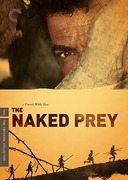
The Naked Prey
(1966)Cornel Wilde
12. I remember seeing this film and wondering when anyone was going to say anything. What a testament to this great film that, with no dialogue for minutes on end, it keeps you riveted.
#2 in Joe Mantegna’s Top 10 -
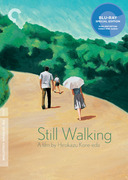
Still Walking
(2008)Hirokazu Kore-eda
1“Radishes are genius.” And so is this film. Exquisite. Kore-eda is one of the best filmmakers working today.
#7 in Paul Dano’s Top 10 -

Make Way for Tomorrow
(1937)Leo McCarey
1Please watch this film. With your lover. Then call your parents.
#11 in Paul Dano’s Top 10 -

Lola
(1981)Rainer Werner Fassbinder
1In the recent documentary Gerhard Richter Painting, the painter speaks at length about being a young artist emerging in post–World War II Germany. He says that he always considered painting to be nothing more than a trade that one dedicates oneself to day after day. Working is, above all, very respectable. Perhaps this attitude can be attributed to the fact that postwar Germans were faced with the arduous (but perhaps liberating) task of writing a new history for themselves—trying to come to terms with the past while simultaneously looking toward the future and the endless possibilities therein. With such daunting business at hand, a workhorse spirit would be a must for all German artists. Fassbinder most definitely had that spirit, leaving behind forty feature-length films and playing countless other roles over the course of his short career. Lola alludes to some of these particular pressures and concerns. Lola herself is a woman with a troubled past pressing forward with her life. It is a great, classic story, and a lot can be read into it. But on a purely aesthetic level, Lola is a sumptuous visual journey. So many textures and colors . . . if Zéro de conduite is a Dadaist masterpiece and The Scarlet Empress is expressionism on film, Lola is pure Technicolor pop art, and one of the best late Fassbinder films. Coincidentally, Rainer Werner Fassbinder died the day before I was born.
#3 in Keegan McHargue’s Top 10 -
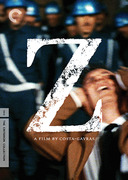
Z
(1969)Costa-Gavras
1I actually went to the theater as an eleven-year-old and saw this film in its original release. (I know. Weird.) The cinematography (Raoul Coutard), the editing (Françoise Bonnot won the Oscar), the score by Mikis Theodorakis, and the performances by Yves Montand, Irene Papas, and Jean-Louis Trintignant created an overall intensity that overwhelmed me. One of the most searing political thrillers ever made, and one of Costa-Gavras’s greatest, it won best foreign language film at the Academy Awards in 1970.
#1 in Alec Baldwin’s Top 10 -

Sweet Movie
(1974)Dušan Makavejev
1If for no other reason (and there are a lot of other reasons!), Sweet Movie is worth a watch just to see the Viennese Actionist Otto Muehl playing the role of a man-baby being tickled until he . . .
#4 in Keegan McHargue’s Top 10 -
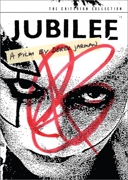
Jubilee
(1978)Derek Jarman
1Jubilee is a really excellent time capsule of a scene, and when I first saw it on VHS in high school, it made a big impression on me. I especially love the scene called “Jordan’s Dance,” which was probably one of the first times I saw such an effective and purposeful combination of beauty and destruction.
#7 in Keegan McHargue’s Top 10 -

Germany Year Zero
(1948)Roberto Rossellini
1I know it’s a cheat to select three films as if they were one, but it’s almost impossible to consider Rome Open City, Paisan, and Germany Year Zero as anything other than a linked narrative of the ashes of World War II and of the struggle to rise out of that dustbin of history. They are vital, raw, even primitive in style, full of nonactors who are alternately charismatic and arch; there is an aesthetic in these movies that is stripped to the bone. These films, taken together, are immediate godfather to the French New Wave. When Truffaut saw the cinematic journey of the eleven-year-old Edmund Meschke in Germany Year Zero, the seeds of his Antoine Doinel character were planted. The interviews and documentary extras in this set are one of the great treasures of neorealism research.
#9 in John Bailey’s Top 10 -
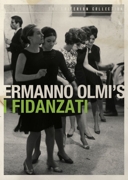
I fidanzati
(1962)Ermanno Olmi
1Quiet and gentle, in stark contrast to the ever-looming violence of The Wages of Fear, this human tone poem by Ermanno Olmi has the intimate lyricism of Truffaut layered with Italian neorealism. It is toward this latter strain that Olmi moved in his subsequent work, even to the extent of being his own (albeit mediocre) camera operator; for this film, the fluid camera of Lamberto Caimi creates a near dreamlike space while staying rooted in the details of daily life.
#5 in John Bailey’s Top 10 -
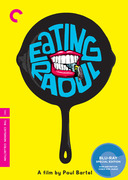
Eating Raoul
(1982)Paul Bartel
1This is just one of those movies that leaves you feeling queasy all over. Eating Raoul plays on all the stereotypical shock/schlock clichés typical of so-called B culture, which at the time (the early 1980s) was also being probed by Paul Bartel’s fellow Angelenos Mike Kelley and Jim Shaw (and perhaps further up the coast by the Kuchar brothers), who were also fascinated with and inspired by the prudish 1950s. Is there a moral here? Does there need to be? Why, exactly, is this film in the Criterion Collection? All questions better to put out of your mind when you pop it in.
#10 in Keegan McHargue’s Top 10 -
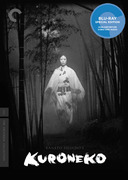
Kuroneko
(1968)Kaneto Shindo
1Horrors and desire, death and lust go hand in hand in Onibaba and Kuroneko, a perverse, sweaty double bill from Kaneto Shindo. I saw these two films at age ten, and they did some serious damage to my psyche. Both are perfect fables rooted in Japanese folklore but distinctly modern in their approach to violence and sexuality. As exuberant and exquisite as a netsuke carving, these atmospheric jewels show mankind trapped in a cosmically evil world. The tales seem to fit together so perfectly that they fuse into one as time goes by. Onibaba and Kuroneko make a perfect double bill for the second circle of hell.
#13 in Guillermo del Toro’s Top 10 -
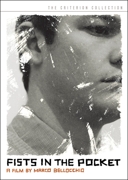
Fists in the Pocket
(1965)Marco Bellocchio
1From the moment Lou Castel literally falls from the sky into the film, one knows that one has signed up for one darn crazy ride. Of all the films in the collection this is the one that spells y-o-u-t-h with the greatest virulence. It captures its never abetted sense of social claustrophobia and, its consequence, its recurrent fantasies of murder and mayhem. For anyone, anywhere, at any time, who uttered, “Families, I hate you!” this film should be the Bible. Nervy, hilarious, and bleaker than bleak, it manages to make you believe the impossible, namely that a filmmaker could take a trip on the Rimbaud side of the street and not come out looking ridiculous. And, as an added bonus, for those who want to understand the sixties beyond the banalities that are ritually uttered about them, every scene of Fists in the Pocket, with the convulsive beauty of its framing and composition, amply proves how much this period was made by people so steeped in classical culture that they fantasized it could be solid beyond its fragility, shaking it to the core and ultimately ushering in a world they could themselves hardly live in.
#1 in Jean-Pierre Gorin’s Top 10 -
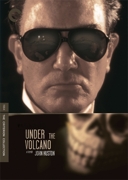
Under the Volcano
(1984)John Huston
1In 1941, the year of Citizen Kane, a far greater first film coauthored by its director appeared: The Maltese Falcon. From this great beginning, John Huston went on to forge a consistent and unmistakable identity toward life and film that he maintained throughout his long, varied, and productive career. After Laurence Olivier, Albert Finney has been the greatest English actor to work in films, and Under the Volcano is his greatest role. Like all the great characters in Huston’s best films who are ironic, never sentimental, humorous, and usually very unpleasant, Albert Finney, never offscreen, is playing someone totally inebriated from beginning to end. It reminds me of another favorite, Richard III, where another great actor, in this case playing a serial murderer, pulls out all the stops, brings it all off, and brings the viewer over to his side.
#9 in Paul Morrissey’s Top 10 -
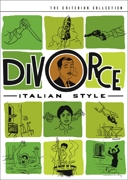
Divorce Italian Style
(1961)Pietro Germi
1La crema della crema of Italian comedies. Honorable mention: Fellini’s The White Sheik.
#9 in Bruce Goldstein’s Top 10 -

Kwaidan
(1965)Masaki Kobayashi
1It’s funny how in the modern era of filmmaking (even in CG animation), we’re so infatuated with achieving a “real” look. Design is often tossed aside in favor of a more “relatable,” grounded aesthetic. It’s refreshing to watch something like Kwaidan (or even Kurosawa’s Dreams), where soundstages are embraced and dramatic, and colorful lighting is boldly employed. This is the way to haunt your audience: long, quiet, surreal moments.
#3 in Scott Morse’s Top Ten -
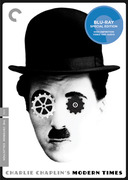
Modern Times
(1936)Charlie Chaplin
1Chaplin’s great satire on the American fantasy of infinite progress. For a movie about the plight of the dispossessed, it is overflowing with hilarity. Perhaps my favorite visual gag in any movie: a flag falls off the back of a passing truck. Chaplin picks it up and waves it exuberantly at the driver—just as a mob of protest marchers come up the street behind him, causing the police to mistake the Little Tramp for a radical leader.
#11 in Greg Mottola’s Top 10 -

The Hidden Fortress
(1958)Akira Kurosawa
1The glory of story entertainment. TohoScope. Mifune, a screen god, as a general—the greatest of movie stars! A Japanese Hollywood action film in the best sense of the term. Perspecta sound. Kurosawa’s painter’s eye. Absurdist comedy. The spear fight between Mifune and a rival general. Fierce compositions. Fierce atmosphere. Fierce control of every element but our feelings. All for a princess. Adrenaline. The old Tel Aviv cinematheque in the Lottery building . . .
#10 in Oren Moverman’s Top 10 -

Europa
(1991)Lars von Trier
1In a bit of a stylistic departure from the Dogme films, which are bound by their namesake, Lars von Trier plays with rear projection and melodrama so beautifully. The color-treated scenes are just jaw-dropping; it’s a perfect marriage of style and substance. Not to mention Jean-Marc Barr is a total dreamboat here.
#2 in Stella Mozgawa’s Top 10 -
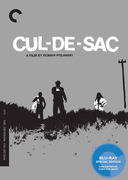
Cul-de-sac
(1966)Roman Polanski
1I feel a strong sense of Polish pride when I watch any Polanski film. This one is the perfect blend of absurdity and levity. Like Waiting for Godot for the theatrically challenged.
#5 in Stella Mozgawa’s Top 10 -
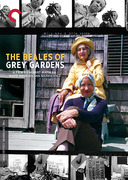
The Beales of Grey Gardens
(2006)Albert Maysles and David Maysles
1Tragic and hysterical in one breath. I challenge anyone to dislike these films. The Edies are two of my favorite film stars of all time.
#8 in Stella Mozgawa’s Top 10 -
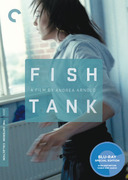
Fish Tank
(2009)Andrea Arnold
1My favorite film of the past decade. A funny-sad tapestry of slummy British life and a portrait of a striver poking her way up through the concrete. Best dance sequences and best sound design and best use of Nas. See Michael Fassbender begin his reign as resident psychosexual nightmare heartthrob here.
#1 in Lena Dunham’s Top 10 -
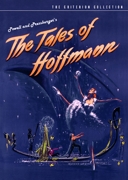
The Tales of Hoffmann
(1951)Michael Powell and Emeric Pressburger
1Powell and Pressburger’s ballet-oriented film of Offenbach’s opera of Hoffmann’s tales . . . as rich and strange a confection as the cinema ever produced, with astonishing work from Moira Shearer as the dancing automaton Olympia (whose absurd demise,with broken springs coiling out of her severed head, I always find shocking and sad) and Robert Helpmann as Hoffmann’s multifaced archenemy. With effects technique that could have been used by Méliès and gorgeous color art direction, costuming, and cinematography.
#1 in Kim Newman’s Top 10 -
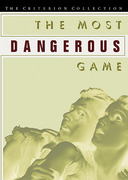
The Most Dangerous Game
(1932)Ernest B. Schoedsack and Irving Pichel
1Made on the wonderful jungle sets of King Kong while that epic’s special effects were being finished, this is one of the great action-horror films and has provided a template for many “rich sicko” melodramas—the entire “torture porn” subgenre springs from the obsessions of its villain, Count Zaroff (Leslie Banks). Adapted from a short story by Richard Connell and codirected by Kong’s Ernest B. Schoedsack and character actor Irving Pichel, it has one of the most perfect plots in horror: a big-game hunter (Joel McCrea) changes his mind about how much fun his preferred sport is when he’s shipwrecked on an island where a mad Russian who’s grown tired of lesser game has opted to hunt human beings. Fay Wray, another Kong holdover, screams on the sidelines, and a pack of baying hounds provides additional menace.
#7 in Kim Newman’s Top 10 -

The Living Skeleton
(1968)Hiroshi Matsuno
1To be found in the When Horror Came to Shochiku set from Eclipse, Horishi Matsuno’s engagingly demented Japanese picture jumbles gruesome crime, supernatural vengeance, psychic twins, mad science, and strange sea story—it may never settle on a tone, but its unpredictability is compelling. Haunted by her twin sister, who was murdered during a pirate attack, Saeko is mentored by a priest whose cool sunglasses conceal an evil secret identity and scars. Other pirate victims appear as living skeletons who inhabit a wreck and bring about the deaths of their murderers, and there’s also a mad scientist with vampire tendencies in the mix.
#9 in Kim Newman’s Top 10 -
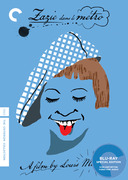
Zazie dans le métro
(1960)Louis Malle
1The first film I would watch over and over again. It’s so full of joy and made with such seeming confidence and love. Louis Malle is one of my favorite directors, and it’s great to see him so well represented at Criterion.
#7 in Richard Ayoade’s Top 10 -
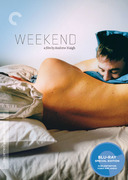
Weekend
(2011)Andrew Haigh
1This just wrecked me. I went in knowing nothing except that gay men are my target demo and came out stunned by the subtlety and sensitivity of Andrew Haigh’s direction.
#4 in Lena Dunham’s Top 10 -
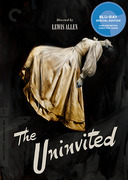
The Uninvited
(1944)Lewis Allen
1A classic ghost story, from a novel by Dorothy Macardle, directed by Lewis Allen. Brother and sister Ray Milland and Ruth Hussey buy a cliff-top home in Cornwall that turns out to be haunted by at least two spirits and one still-living person . . . the waif Gail Russell, who is drawn to the room where her mother supposedly died. It’s one of those Hollywood films that was too sophisticated for the censors, with several transgressive elements (lesbianism, illegitimacy) couched tactfully and woven deeply into the mystery.
#10 in Kim Newman’s Top 10 -

The Bakery Girl of Monceau
(1963)Eric Rohmer
1Such a tremendous collection. It’s fascinating to see how Eric Rohmer translates his own short stories into these films. His work with Nestor Almendros is so beautiful and simple, and the films are such profound and witty examinations of self-deception. Because I’ve been greedy in choosing these, I haven’t allowed myself to choose The Adventures of Antoine Doinel.
#1 in Richard Ayoade’s Top 10 -

The Testament of Dr. Mabuse
(1933)Fritz Lang
1Lang at his most wicked and entertaining. Essential research for anyone attempting to write a supervillain.
#4 in Christopher Nolan’s Top 10 -

Vagabond
(1985)Agnès Varda
1I always say Agnès Varda was to the French New Wave as Eve is to the Ruff Ryders: a ride-or-die bitch, respected by a pack of tough gentlemen. The first film of hers I saw was Cléo from 5 to 7. My mom had just had a routine but unpleasant dental surgery and was all whacked out on pills, and I read all the subtitles to her in different voices.
#8 in Lena Dunham’s Top 10 -
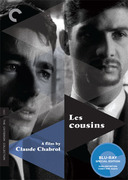
Les cousins
(1959)Claude Chabrol
1Another life changer. I first saw this at the Everyman Cinema in Hampstead, London, when I was sixteen. Jean-Claude Brialy had verve, and an English sports car. I wanted both!
#4 in Andrew Loog Oldham’s Top 10 -
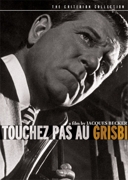
Touchez pas au grisbi
(1954)Jacques Becker
1I just like the night, the mood, Sami Frey, the cars, Gabin, the double-breasted suits, the quiet urgency and . . . the night.
#6 in Andrew Loog Oldham’s Top 10 -
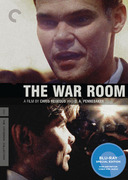
The War Room
(1993)Chris Hegedus and D. A. Pennebaker
1My friend Audrey Gelman showed me this film as the beginning of my political education. While it is a documentary that provides a ton of backstory on the Clinton campaign and the art and science of electing a president, it has the pace and power of a good thriller produced by George Clooney with David Strathairn in at least one role with gravitas.
#15 in Lena Dunham’s Top 10 -

The Baron of Arizona
(1950)Samuel Fuller
1There are three terrific movies in the Eclipse set The First Films of Samuel Fuller, and the fact that they’re collected in this nifty package is a huge bonus. The Baron of Arizona plays like an old West episode of Blackadder—and features one of Vincent Price’s best performances.
#4 in Patton Oswalt’s Top 10 -

Blast of Silence
(1961)Allen Baron
1I’ve already written extensively about this lean, nasty little masterpiece. It’s on the list cuz you need to buy it. (To read an interview with artist Sean Phillips about the design of Blast of Silence and for a link to Patton’s writing about the film, click here.)
#5 in Patton Oswalt’s Top 10 -
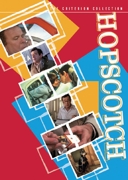
Hopscotch
(1980)Ronald Neame
1This is a perfect comedy. Walter Matthau in the James Bond role versus Ned Beatty as head of the CIA. With Glenda Jackson, Herbert Lom as the head of the KGB, and Sam Waterston as “the new kid.” If more studio people saw Hopscotch, they would let old people be in more movies. —RBG
#7 in Robert Ben Garant and Tom Lennon’s Top 10 -

Elevator to the Gallows
(1957)Louis Malle
1Raises a major philosophical question: namely, could any film ever do justice to—i.e., match the cinematic richness of—the portion of the Miles Davis soundtrack listed, on the album, as “Generique”?
#4 in Geoff Dyer’s Top 10 -
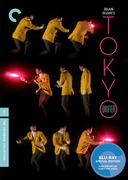
Tokyo Drifter
(1966)Seijun Suzuki
1Unique, brilliant, fantastic! I love this movie!
#1 in Nicolas Winding Refn’s Top 10 -

Flesh for Frankenstein
(1973)Paul Morrissey
1Flesh for Frankenstein is the only film I’ve ever wished that I had made.
#6 in Nicolas Winding Refn’s Top 10 -
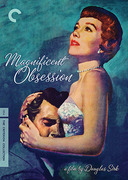
Magnificent Obsession
(1954)Douglas Sirk
1In the early nineties, when this was only available on video, I watched it over and over till my store had to throw it away. Sirk is fearless in his melodramas because he is so confident in what he’s got to say. No other director, in my opinion, makes such accurate criticisms of the myopia of our prejudices while fully and earnestly asserting that love is all we’ve got—even though we’ve set up a society in a way that totally suffocates it.
#7 in Miguel Arteta’s Top 10 -
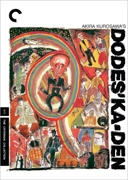
Dodes’ka-den
(1970)Akira Kurosawa
1This is a flawed film from the master, and I read in his autobiography that after it tanked, he tried to kill himself and did not make a film for five years. I love it! Such gorgeous vignettes, like the man who stops talking and loses all the color in his flesh after he finds out his wife cheated on him! Or the drunk couples who swap partners every night! He built a whole artificial dumpster on a stage and painted it in radiant colors, and then went about telling the most heartbreaking short stories of madness and despair in it. It’s like Raymond Carver on some very good acid, taking no prisoners!
#6 in Miguel Arteta’s Top 10 -

Brand upon the Brain!
(2006)Guy Maddin
1I saw this film in its original run, with foley artists, a live orchestra, and live narration by Crispin Glover, which was a profoundly unique cinematic experience. It is not often you see modern filmmakers experimenting with older techniques and to such great effect. Seeing it again on DVD, I found it equally incredible; its story about a fictional Guy Maddin is compelling. Guy has been a real influence on my film work, and his films just seem to get better and better. As a fellow Winnipegger, I can truly say that Canadians are very lucky to have him.
#2 in Marcel Dzama’s Top 10 -
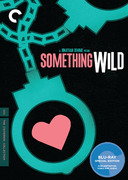
Something Wild
(1986)Jonathan Demme
1Something Wild made me fall in love with Melanie Griffith and with the idea of making movies. Like Jeff Daniels’s character, I wanted to be taken on a wild ride and to take people on one. There’s both such joy and terror in here, hardness and frailty. It made me appreciate that contradictions in characters are what make us sit up in amazement at the movie theater. There’s a Ray Liotta inside all of us!
#4 in Miguel Arteta’s Top 10 -
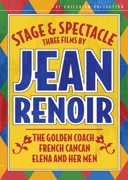
French Cancan
(1955)Jean Renoir
1Passion and joy are effortlessly married here. I heard a quote from Renoir to the effect that it’s most important to make the viewer believe that there is life beyond the frame; what an awesome definition of filmmaking! I also love his quote about the tragedy in life being that we ALL have our good reasons for all we do. This man loved people and explained them with such veracity; lift your leg high and you’ll know!
#3 in Miguel Arteta’s Top 10 -
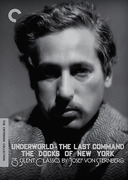
The Docks of New York
(1928)Josef von Sternberg
1Ah, what downtrodden magic there is in here—you can smell the docks of New York, and you believe in falling in love in the most misguided way possible. Love is all wrong and is all we’ve got. Beautiful film!
#2 in Miguel Arteta’s Top 10 -
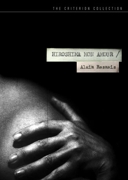
Hiroshima mon amour
(1959)Alain Resnais
13. Hiroshima mon amour has possibly the best opening of any film, ever. History unfolds in a dreamlike narrative; love and passion intersect with violence, beauty, and the foreign. The notion of romantic love is blinding, intoxicating, horrifying, and breathtaking . . . like the afterglow of a nuclear holocaust.
#3 in Rodarte’s Top 10 -
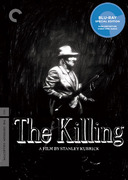
The Killing
(1956)Stanley Kubrick
1I loved this film before I knew who Stanley Kubrick was. Sterling Hayden’s portrayal of the ill-fated criminal is majestic and psychopathic. The mechanics of the heist are brilliant, but Kubrick lets us see how it’s only the flaws in the characters that bring it down.
#3 in Franc Roddam’s Top 10 -

Seduced and Abandoned
(1964)Pietro Germi
1If I had to describe this film in three words, I would say: “Charm, charm, charm.” The beautiful Stefania Sandrelli is seduced by her sister’s fiancé, who then refuses to marry her because she’s no longer a virgin. The moral logic of the Italian family is hilarious.
#4 in Franc Roddam’s Top 10 -

Diabolique
(1955)Henri-Georges Clouzot
1Ranks with the best of Hitchcock, who wanted to make it but Clouzot beat him to the rights. It was made in the same year as Night and Fog and The Night of the Hunter, 1955—what a year, what a decade for world cinema. The penultimate scene had the same effect on me as Psycho. Though it no longer holds surprises for me, I watch it for its mastery of suspense and the performances of Paul Meurisse, Simone Signoret, and Véra Clouzot. But I confess that the nine-minute scene without words where Véra hears noises from her bedroom, goes down the hall to check them out, and is literally scared to death still nails me. You can bet I thought about how it was shot and paced when I sent Ellen Burstyn up to that attic in The Exorcist. No nudity, no sexuality, no violence, just pure, slow-building suspense that escalates to terror. The original novel was written by Pierre Boileau and Thomas Narcejac, who also wrote Vertigo.
#4 in William Friedkin’s Top 10 -

If....
(1968)Lindsay Anderson
1I was at NYU film school when I first saw If…. The second time was the very next day, when I brought friends and classmates to share this extraordinary movie experience. I have always harbored fantasies of blowing up my high school, but until If…. I never realized that I was not the only one. Obviously If…. was a huge influence on Rock ’n’ Roll High School. In the mid-1980s, I wrote an article about high school movies for American Film magazine in which I opined that If…. was the greatest of them all. A month later, I received a lovely letter from Lindsay Anderson, my hero (I also love O Lucky Man!). We corresponded for several years, finally meeting at the Telluride Film Festival. He called me “a movie brat typical of my generation” for preferring The Searchers to She Wore a Yellow Ribbon. (I treasure his criticism.) Wrapped in a scarf, Malcolm McDowell is as riveting and charismatic as ever in his screen debut. I showed the movie to my teenage daughters, who only know Malcolm as Linderman on Heroes, and it impressed a whole new generation of rebellious teens. If….’s DVD extras, especially “O Lucky Malcolm,” really capture the spirit of the man and the movie.
#3 in Allan Arkush’s Top 10 -
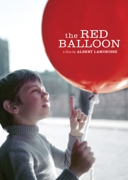
The Red Balloon
(1956)Albert Lamorisse
1If you were ever bullied, as I was, you probably dreamed of being a little French boy who had a magical red balloon that, together with all the other balloons in Paris, would pick you up for a trip above the city to a place far away. You didn’t? I didn’t really either. I actually wanted a gun, but this nice little movie was a safer fantasy. If you are being bullied, by the way, it’s clearly a mistake to hold on to your balloon.
#8 in Phil Rosenthal’s Top 10 -

The Ascent
(1976)Larisa Shepitko
1You probably haven’t seen this, which means you have not seen one of the all-time greatest films ever made! You must see it! I mean it!
#6 in James Schamus’s Top 10 -

News from Home
(1976)Chantal Akerman
1This is supposed to be one of those good-for-you, demanding, feminist, kind-of-structuralist, avante-garde, check-it-off-the-list, Brown-semiotics-major-required-viewing films. Perhaps it’s all of those things. It’s also profoundly moving, original, and, weirdly, entertaining.
#8 in James Schamus’s Top 10 -
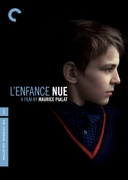
L’enfance nue
(1968)Maurice Pialat
1I was introduced to Pialat in the first place by your À nos amours disc. You should do every one of his you can get your hands on.
#10 in Wes Anderson’s Top 10 -

Classe tous risques
(1960)Claude Sautet
1Classe tous risques is very good. I am a great fan of Claude Sautet, especially Un coeur en hiver. Who is our Lino Ventura?
#9 in Wes Anderson’s Top 10 -
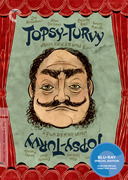
Topsy-Turvy
(1999)Mike Leigh
1About the working life of Gilbert and Sullivan and what it takes to create a work of art. Jim Broadbent and the rest of the cast nail it down. Original, moving, but never sentimental.
#9 in Donald Fagen’s Top 10 -
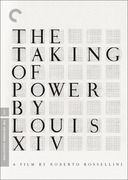
The Taking of Power by Louis XIV
(1966)Roberto Rossellini
1This is a wonderful and very strange movie. I had never heard of it. The man who plays Louis cannot give a convincing line reading, even to the ears of someone who can’t speak French—and yet he is fascinating. I was in his corner from start to finish (which comes unexpectedly—I thought there had to be at least another hour and a half to go when “Fin” came up). Mainly, he just walks in and out of rooms and dresses and undresses. I want to watch it again! What does good acting actually mean? Who is this Tag Gallagher?
#6 in Wes Anderson’s Top 10 -
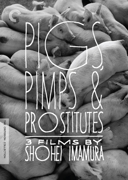
Intentions of Murder
(1964)Shohei Imamura
1We are deep into Shohei Imamura. I always loved Vengeance Is Mine, which was the only one I knew, on a double-disc Criterion laser. But now this box set gives me some perspective. Pigs and Battleships. The war didn’t exactly work wonders for the people of Tokyo or wherever that was.
#5 in Wes Anderson’s Top 10 -

Mafioso
(1962)Alberto Lattuada
1Alberto Sordi, the star of several early Fellini films, is both hilarious and heartbreaking in this story of a well-intentioned man who gets caught up in a horrible situation while trying to do the right thing for his family and hometown. I love Italy anyway, and so the black-and-white cinematography of Sicily alone is worth the price of admission. It’s one of those comedies that stays with you long after you’ve watched it.
#4 in Paul Feig’s Top 10 -

Tokyo Olympiad
(1965)Kon Ichikawa
18. This great film was made back when Olympic athletes were regular folk.
#8 in Tom Schnabel’s Top 10 -
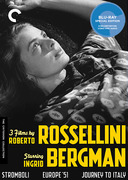
Journey to Italy
(1954)Roberto Rossellini
1The voyage is one of the soul in Roberto Rossellini’s unblinking and profound film. An unhappy couple in an unraveling marriage, perfectly captured in the petty bickering of Ingrid Bergman and George Sanders, ultimately reunite. It has the feel of a miracle but is no happy ending. Death and spiritual mystery pervade the film, and love seems but a desperate, painful response to mortality.
#10 in Tim Forbes’s Top 10 -
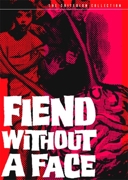
Fiend Without a Face
(1958)Arthur Crabtree
1Anyone who has ever had the pleasure of meeting Richard Gordon and his brother Alex (who passed away a few years ago) knows what a rich vein of film history the brothers represent. A conversation with either might include stories of producing films with the likes of Ed Wood, Gene Autry, Bela Lugosi, Boris Karloff, and B-movie director Eddie Cahn, to name just a few. As a producer, Dick’s best-known work is the fondly remembered low-budget science-fiction staple Fiend Without a Face. It’s a great tribute to the Gordon brothers that Criterion has released not only Fiend but also the four films included in the Monsters and Madmen box set.
#4 in Dave Filipi’s Top 10 -

Love Affair, or the Case of the Missing Switchboard Operator
(1967)Dušan Makavejev
1Possessed of incisive humor and an uncanny knack for startling juxtaposition, Dušan Makavejev uses a veritable crazy quilt of stylistic elements to create an affecting portrait, at once funny and heartbreaking, of a romance gone awry, while at the same time lambasting the conventions and pretenses of society, including, not least, the constraints of narrative cinema itself.
#7 in Tim Forbes’s Top 10 -
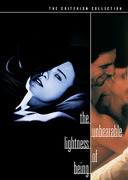
The Unbearable Lightness of Being
(1988)Philip Kaufman
1I think Philip Kaufman is one of our most underappreciated filmmakers. His films are funny and sophisticated and are often very insightful explorations into sexual interplay among adults. Having read the Kundera novel a couple of times, and having seen the film many more, I am astounded by the adaptation. Though some disagree, I think Kaufman did justice to the source (not that it matters in the slightest). And is there a sexier performance than Lena Olin’s? Wow. The film is one of my favorites, but the true reason it made the list is that this Criterion release has one of my favorite commentaries in the collection, featuring Kaufman, Olin, and the great Walter Murch. Unfortunately, the Criterion edition is out of print.
#10 in Dave Filipi’s Top 10 -

Thirst for Love
(1967)Koreyoshi Kurahara
1It’s a great pleasure to experience a body of work by a filmmaker I know nothing about, and time and time again Criterion’s Eclipse line delivers. The five genre-bending films represented in the set The Warped World of Koreyoshi Kurahara give a broad sampling of the director’s distinct weirdness, and Thirst for Love, from Yukio Mishima’s novel of the same name, is my favorite.
#7 in Philip Anderson’s Top 10 -

Bigger Than Life
(1956)Nicholas Ray
1James Mason’s transition from family man to maniac via miracle drug addiction is both a vicarious joyride of a psychotic’s purge and an empathetic horror film about hurting the ones who love you the most. Paranoid tongue-lashings, manic shopping sprees, and attempted filicide. Mason’s elegant cruelty only makes his family’s attempts to save him all the harder to watch. Ripe with subtext and rarely screened, it’s another color-soaked sampling of Nicholas Ray’s masterful crafting of CinemaScope, by a man who knew firsthand about addiction and its damage. This is his best film.
#5 in Philip Anderson’s Top 10 -

The Firemen’s Ball
(1967)Miloš Forman
1This was a new film for me and one I had long read about. The film is apparently an allegory about communism in Czechoslovakia. It is very funny and charming, particularly the beauty competition, which is at the heart of the story, and the fantastic unwillingness of the contestants. Milos Forman’s account of the making of the film was extremely relevant.
#3 in Jane Campion’s Top 10 -
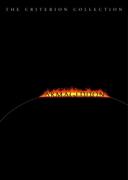
Armageddon
(1998)Michael Bay
1Not really a favorite at all, but it’s worth mentioning that when this was released by Criterion, I was really upset. So much so that I rewatched it, thinking I had maybe missed something. It marks the first time I questioned Criterion, and what’s important to me here is not their reasons for releasing it but rather how much the work they do matters to me and others. Is there any other label we care so much about?
#2 in Philip Anderson’s Top 10 -

Salvatore Giuliano
(1961)Francesco Rosi
1Francesco Rosi’s great historical and political mosaic is a dramatic inquiry into the circumstances around the assassination of the Sicilian bandit Salvatore Giuliano. On one level, it’s an extremely complex film: there’s no central protagonist (Giuliano himself is not a character but a figure around which the action pivots), and it shifts between time frames and points of view. But it’s also a picture made from the inside, from a profound and lasting love and understanding of Sicily and its people and the treachery and corruption they’ve had to endure. It’s a rigorous investigation (Rosi actually uncovered new facts about the case), but it’s never dry, it has blood flowing through its veins, and it’s shot in black and white that is absolutely electrifying (the cinematographer was Gianni Di Venanzo, who shot many of the greatest Italian pictures of the ’50s and ’60s, including Antonioni’s L‘eclisse and Fellini’s 8½). And Salvatore Giuliano is, among many other things, a grand hymn to Sicily, the land of my family, and for that reason alone I cherish it.
#7 in Martin Scorsese’s Top 10 -

Beastie Boys Video Anthology
(2000)Various
1The sounds, the videos, the different audio options and mixes. This is one of the greatest video compilations around!
#10 in Flying Lotus’s Top 10 -
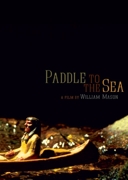
Paddle to the Sea
(1966)William Mason
12. I was thrilled by this short film when I first saw it at the age of seven in a public school gymnasium. I immediately went home and tried to carve my own little “paddle to the sea” (I quickly gave up—carving wood is hard!). The film still holds the same beauty and sense of wonder for me today. A perfect thing.
#2 in Seth’s Top 10 -

The Browning Version
(1951)Anthony Asquith
17. This film is a real lesson in the potency of restraint in acting. Michael Redgrave’s performance is brilliant—quiet, nuanced and genuinely moving. The whole film builds to a single redemptive point, and as an ending, it pays off!
#7 in Seth’s Top 10 -
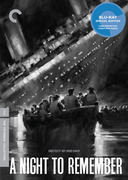
A Night to Remember
(1958)Roy Ward Baker
13. Leaves James Cameron’s Titanic cold. A more sensitive version of the massive tragedy, with so many more people to become attached to and fewer bad charcoal drawings!
#3 in Leanne Shapton’s Top 10 -

Capricious Summer
(1968)Jiří Menzel
1With gentle humor and an atmosphere infused with magic, Jiří Menzel’s film casts its own spell, evoking the lingering longings of middle age. As if bewitched, an army officer, a priest, a bodybuilder, and his wife are all overcome with amorous desire when two circus performers arrive on the scene. Youthful foolishness and romantic fumblings ensue, but their idylls pass like summer showers, one by one, and the circus act moves on, much like youth itself.
#4 in Tim Forbes’s Top 10 -

Thief
(1981)Michael Mann
1Like Melville, Michael Mann is a master of silent storytelling, but he is also one of the best writers of dialogue I know. There’s a scene between James Caan and Tuesday Weld in a diner that goes on for ten minutes, but you never get bored for a second. They go from being virtual strangers to lovers in the course of a conversation, and you don’t question it. Not only do his criminals feel authentic when they talk about their profession but their inarticulate attempts at declaring their love feel just as true.
#6 in Hossein Amini’s Top 10 -

Badlands
(1973)Terrence Malick
1Terrence Malick is the preeminent practicing metaphysician of the cinema. In his brilliant and haunting first feature, he tells the story of a vicious young serial killer and his impassive underage girlfriend, both perfectly rendered by Martin Sheen and Sissy Spacek. The violence unfolds in the context of a vastly uncaring natural world and is relayed to us by the girl through a detached narration utterly innocent of emotion. The result is not a moral inquiry into human action but rather a compelling meditation on the nature of being itself.
#2 in Tim Forbes’s Top 10 -

Rebecca
(1940)Alfred Hitchcock
19. Not quite as good as the book, but so true to the psychological hauntings at the heart of Daphne du Maurier’s best stories. The images of Rebecca’s spooky bedroom are fabulous.
#9 in Leanne Shapton’s Top 10 -
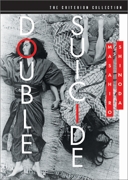
Double Suicide
(1969)Masahiro Shinoda
1One of Shinoda’s most beautiful epics—desire, obsession, love, and death—heavy, emotional, all-or-nothing melodrama made propulsive by the amazing musical genius of Toru Takemitsu. All of Shinoda’s films are essential viewing (Pale Flower, Silence, The Assassination, Owl’s Castle). —Thurston Moore
#5 in Sonic Youth’s Top 10 -

Before the Rain
(1994)Milcho Manchevski
1Before the Rain is one of my favorite movies of recent years. I think, in a very interesting way, there is a lot of spiritual thought hidden in the movie. When I saw it, the structure of the movie was very new, how it works with time. In my opinion, “time” will be one of the big topics in the future of telling stories, and how we approach it narratively will change in the next twenty to thirty years.
#5 in Götz Spielmann’s Top 10 -

An Angel at My Table
(1990)Jane Campion
1An Angel at My Table touched me enormously when it came out. I really lived with this movie in my mind for one or two months. I think I saw it three or four times in the cinema, and I recall it with a great deal of warmth.
#8 in Götz Spielmann’s Top 10 -
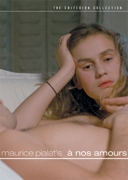
À nos amours
(1983)Maurice Pialat
18. After film school, I moved to Chicago. The first thing I did when I arrived in town was get a membership at Facets, the legendary video store and cinematheque. My membership allowed me to see everything that showed at the cinema. About two years later, when they put on a Pialat retrospective, I took full advantage of the membership. I had already made a few small relationship movies, and the descriptions of the films seemed right up my alley. As with most of my favorite films, I had a negative initial reaction to a lot of what I saw. The characters were abrasive, and all seemed to be stuck in never-ending destructive cycles. There were unexplained jumps in time, and I often felt disoriented. I came away from the series with a mixed reaction. Now, years later, it’s easy for me to recognize the impact the films had on me because I can see it in my work. No other filmmaker has had such a direct and visible influence on me, and I didn’t even realize it as it was happening.
#8 in Joe Swanberg’s Top 10 -

Smiles of a Summer Night
(1955)Ingmar Bergman
1My favorite of Ingmar Bergman’s many great films. Funny, romantic, and profound, it is the most perfect period costume dramedy. “Love is the perpetual juggling of three balls: heart, mind, and body,” says Eva Dahlbeck as the aptly named actress Desirée Armfeldt. Tell me about it! Gunnar Björnstrand is great as the unbearable lawyer Egerman, playing against the delightful trio of Swedish actresses Harriet Andersson (beyond cute), the aforementioned Dahlberg, and Ulla Jacobsson. A good entry into the world of Bergman for anyone who is expecting dark meditations on mortality.
#6 in John Taylor’s Top 10 -
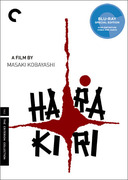
Harakiri
(1962)Masaki Kobayashi
14. The first view of the sword sent chills through my spine.
#4 in Johnnie To’s Top 10 -
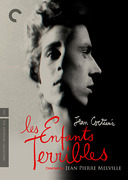
Les enfants terribles
(1950)Jean-Pierre Melville
1I remember I liked the photography of Henri Decaë, and that the story about young people seemed very insightful.
#7 in Haskell Wexler’s Top 10 -
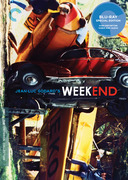
Weekend
(1967)Jean-Luc Godard
1Long, long takes of traffic accidents. Fascinating characters along the way. Many frustrated drivers and passengers unable to deal with matters of a complex world. The film delves into their personal dramas, and how the delay affects their plans. Cameraman Raoul Coutard is a friend of mine, and the long takes were considered a tour de force.
#9 in Haskell Wexler’s Top 10 -
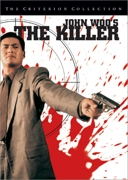
The Killer
(1989)John Woo
1My wife got a big crush on Chow Yun-Fat after seeing these two John Woo gems (and she doesn’t get starstruck very easily). A movie star is a movie star—if you’ve got it , and Chow has got it. And John Woo knows how to work it. It’s one of the great collaborative pairings between star and director, along with Eastwood/Leone and De Niro/Scorsese. I have some very jealous friends since I have these two out-of-print beauties, which I hear are now next to impossible to find.
#7 in Mike Allred’s Top 10 -
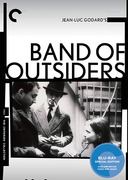
Band of Outsiders
(1964)Jean-Luc Godard
19. Godard at his freshest, most spontaneous and improvisatory. Inexhaustably captivating.
#9 in Robin Wood’s Top 10 -

Head
(1968)Bob Rafelson
1Head is my favorite film that stars a musical artist, by some degree. And yes, that includes the brilliant A Hard Day’s Night. However, the Monkees’ triumph of a movie is a Pyrrhic victory, because Head accelerated their demise, as it sees Dolenz, Nesmith, Tork, and Jones push the self-destruct button. Directed by Bob Rafelson and cowritten by Jack Nicholson, the movie shows the Monkees tearing down their wholesome network-TV, pre–Fab Four image with wild style. Much has been read into this stream-of-consciousness movie, with its overlapping dream sequences, surreal song numbers, and drug-influenced chaos. The simplest way of describing it is this: the Monkees are sick of being on their network show and attempt to break out of the studio lot, literally and figuratively. There are several scenes where the Monkees are trapped in a box, a live number where they are revealed to be plastic mannequins, and bookending sequences where the members commit suicide.
#5 in Edgar Wright’s Top 10 -
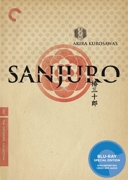
Sanjuro
(1962)Akira Kurosawa
15. But I do like the folks up at the Criterion Collection. Those are my people up in there.
#5 in Adam Yauch’s Top 10 -

World on a Wire
(1973)Rainer Werner Fassbinder
1Fassbinder’s sci-fi epic. I live for movies like this, when brave directors take their shot at a truly theoretical universe. I was lucky enough to see a new print of this recently in theaters, and it was vibrant! A mind-bending, riddling science fiction drama that will make your brain spin for weeks after. Visually, it’s hypnotizing in a manner you’d only expect from Fassbinder himself.
#1 in Zola Jesus’s Top 10 -

Ariel
(1988)Aki Kaurismäki
1Kaurismäki has a brilliant way of holding a completely silent shot that speaks more than anyone could ever communicate with words.
#4 in Zola Jesus’s Top 10 -
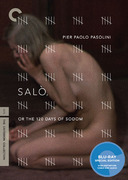
Salò, or The 120 Days of Sodom
(1976)Pier Paolo Pasolini
1I’ll never forget the first time I finally got my hands on a copy of Salò . . . I kind of felt like I was holding a snuff film. I didn’t know what to expect, really. But as I watched it, I felt Pasolini’s honesty and ingenuity in what he was creating. This wasn’t just some shock horror, it was a resilient commentary, and an ode to the Marquis de Sade’s transgressions. Both Pasolini and Sade were steadfast in their artistic beliefs, and I think that’s what makes both Salò and The 120 Days of Sodom so timelessly formidable.
#5 in Zola Jesus’s Top 10
